We headed out a bit early for our timed entry to the Musée d’Orsay to take a very quick walk through the Tuileries Garden. Afterwards, we spent a few hours in the museum before heading out for lunch nearby. We then crossed the Seine to visit the Place de la Concorde before heading back into Tuileries Garden. We ultimately ended the day at Place Vendôme, also nearby.
Tuileries Garden in the Morning
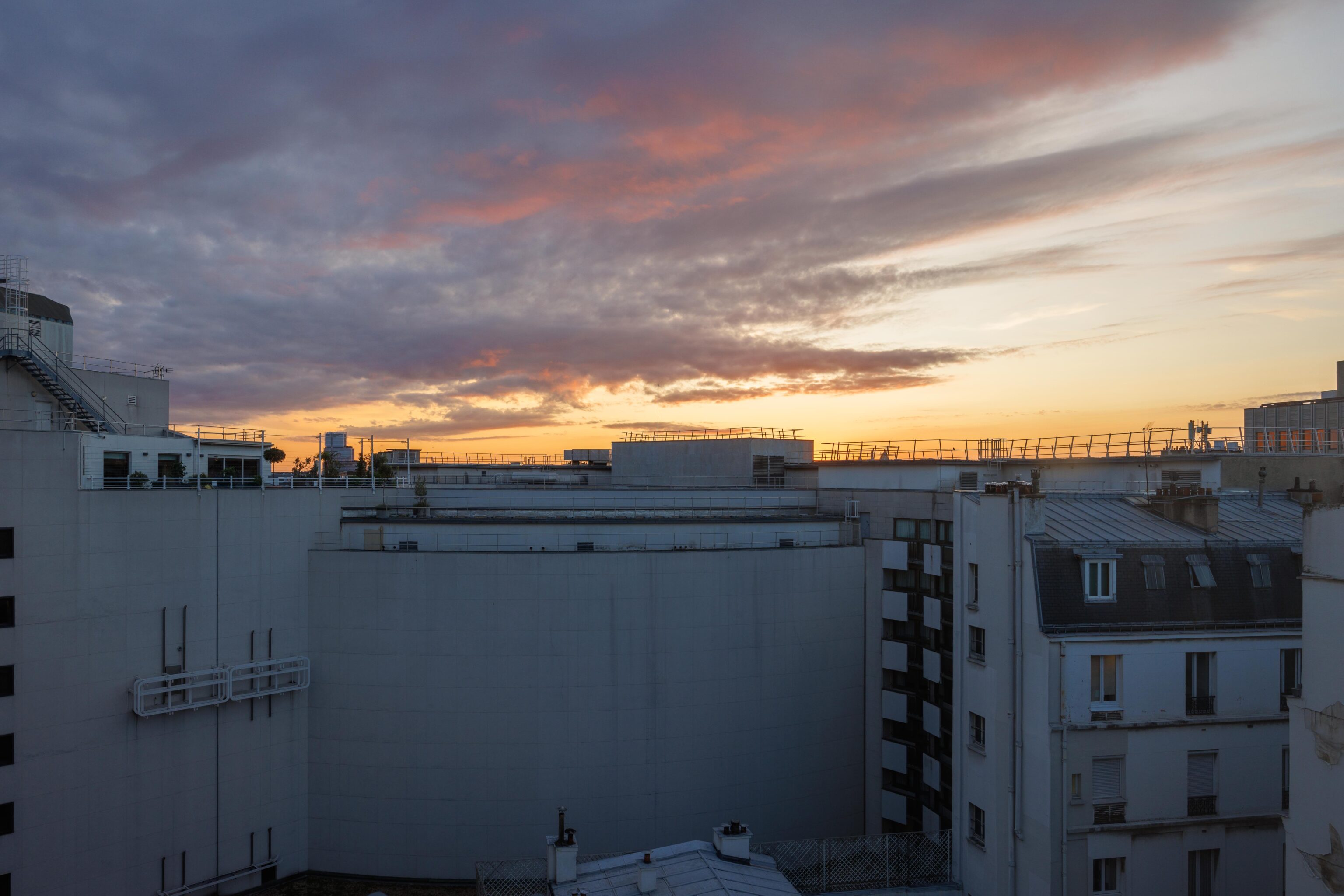
We didn’t get a good look at the view from our new room last night as it was already completely dark when we arrived. Today, we woke up to a party cloudy sky with a bit of color. Unfortunately, no partial Eiffel Tower views from this room. The windows are located in a kind of triangle that juts out from the rest of the room. They happen to face away from the Eiffel Tower. If they were on the other wall, we would have probably had a nice view of the top quarter or so.
After breakfast, we headed out from the Le Méridien Etoile to take Metro line 1 to the Tuileries station. We were early enough that we had a bit of extra time to briefly walk through part of the garden on our way to the Musée d’Orsay.
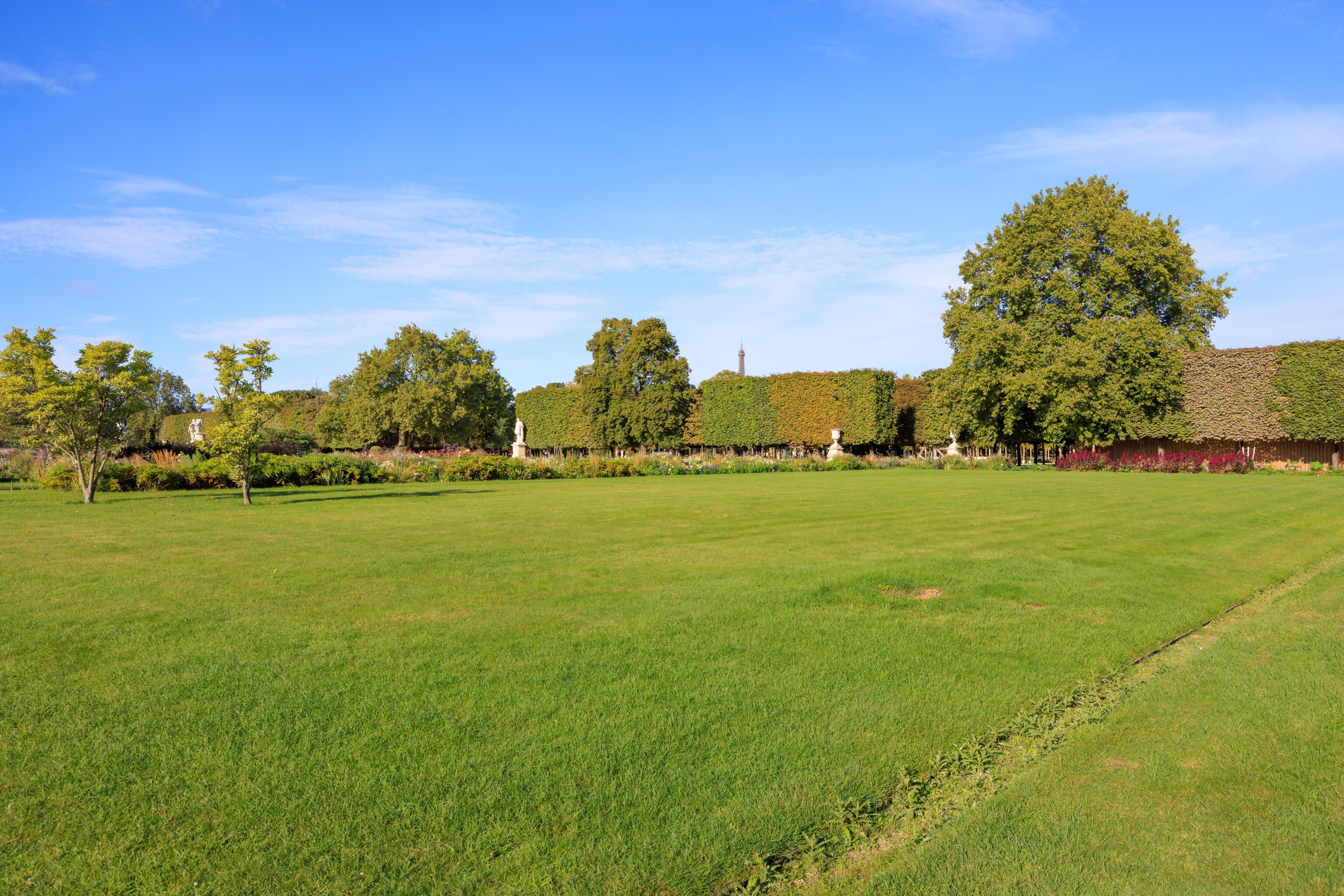
The park was very green with well maintained grass and nicely trimmed trees.
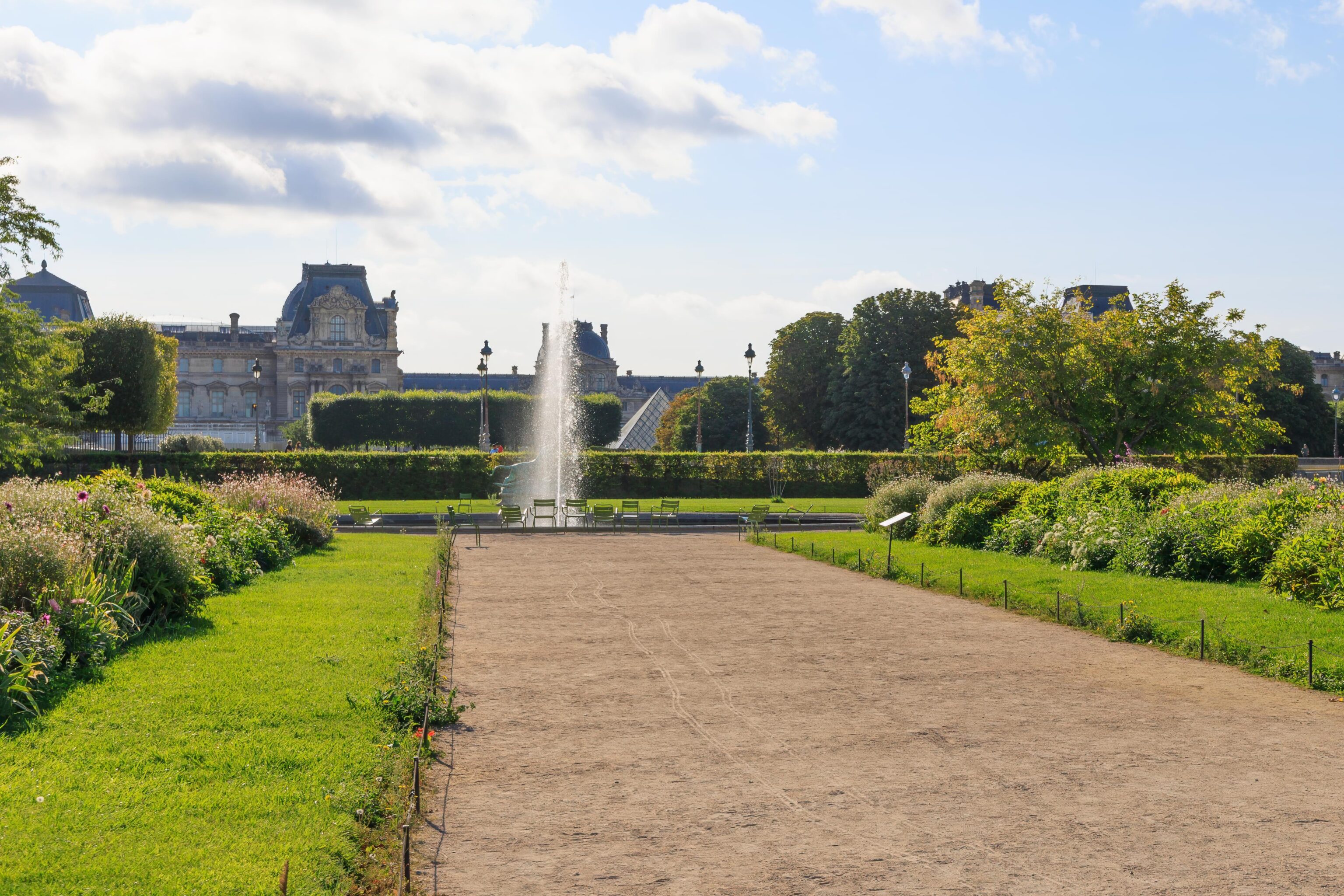
We caught a glimpse of the Louvre’s pyramid to the east beyond one of the smaller circular ponds. We didn’t go for a closer look though as it was still fairly far away and we were on a schedule!
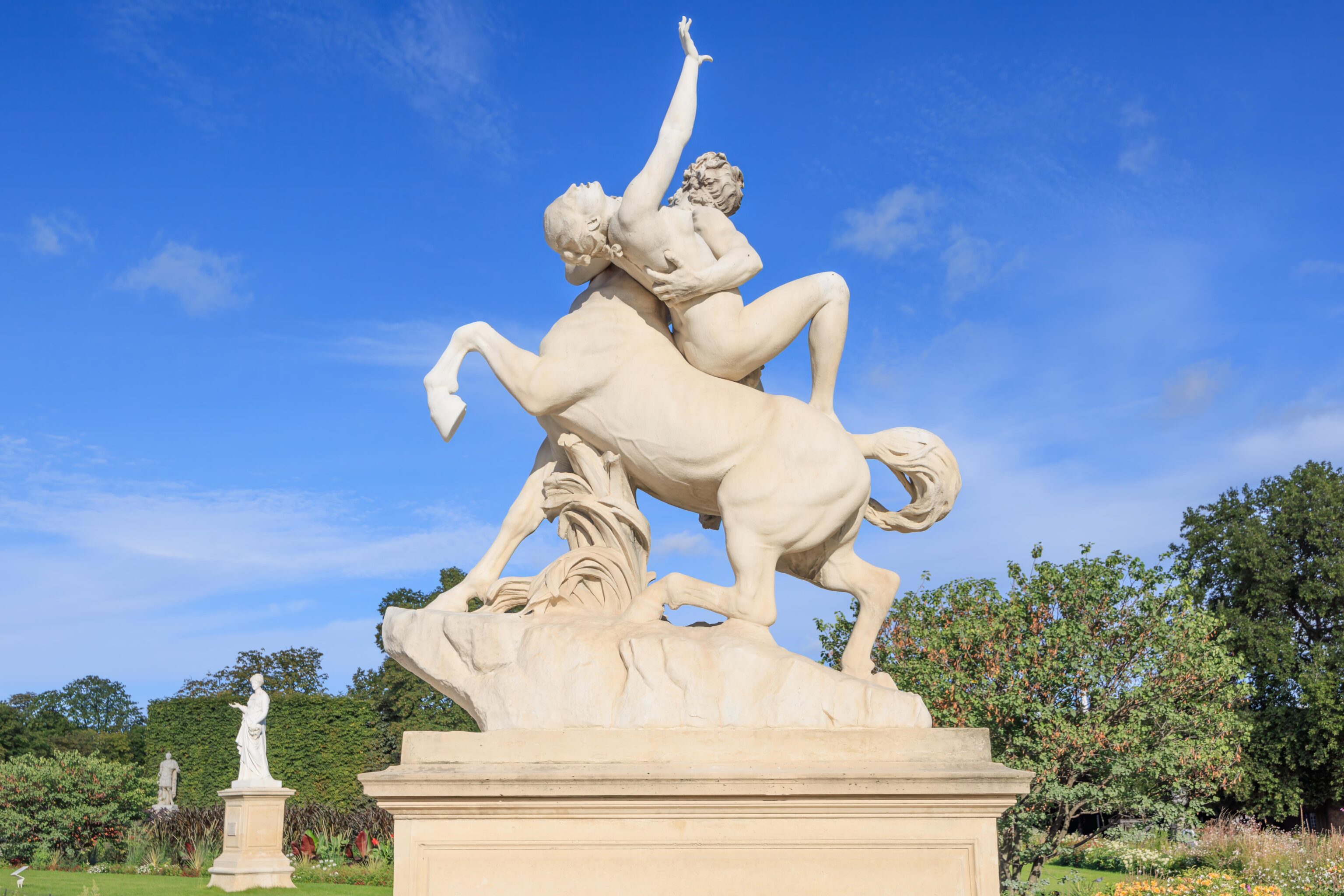
One of the many sculptures in the garden.
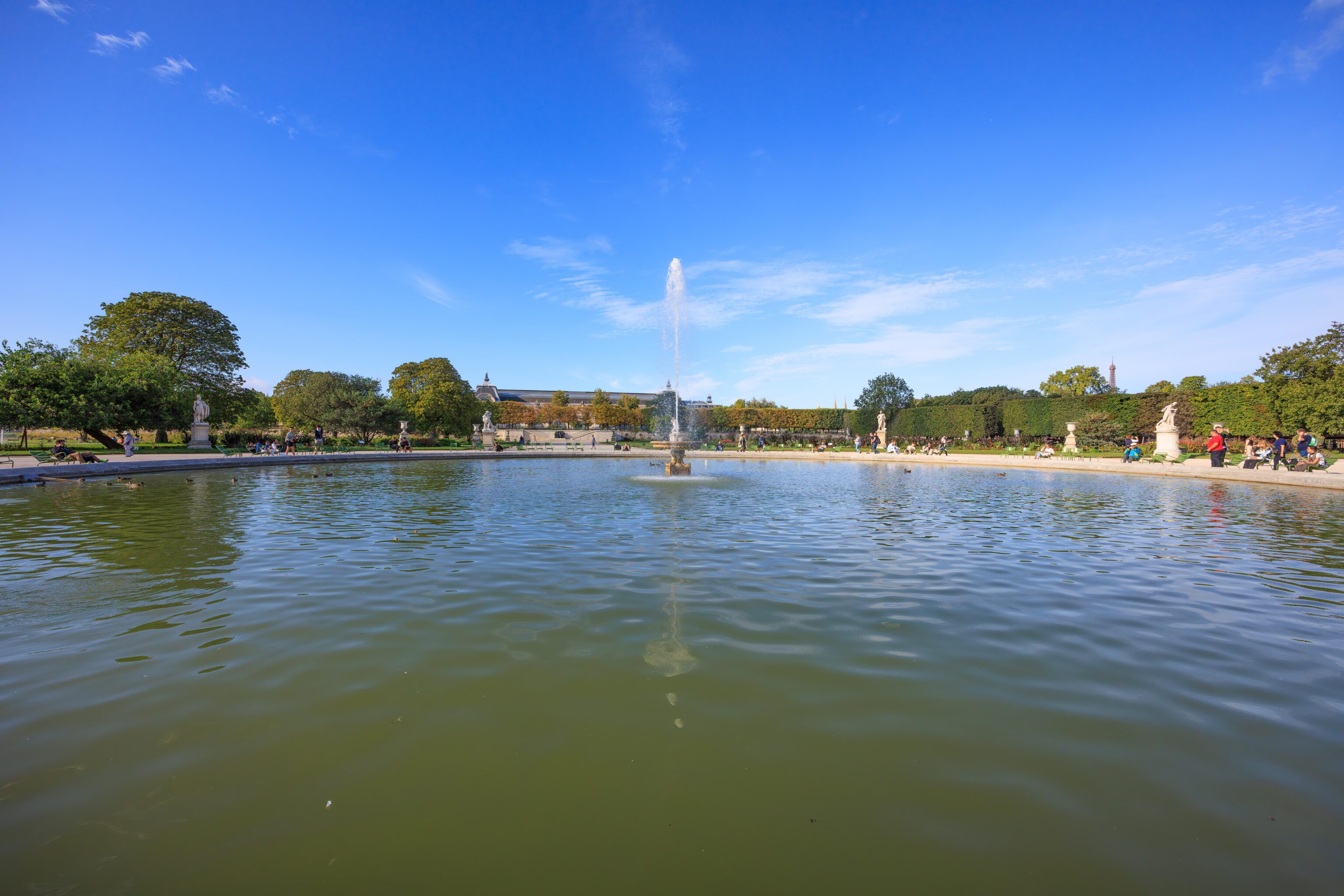
We briefly sat down in the chairs around this medium sized circular pond, though fountain may be a better description. Officially, it is the Grand Bassin Rond (Large Round Basin).
The Mallards were enjoying the pond as well. They found a pink stuffed animal and seemed to be trying to eat bits of it.
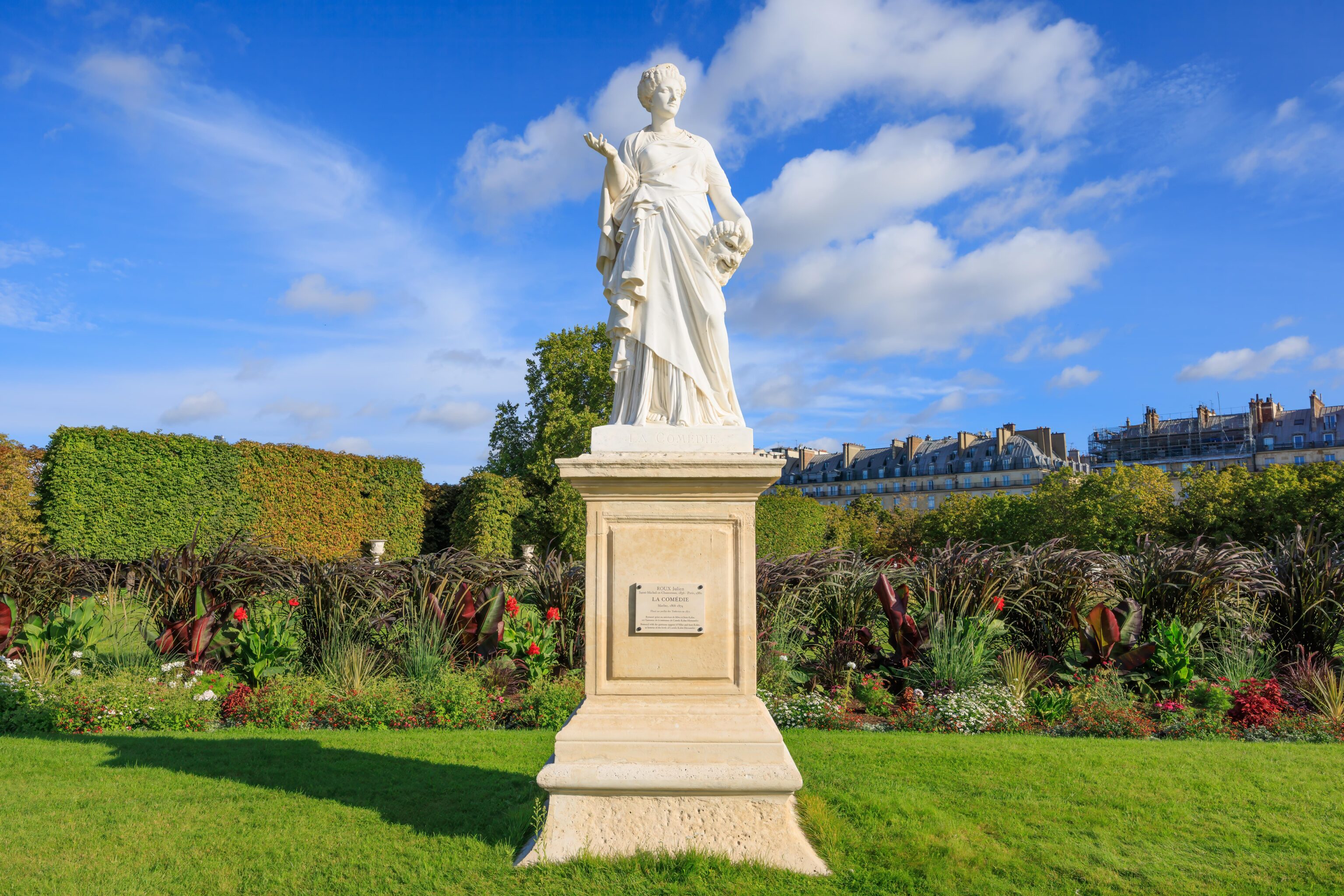
We didn’t have time to sit for long, though it would have been nice as we didn’t get enough sleep due to getting back pretty late from the Eiffel Tower yesterday. This statue of a woman holding a mask is La Comédie (The Comedy).
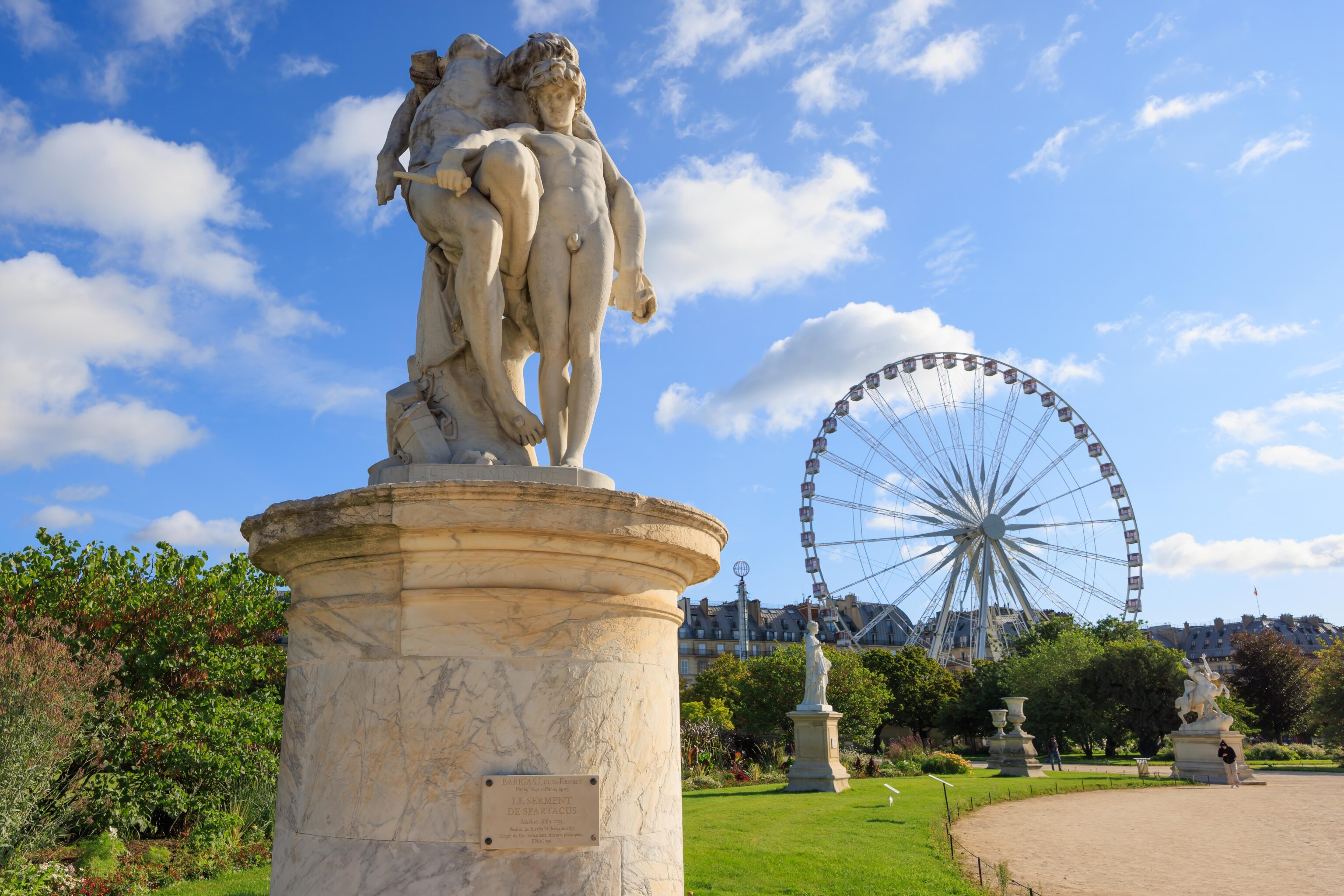
This statue is Le Serment de Spartacus (The Oath of Spartacus). Mark of the Arts has a good page about this statue.
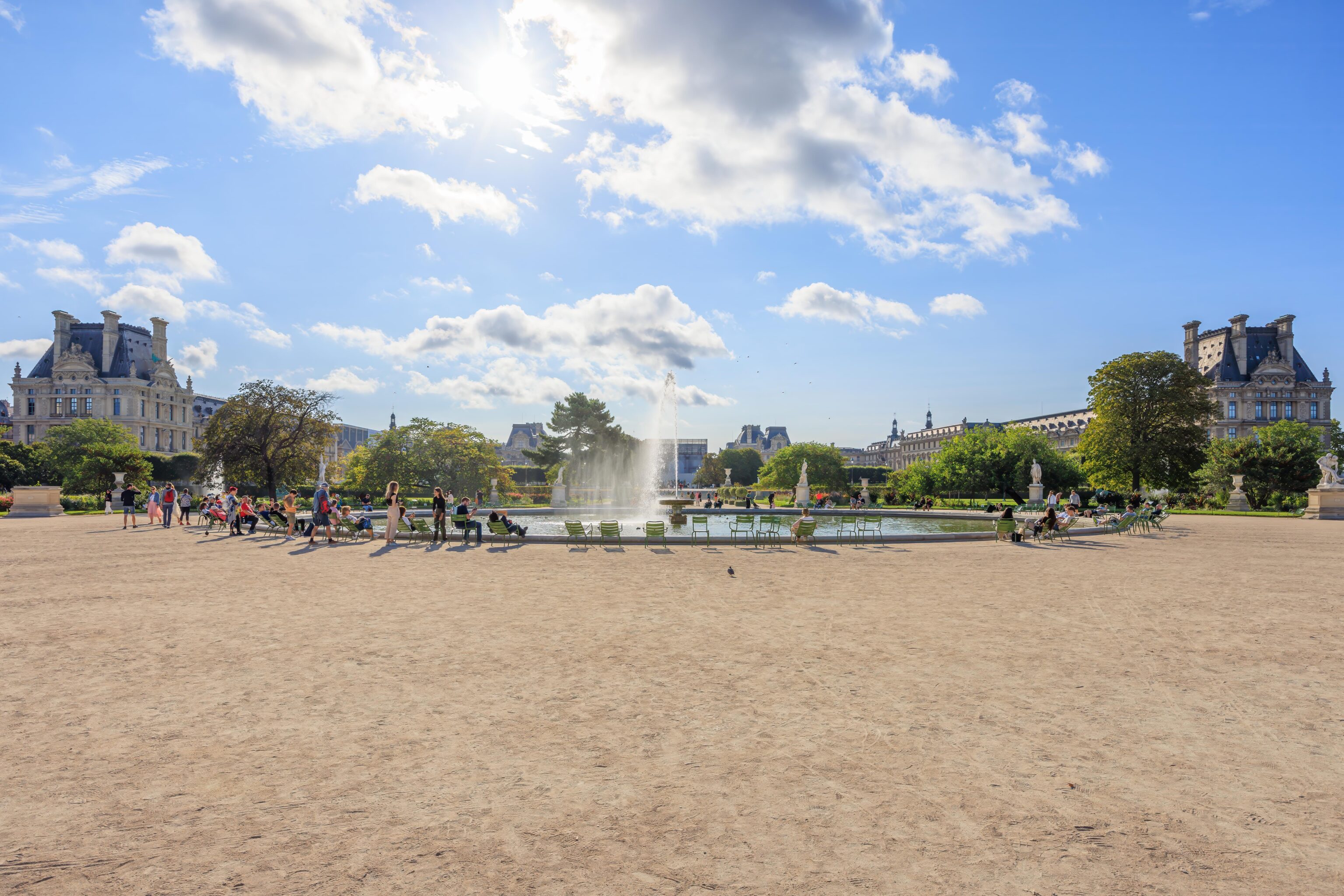
Looking back at the pond that we just left. The Louvre pyramid should be visible from here but is not due to renovations that are going on.
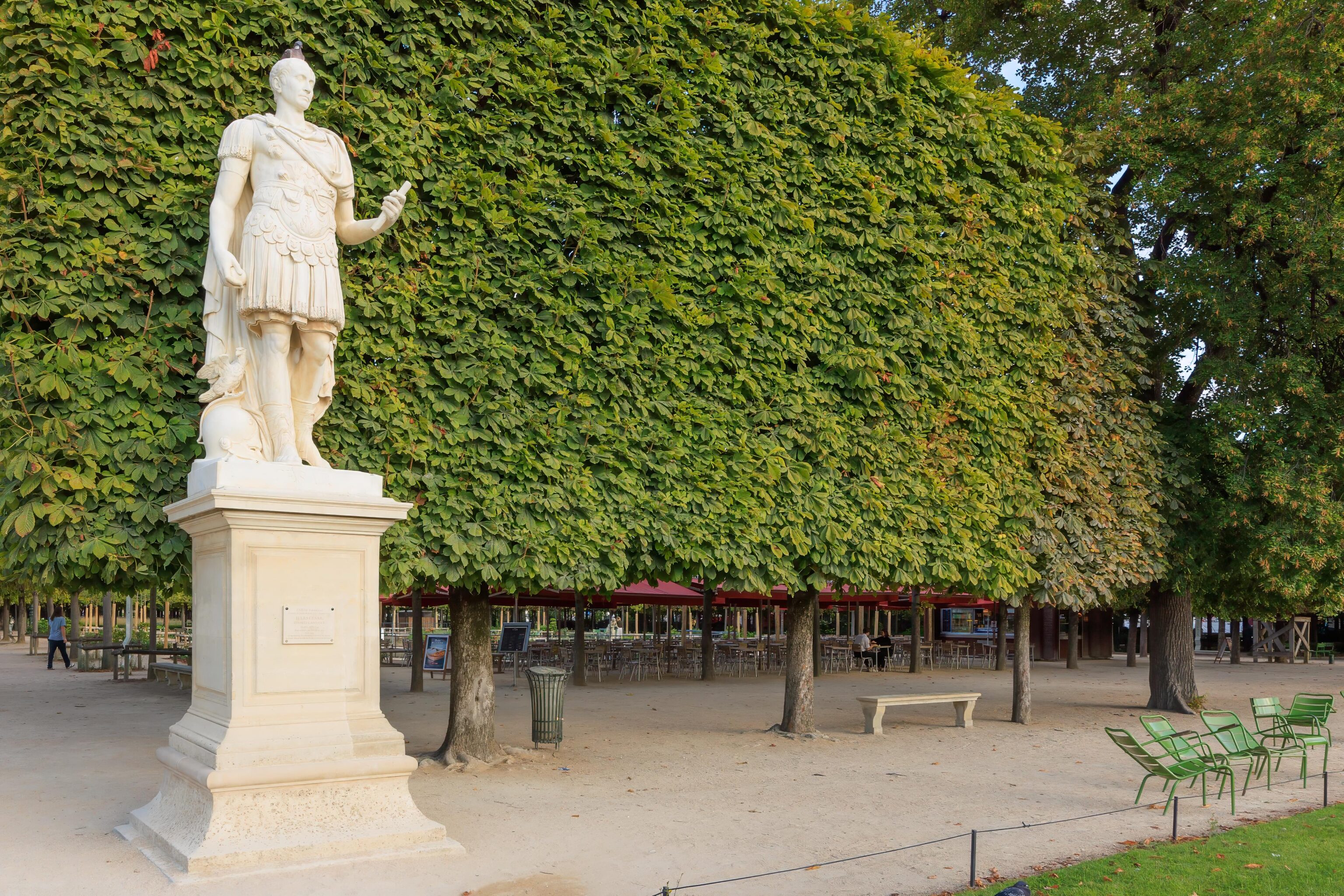
We continued walking to the west. We passed by Julius Caesar.
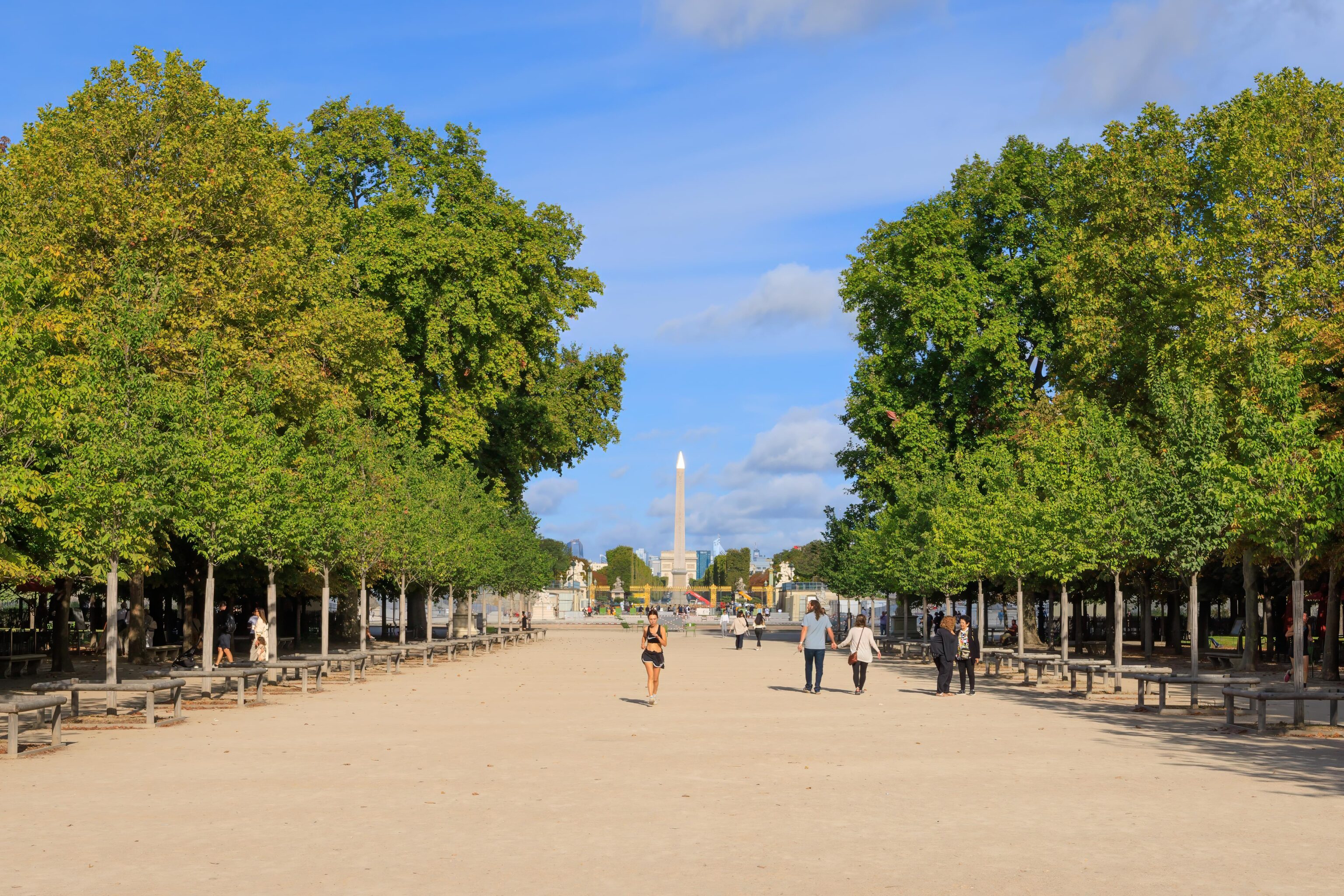
This was as far as we went, roughly in the middle of the Tuileries Garden. The Luxor Obelisk was directly in front of us, though still some distance away. We turned to the left and started heading south, or probably more correctly, southwest.
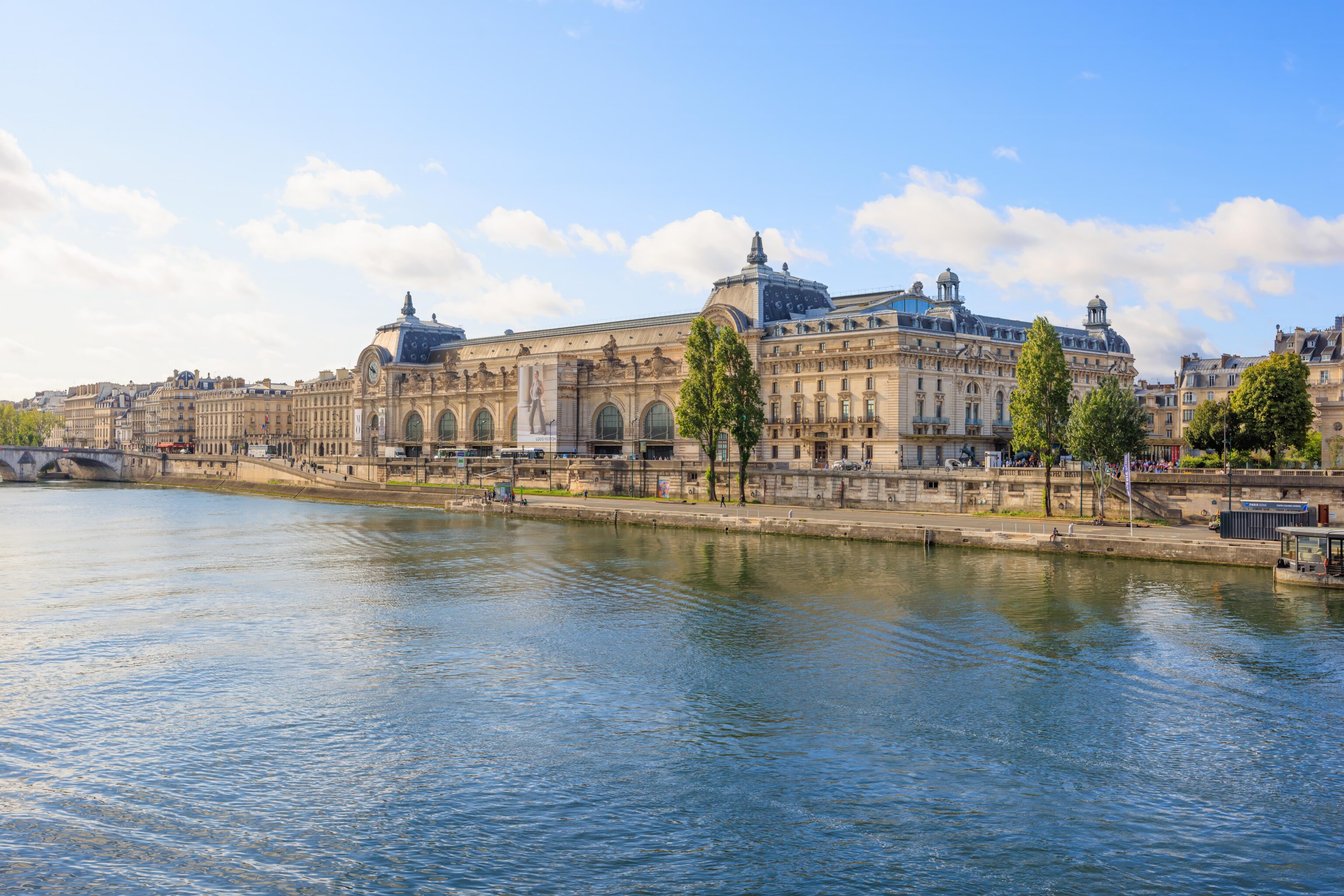
Soon, we reached the Seine. The Musée d’Orsay was on the opposite bank to the southeast of us.
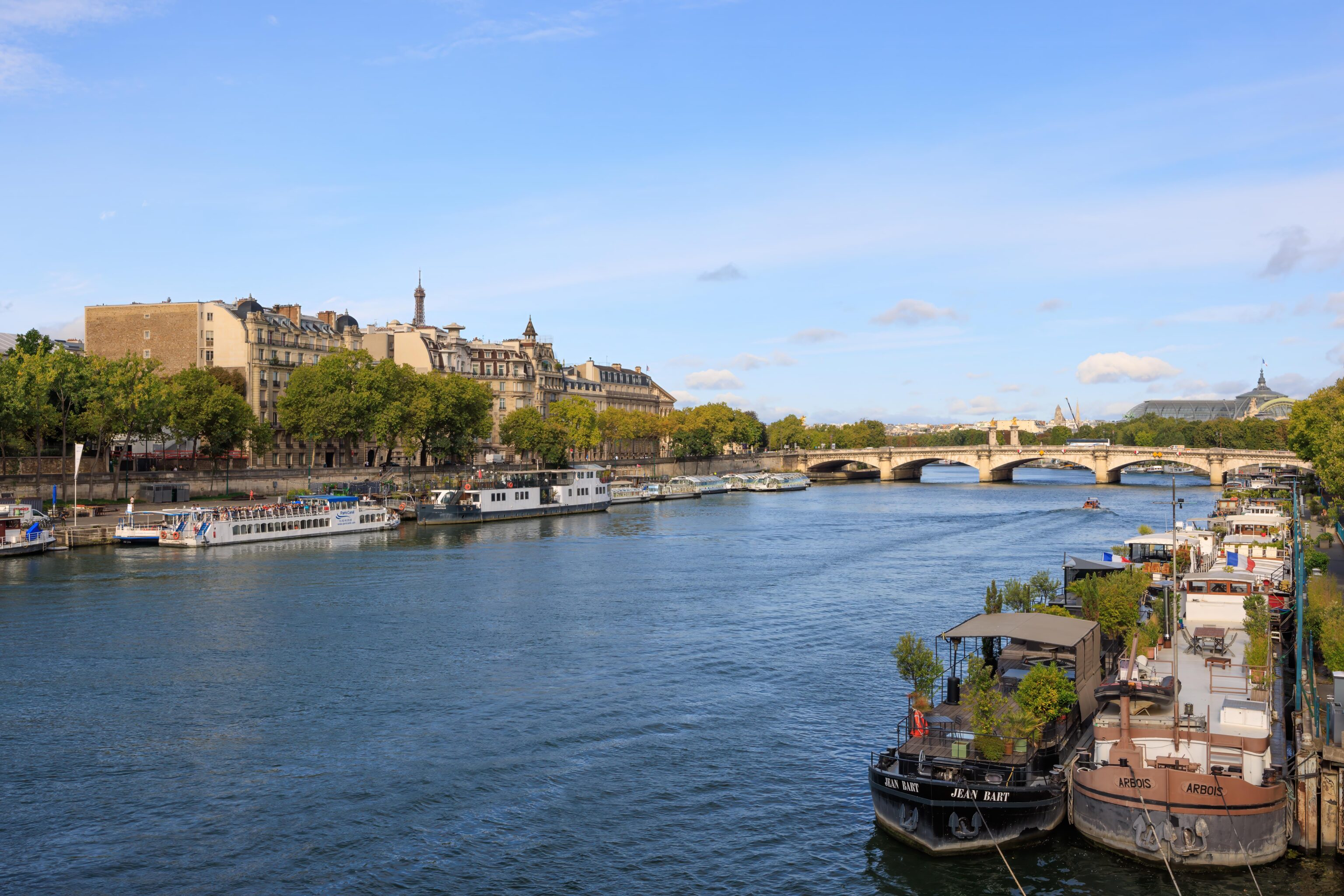
Looking to our right, we could see the top of the Eiffel Tower in the distance. We crossed at this point over the Passerelle Léopold-Sédar-Senghor, a pedestrian bridge. The bridge has an interesting design that we should have photographed. EU Touring has a good page that describes the bridge.
Musée d’Orsay
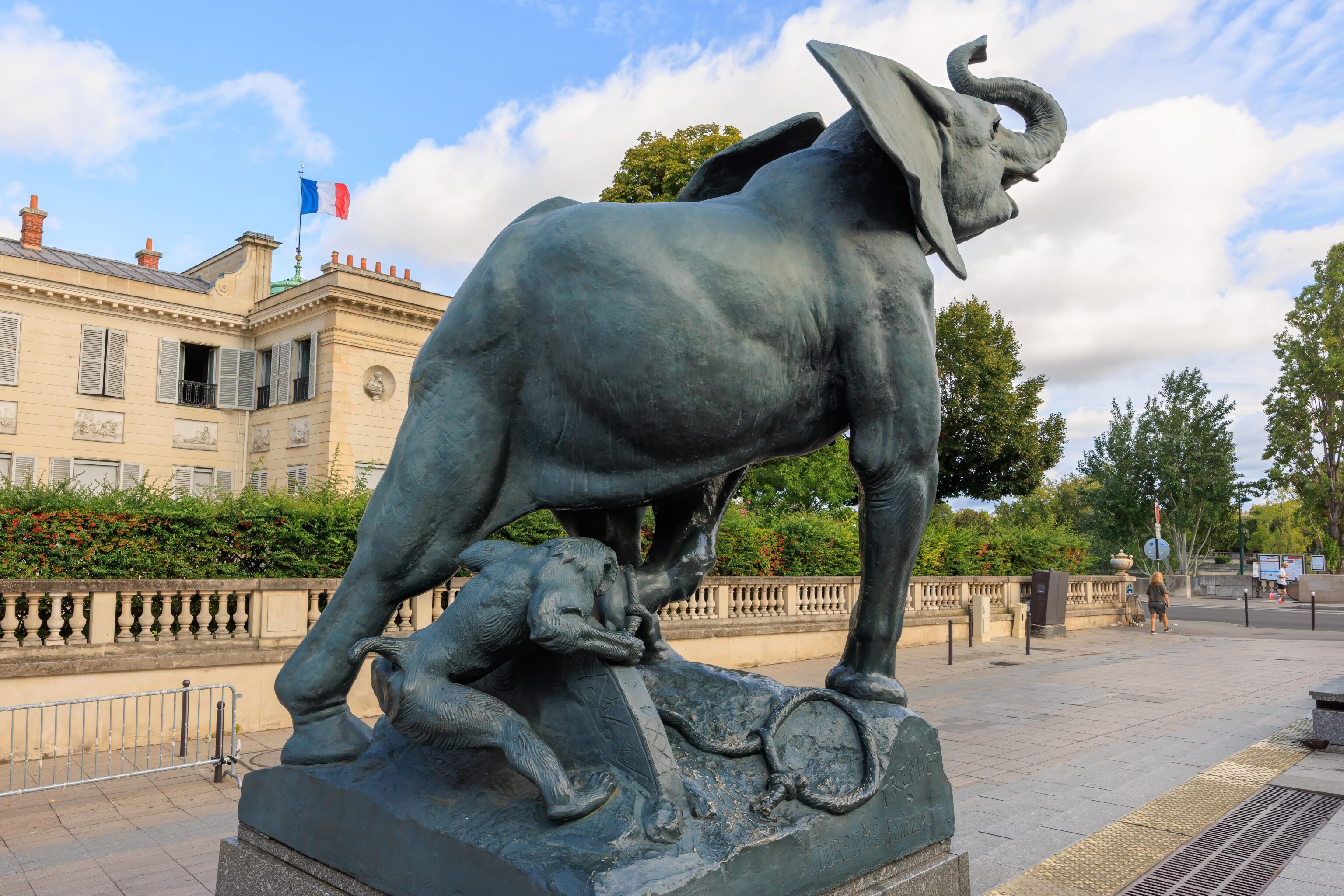
This elephant stands outside the entrance queues to the Musée d’Orsay. This sculpture is titled Eléphant Pris au Piège (Trapped Elephant).
We had timed tickets so the queue to enter didn’t take very long. After entering, we dropped off our bags and headed in. What is the first thing we saw? The Statue of Liberty!
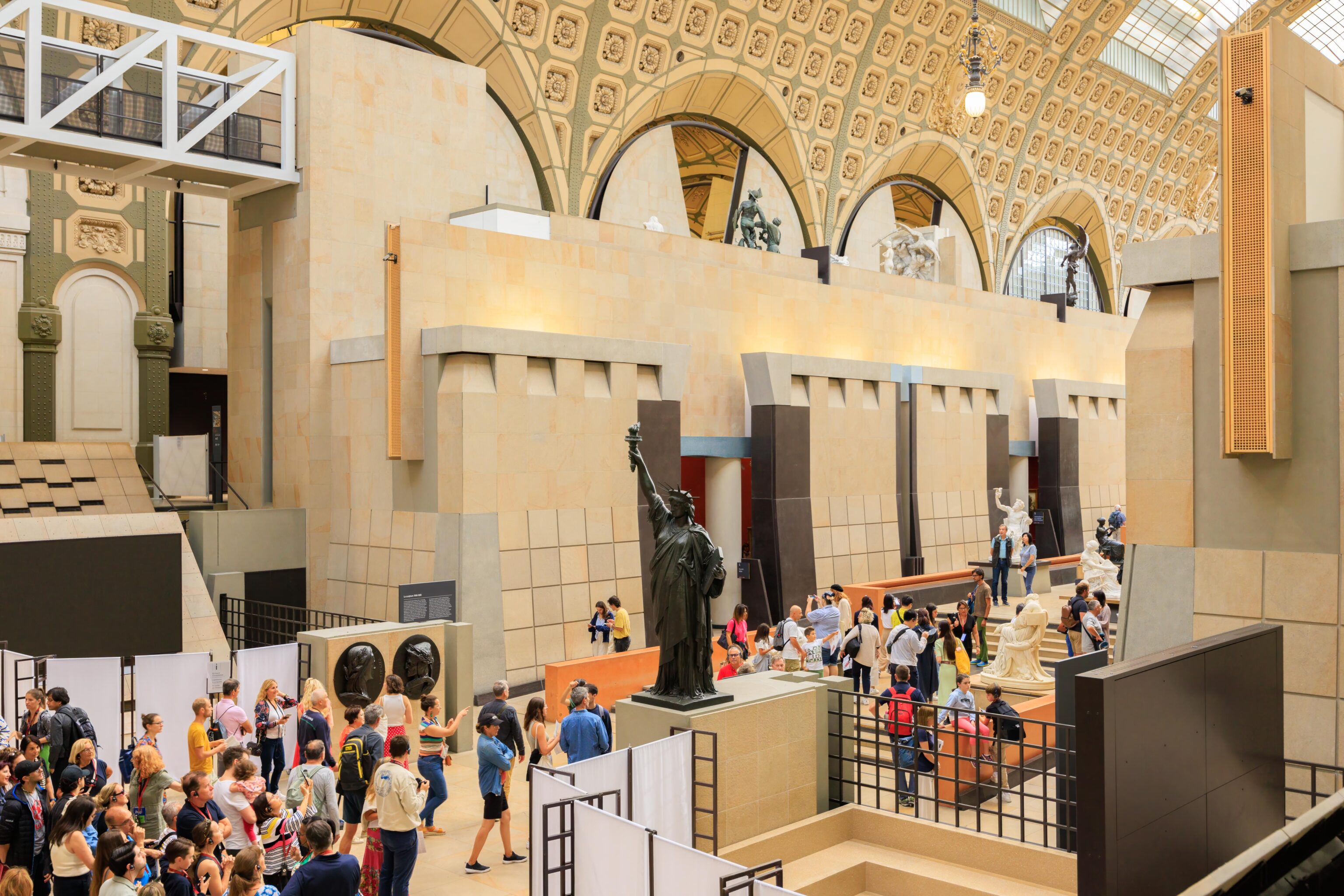
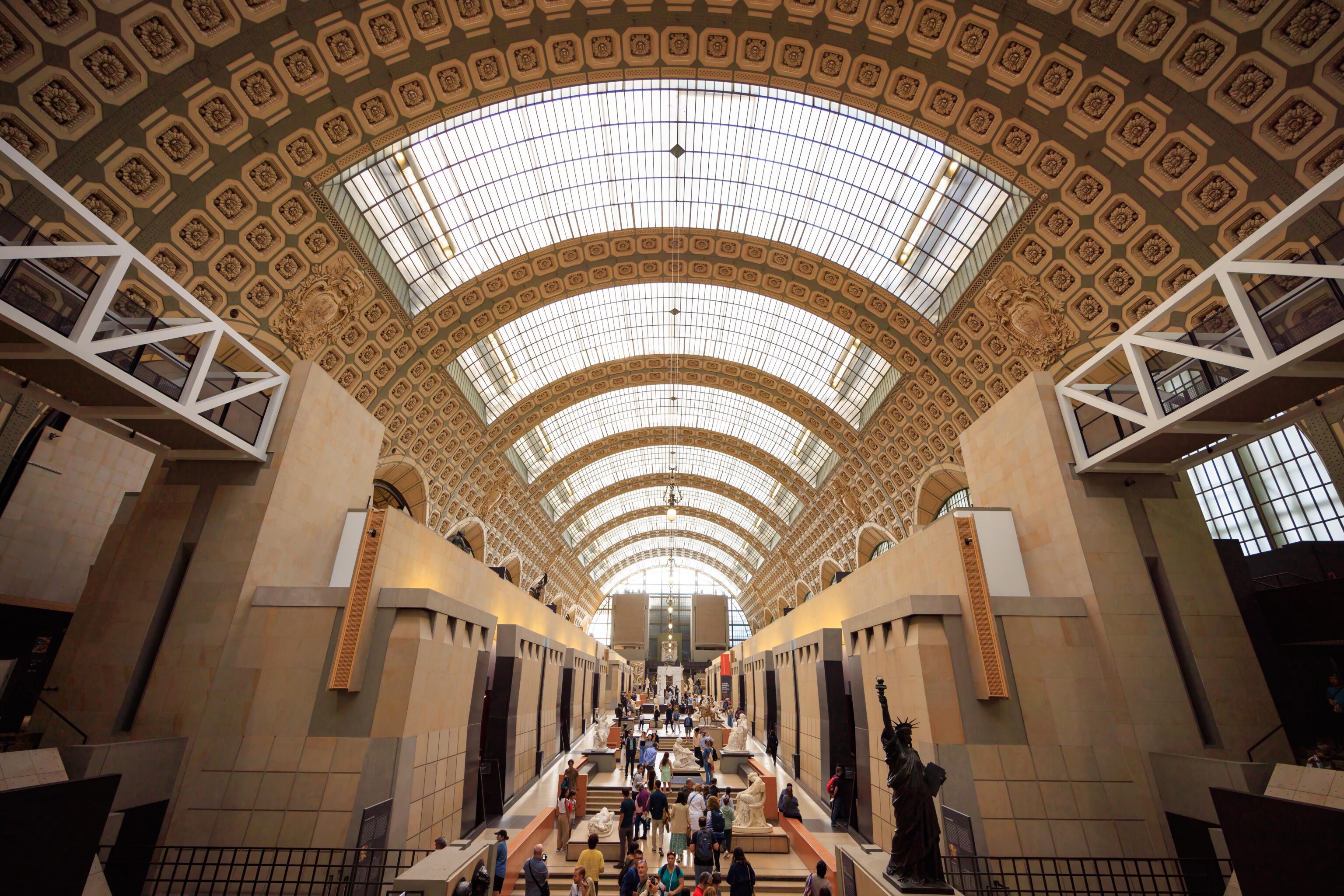
The museum is located in a former train station. Quite a grand location with a huge open space under a partial glass canopy. The ceiling is tiled with the same sculpted flowers that are under the arch of the Arc de Triomphe. Various sources refer to them as roses but what is their meaning?
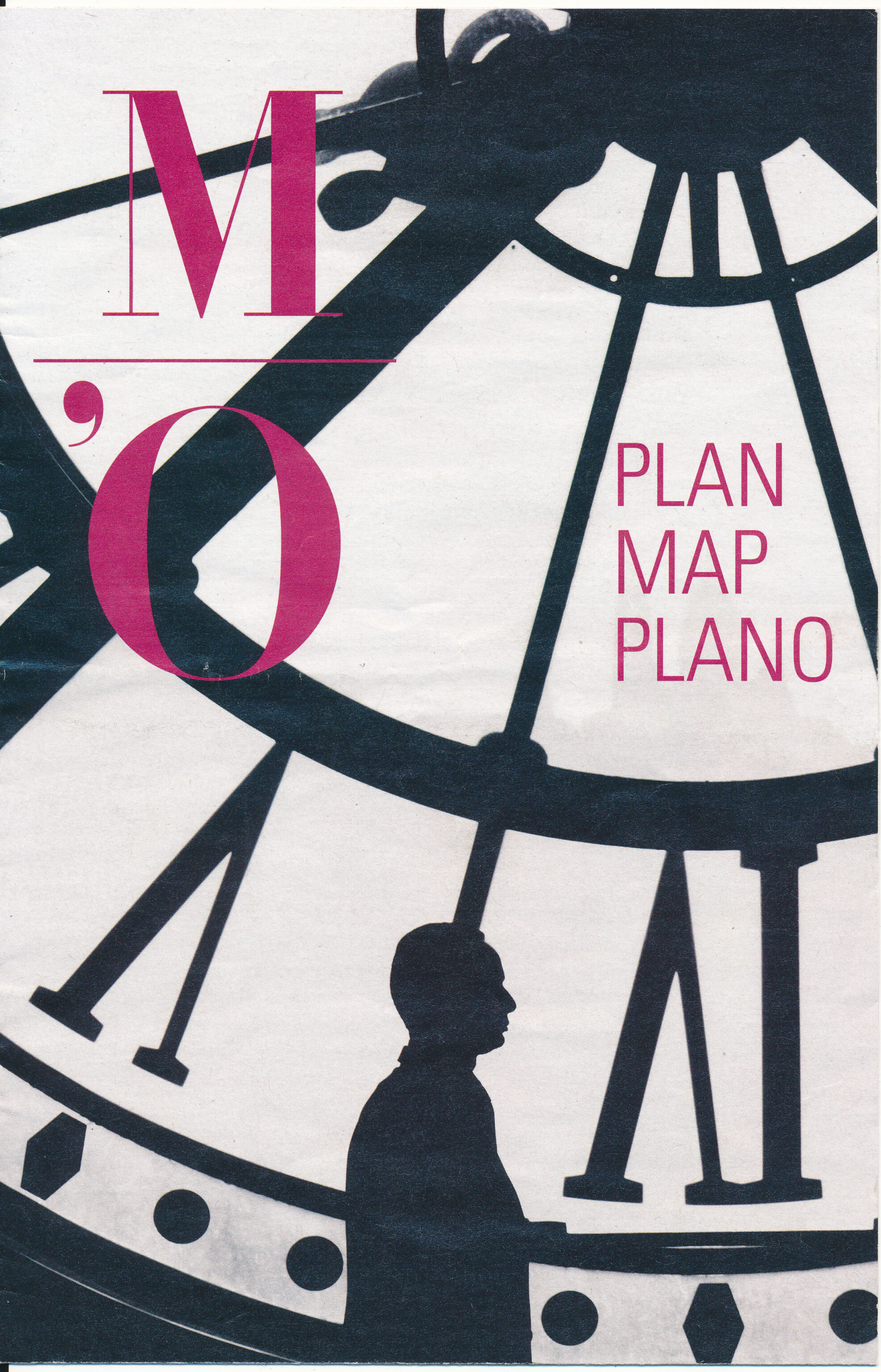
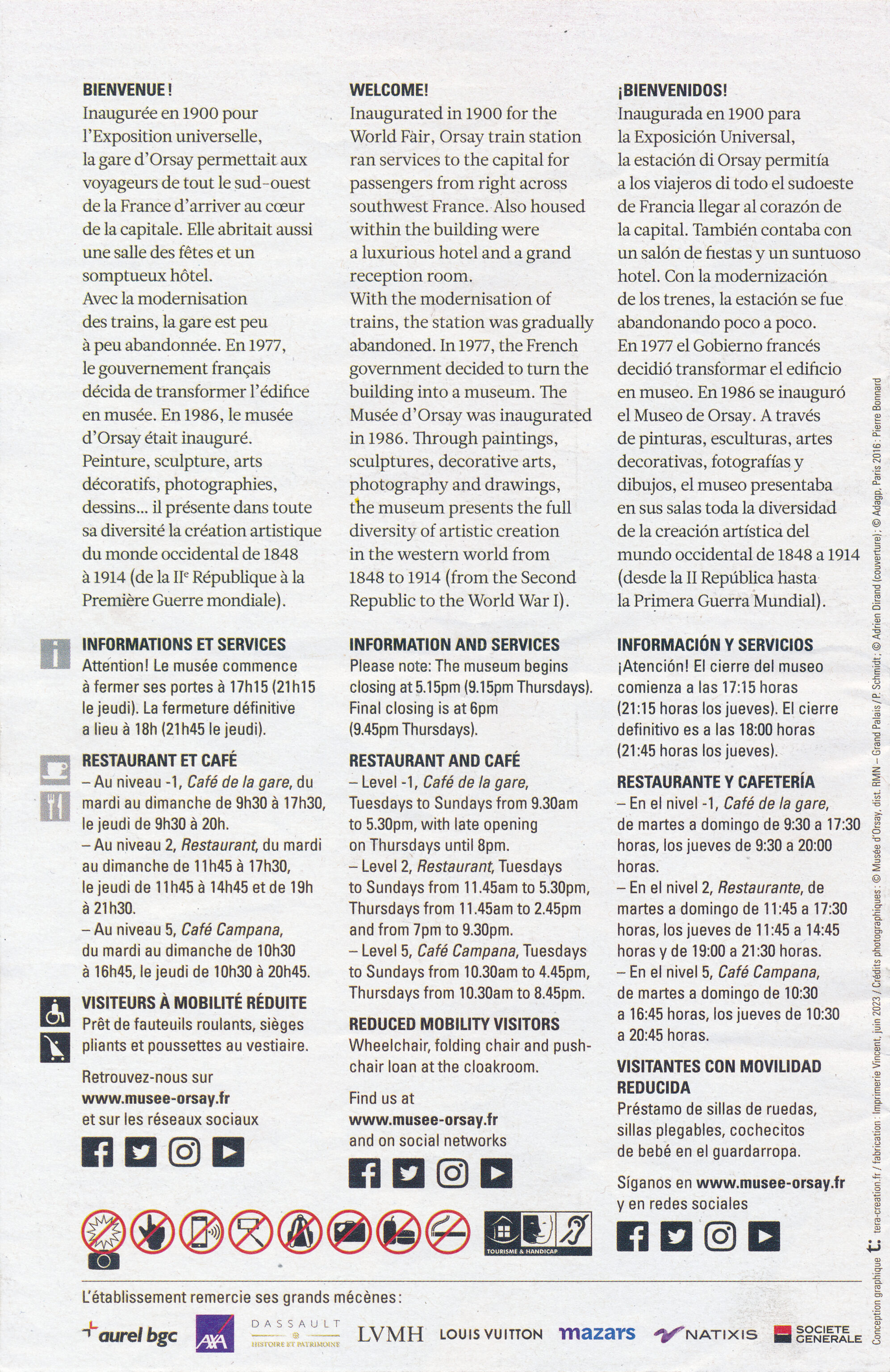
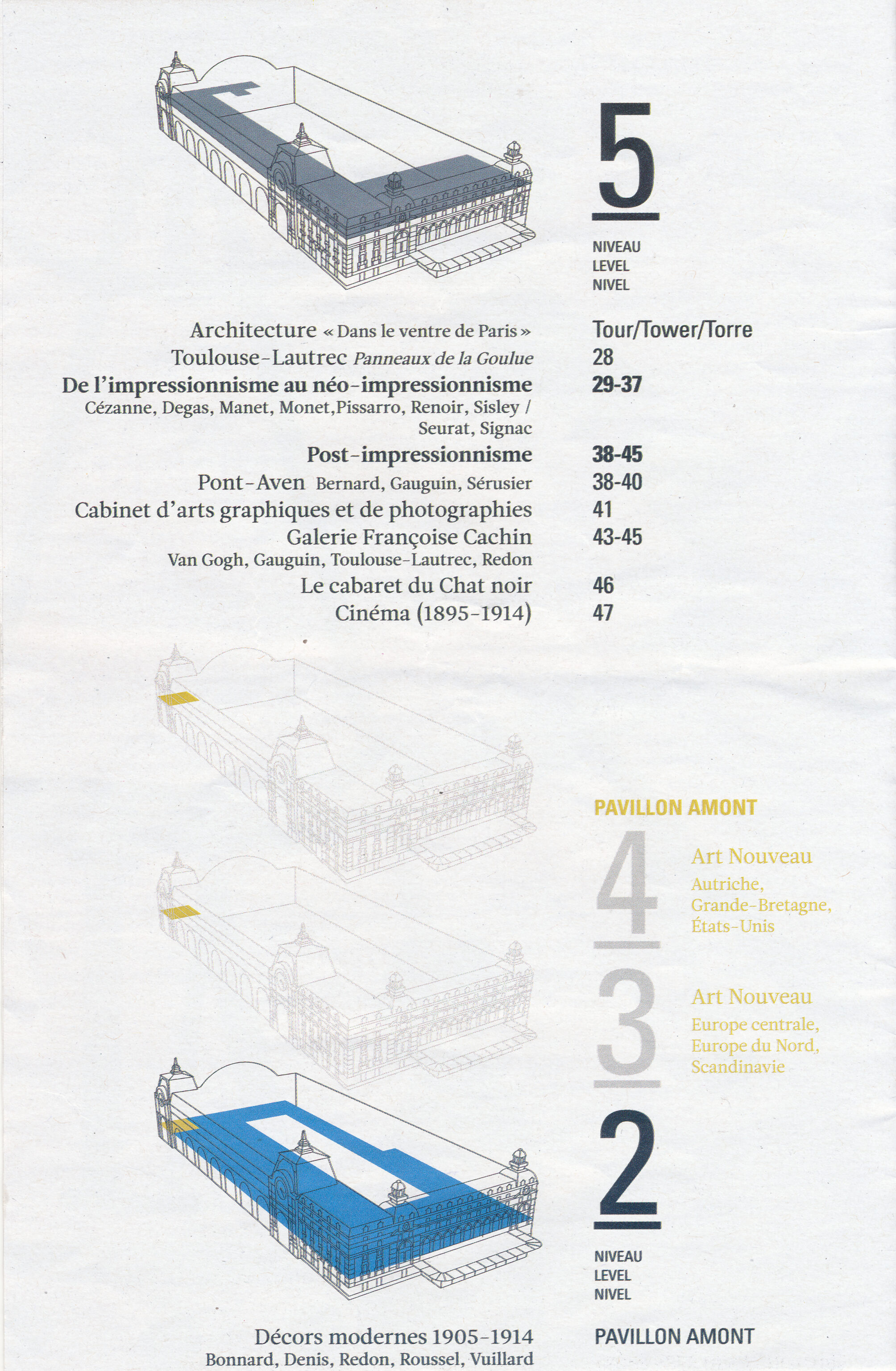
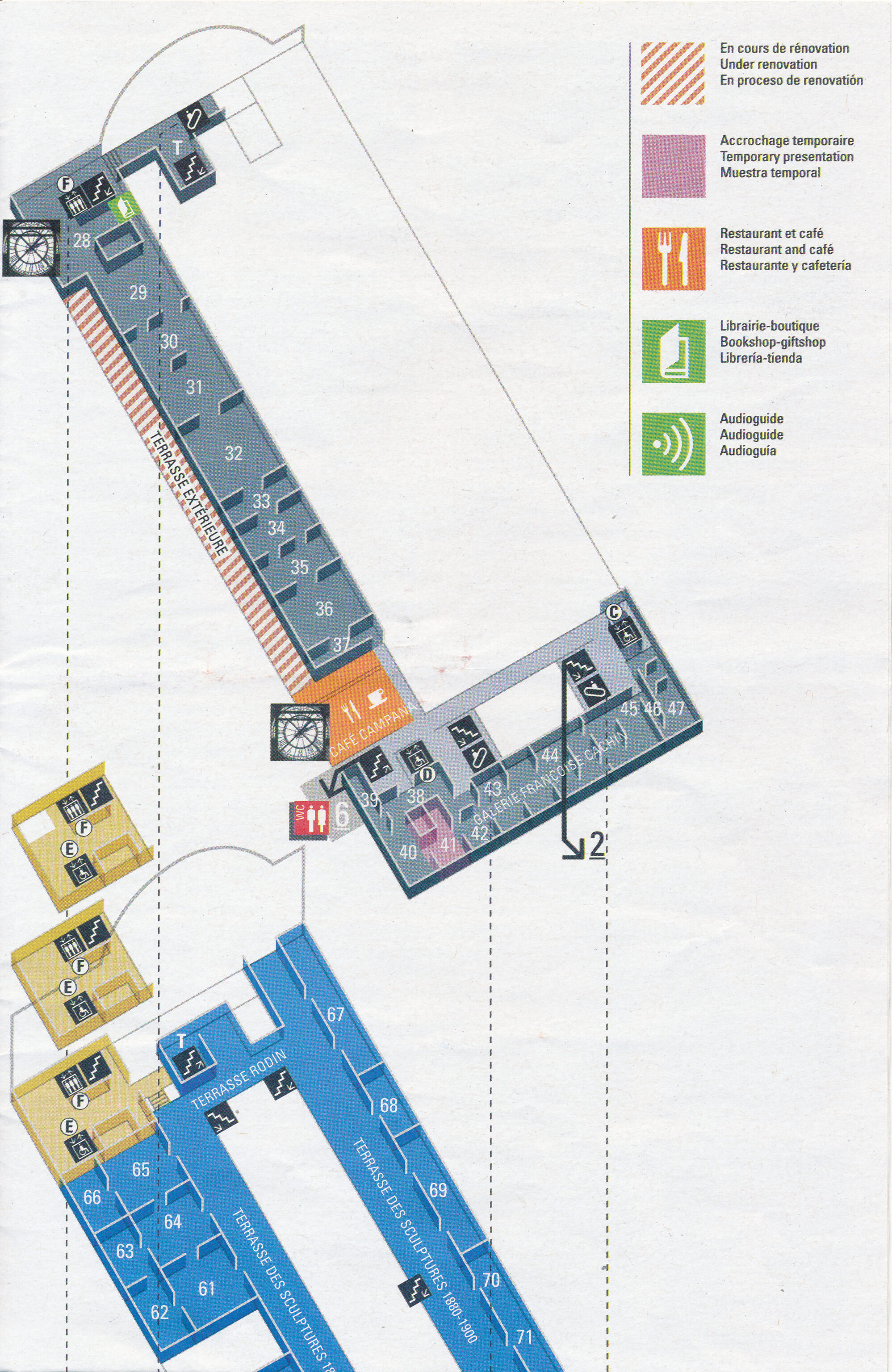
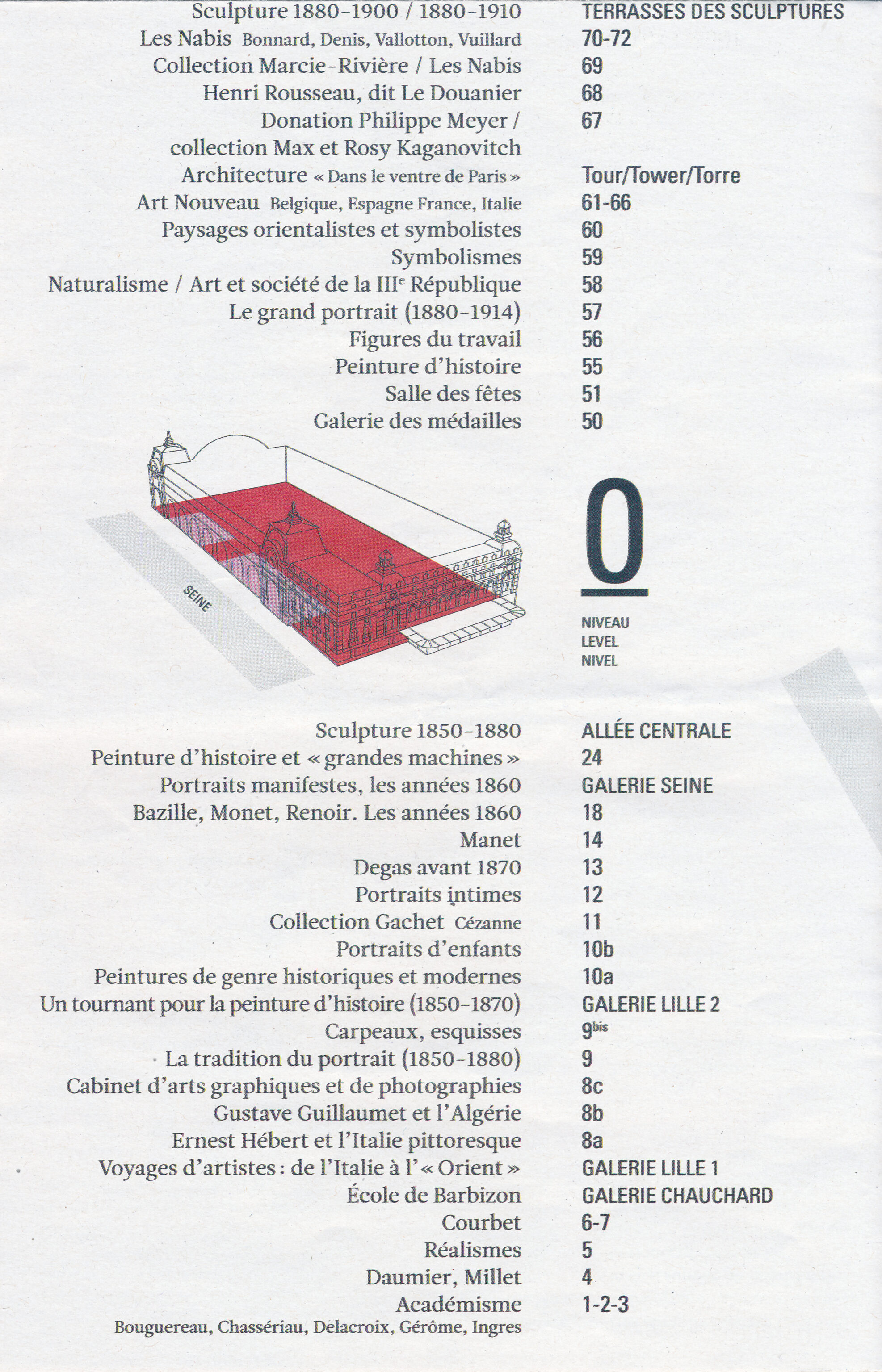
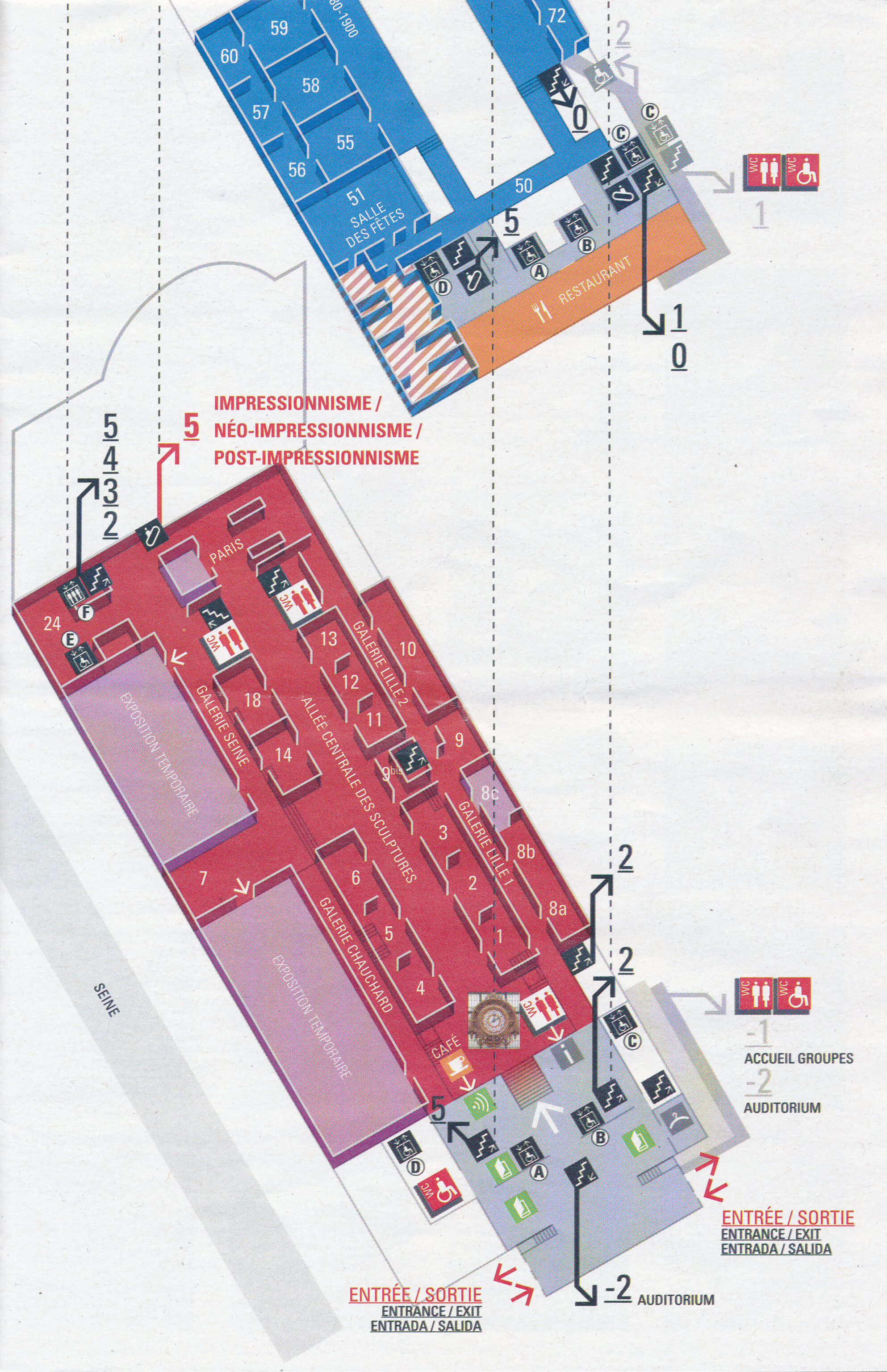
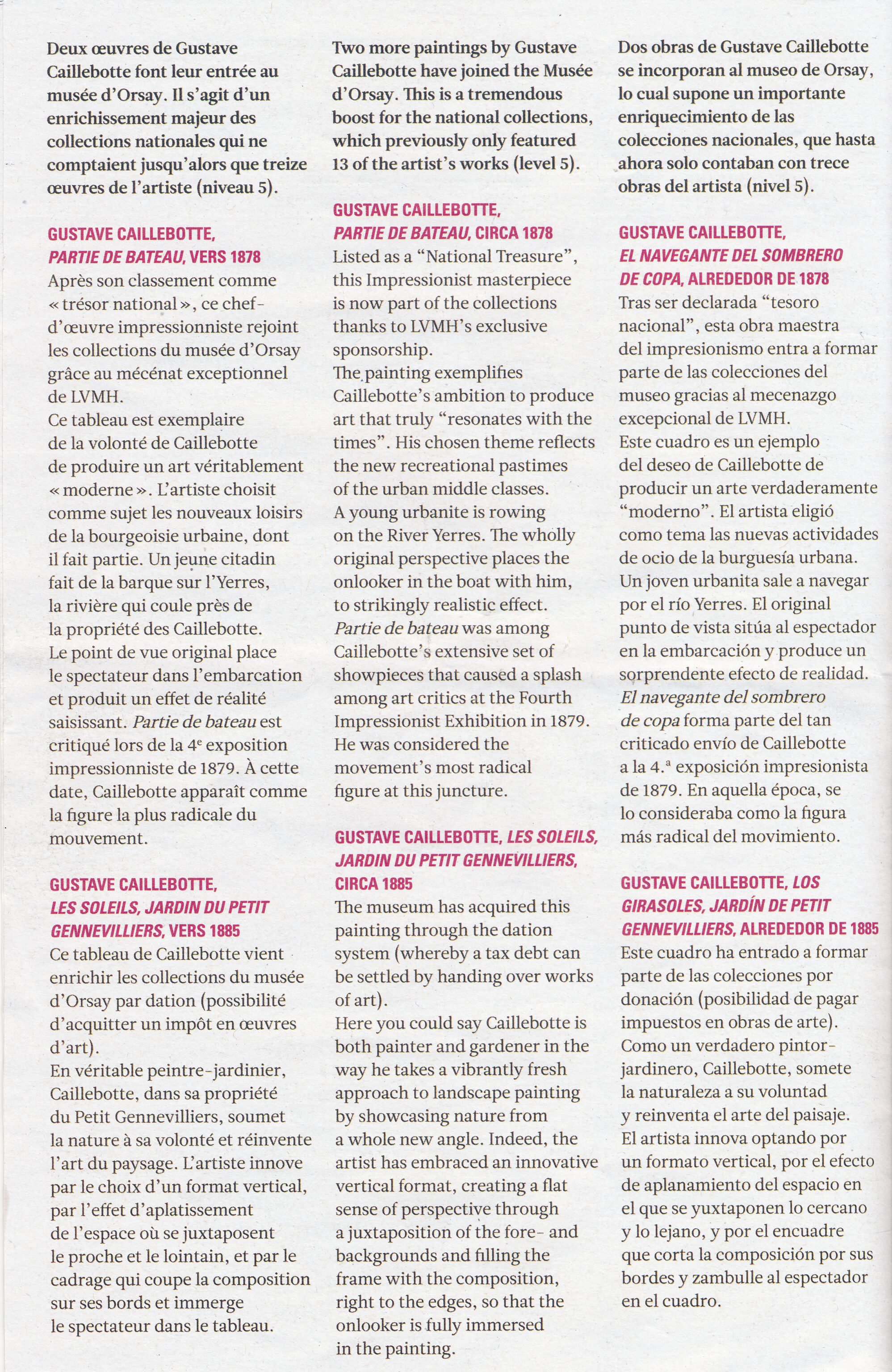
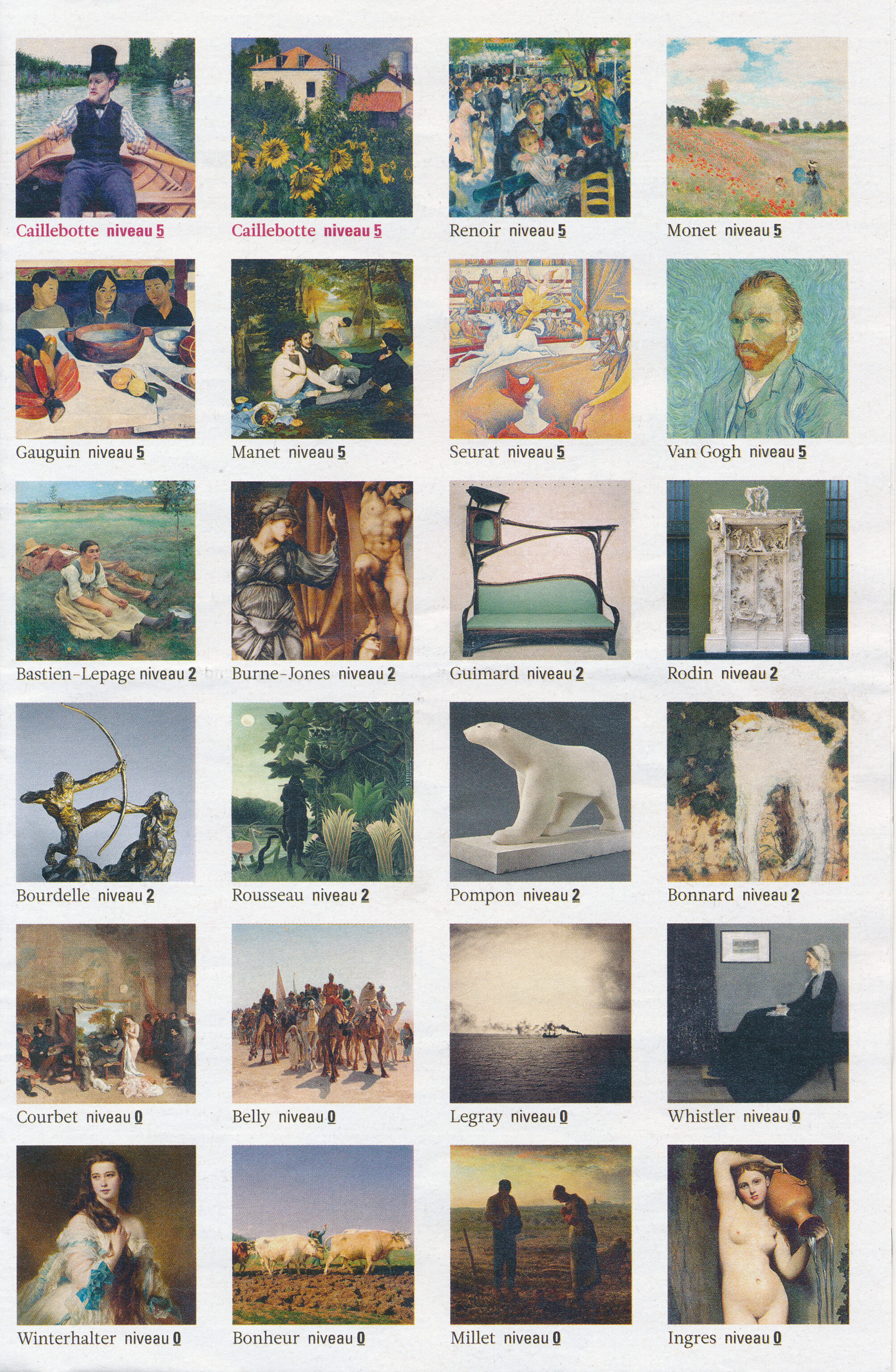
The museum has three floors to visit. We knew there would be more than we had time for so tried to find some artist names that we recognized. We decided to start on the 5th floor. We decided to find the elevator to get up there quickly. The elevator turned out to be quite hidden. It was behind two doors in what doesn’t quite look like a publicly accessible space.
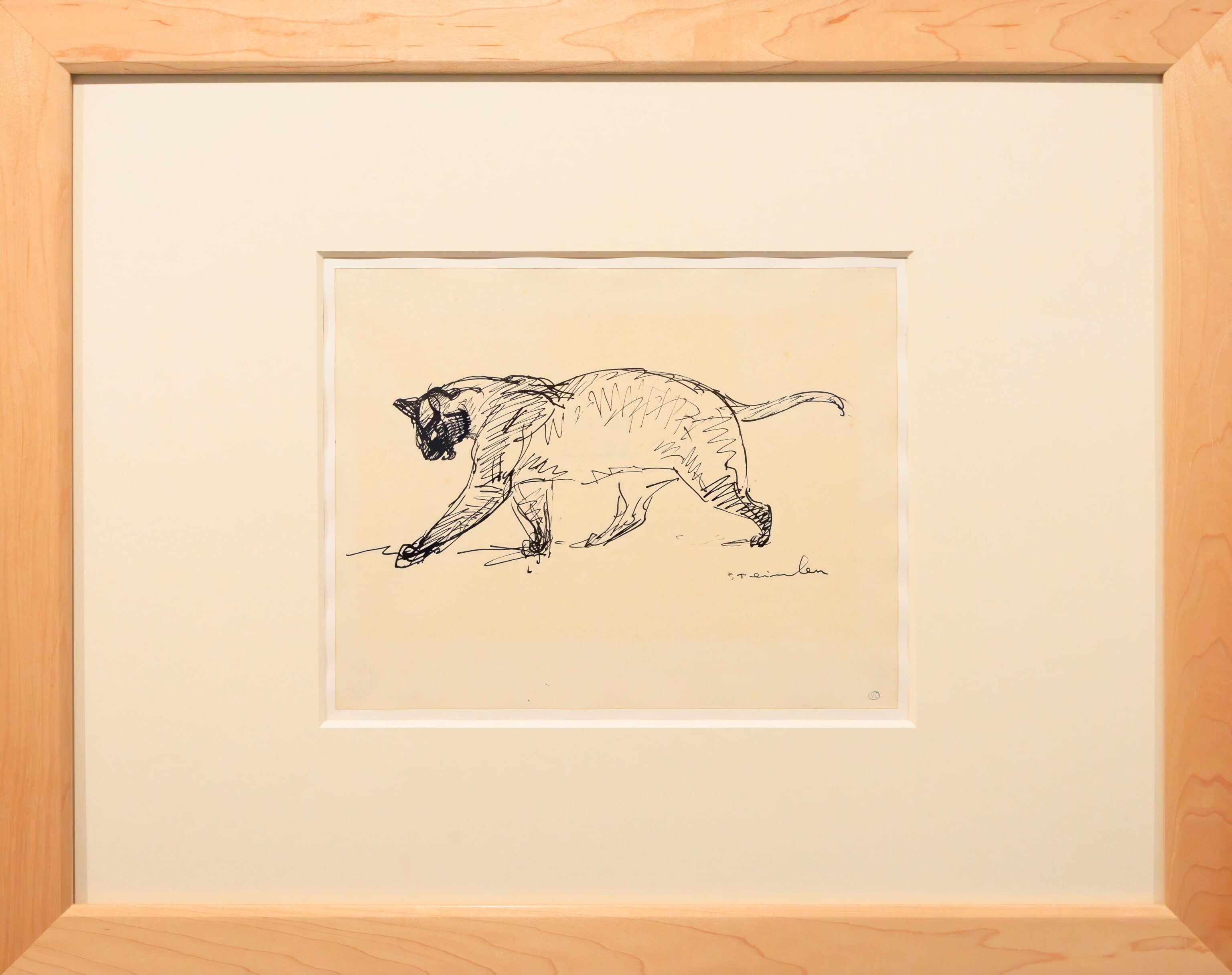
The first room we entered on the 5th floor happened to be a temporary exhibition on cats! The exhibition is titled Accro-chat-ge, which seems to translate to something like cat addict. The museum’s website describes this exhibition1:
Cats have been represented in art for as long as art has existed. In the 19th century, their importance is without equal. This exhibition, running from May 23 to September 10, 2023, brings together Édouard Manet, Théophile-Alexandre Steinlen and the contemporary artist Françoise Pétrovitch, with the presentation of a notebook of unprecedented drawings.
It’s not clear if the page will remain after the exhibition ends. The full text reads:
Following Paradis de Montcrif who published Les Chats in 1727, the art critic Champfleury devoted a book to small felines in 1868-69, Les Chats: histoire, mœurs, anecdotes. The book, illustrated with engraved drawings by Delacroix, Manet, Mérimée and Hokusai, was a great success. At the end of the century, the black cat gave its name and silhouette to the famous cabaret founded by Rodolphe Salis at the foot of Montmartre in 1881. It was no doubt named in tribute to the short story The Black Cat by Edgar Allan Poe and to its translator Charles Baudelaire, a champion of cats. It was also a reference to Paris, where stray and meowing felines abounded, especially at night. Intermediary between nature and culture, cats brings together opposites: wild and domestic, independent and cuddly, predator and gentle, they have real, symbolic and aesthetic qualities that capture the attention of illustrators. With their predilection for sleep, they offer the artist an immobile and accessible model. Their curved, aesthetic and linear beauty inspires the artistic gesture. Accro-chat-ge Manet is the author of probably the most famous cat in the history of painting: the black cat in Olympia (Musée d’Orsay, 1865). In 1868, he produced the promotional poster for Champfleury’s book on cats. The drawings on display here are sketches made around 1880 of his female cat Zizi, some of which were reused for watercolours adorning letters. Steinlen is the artist who most represented cats, animals that populate his portfolios in the thousands. A member of the Society for the Protection of Animals, he housed and fed all the cats from the neighbourhood at his home, renamed the Cat’s Cottage on rue Caulaincourt. He decorated the new Chat Noir cabaret in Montmartre with the cat as the main protagonist. He made the cat his emblem: independent, rebellious, this animal is, like the artist, “the eye on the street”. Steinlen knew how to express their presence, much greater than their small size, their absolute beauty and their mystery. Françoise Pétrovitch draws daily in small notebooks. In one devoted to cats, she captures the elastic suppleness of the animal with the suppleness of her own gesture, using ink and brush with a conciseness and accuracy that recall Japanese calligraphy Cats by Charles Baudelaire (The Flowers of Evil) Sages austere and fervent lovers both, In their ripe season, cherish cats, the pride Of hearths, strong, mild, and to themselves allied In chilly stealth and sedentary sloth. Friends both to lust and learning, they frequent Silence, and love the horror darkness breeds. Erebus would have chosen them for steeds To hearses, could their pride to it have bent. Dreaming, the noble postures they assume Of sphinxes stretching out into the gloom That seems to swoon into an endless trance. Their fertile flanks are full of sparks that tingle, And particles of gold, like grains of shingle, Vaguely be-star their pupils as they glance.
The text references a painting, Olympia, by Manet. It is unfortunately not one that we happened to see! Or maybe we just missed it. Quite unfortunate as we didn’t see this text on the website until now while writing this page.
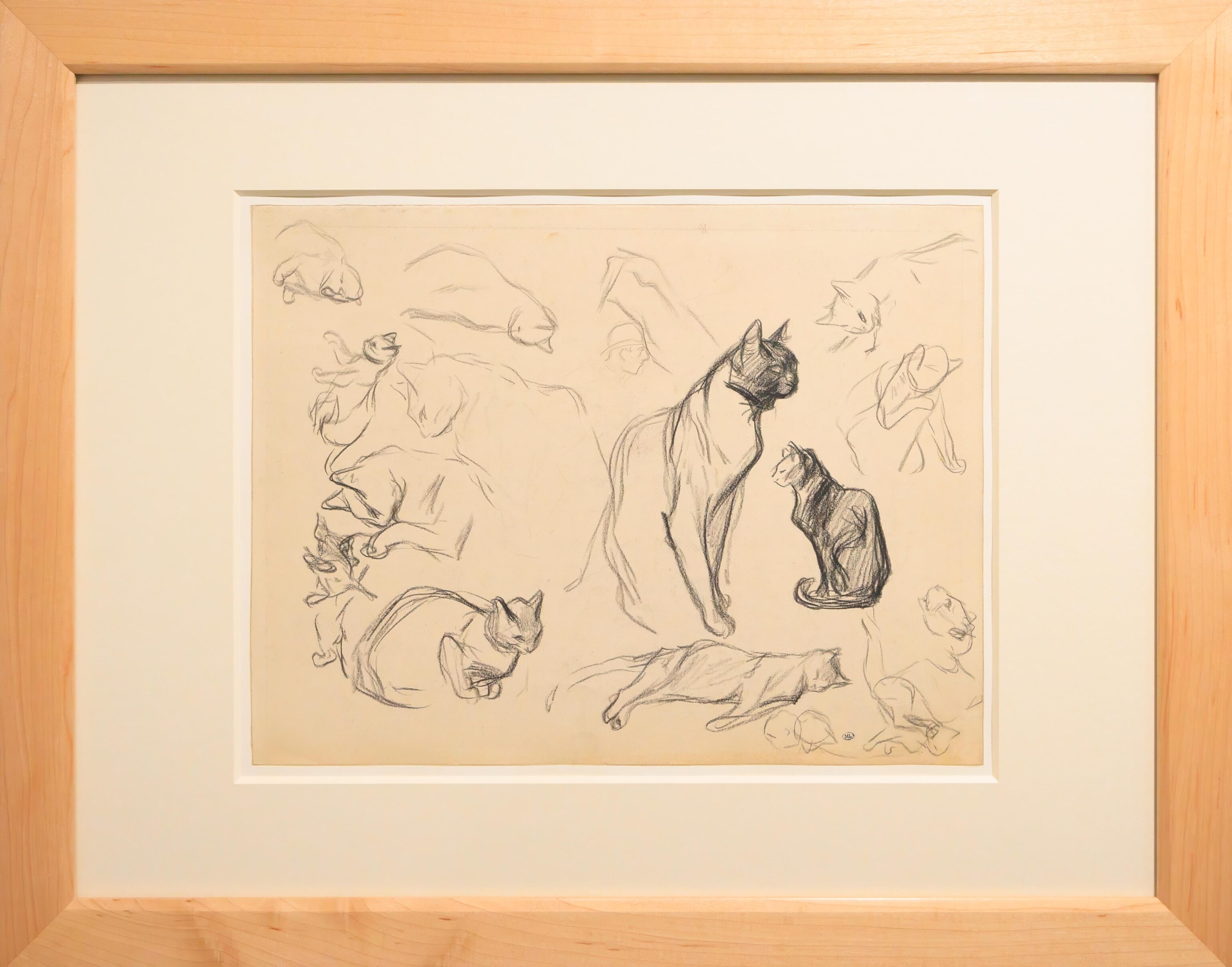
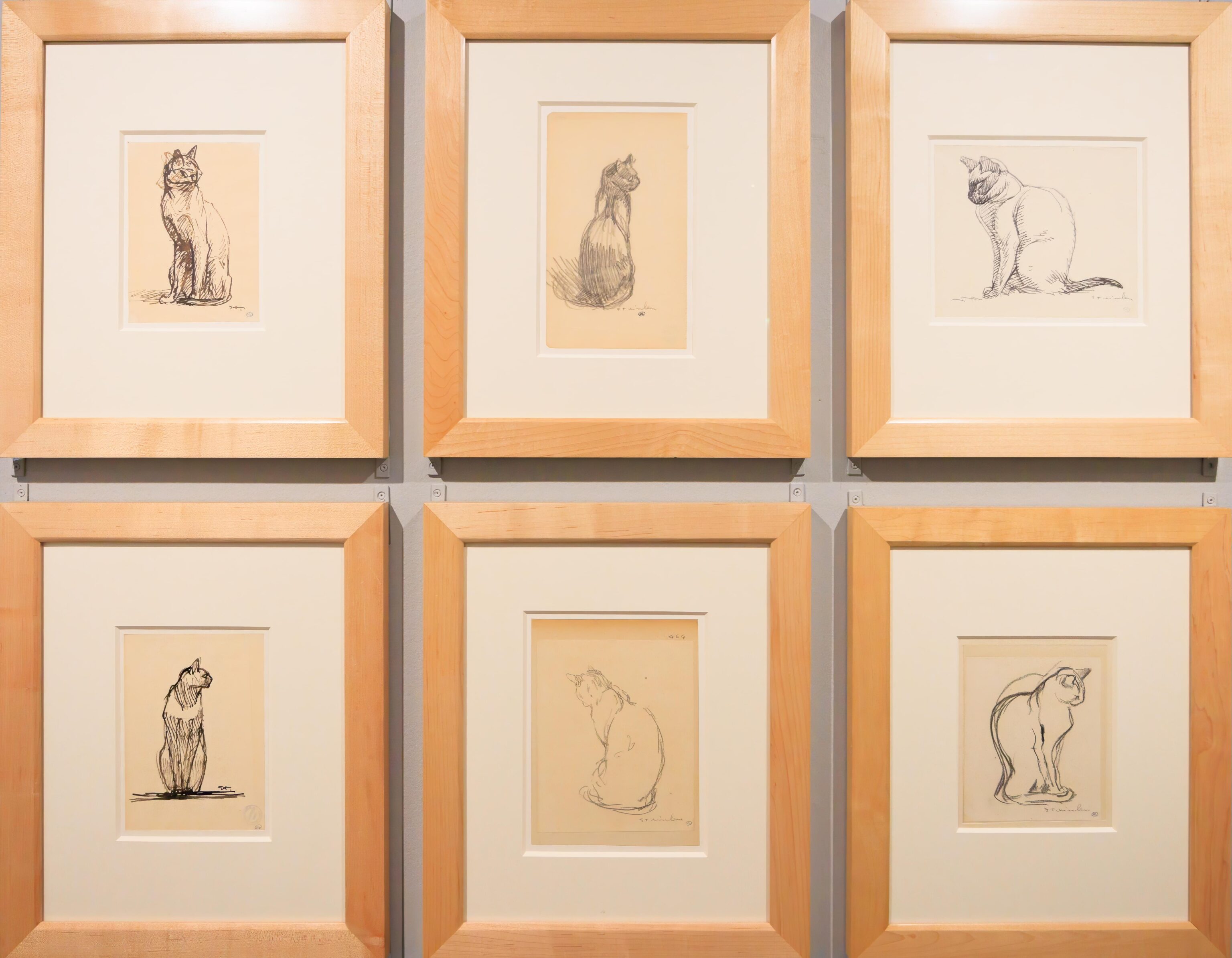
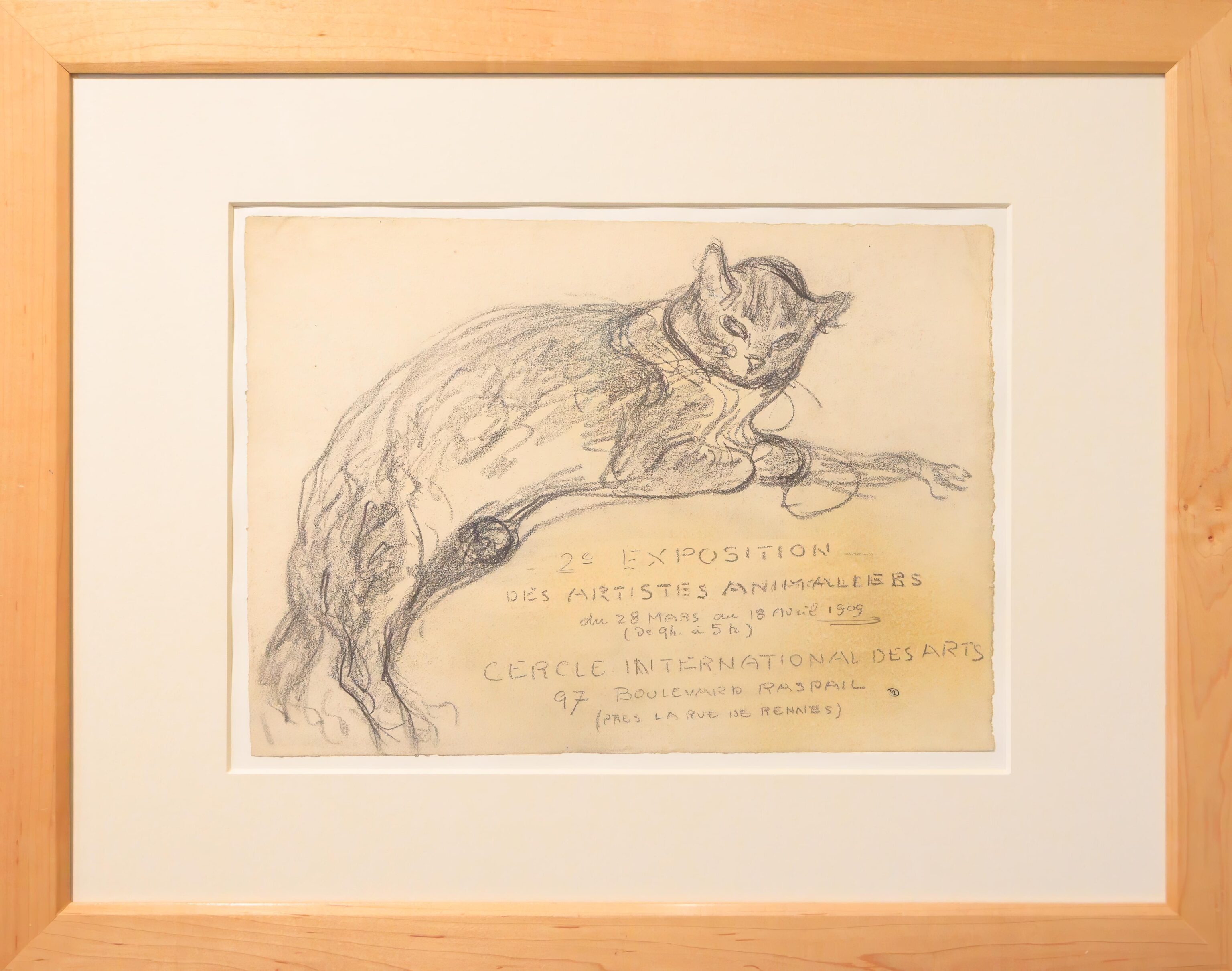
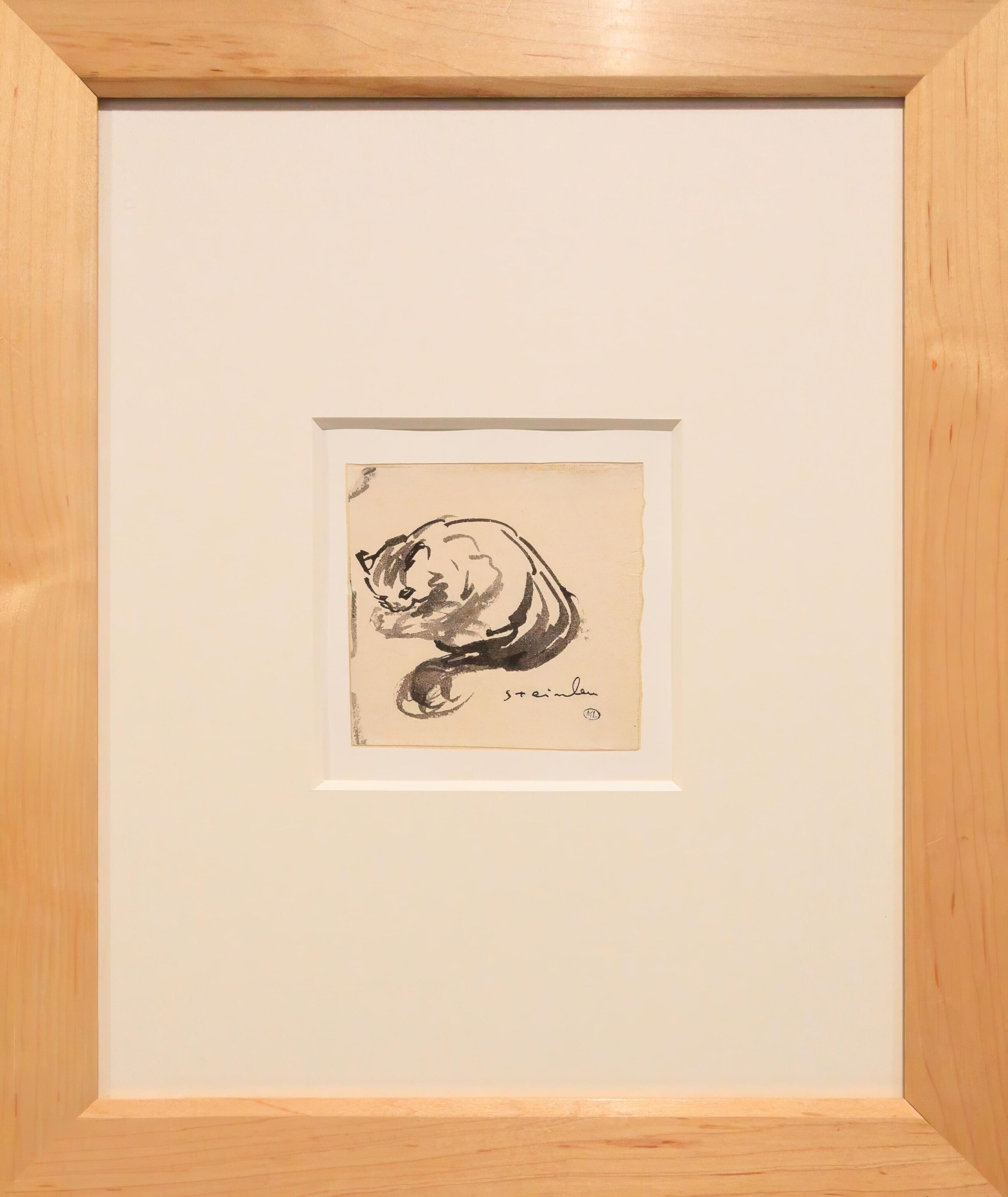
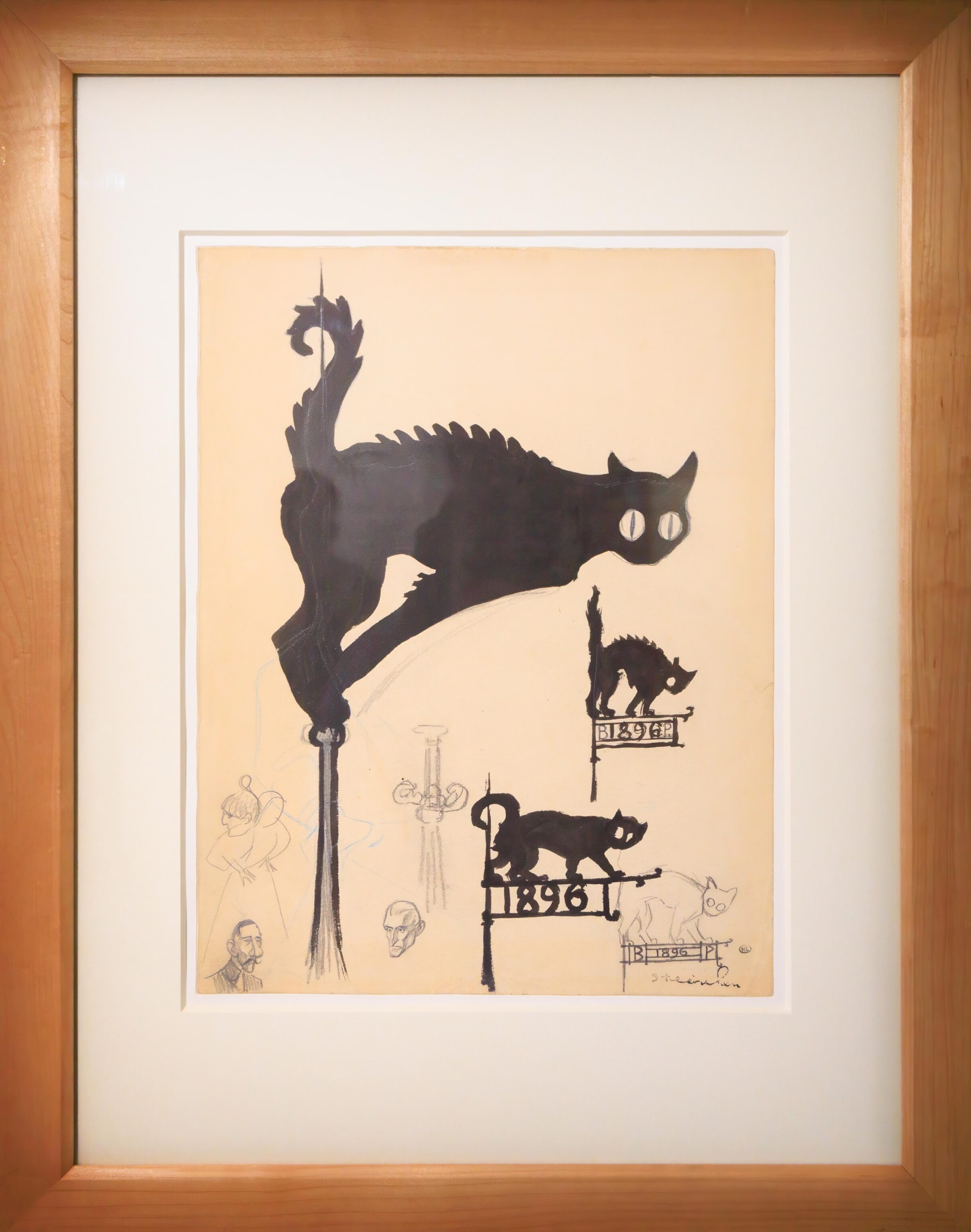
A few more pieces of cat art, just a small selection of what was on display.
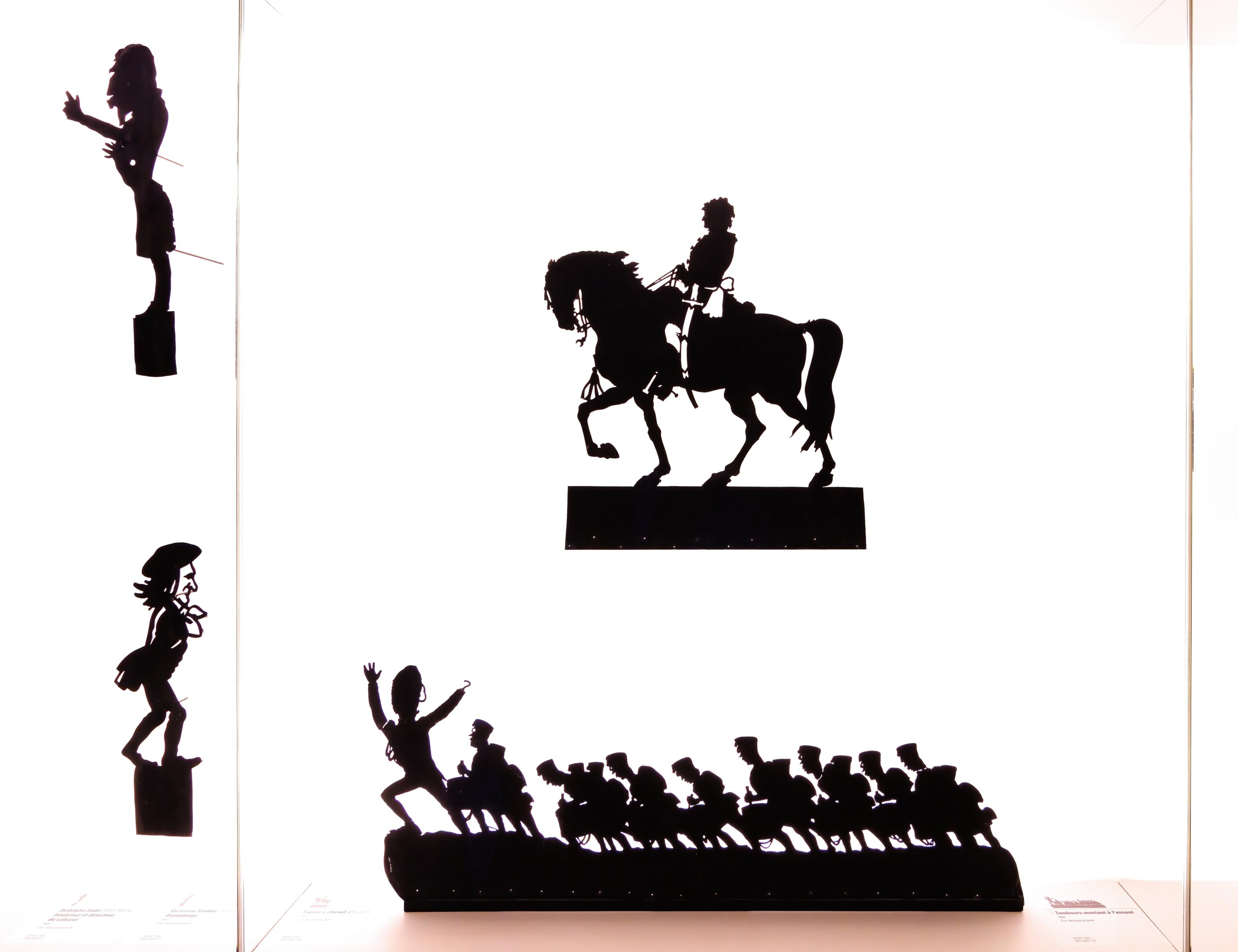
There was a display of Le Chat Noir (The Black Cat). This was a nightclub which is described by Wikipedia as the first modern cabaret. Our understanding is that there was an advertising campaign which created these silhouetted cut out shapes. There were many on display in a long backlit display case.
There is a famous poster of the black cat used as part of advertising. We were thinking there was an actual artwork that was the original for this cat but it seems like our understanding was incorrect. We spent some time looking for it before realizing the references were to the silhouette display rather than the actual poster art. Too bad!
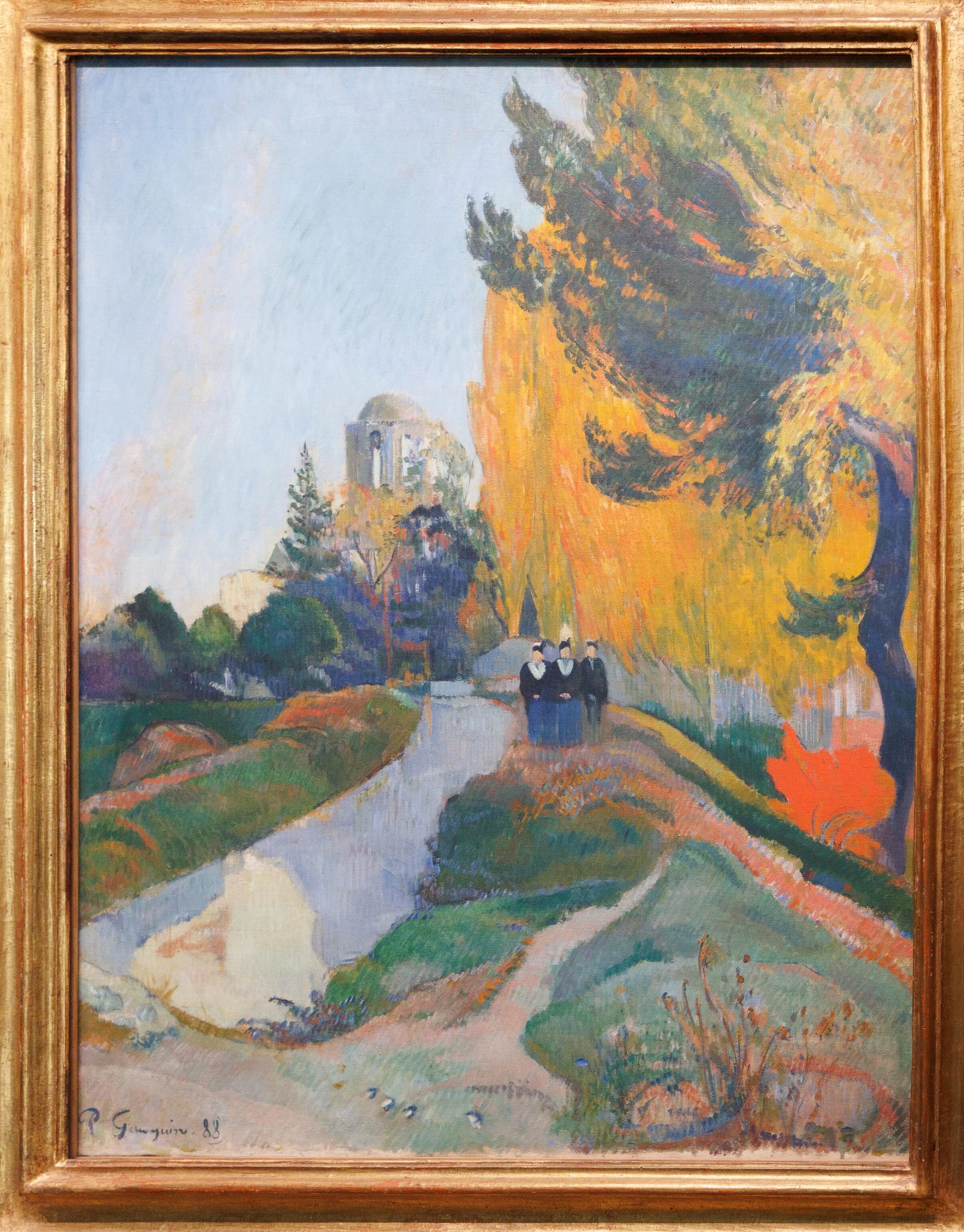
Of course, there were plenty of other pieces of art that did not involve cats. We photographed a semi-random selection of them.
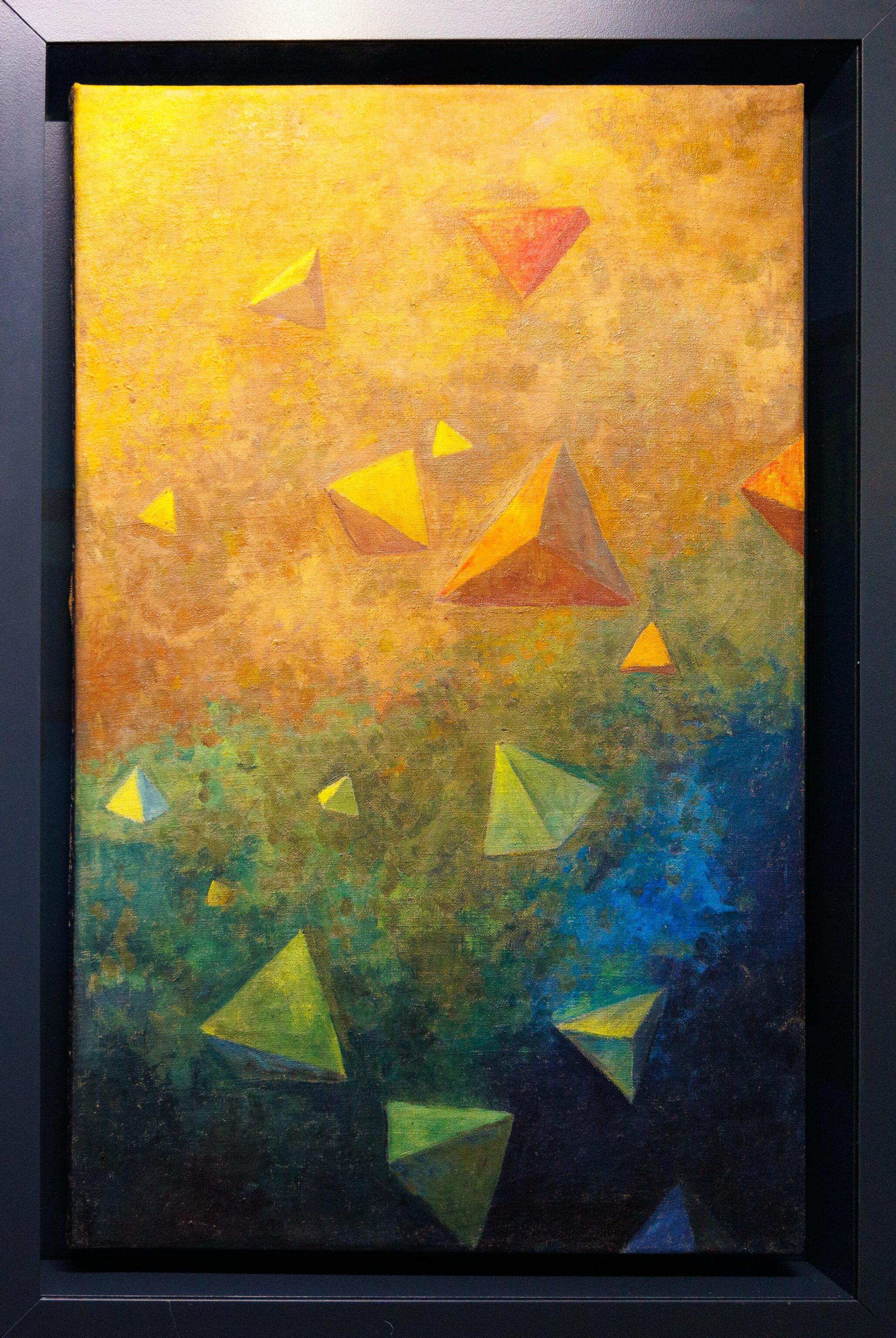
This seemed like it could be appropriate for Delta Airlines marketing!
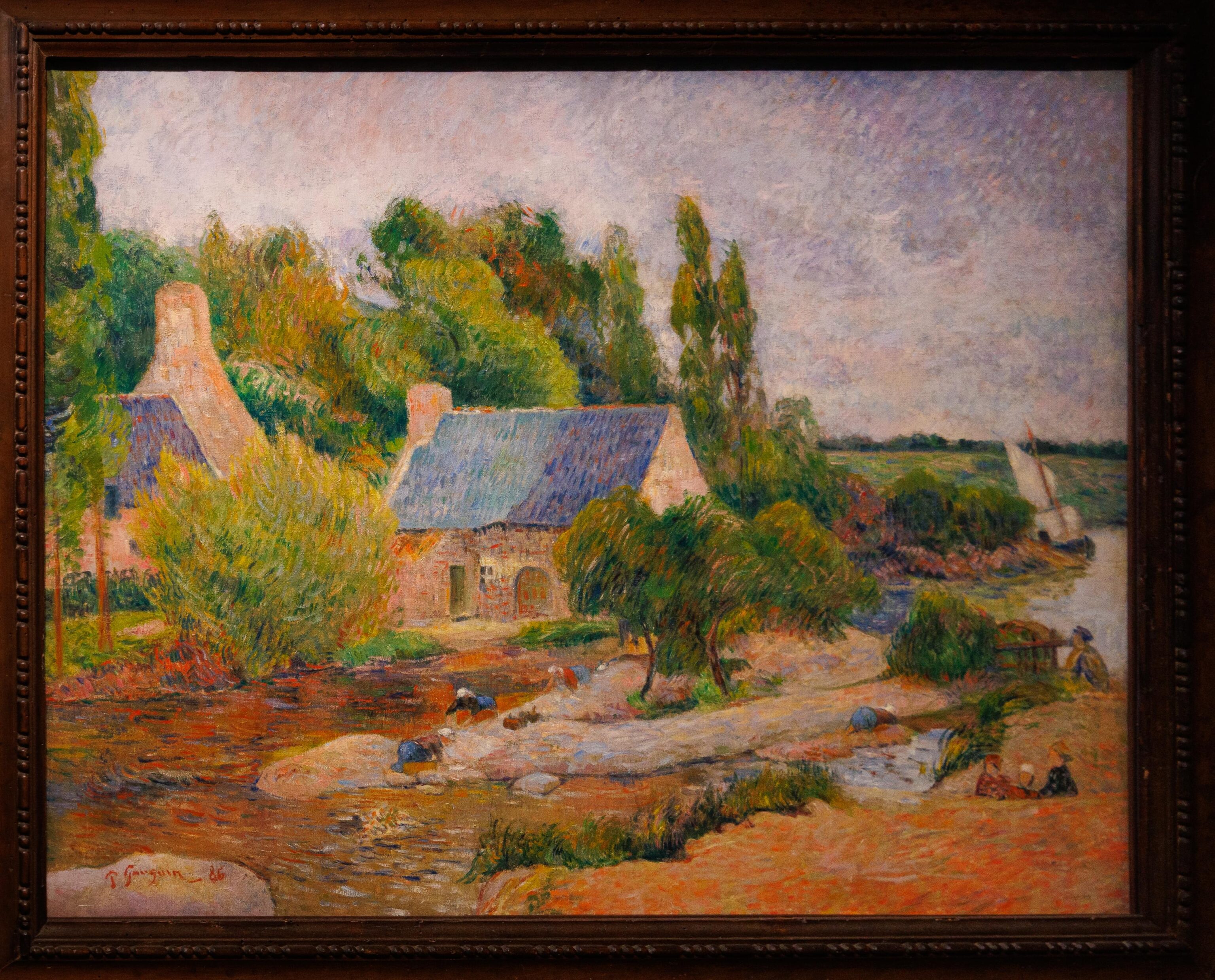
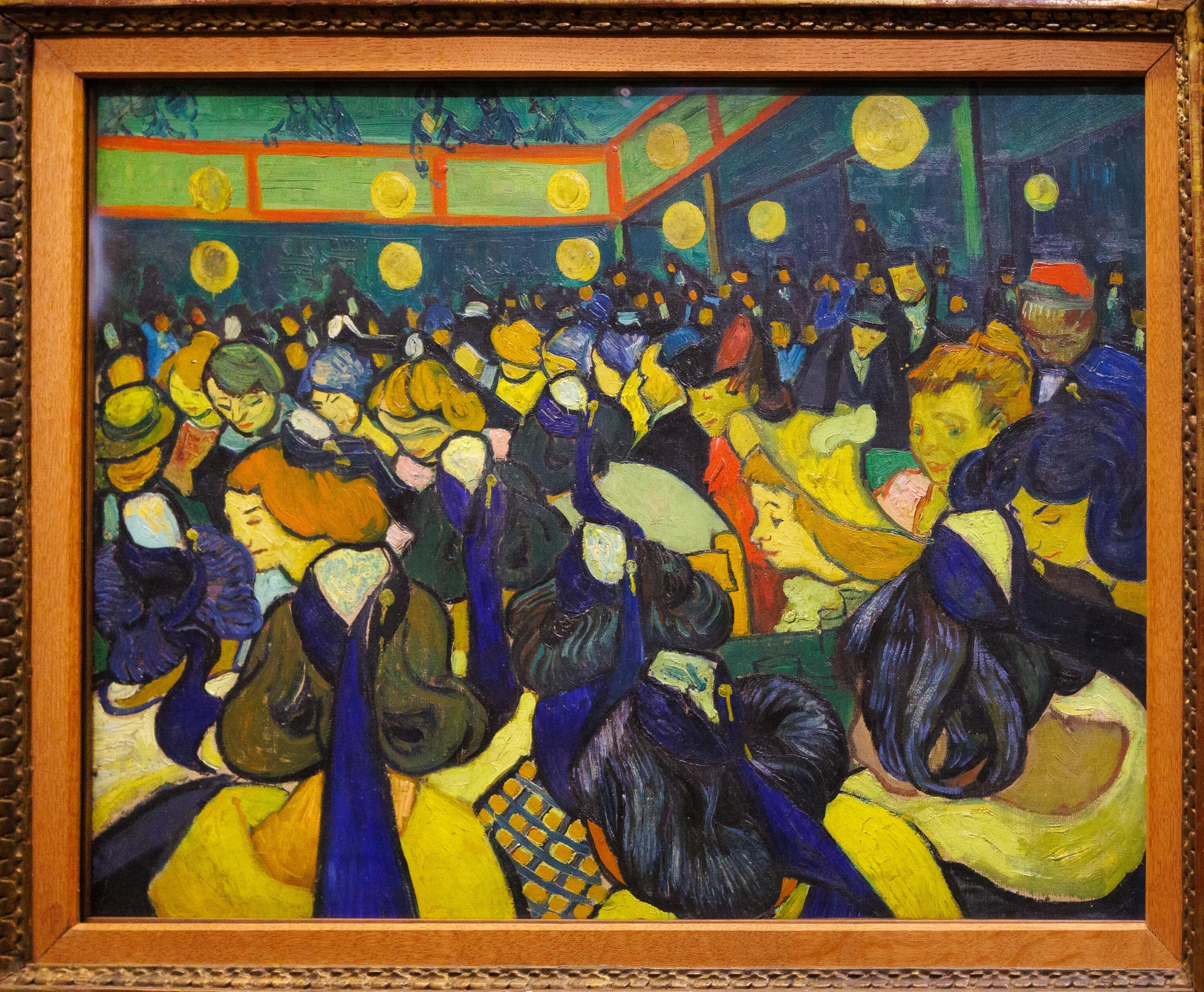
While we walked by many pieces, some by very famous artists, we didn’t recognize any until we saw something ahead.
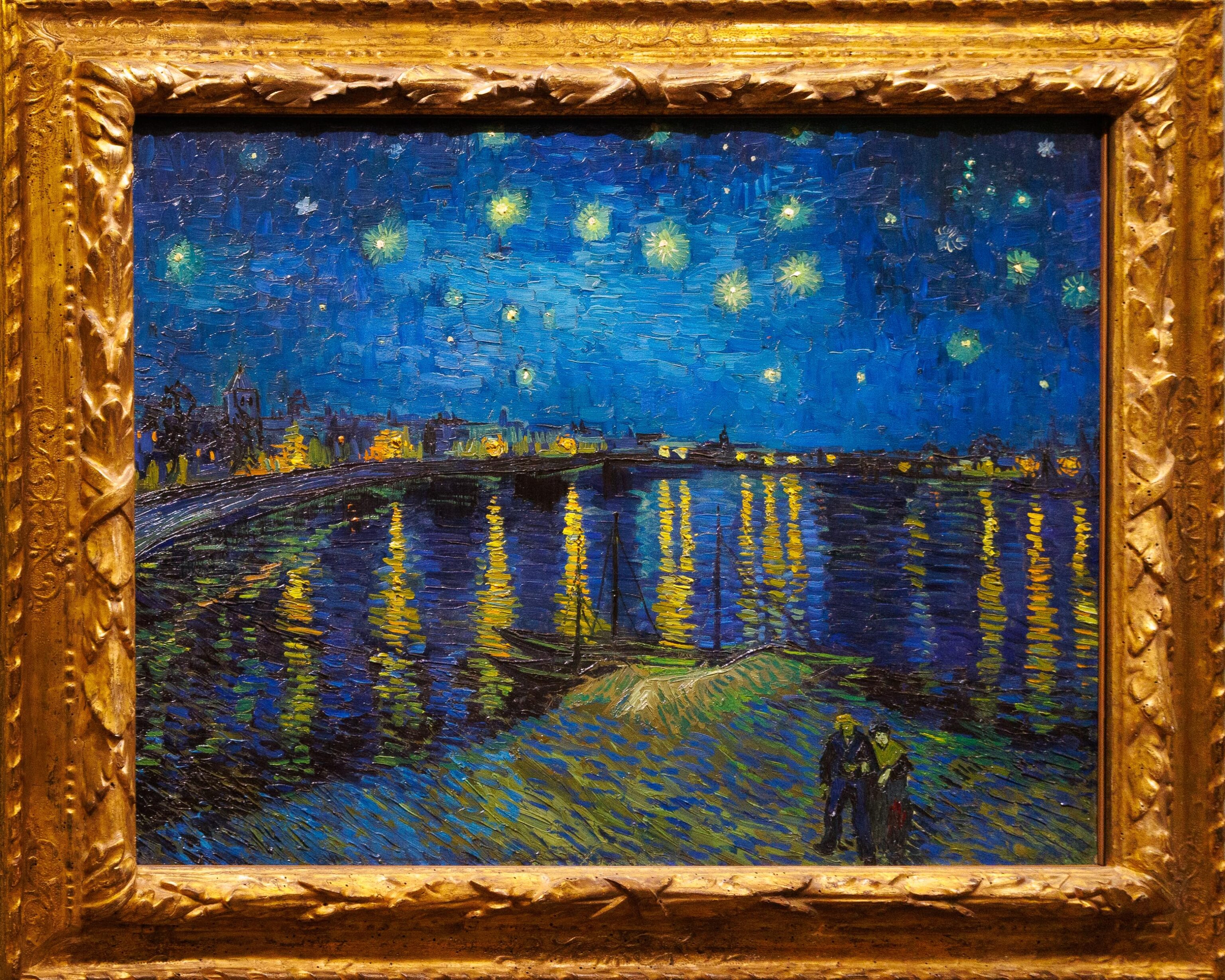
This is quite a famous painting and actually one of two by Van Gogh with the same title. The museum’s page on this piece explains2:
A few months later, just after being confined to a mental institution, Van Gogh painted another version of the same subject: Starry Night (New York, MoMA), in which the violence of his troubled psyche is fully expressed. Trees are shaped like flames while the sky and stars whirl in a cosmic vision. The Musée d'Orsay’s Starry Night is more serene, an atmosphere reinforced by the presence of a couple of lovers at the bottom of the canvas.
And indeed, The Starry Night (1889) at the MoMA is quite different.
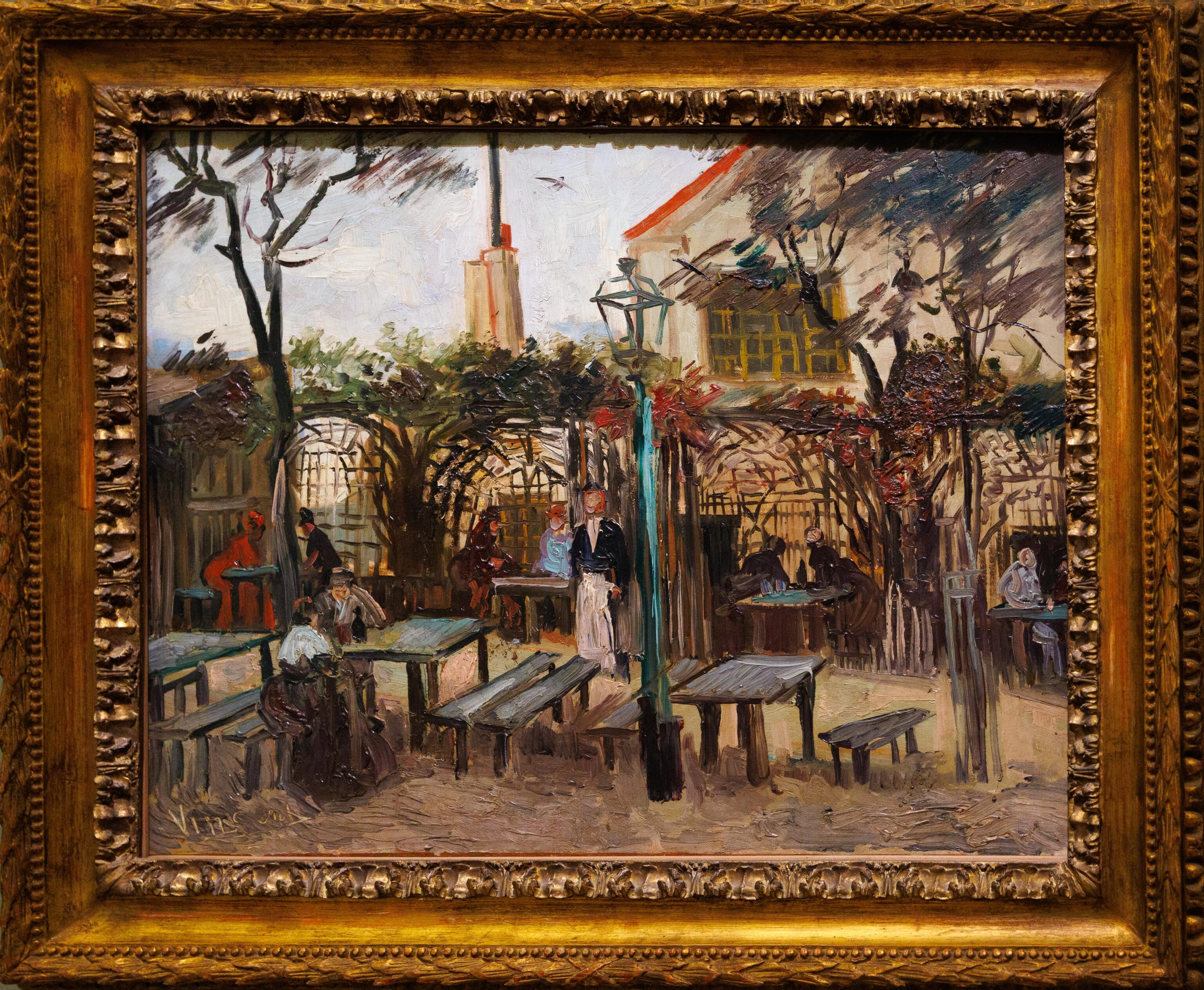
Unfortunately, the museum’s website doesn’t offer any commentary on this piece by Van Gogh. However, Wikipedia does describe what a guinguette is – a type of Parisian tavern. It does seem a bit reminiscent of some modern Parisian dining establishments. And, we were just at Montmartre two days ago!
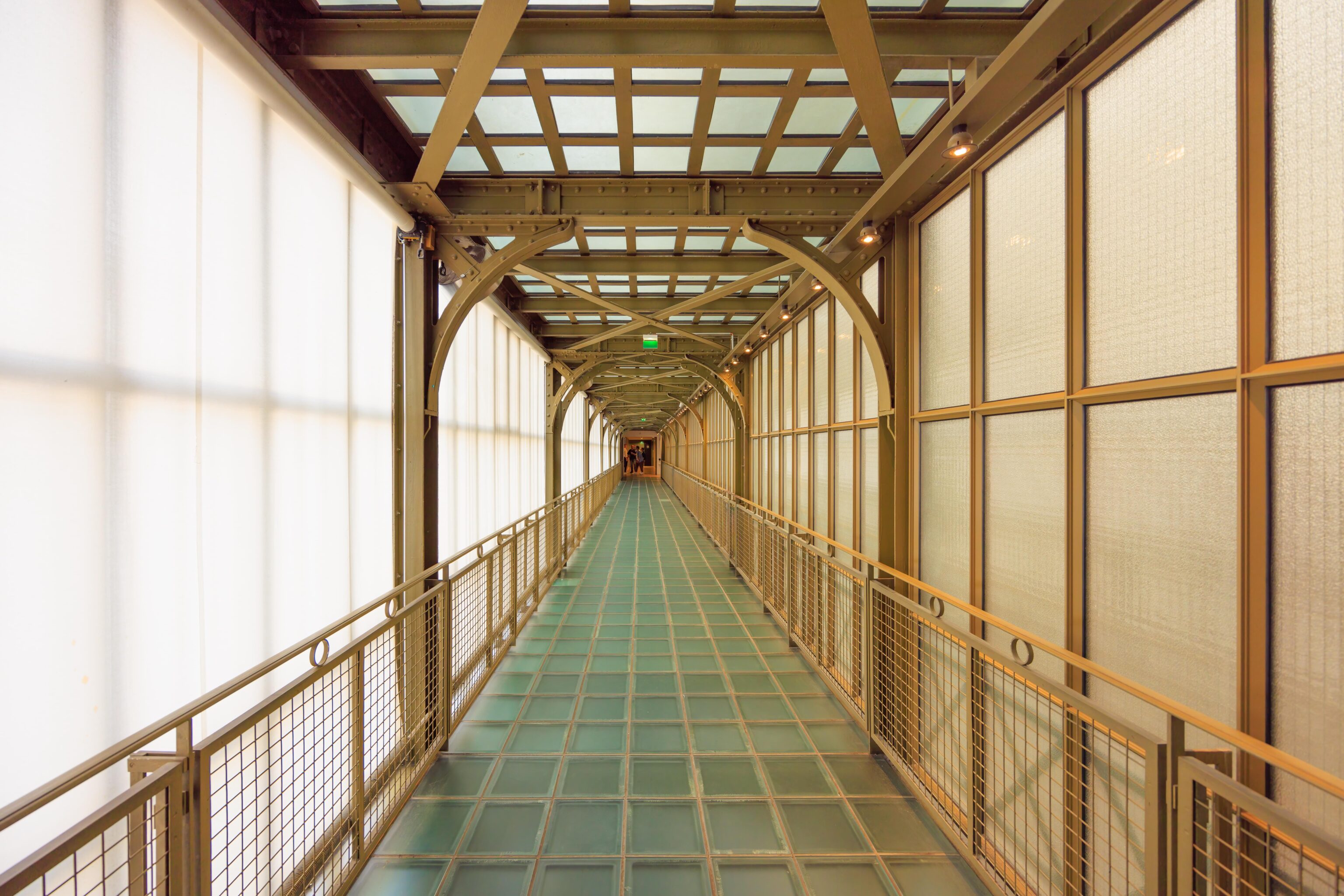
We found ourselves in this passageway that goes from one side of the museum to the other above ground floor atrium.
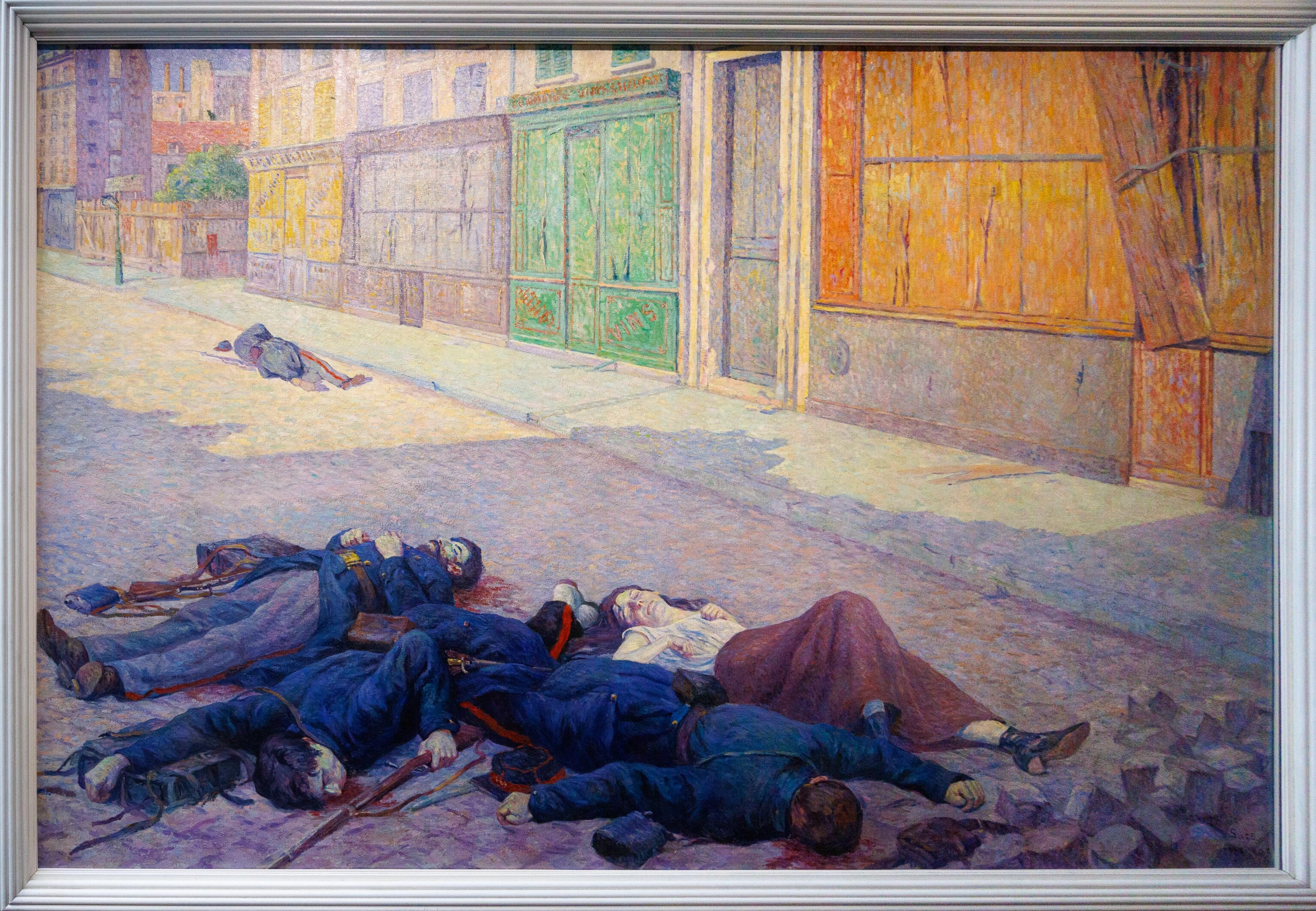
This piece depicts a street in Paris during a seizure of power in Paris by the Paris Commune in 1871. When we saw this piece, we thought it was related to the events in Les Misérables. However, the musical and novel by Victor Hugo relates to the June Rebellion in 1832.
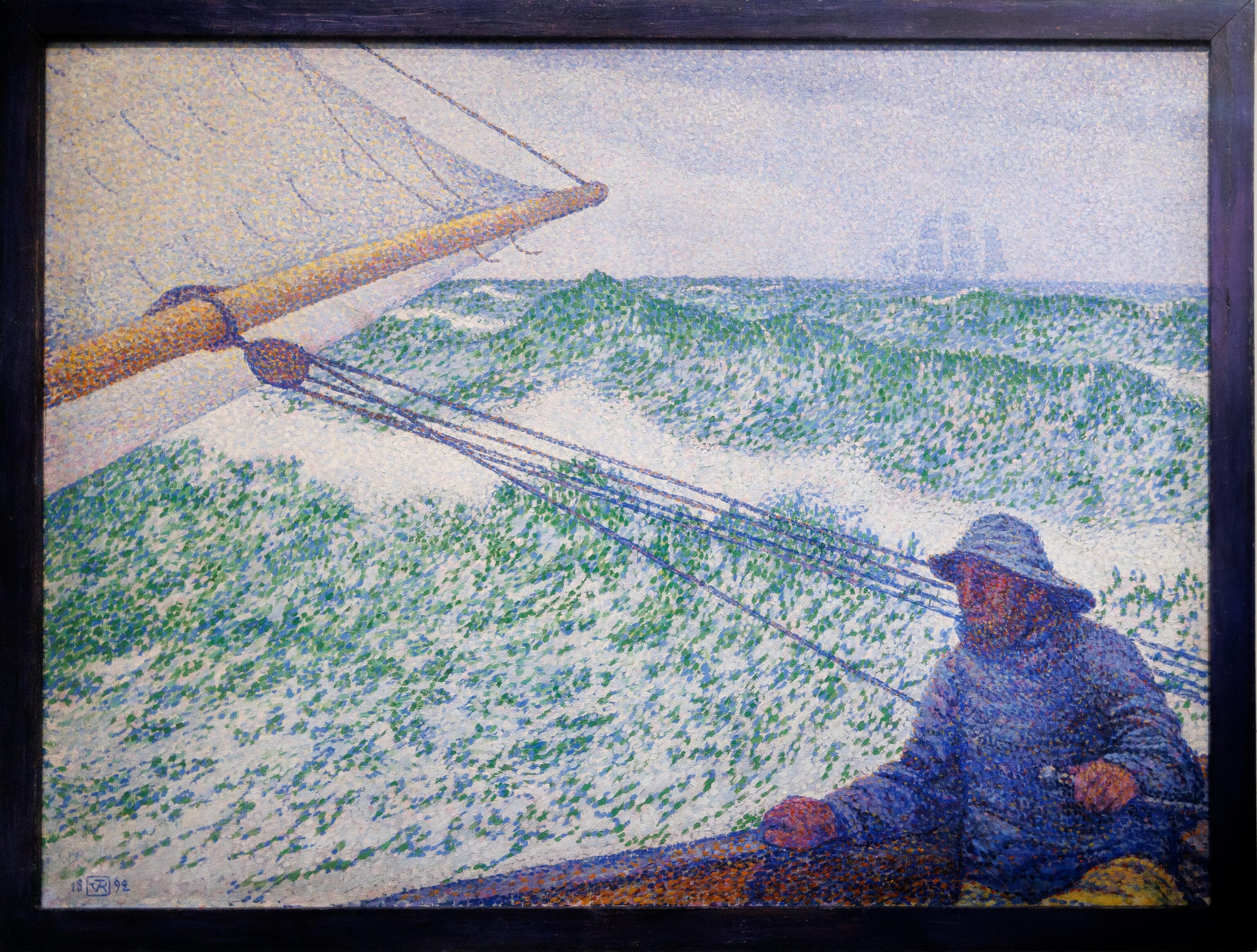
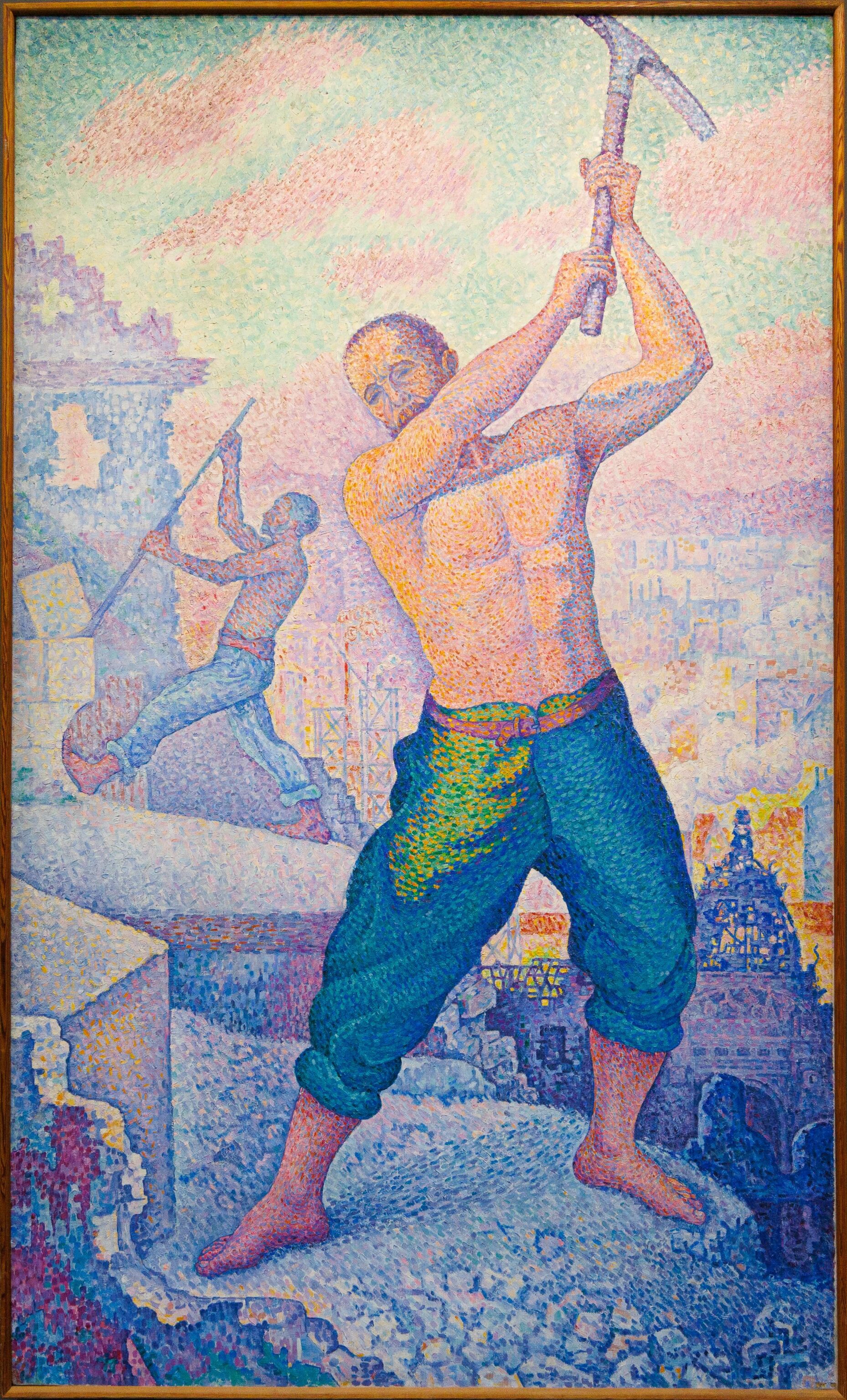
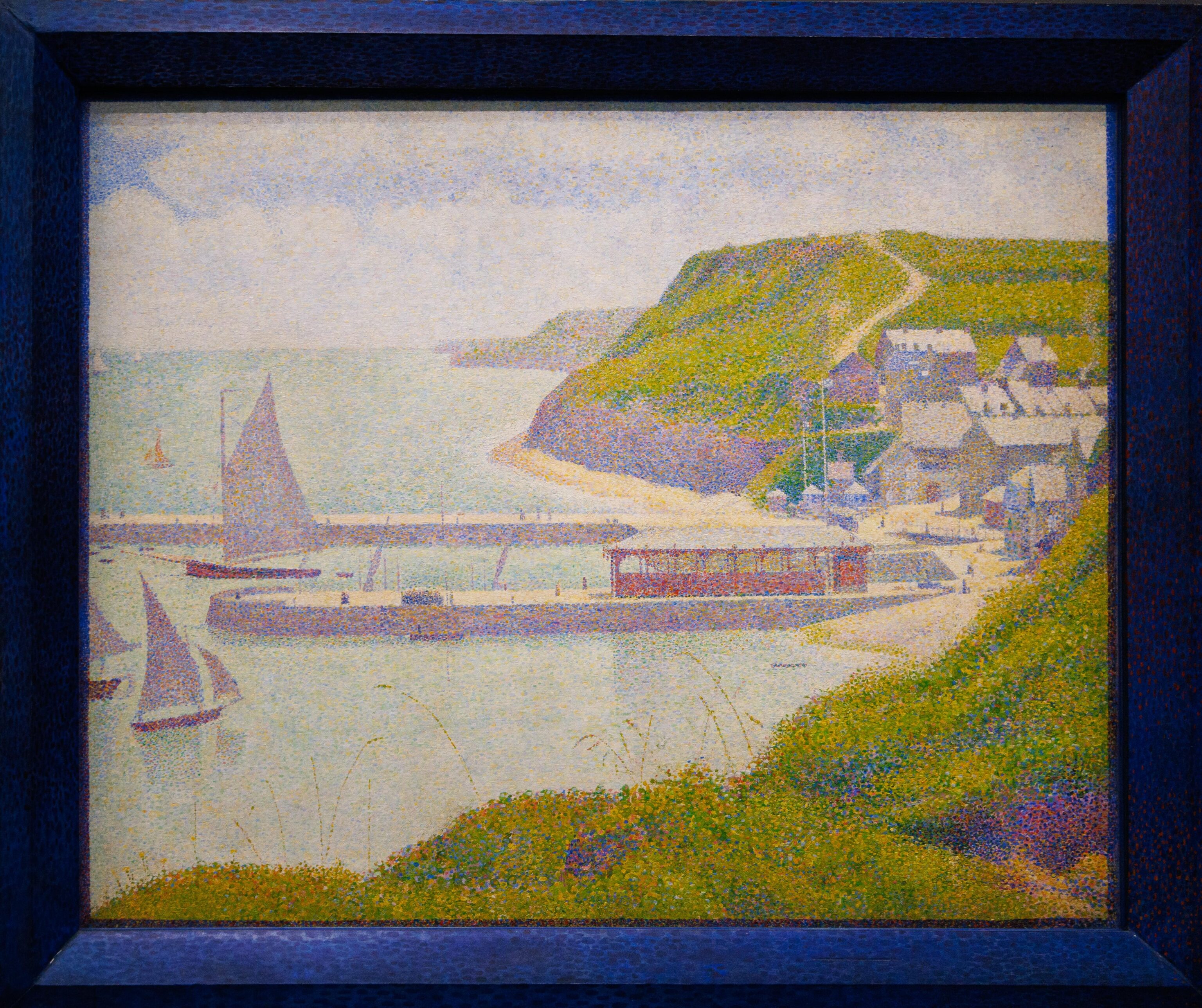
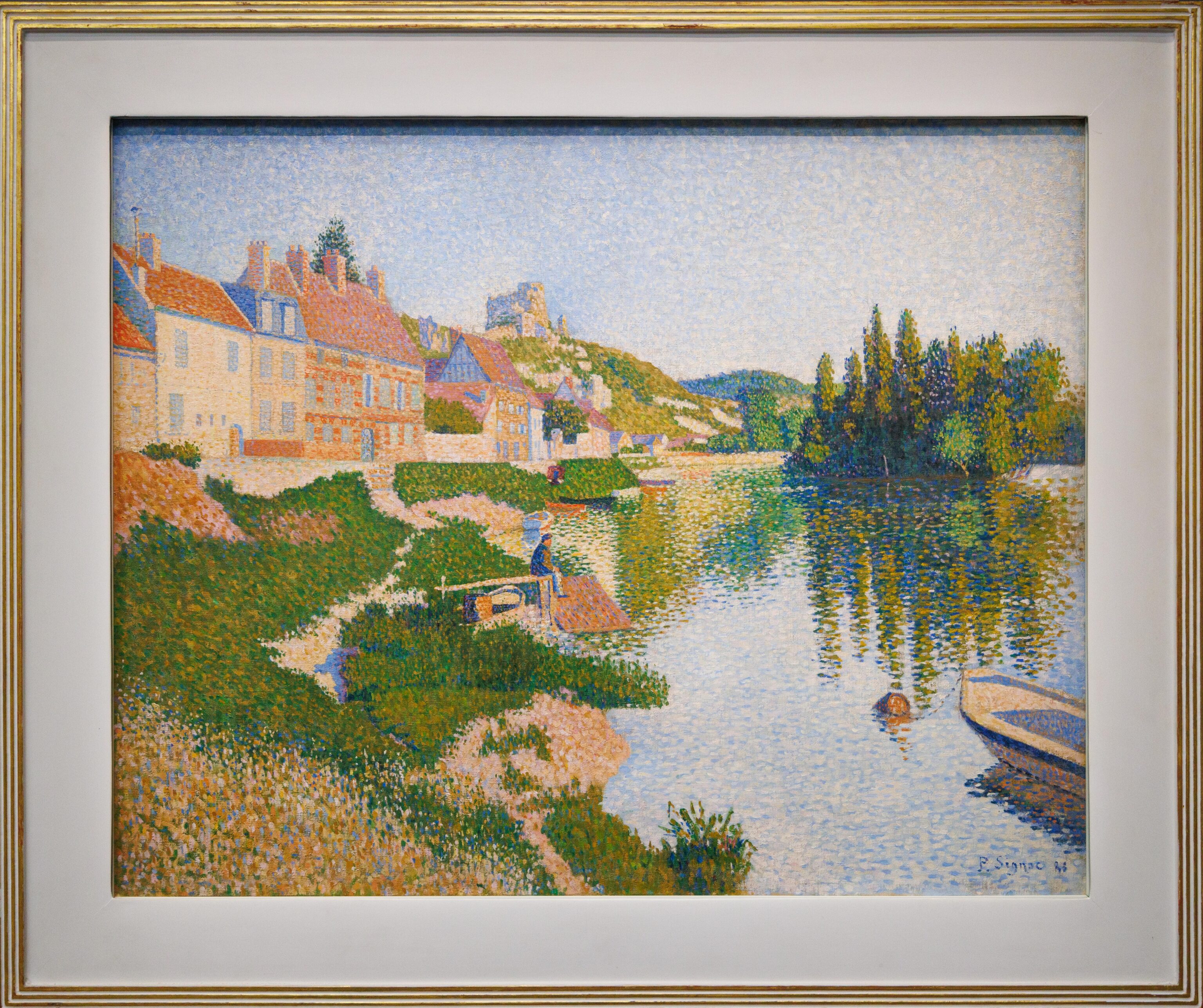
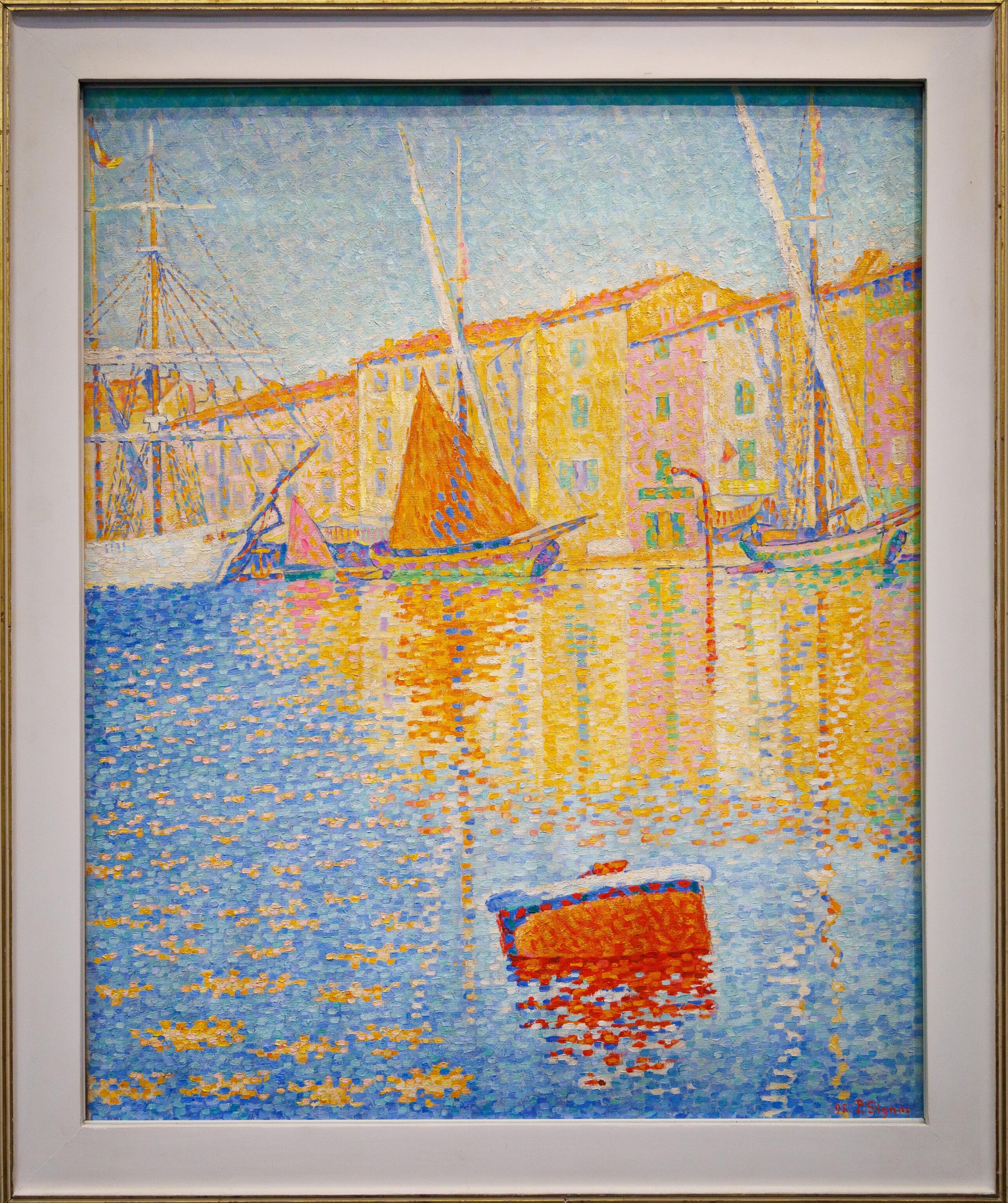
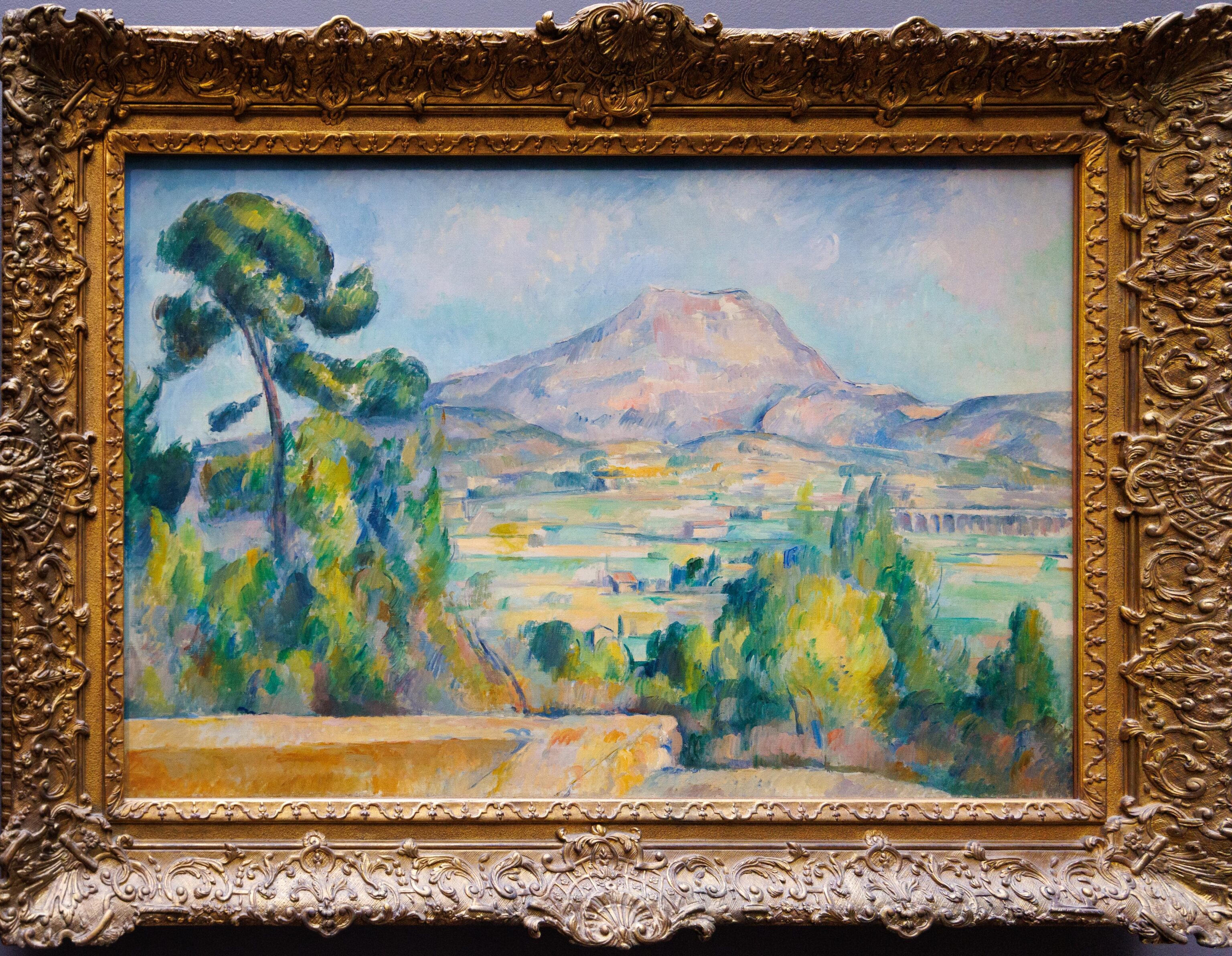
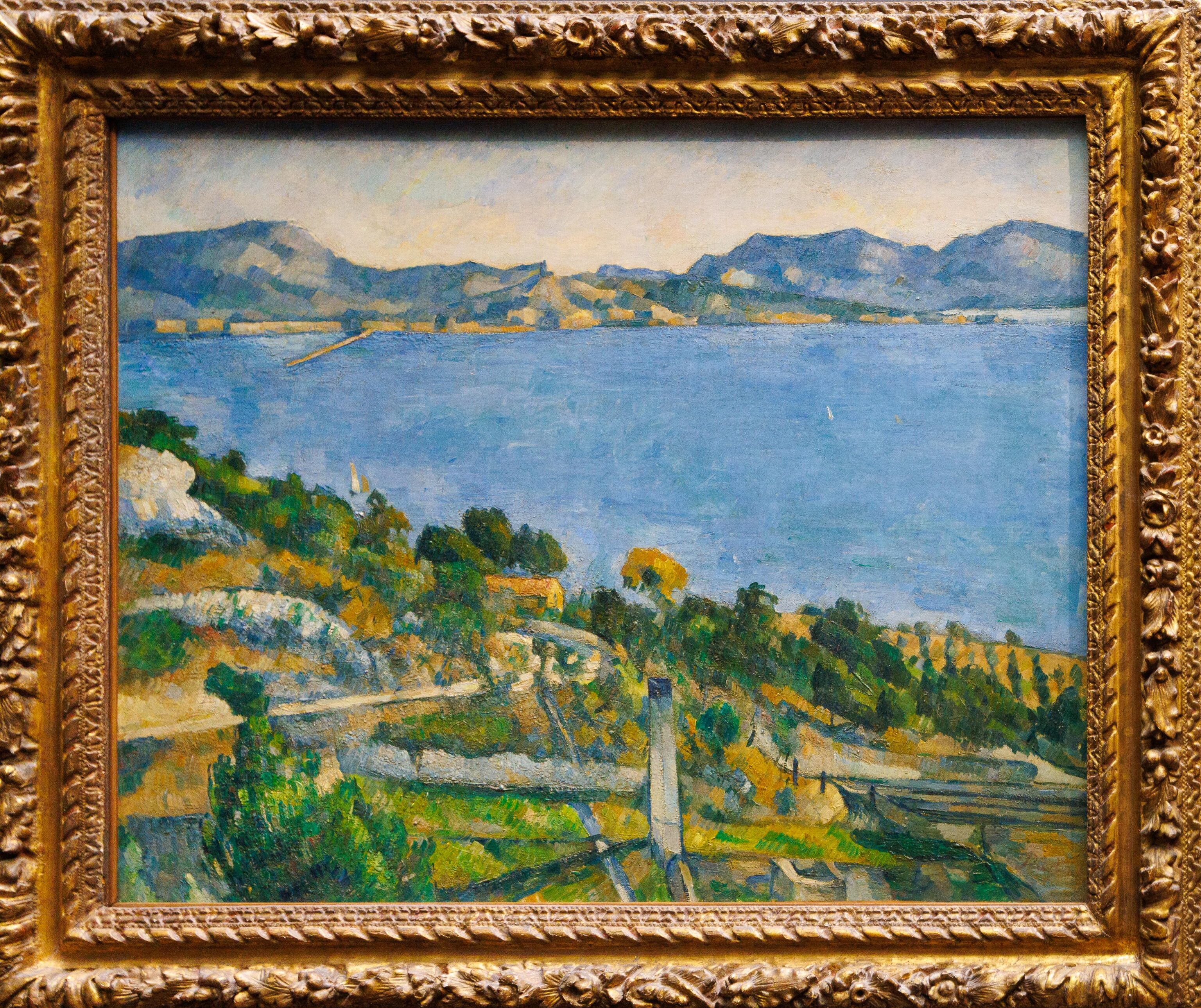
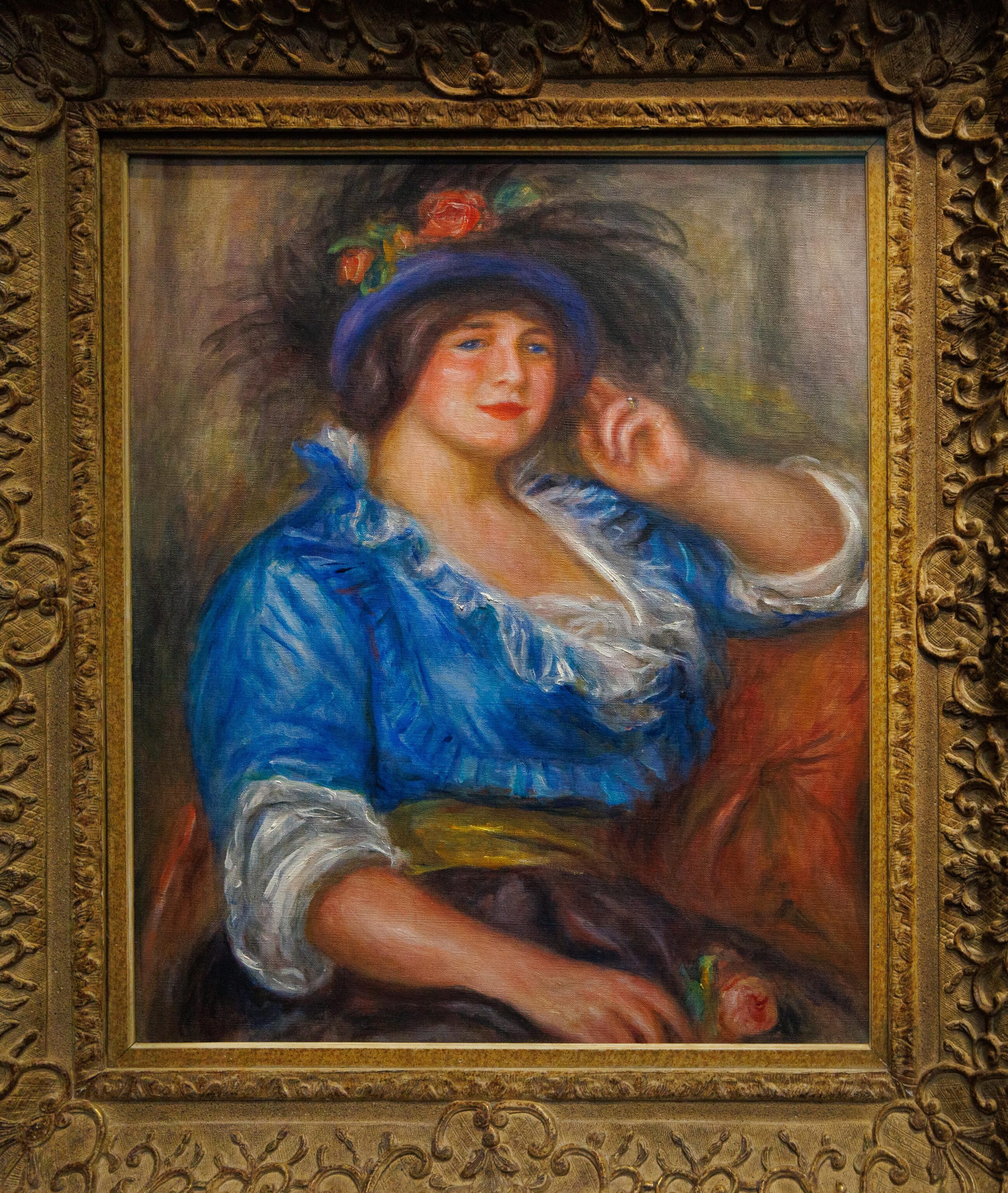
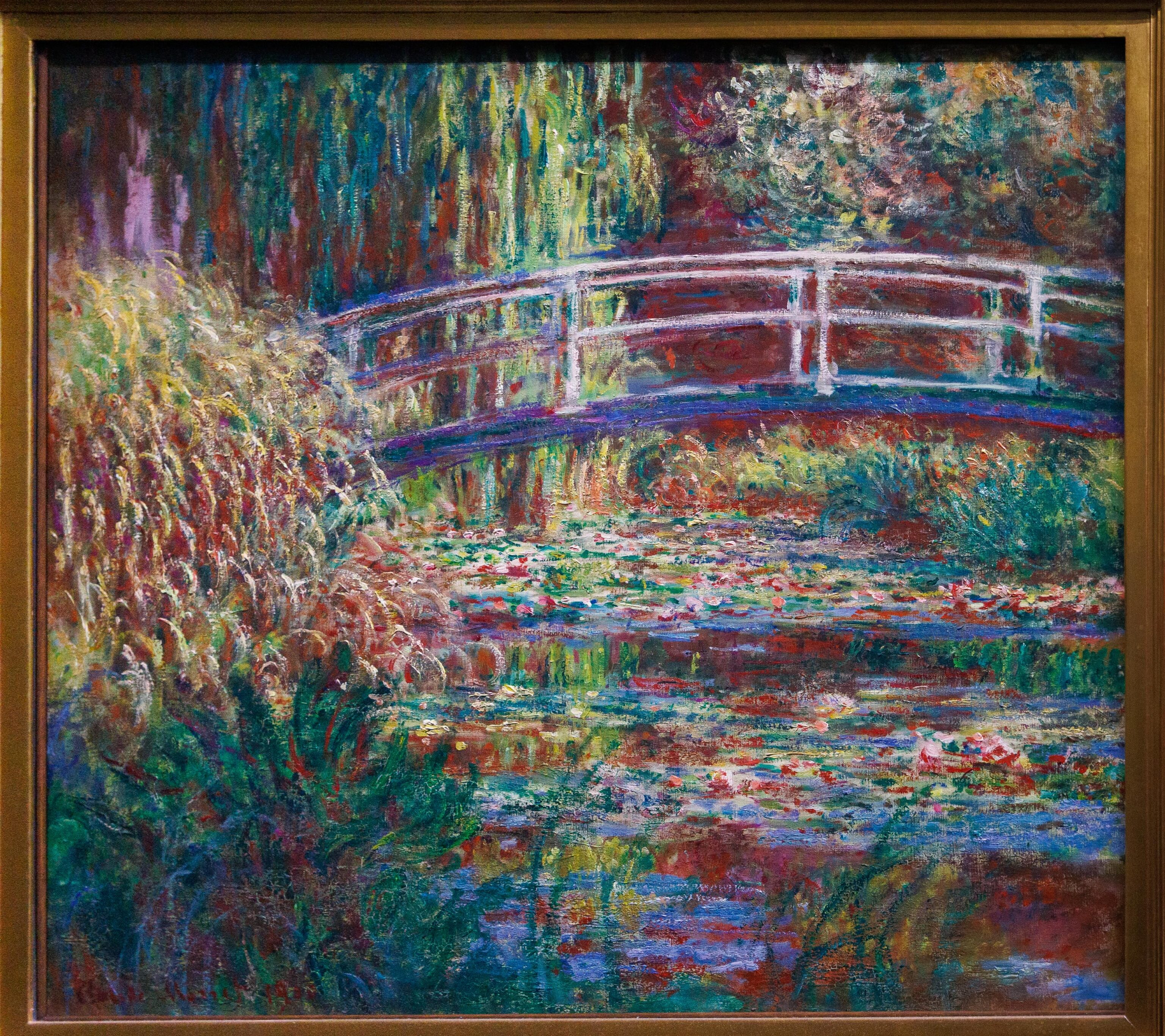
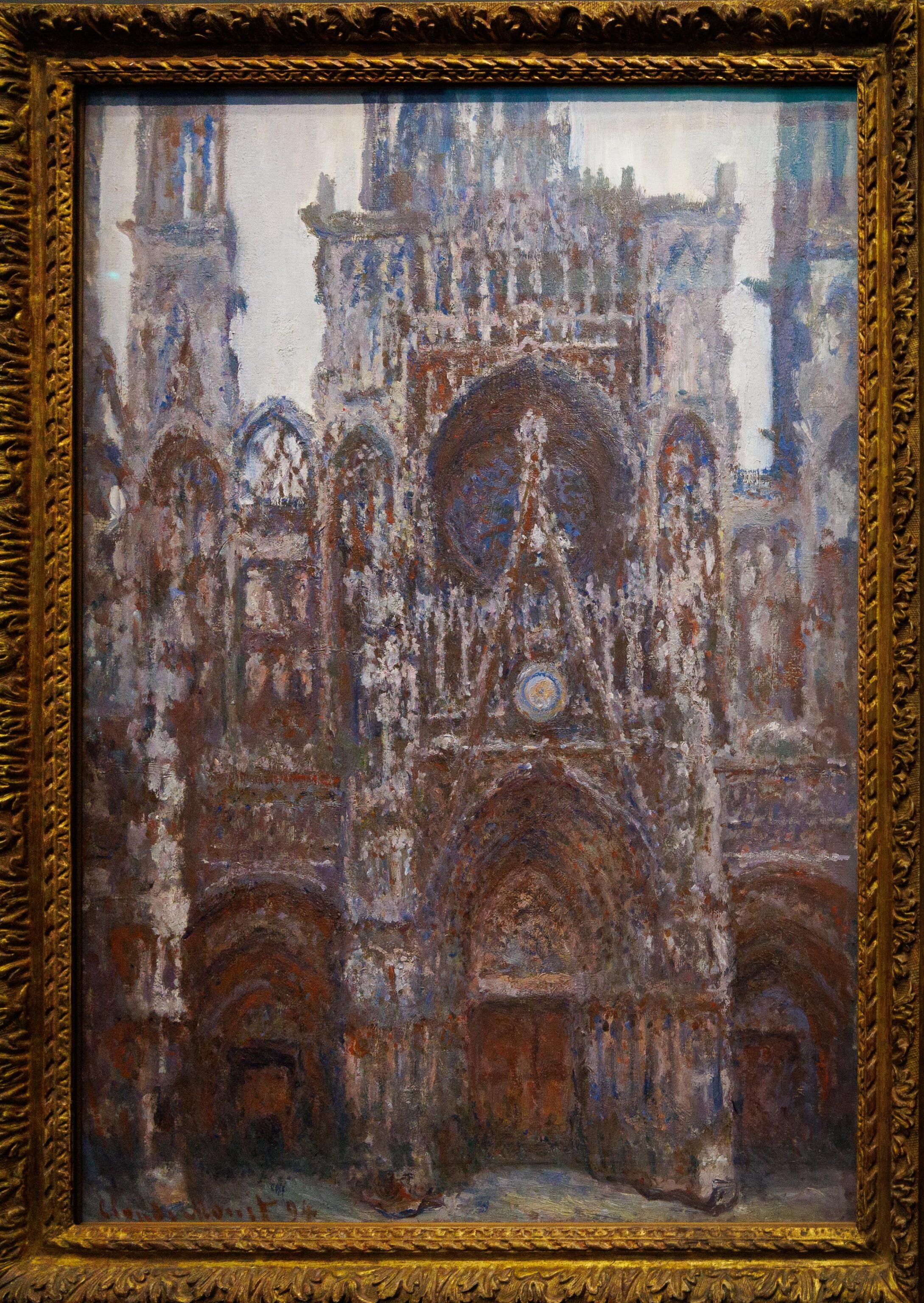
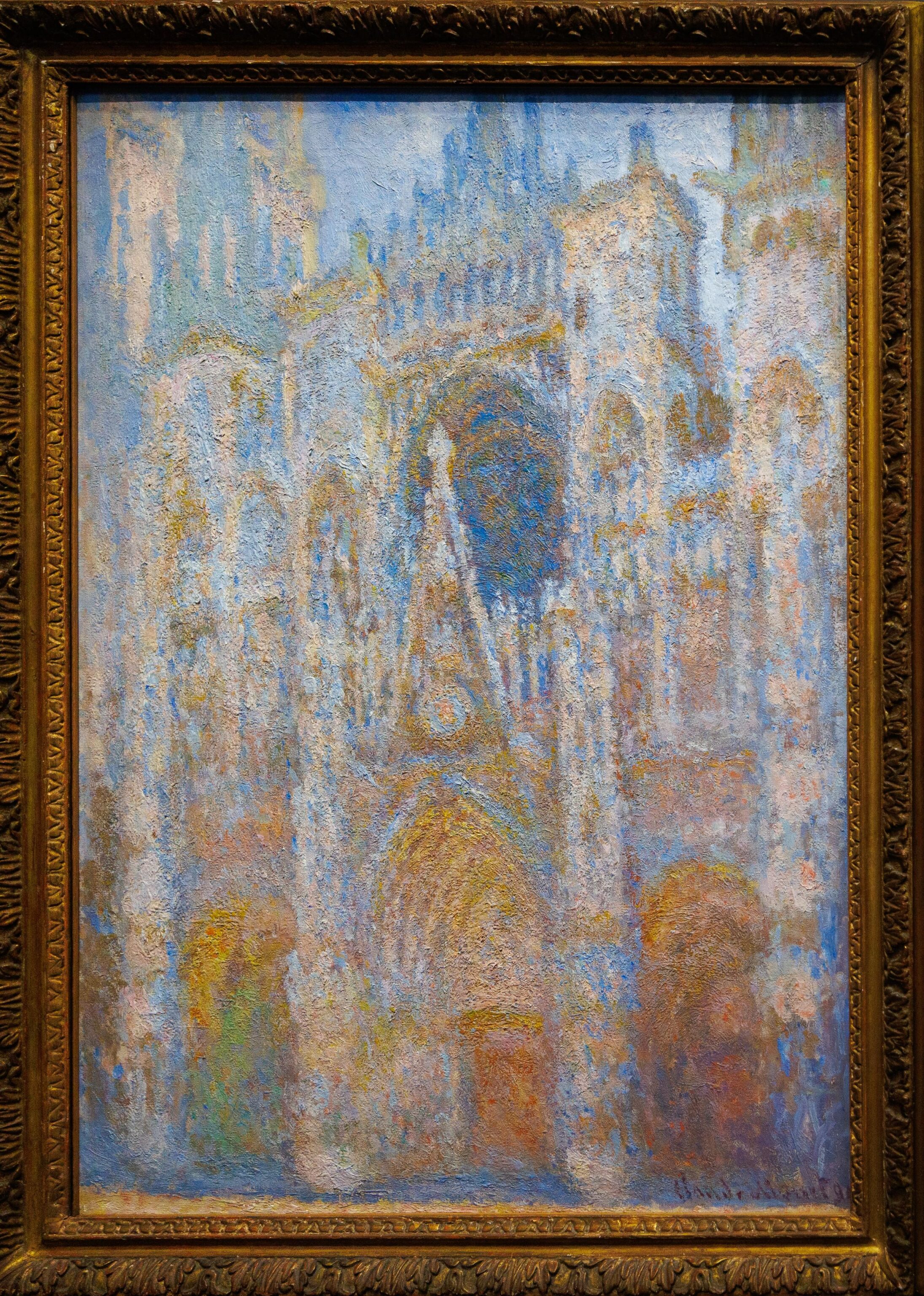
We walked by quite a bit of beautiful artwork of various styles.
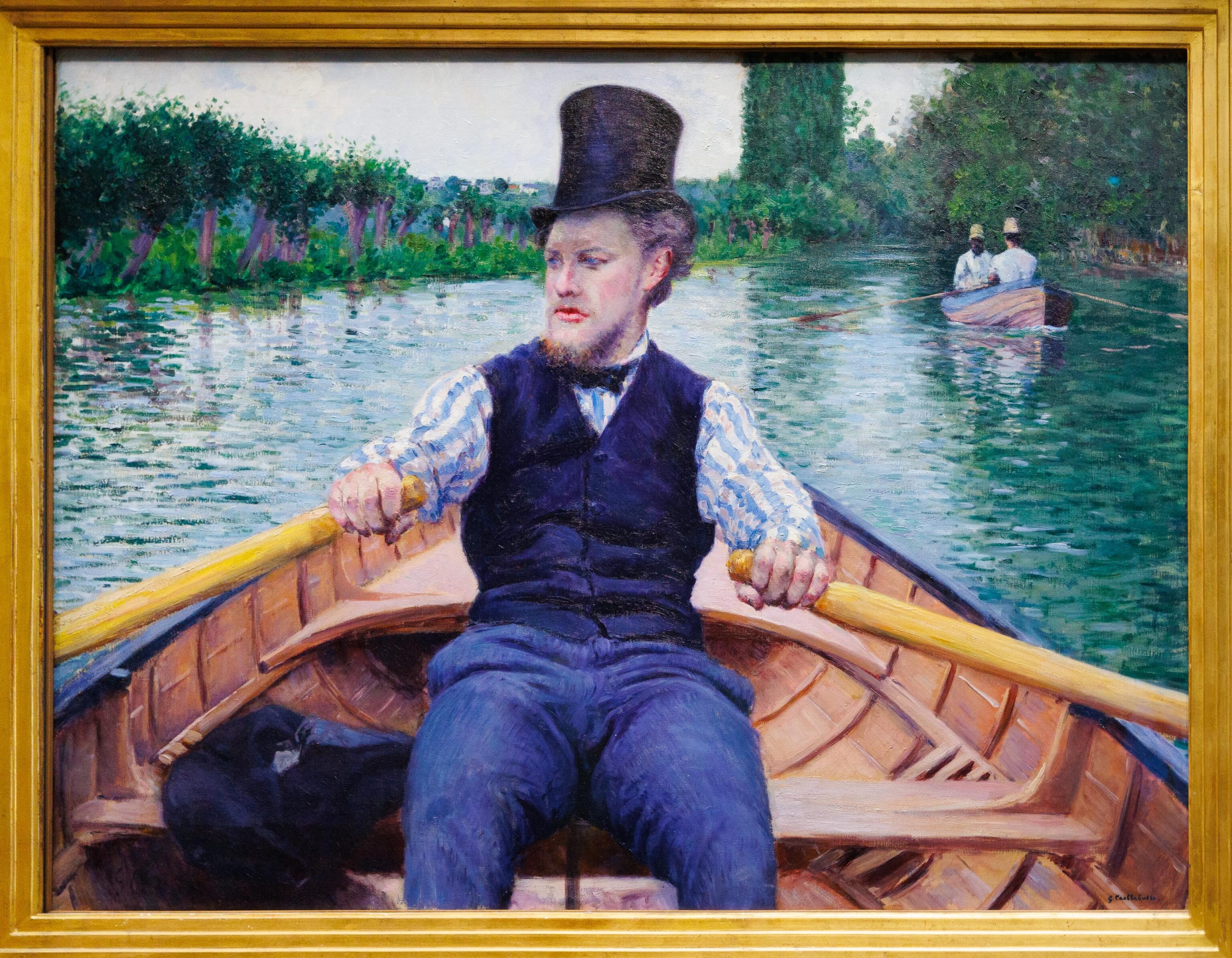
This piece was described as a “national treasure” and was donated by Louis Vuitton’s holding company LVMH. Text next to the painting explains, with a few corrections:
Boating Party by Caillebotte a "national treasure" for the Musée d'Orsay The Boating Party, Gustave Caillebotte's masterpiece hitherto in private hands, was listed as a "national treasure" a few years ago. Thanks to the exceptional sponsorship of LVMH, the painting is now part of the national collection. The artist drew his subject from the new pastimes of the urban middle class, to which he belonged. A man, whose identity is unknown to us, is rowing a boat on the Yerres, the river that flows near the Caillebotte family's holiday home to the southeast of Paris. The composition - centred on this man who is facing us but looking away - radiates an energy, a feeling of self-confidence, but also of loneliness, that are typical of Caillebotte's work. The sketchy brushstrokes and the palette of bluish and purply tones call to mind outdoor painting, to which the artist was increasingly drawn at the time. With its novel immersive composition that situates the viewer in the boat, this work exemplifies Caillebotte's desire to produce genuinely modern art that conveys a fresh outlook the world. The Boating Party is one of the pictures that the painter sent to the Impressionist group's fourth exhibition in 1879. The novelty of the viewpoint, the very commonplace nature of the subject and the predominant use of blue and violet shocked even the most forward-looking critics. At the time, Caillebotte was perceived as the most radical of the movement's proponents.
The description seems to indicate that this painting was considered avant-garde at the time. Today, photographs of a similar composition would be considered pretty standard!
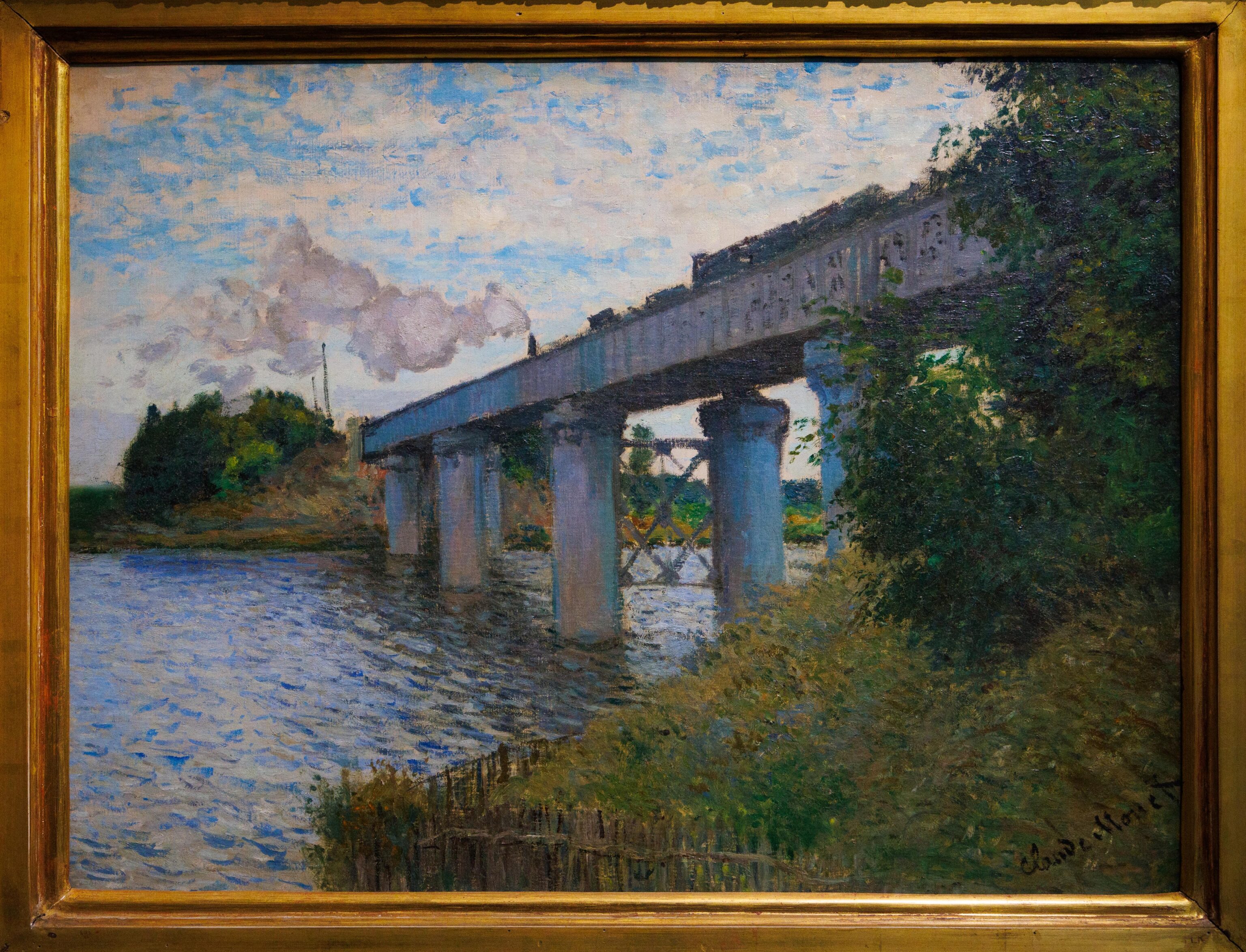
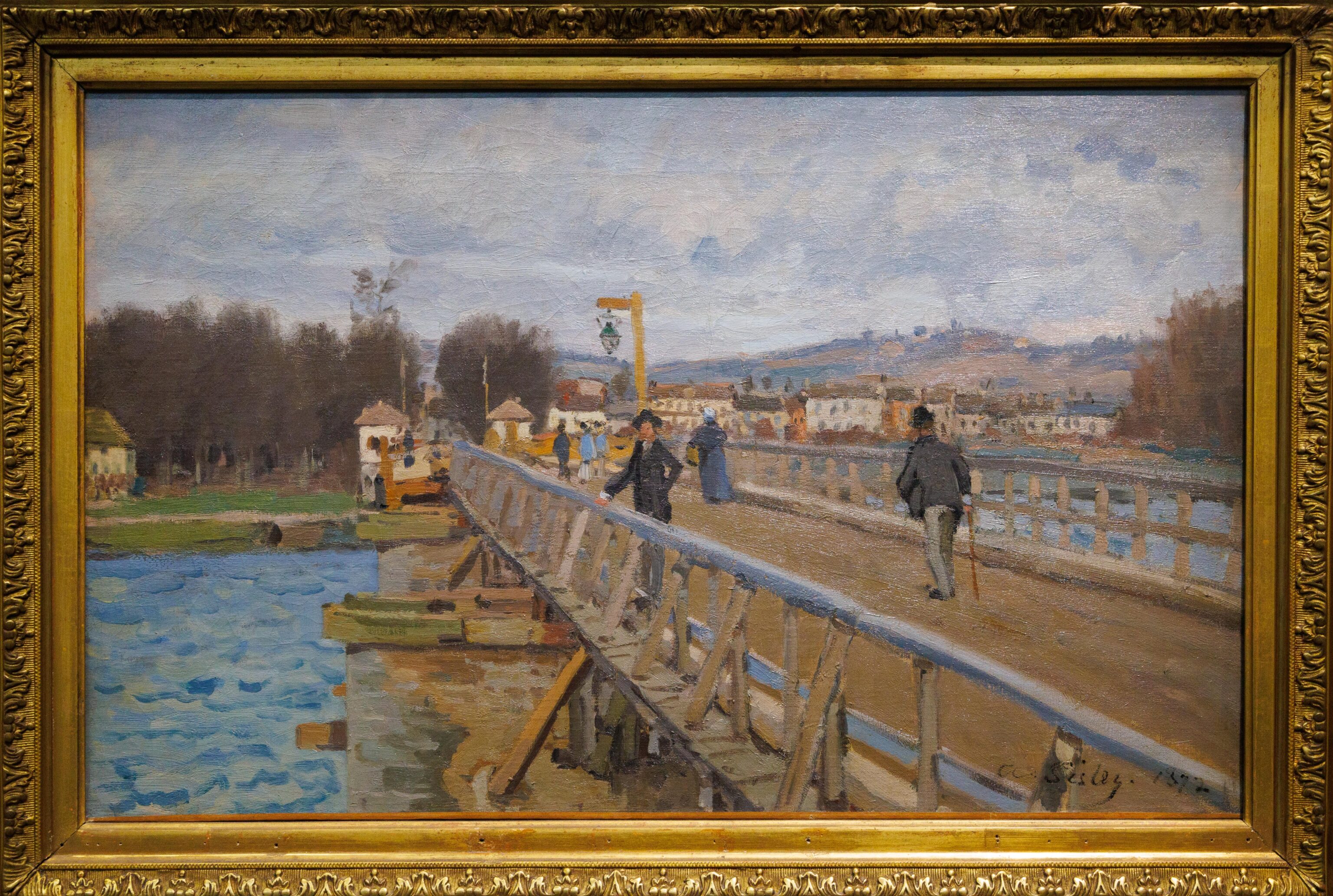
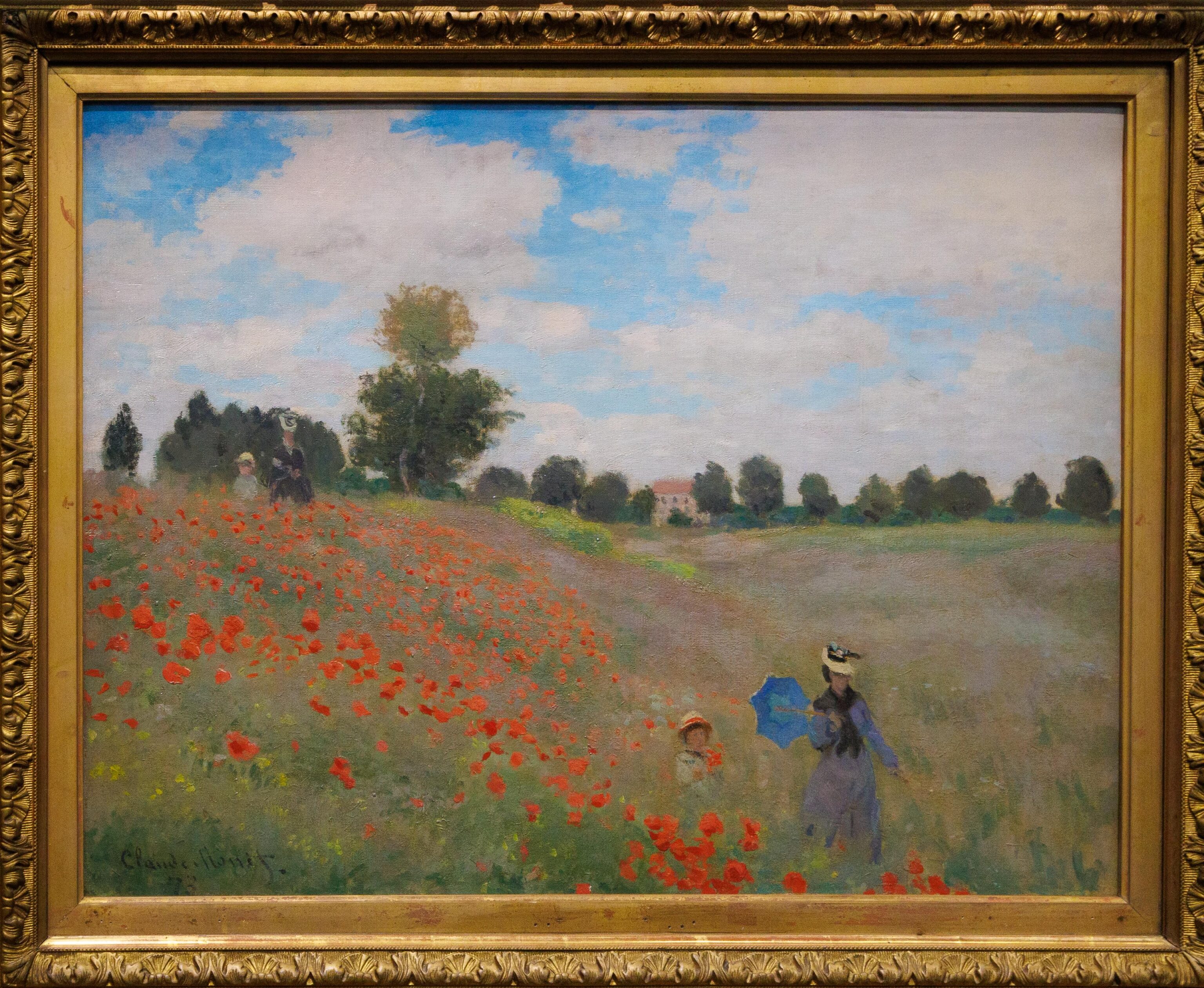
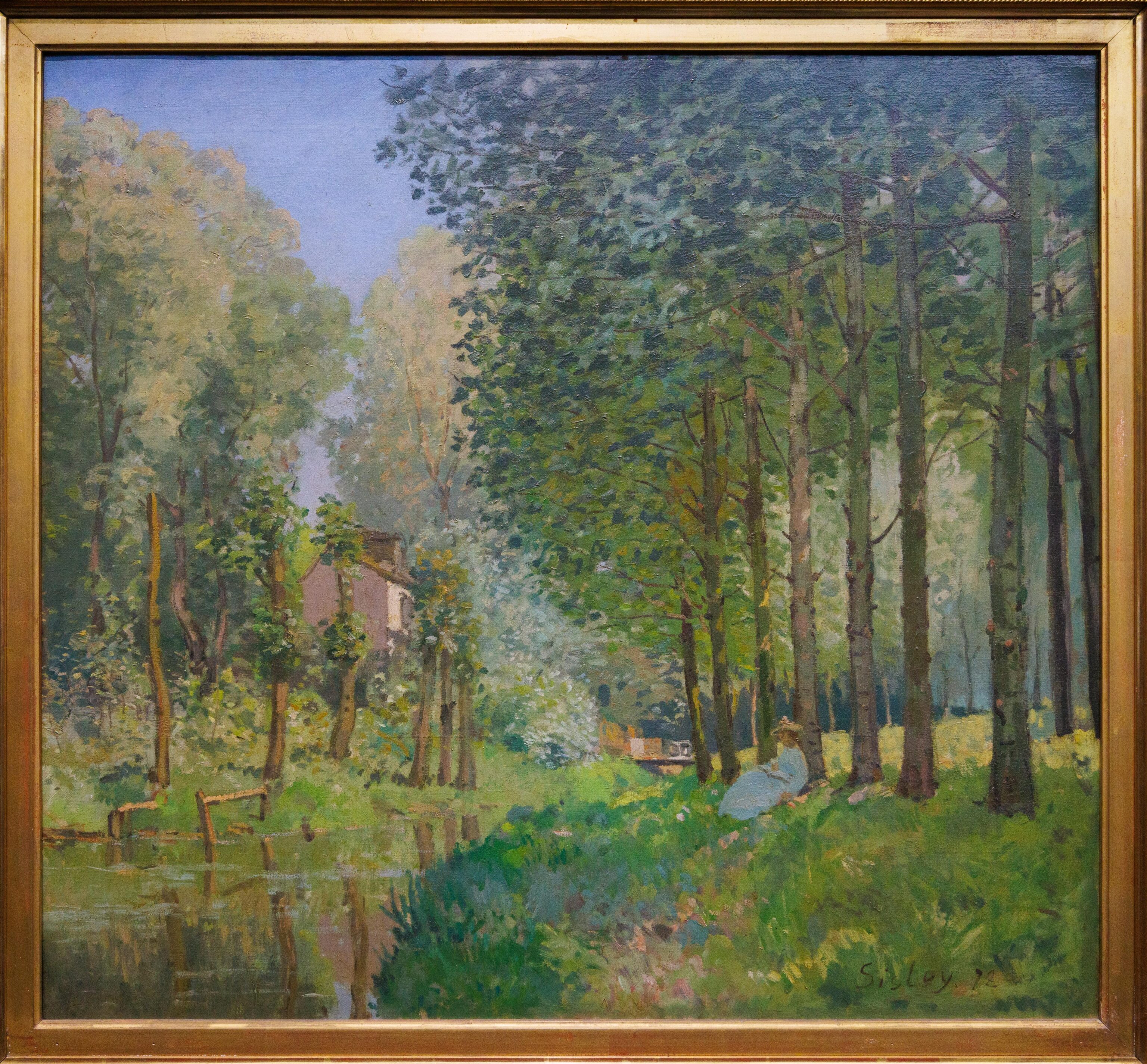
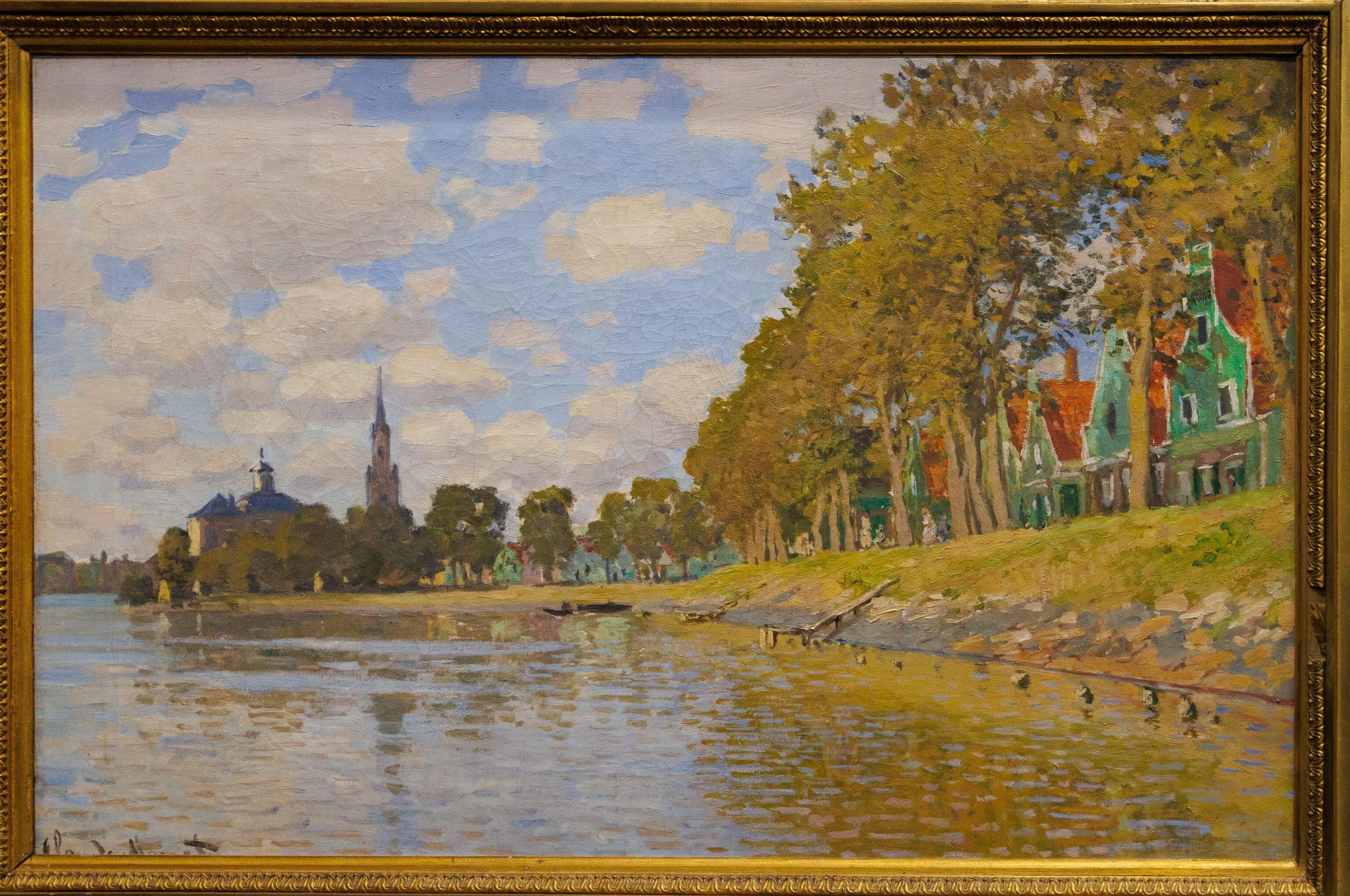
We continued on until we reached the end of the hall.
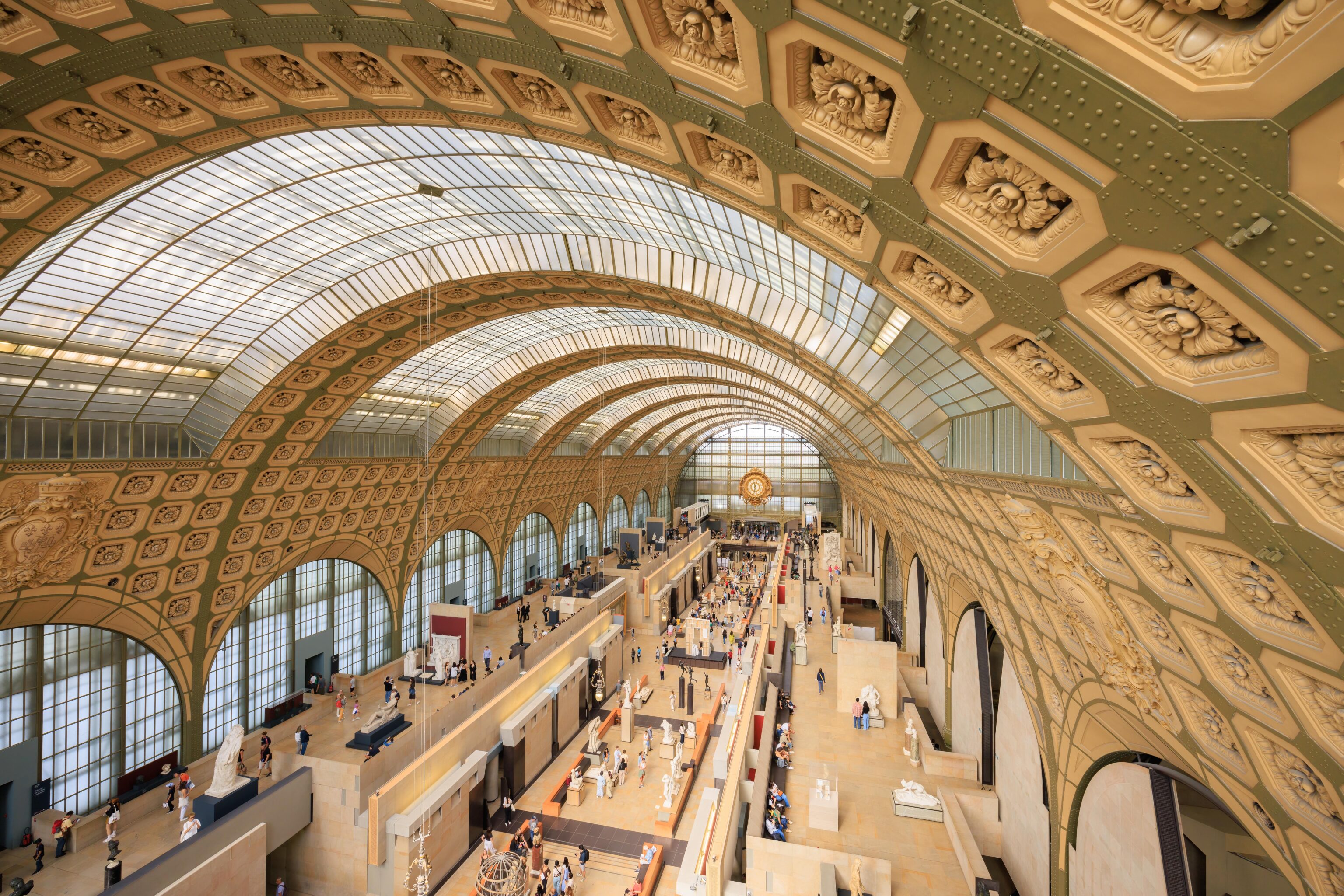
There was a nice overlook of sorts here on the 5th floor.
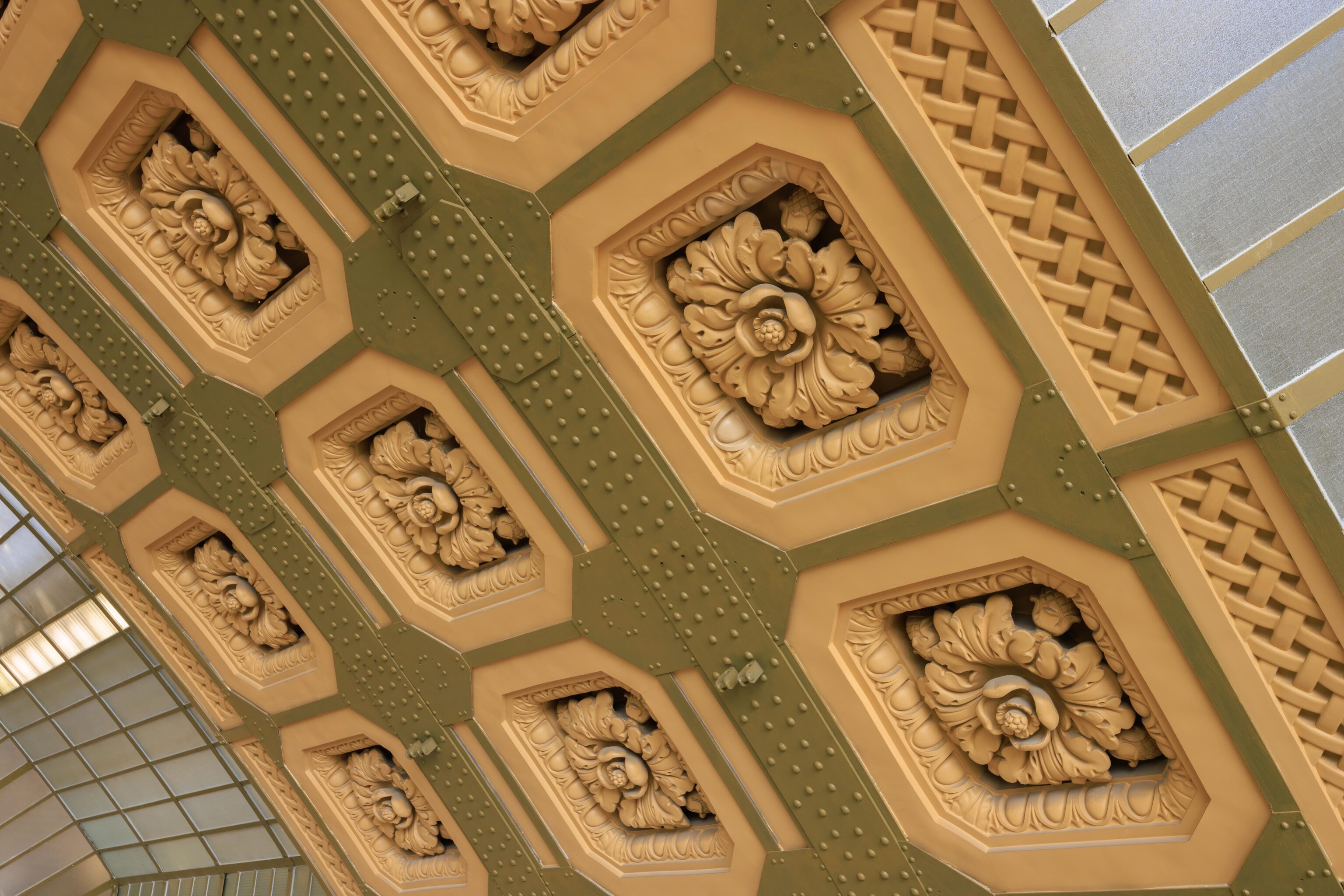
A closer look at the sculpted flowers that cover the ceiling.
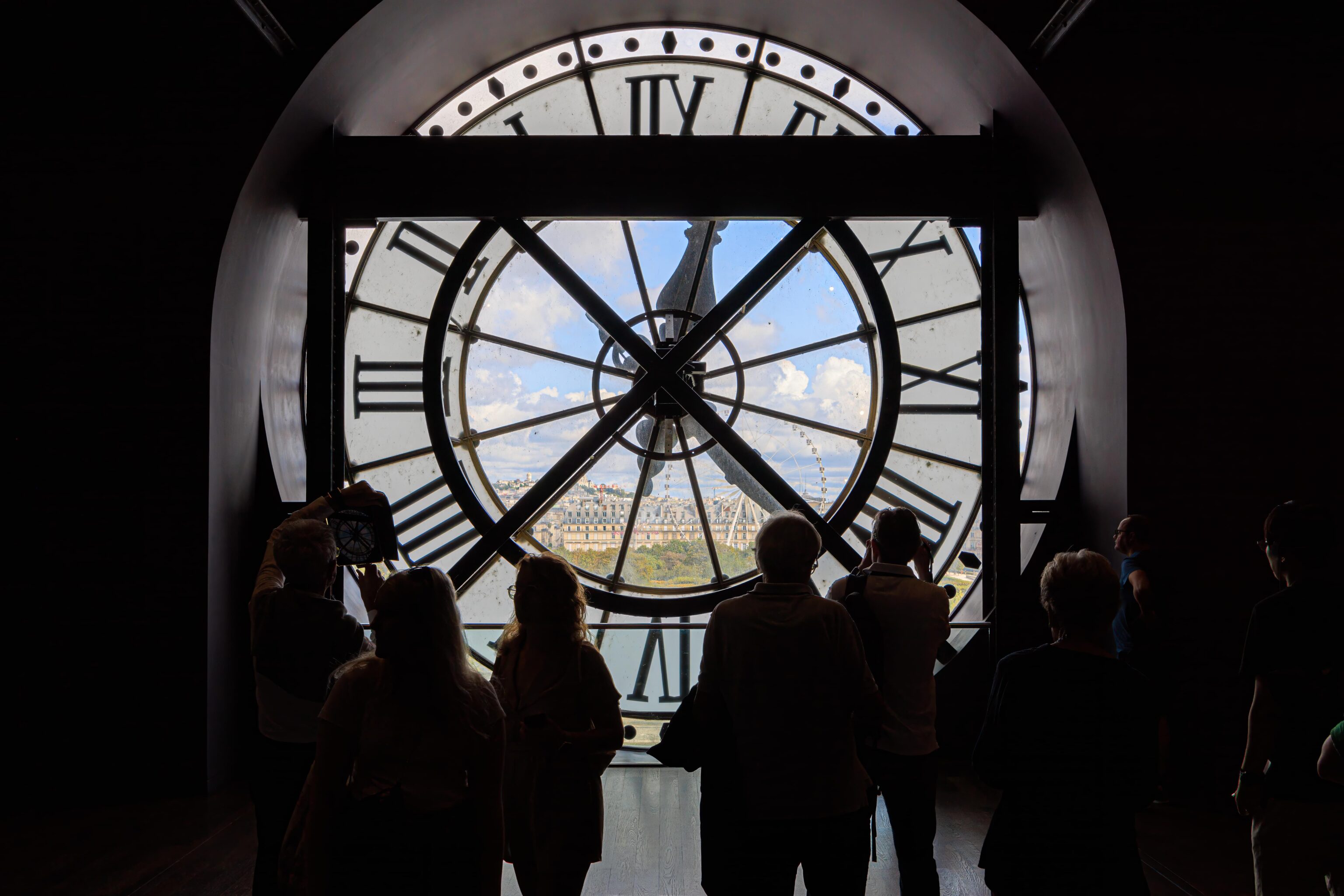
There are two large clocks that face the Seine. One is in a restaurant area while the other is in a mostly empty room.
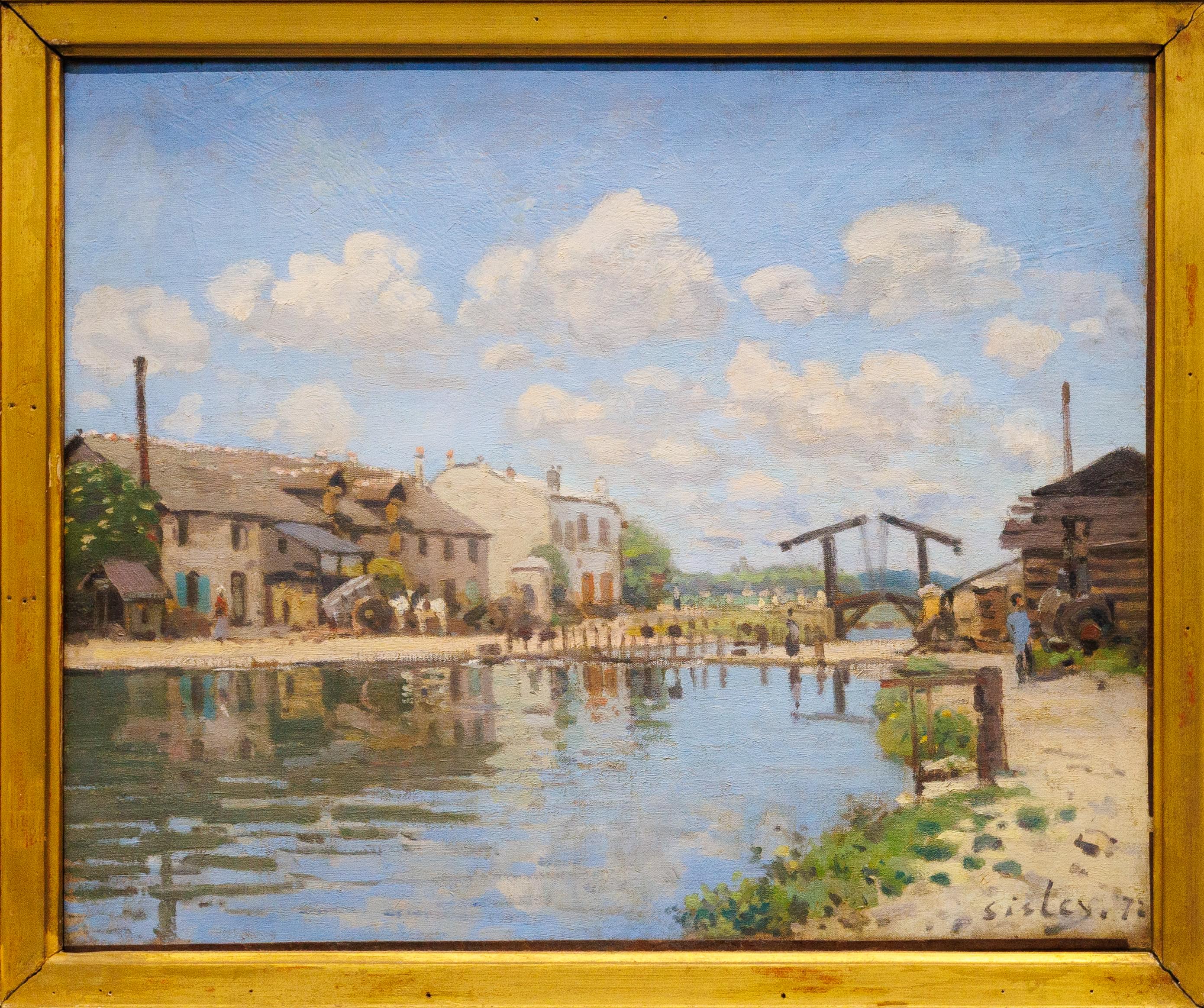
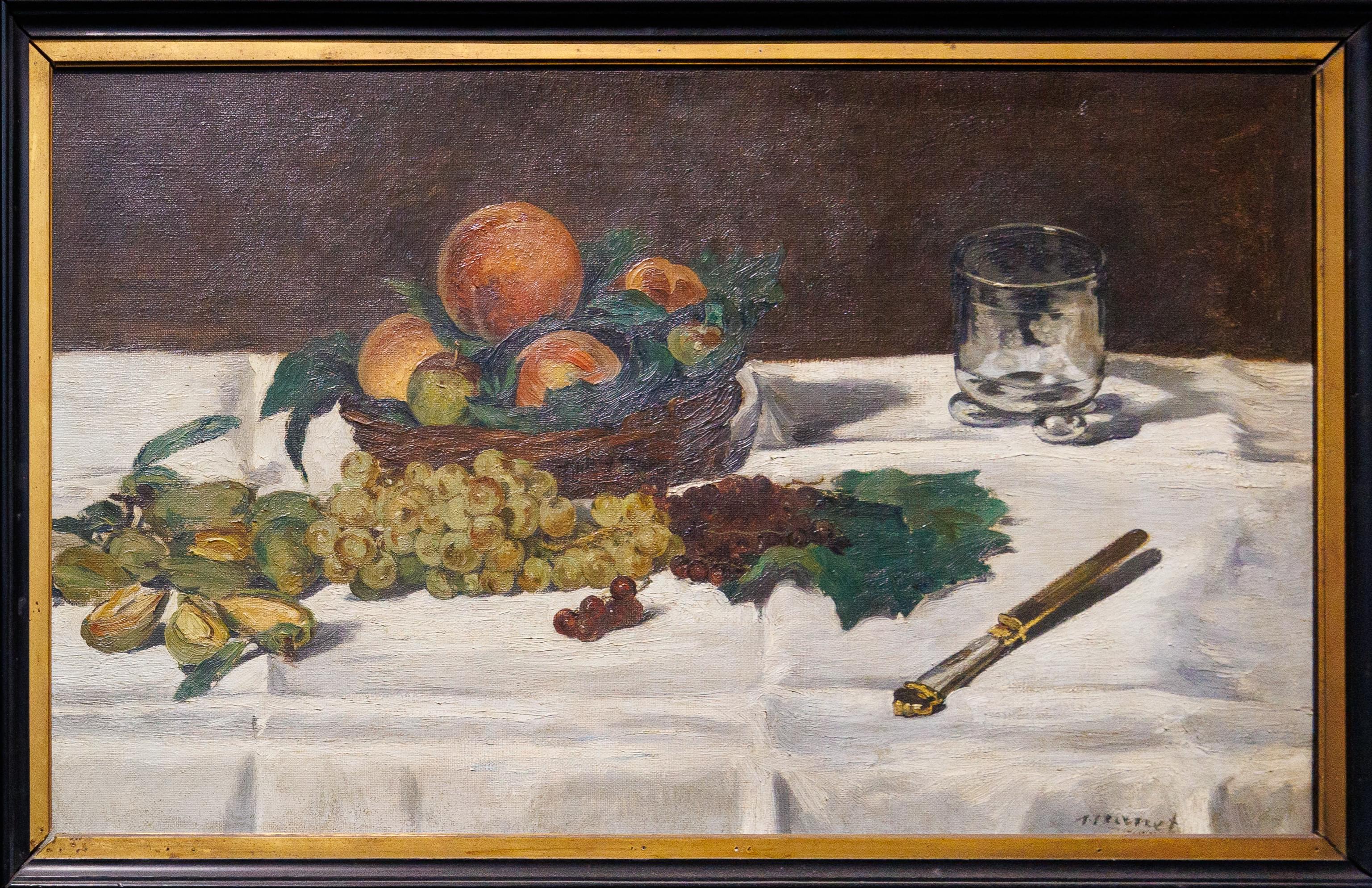
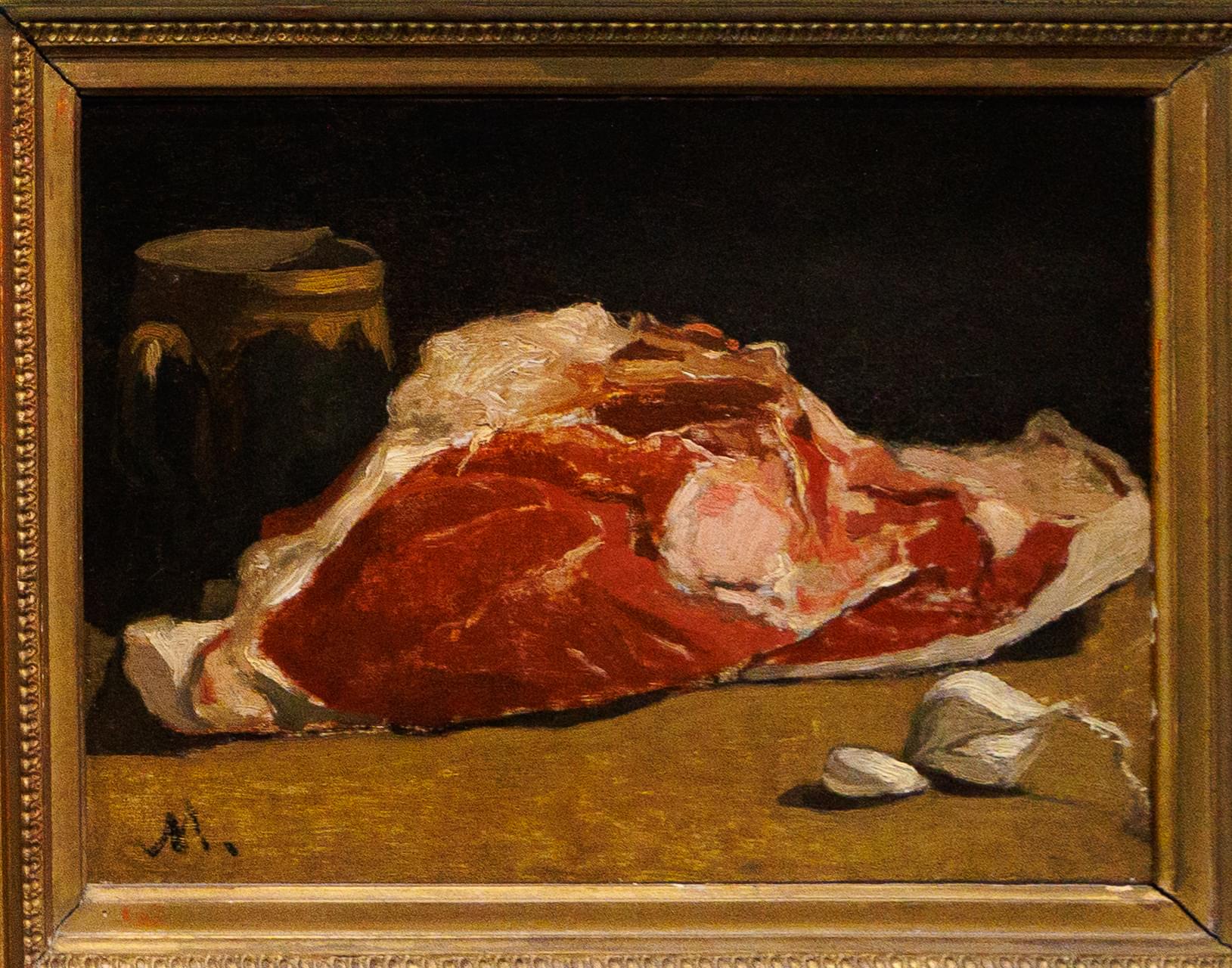
We walked around the 5th floor a bit more.
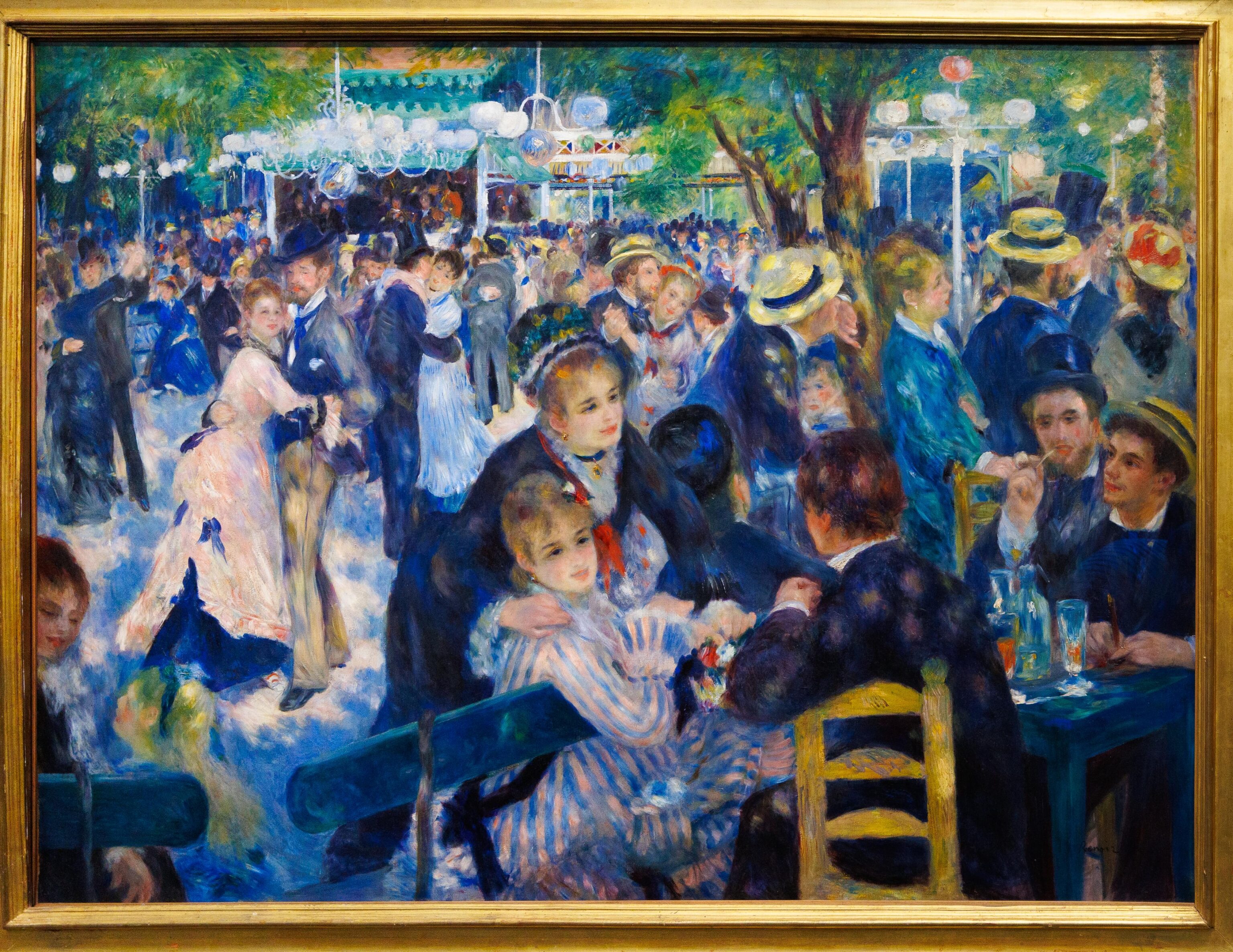
This work is considered to be Renoir’s most important and is described by the museum3:
This painting is doubtless Renoir's most important work of the mid 1870's and was shown at the Impressionist exhibition in 1877. Though some of his friends appear in the picture, Renoir's main aim was to convey the vivacious and joyful atmosphere of this popular dance garden on the Butte Montmartre. The study of the moving crowd, bathed in natural and artificial light, is handled using vibrant, brightly coloured brushstrokes. The somewhat blurred impression of the scene prompted negative reactions from contemporary critics. This portrayal of popular Parisian life, with its innovative style and imposing format, a sign of Renoir's artistic ambition, is one of the masterpieces of early Impressionism.
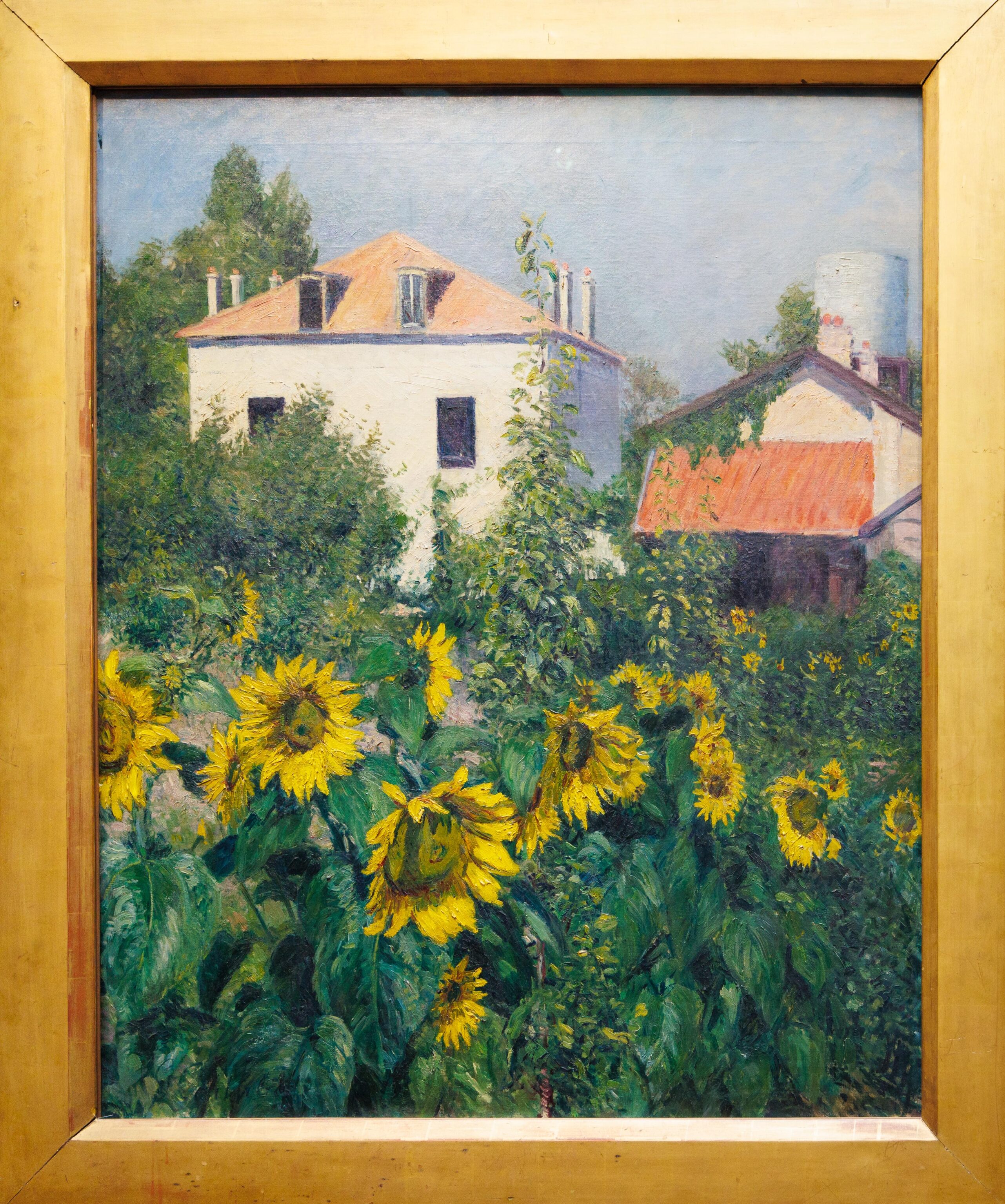
This painting has a lengthy description on the wall. It reads:
A new acquisition in lieu for the Musée d'Orsay: Sunflowers. Garden at Petit Gennevilliers by Gustave Caillebotte This painting by Caillebotte is entering the Musée d'Orsay's collections as an acquisition in lieu (a special method of paying tax by surrendering art works or documents of great artistic or historical value). The sheer size of this view of Caillebotte's garden makes it one of the artist's most ambitious paintings. It plays a part in the Impressionists' redefinition of the landscape genre. Gardens are one of Caillebotte's favourite themes, beginning with the park on the family property in Yerres, then, as depicted here, his garden in Petit Gennevilliers, situated about 10 kilometres north of Paris. Like his friend Monet in Giverny, the artist became a veritable "painter/gardener" and both were very taken by the "suns," or large sunflowers grown as a purely ornamental plant at that time. In this very structured composition, the exuberant vegetation is confined to the lower section of the painting and contrasts with the solid geometrical shapes of the architectures. The choice of a vertical format, and the compression of the planes caused by juxtaposing the close and the distant, may have been inspired by Japanese prints and by photography. By abruptly cutting off the flowers and the buildings on the edges of the painting, the painter is also letting us know that this is a mere fragment of a reality that extends beyond the frame. Caillebotte seems to be in agreement with Emile Zola's statement that "art is a corner of creation seen through a temperament."
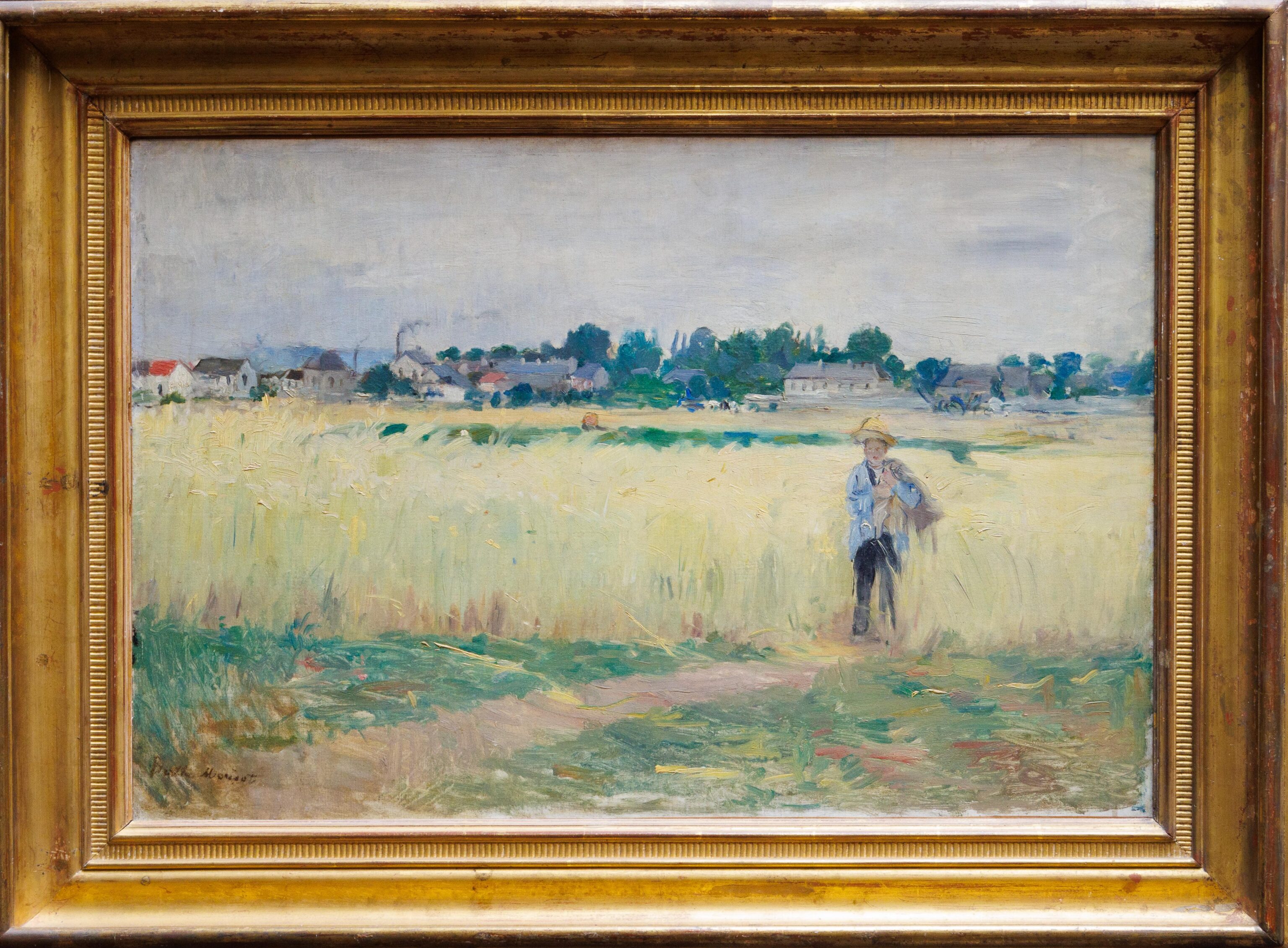
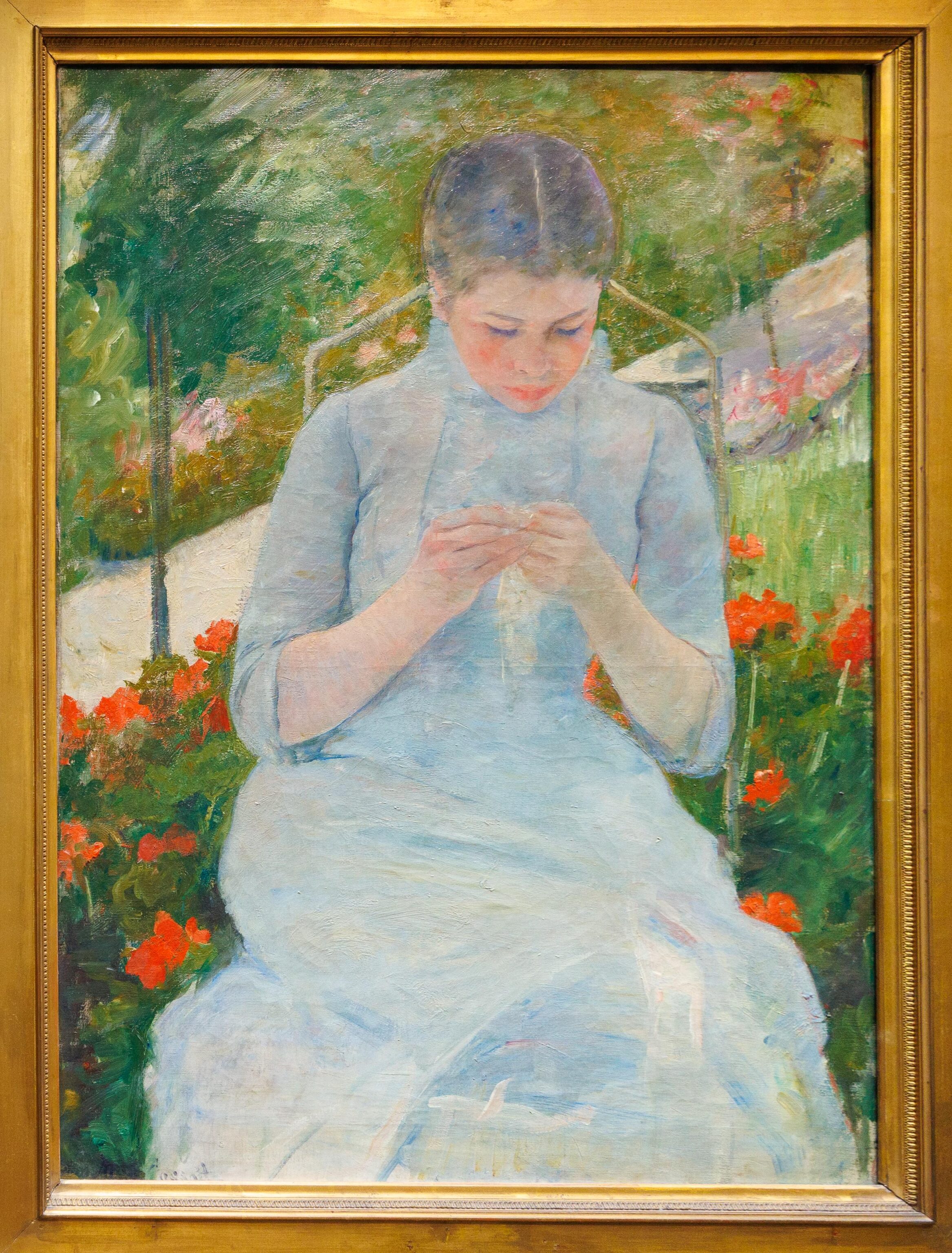
We walked around a bit more before finally heading back downstairs to ground level.
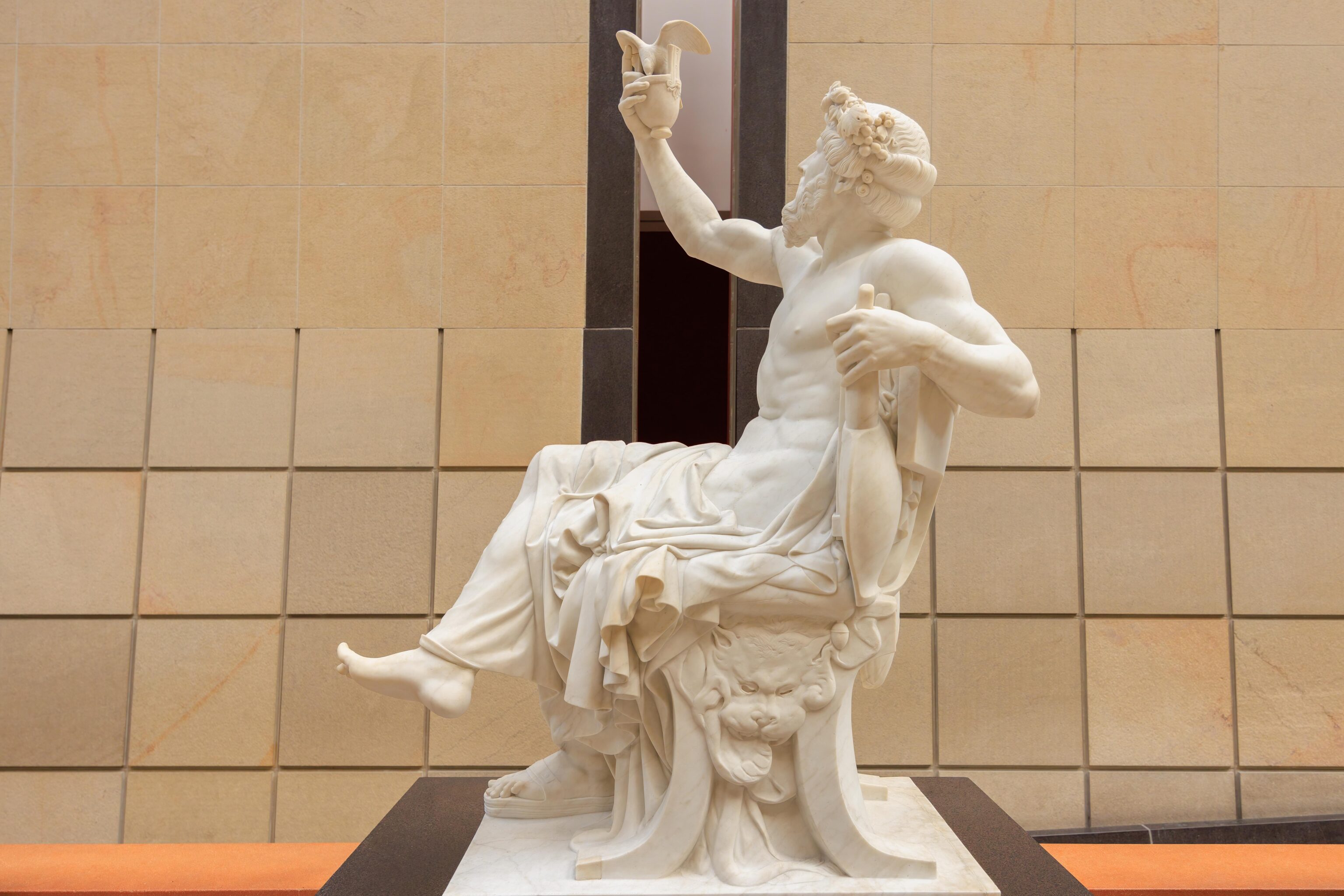
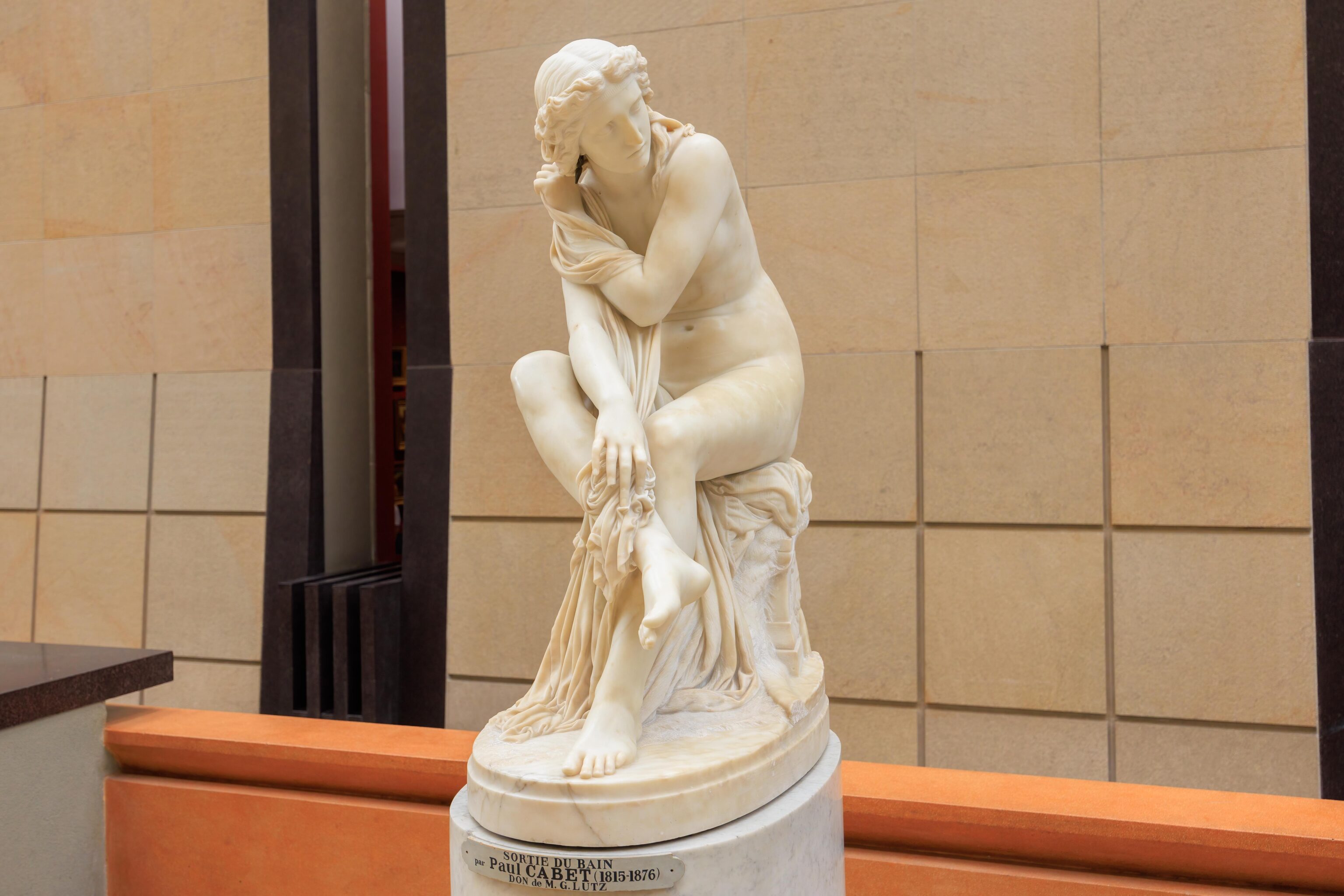
‘The atrium on the ground floor is mainly occupied by various sculptures.’The atrium on the ground floor is mainly occupied by various sculptures.
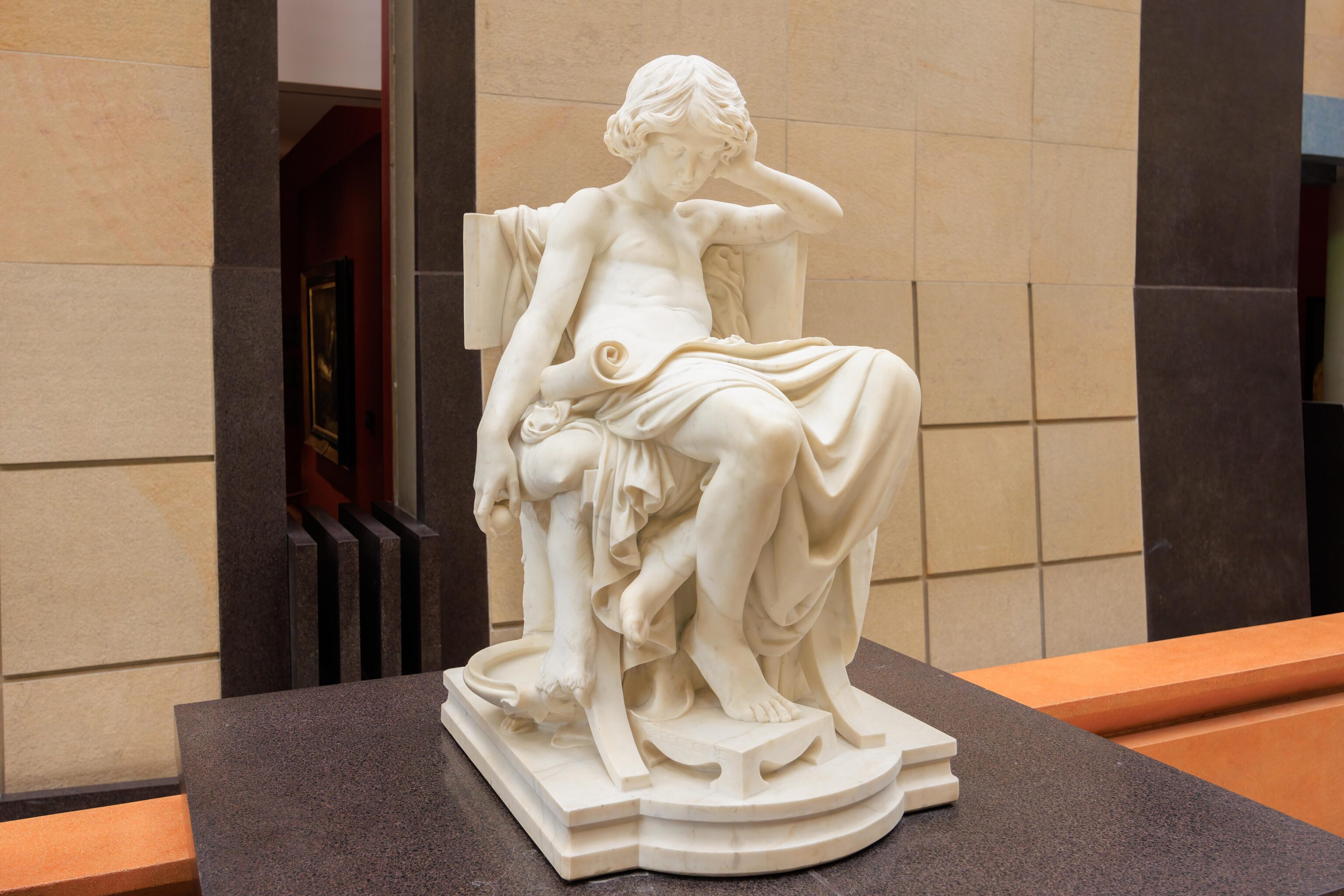
A modern take on this sculpture would have the boy looking bored while looking at his smartphone.
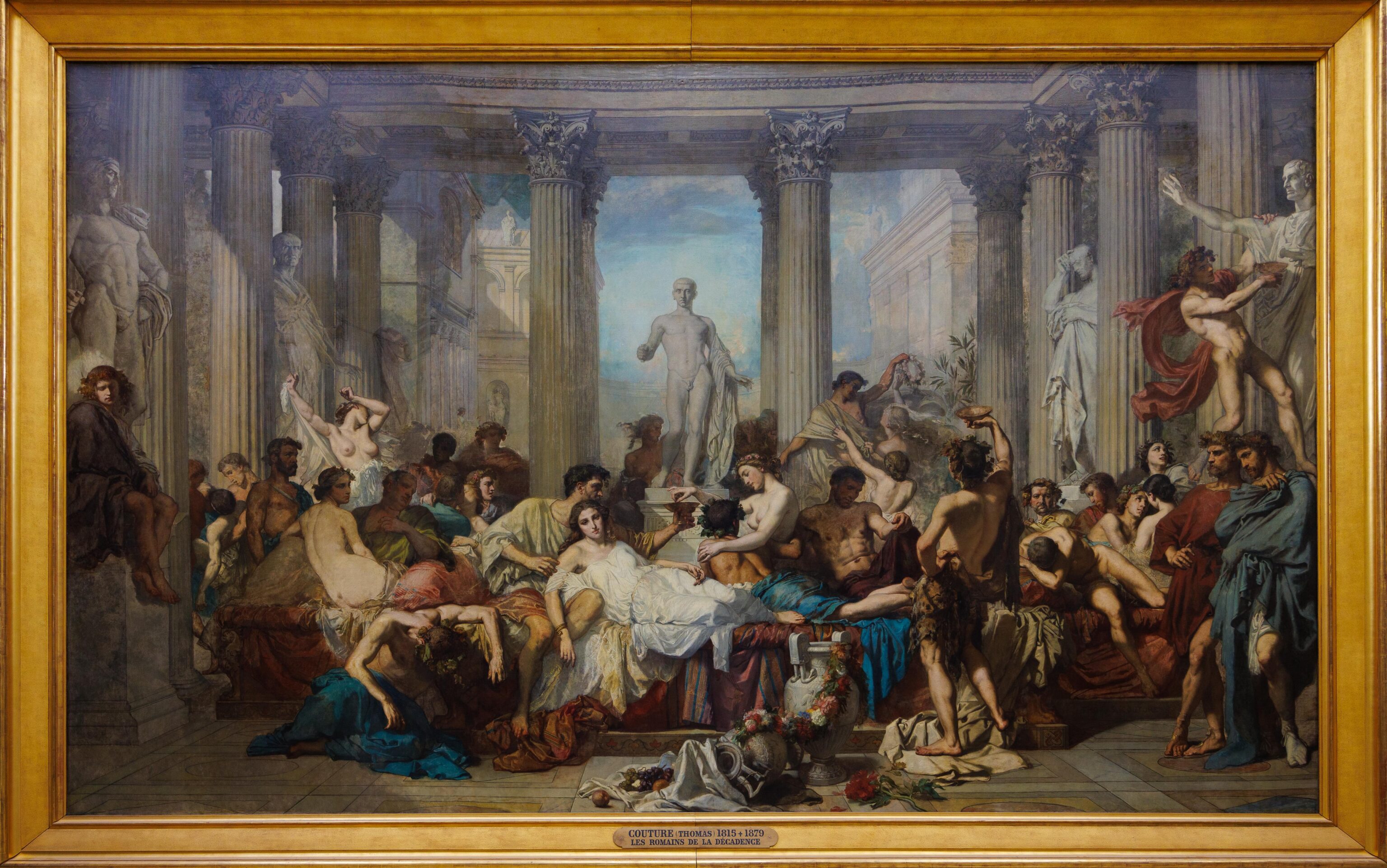
There are some large pieces, like this one, on the ground floor. The museum’s website describes this piece4:
It took Thomas Couture three years to complete The Romans of the Decadence the proportions of which betray grand artistic ambitions. He wanted to give fresh impetus to French painting and to do so referred, rather conventionally, to the masters of ancient Greece, the Renaissance and the Flemish school. The work is a history painting, regarded as the noblest genre during the 19th century: it therefore had to represent human behaviour and convey a moral message. This was explained by Couture himself, who quoted two lines from the Roman poet Juvenal, (c. 55-c.140 AD) in the catalogue for the 1847 Salon where the painting was exhibited: "Crueller than war, vice fell upon Rome and avenged the conquered world". In the centre of the painting, Couture has placed a group of debauched revellers, exhausted and disillusioned or still drinking and dancing. In the foreground are three men who are not taking part in the drunken revels: on the left, a melancholic boy sitting on a column and on the right two foreign visitors casting a disapproving eye over the scene. The antique statues looming above the group also seem to be condemning the orgy. Apart from illustrating an ancient text, Couture was alluding to French society of his time. A Jacobin, Republican and anticlerical, he criticised the moral decadence of France under the July monarchy, the ruling class of which had been discredited by a series of scandals. This painting is therefore a "realist allegory", and the art critics of 1847 were quick to see in these Romans "The French of the Decadence".
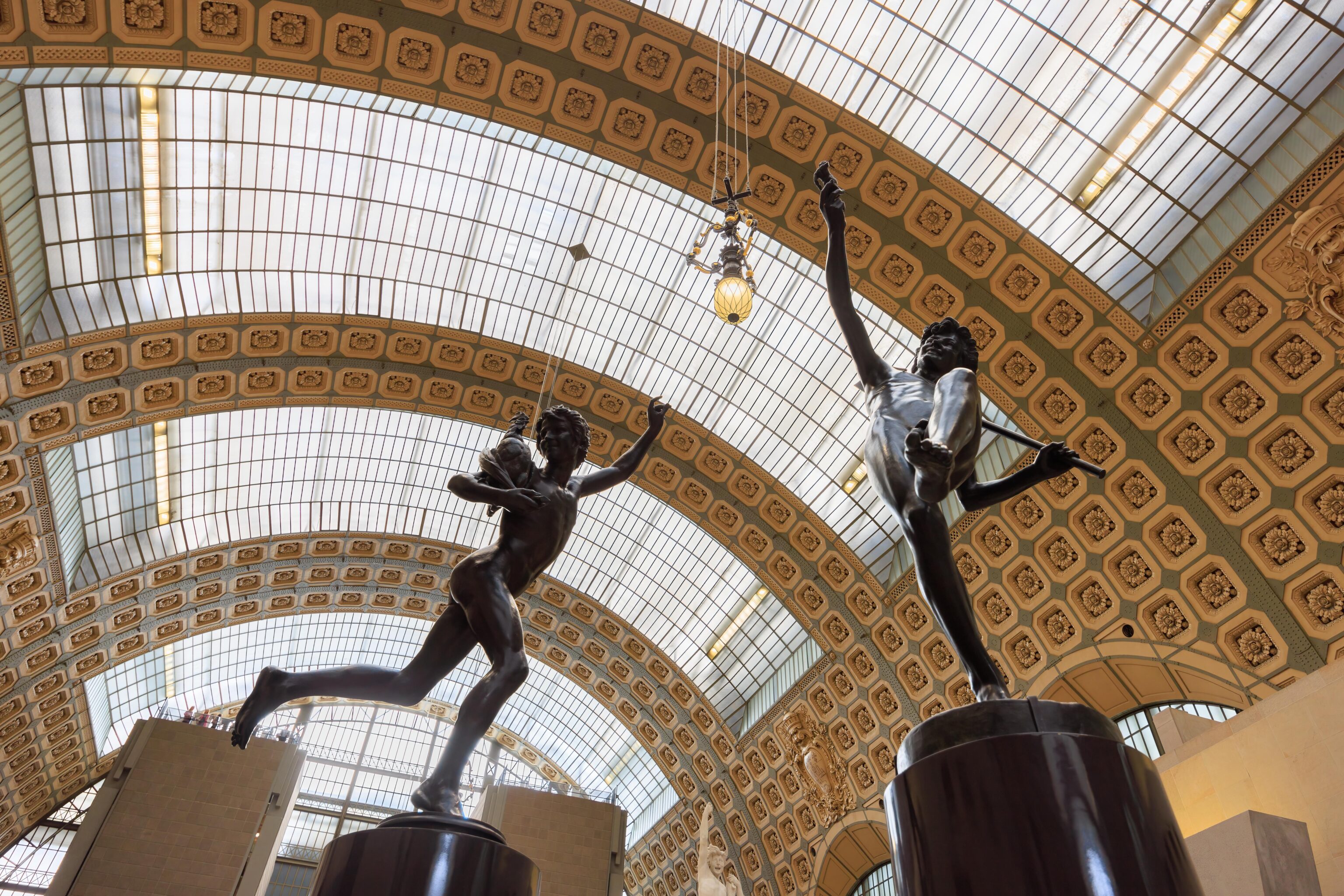
(Right) Hippolyte Moulin – Une trouvaille à Pompéi [A Lucky Find at Pompeii] (1863)
This pair of statues was quite distinctive due to their somewhat similar appearance and prominent location. Also of interest, the one on the left is holding a chicken!
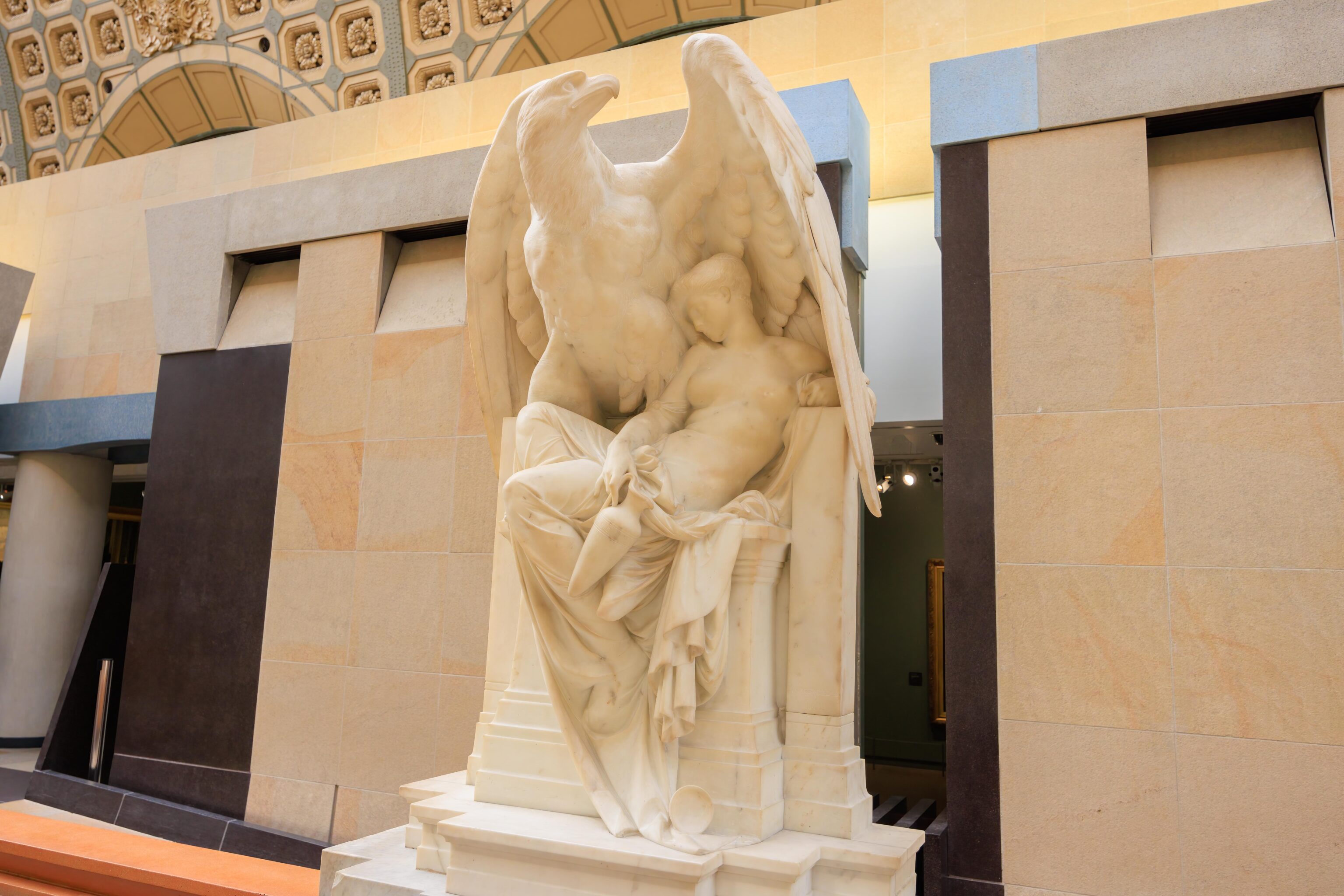
This sculpture depicts Hebe, daughter of Zeus and Hera, sleeping. The eagle is Zeus. According to the sculpture’s sign, this can be interpreted as the Second Empire of Napoleon III protecting France.
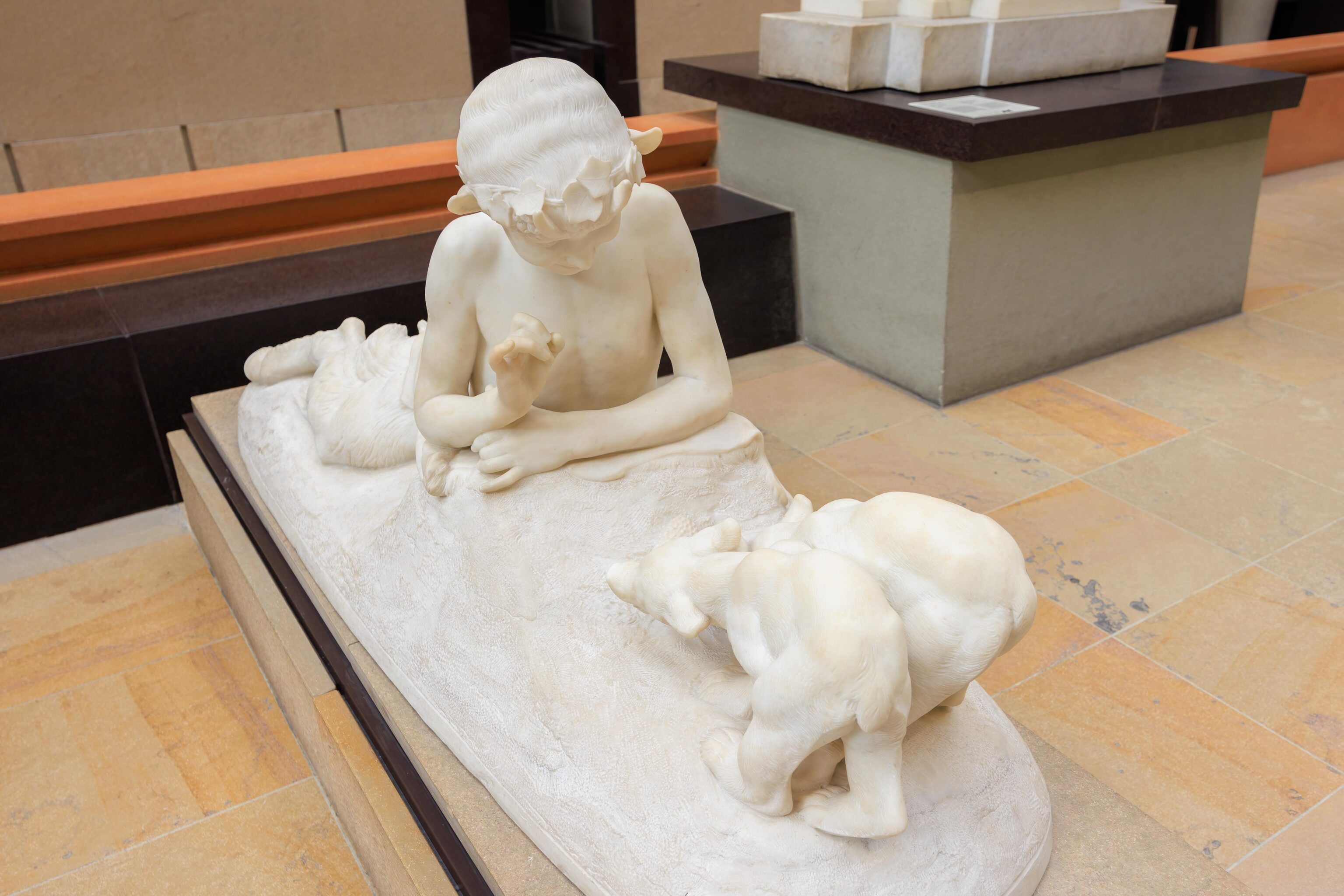
What not to do while in the wilderness! The subject here is the Greek god Pan with two bear cubs. The fictional Peter Pan is likely to be a reference to the Greek Pan. Breaking Character has a short and simple explanation5:
The character of Peter Pan bears numerous resemblances to a Greek god also named Pan. In Greek mythology, Pan is known as being the god of the wild, of shepherds and their flocks, and of hunting music, and is also a friend to the nymphs. Much like Peter Pan, he is often depicted playing the pan flute or panpipes too.
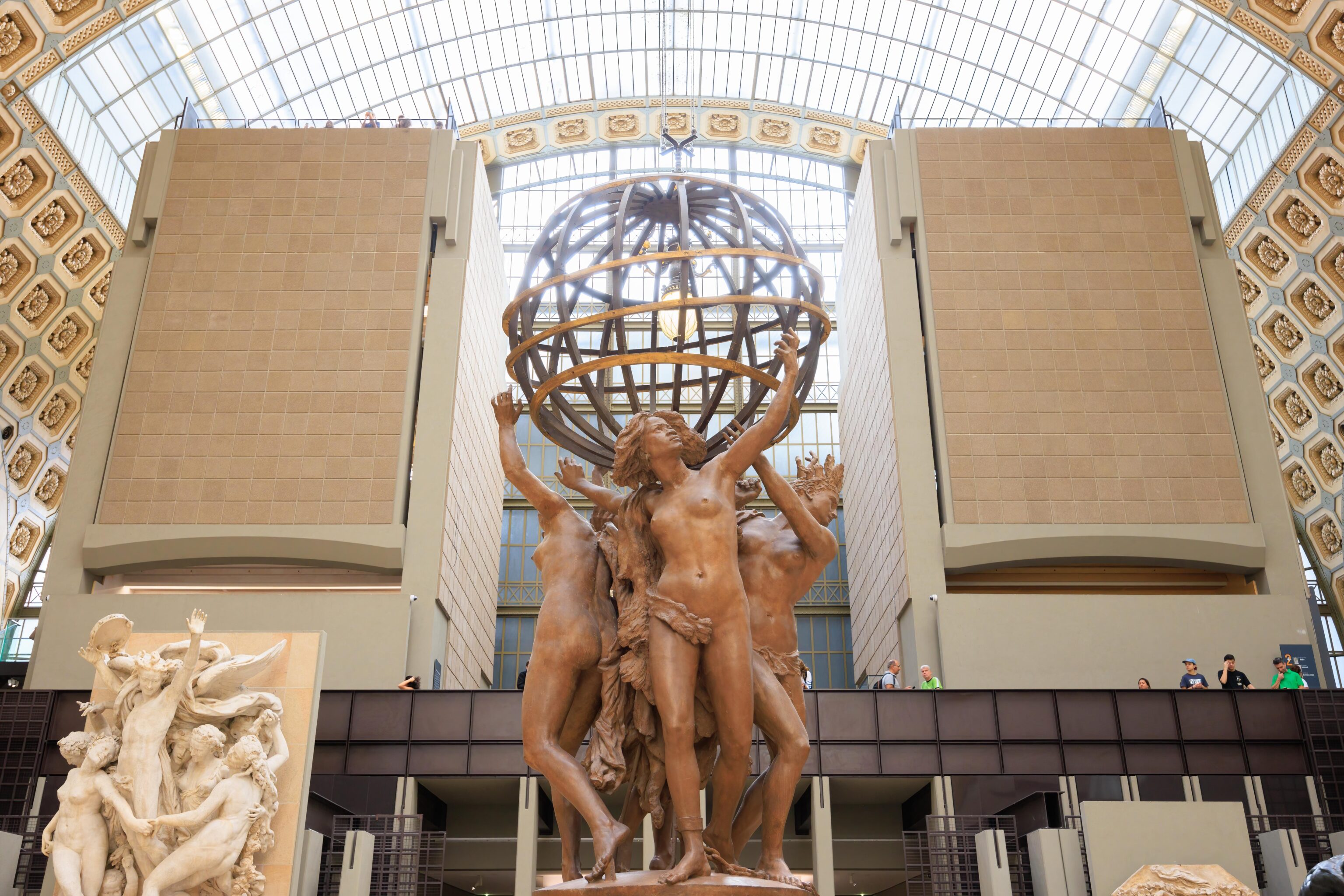
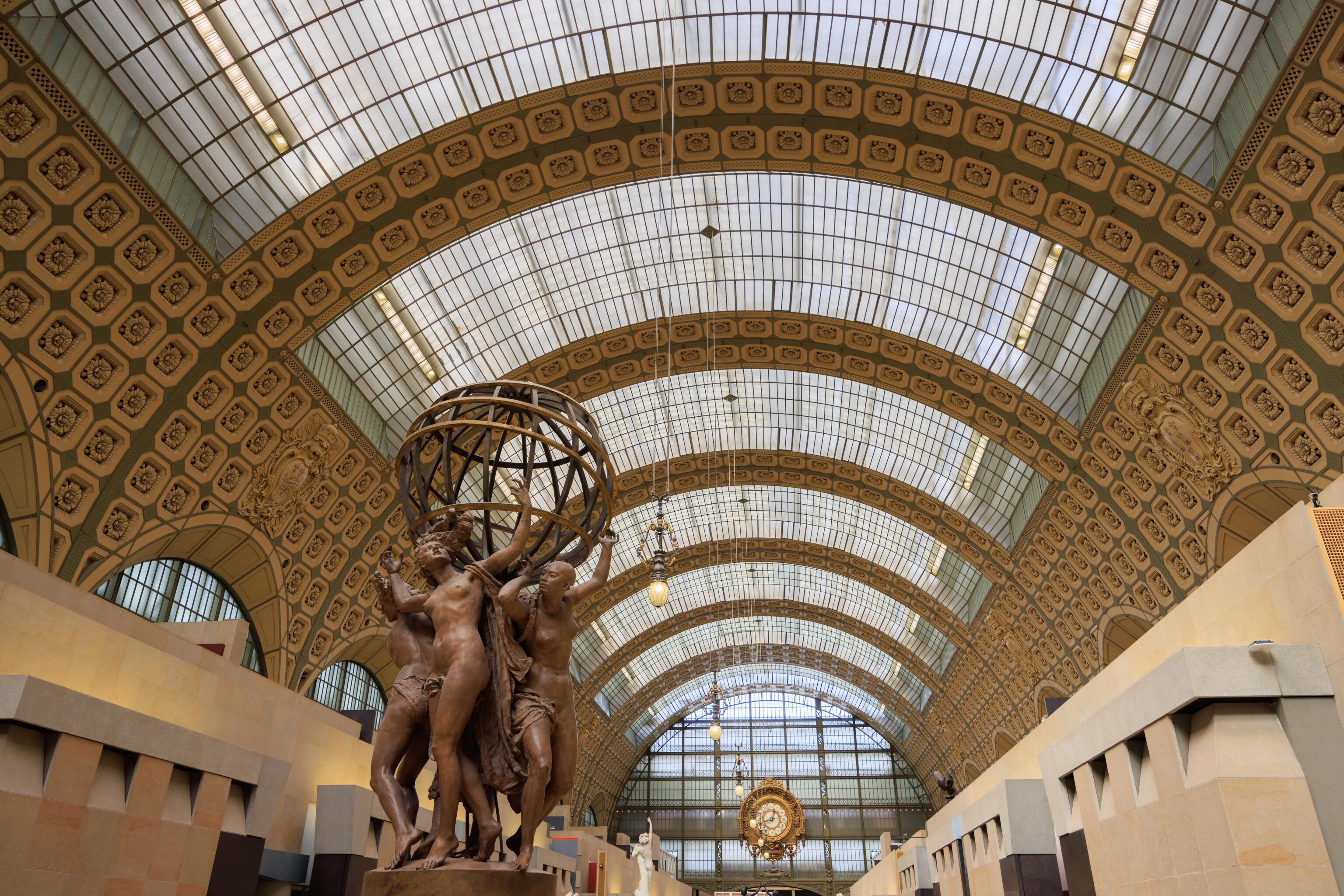
The world being held up by Atlas is a common depiction. Here, it is being supported by the people of four parts of the world – Europe, Asia, Africa, and the Americas. The museum’s website explains6:
Baron Haussmann, the prefect of Paris who gave the city the face we know today, commissioned Carpeaux to design a fountain for the Observatoire Garden in 1867. The sculptor chose the theme of the four parts of the world turning around the celestial sphere. Not only are the four allegories dancing in a ring, but they are also revolving on the spot. Europe scarcely touches the ground, Asia, with her long pigtail, is seen almost from the back, Africa is in a three-quarter view and America, wearing a feather headdress, is facing the spectator but her body is turned to the side. This taste for movement is one of the features of Carpeaux's art. His passionate nature was quite the contrary of Neoclassic serenity. It was not until 1874, a year before Carpeaux died, that the bronze fountain was set up on the designated site. The tangle of legs displeased the public of the time. Two of the busts exist as separate works. Carpeaux turned the Chinese woman into a man and reproduced the statue in several different materials. The figure of Africa gave rise to a bust that Carpeaux exhibited with the inscription Why be born a slave? This reference to the abolition of slavery is also visible in the statue: America is standing on the broken chain of slavery wrapped around Africa's ankle.
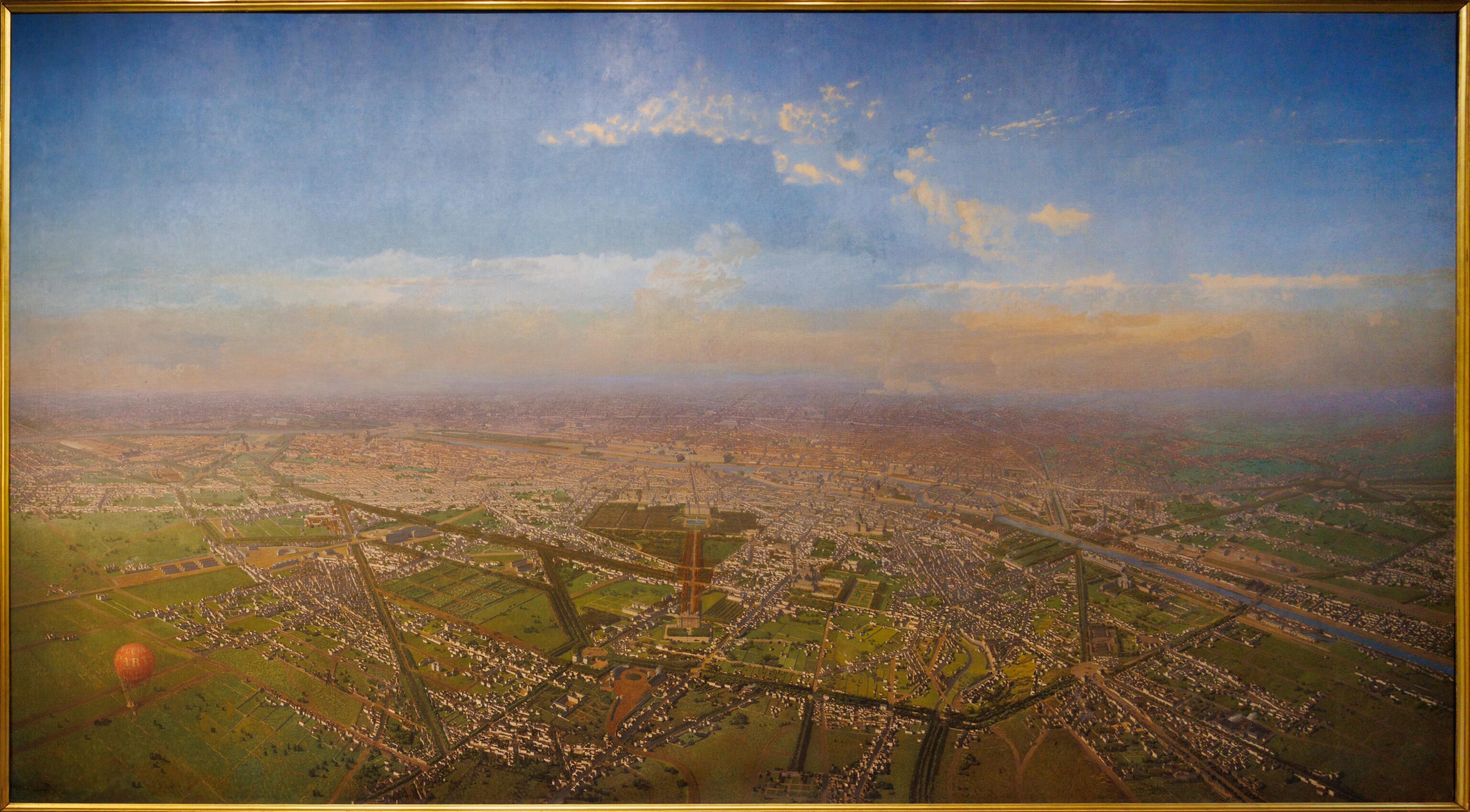
This painting, an aerial view of Paris, is huge and incredibly detailed. Parts of the city are recognizable, though some landmarks like the Eiffel Tower were not yet built in 1855.
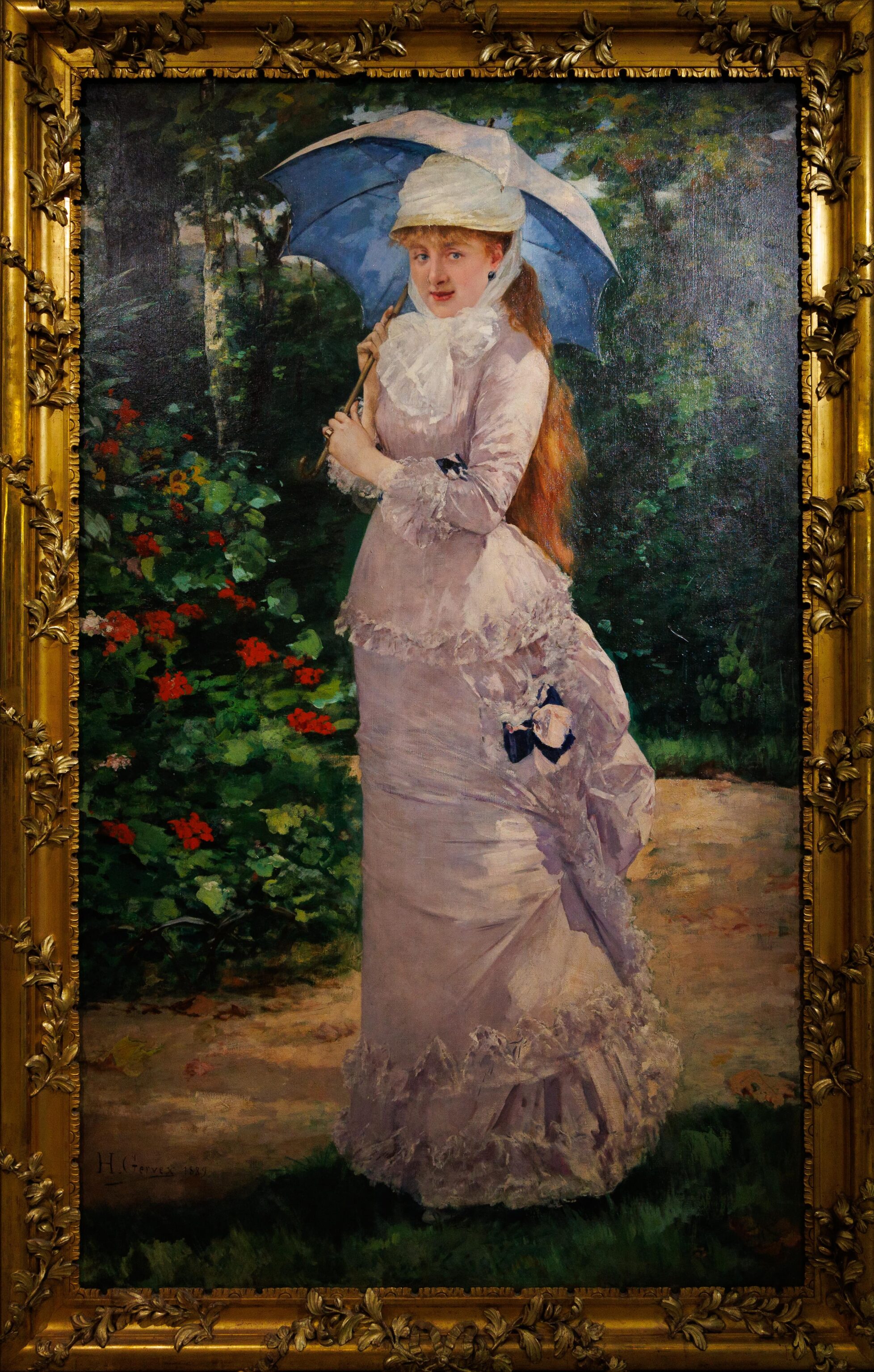
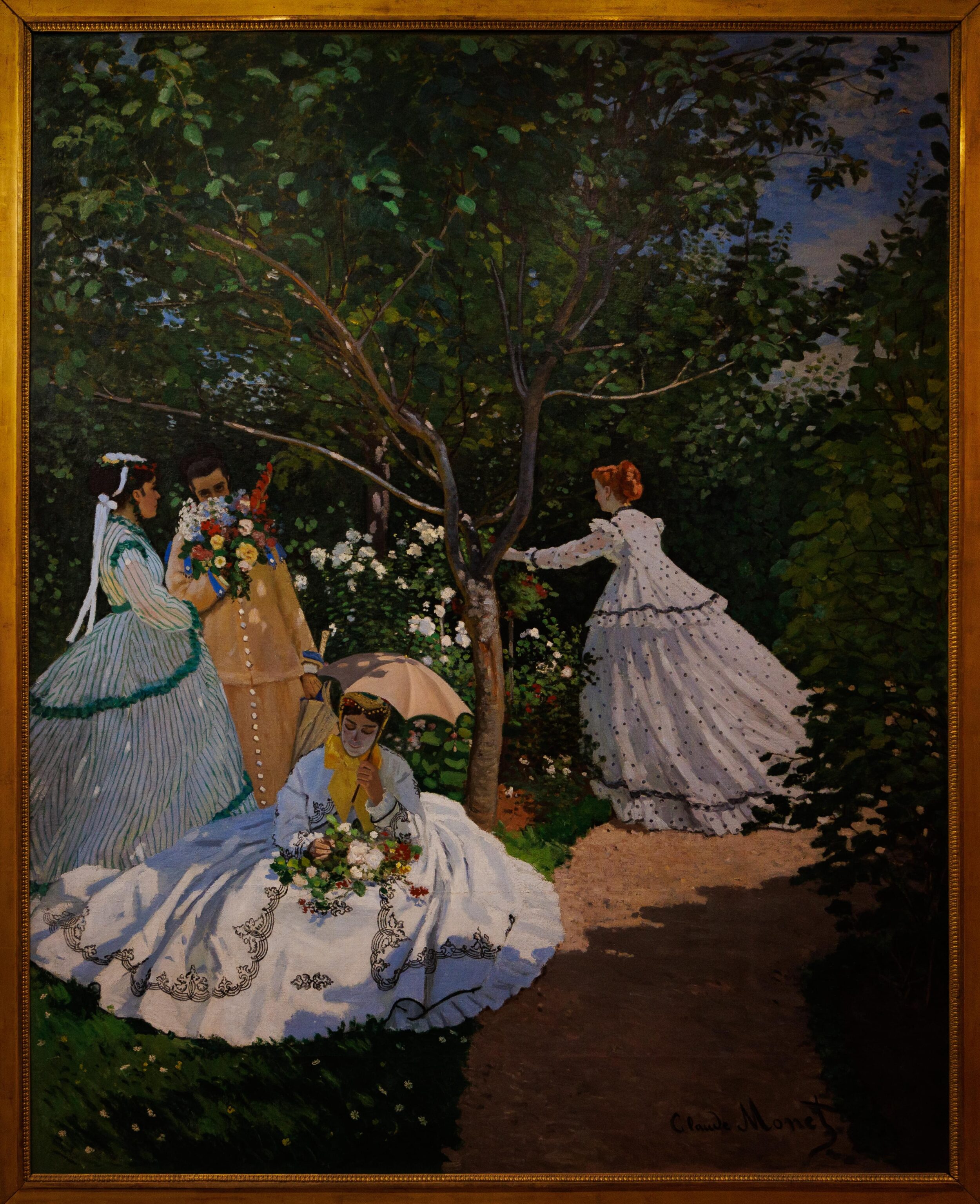
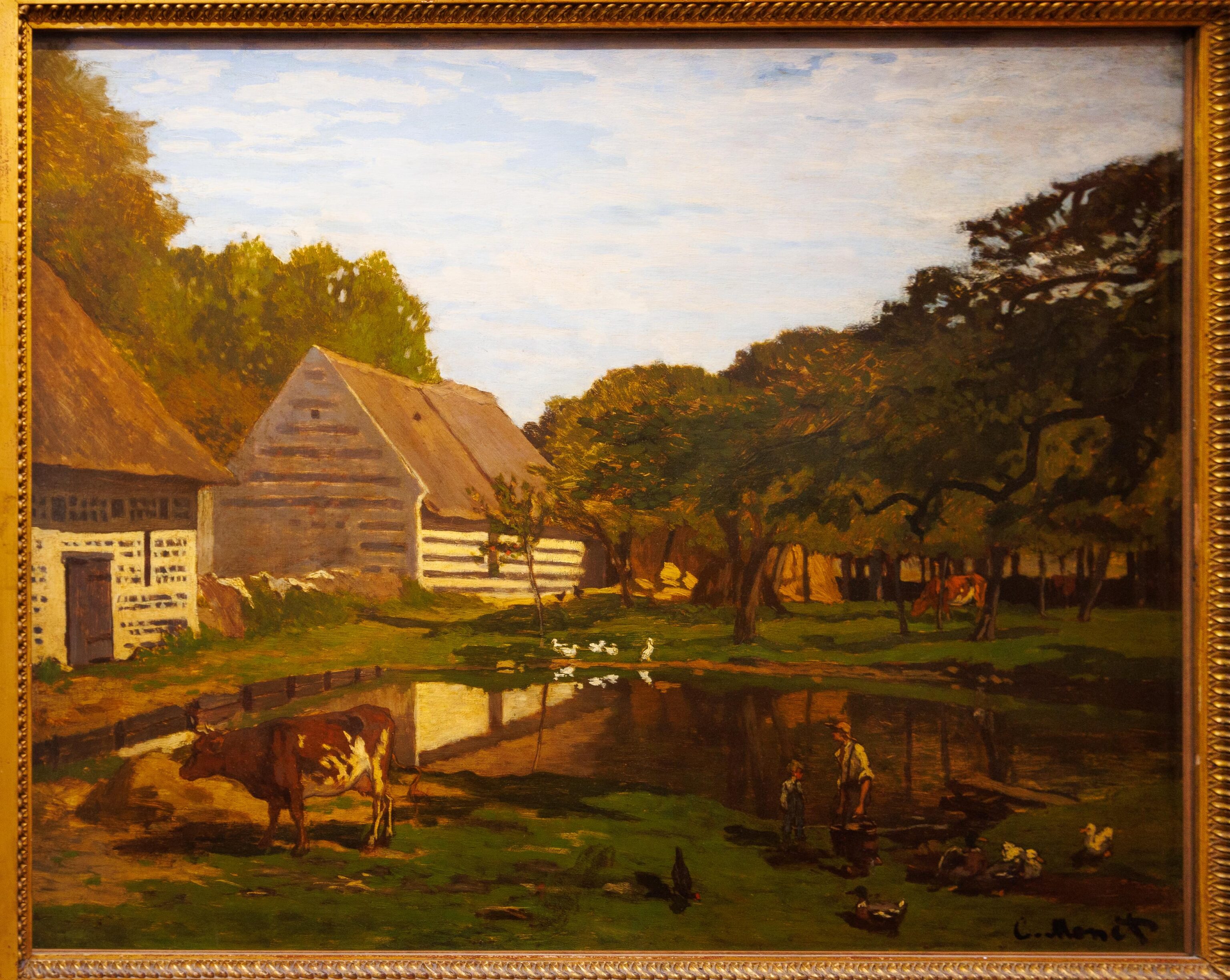
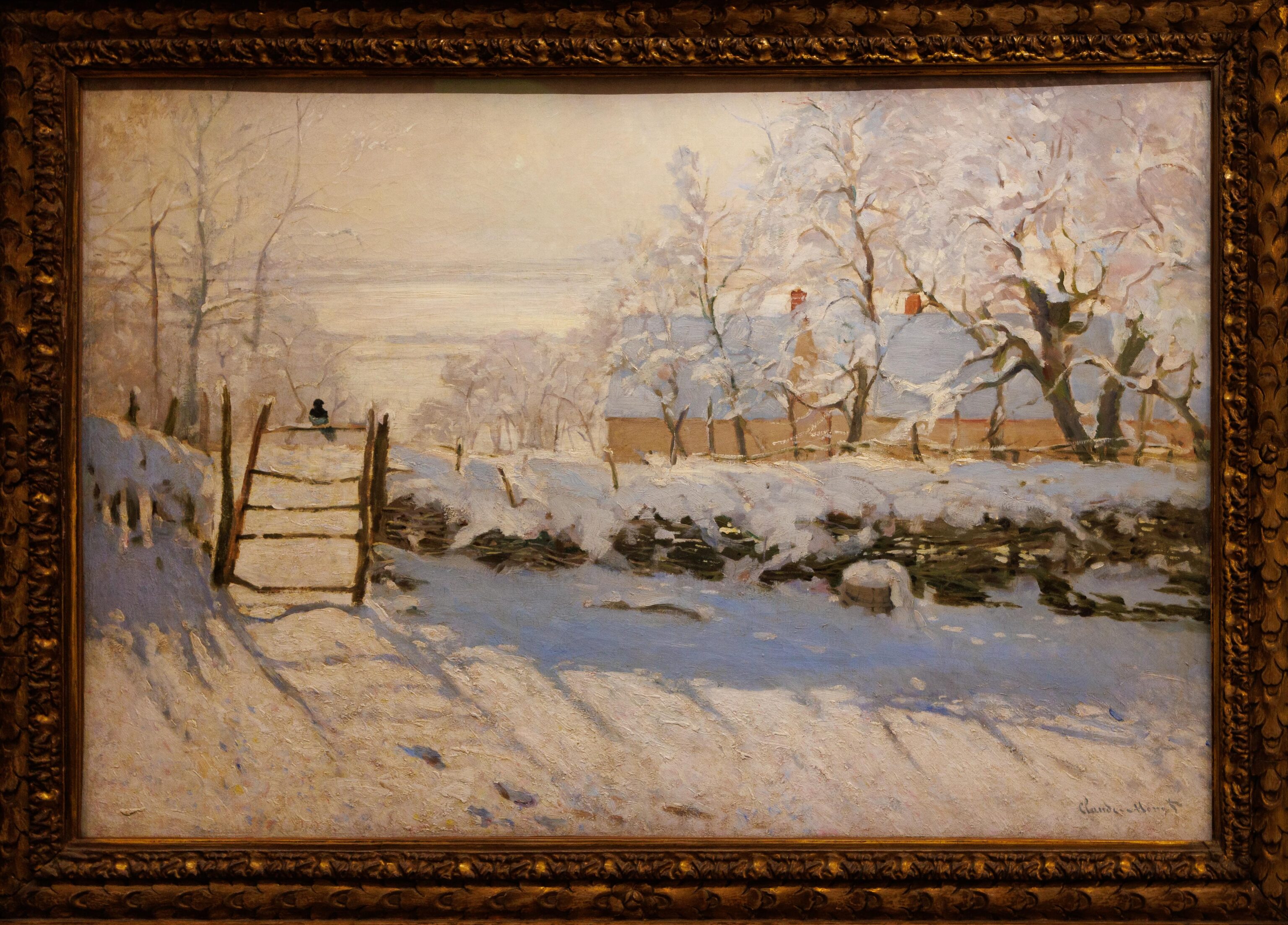
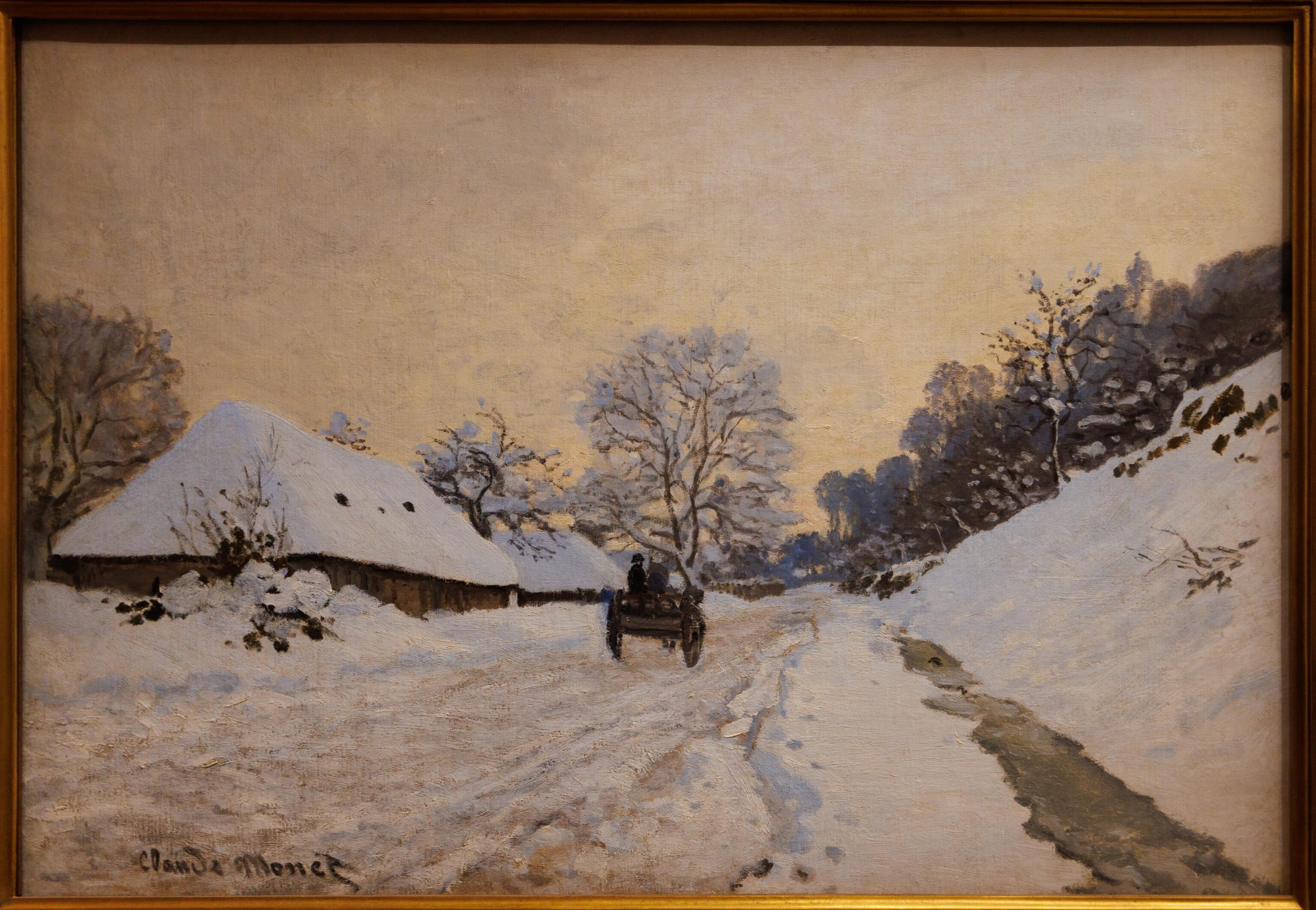
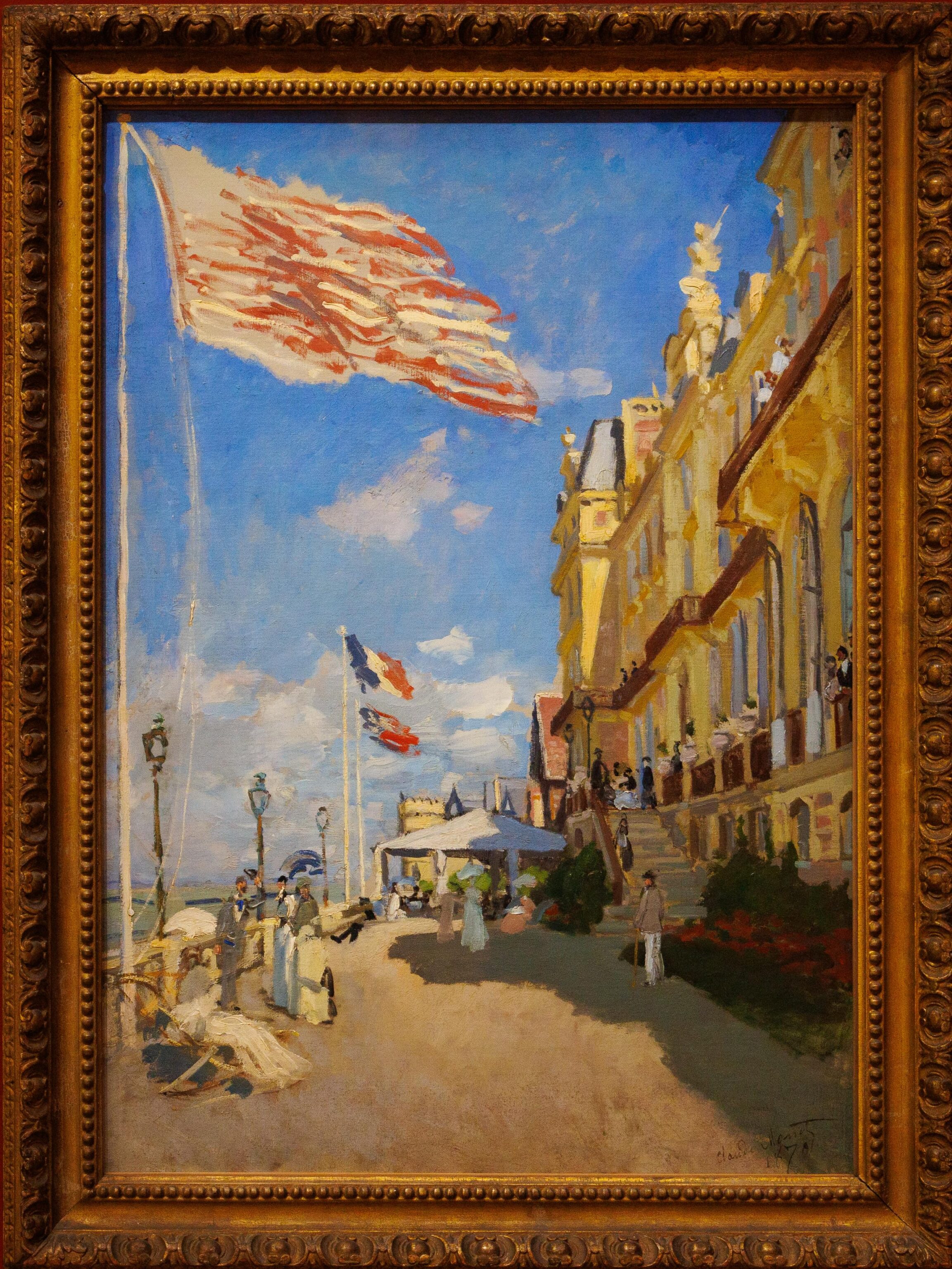
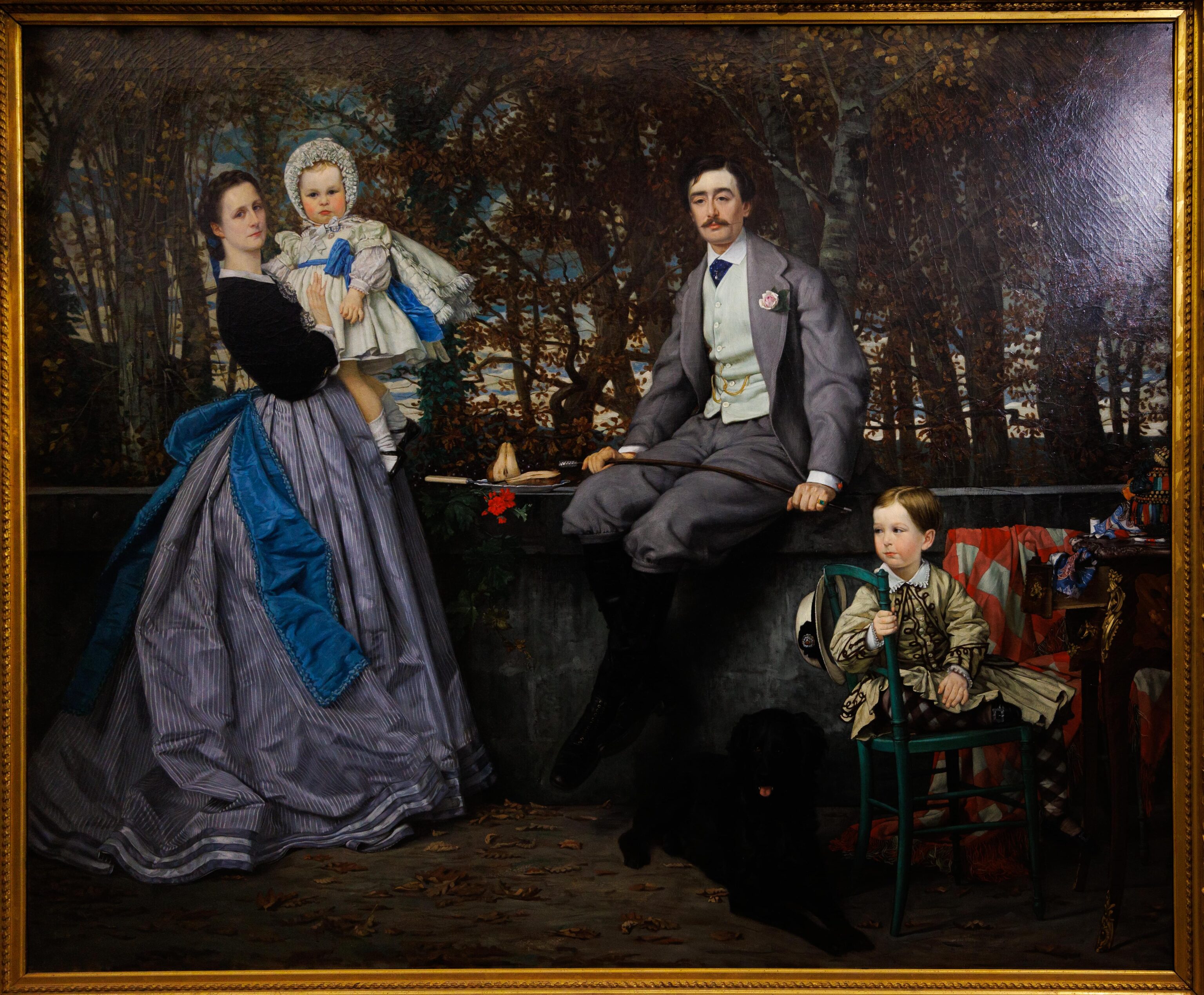
We walked through a few rooms on the ground floor before ending our visit. Time for lunch!
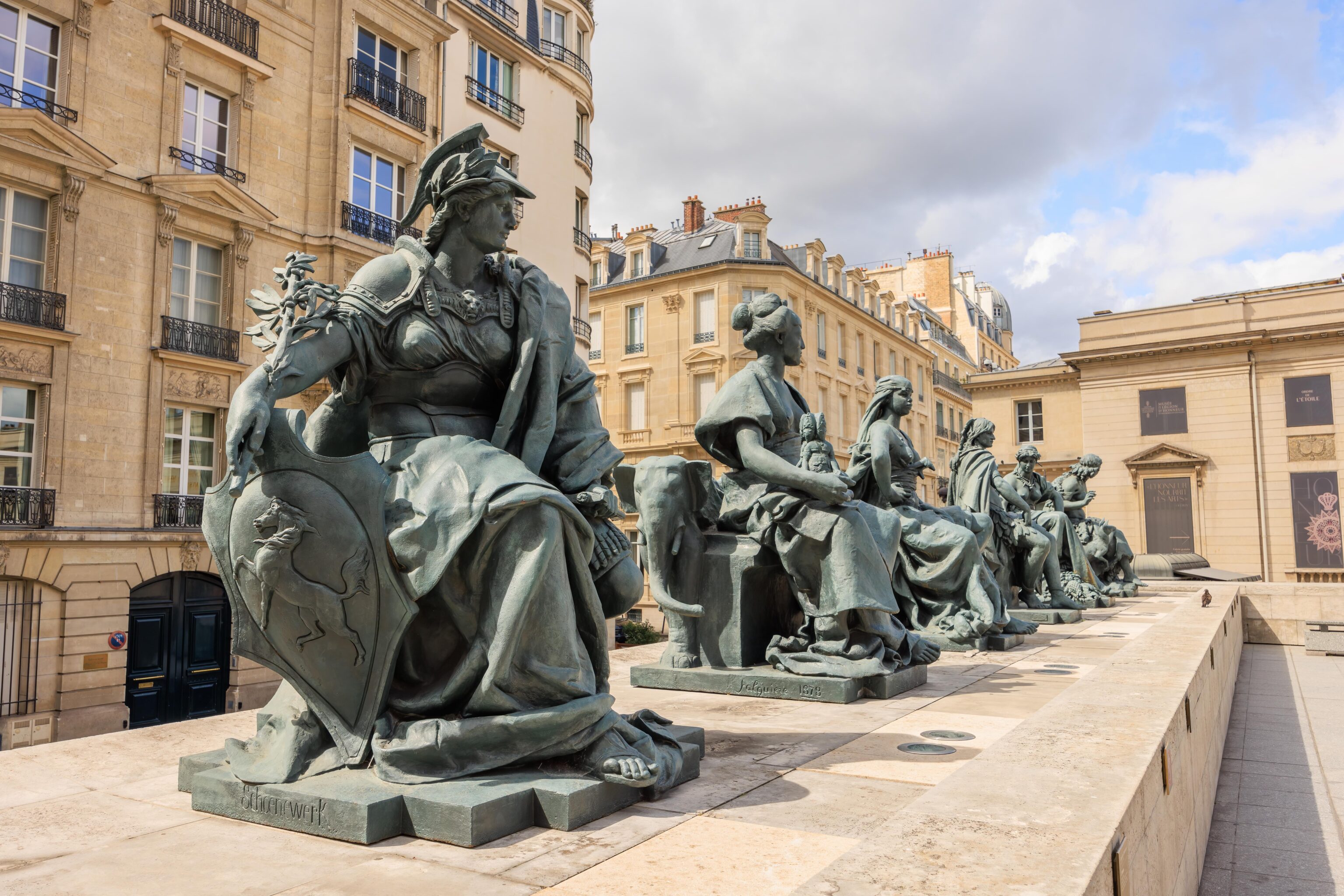
After exiting, we walked by this line of sculptures. These statues represent the six populated continents. We probably should have taken a closer look at each!
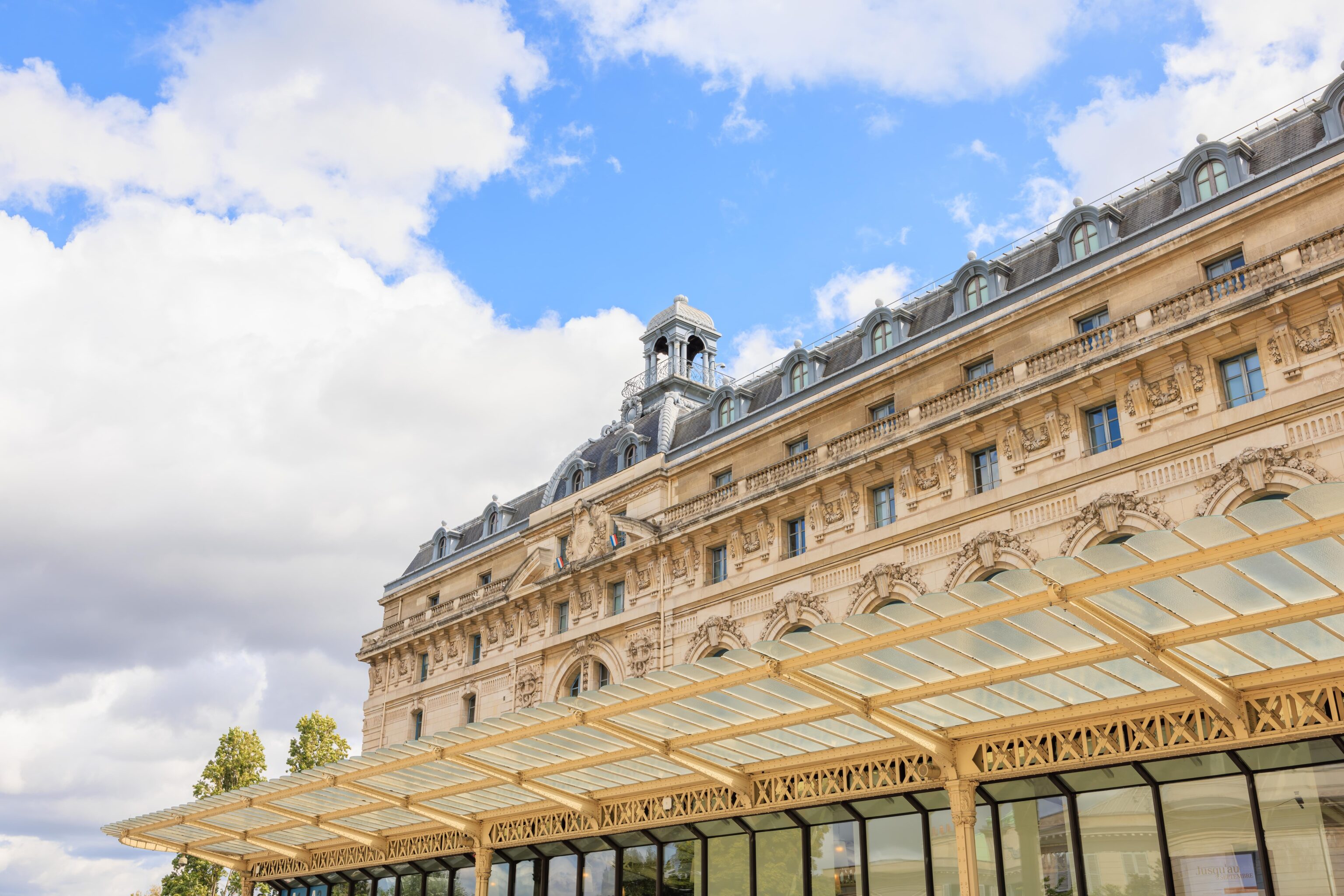
The west side of the museum above the entry queues. The weather was still nice, though a bit cloudier than in the morning when we arrived.
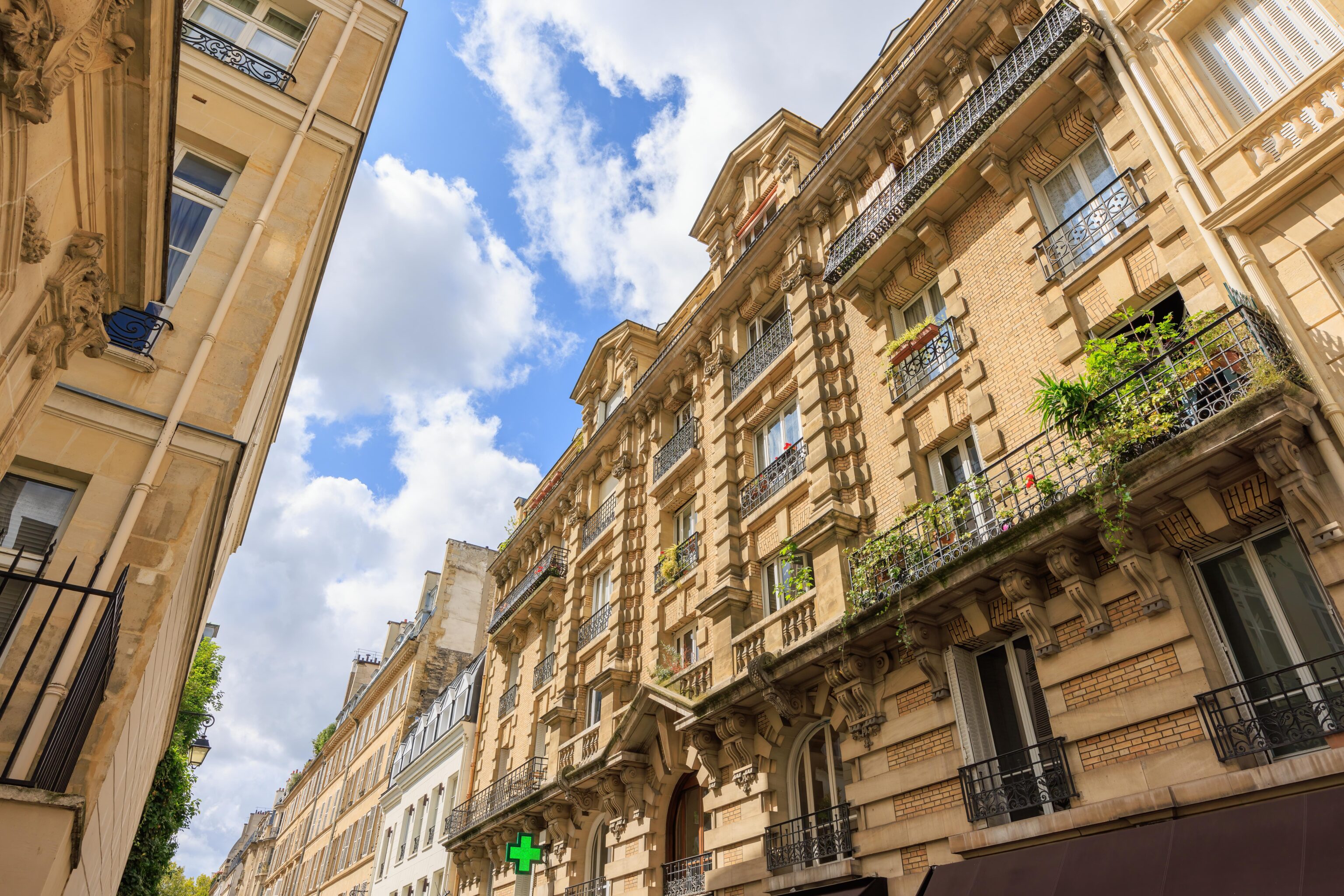
A typical Parisian street on our way to the Solférino metro station. We took line 12 for just two stops to Sevres – Babylone and walked a block or so to Le Récamier for lunch.
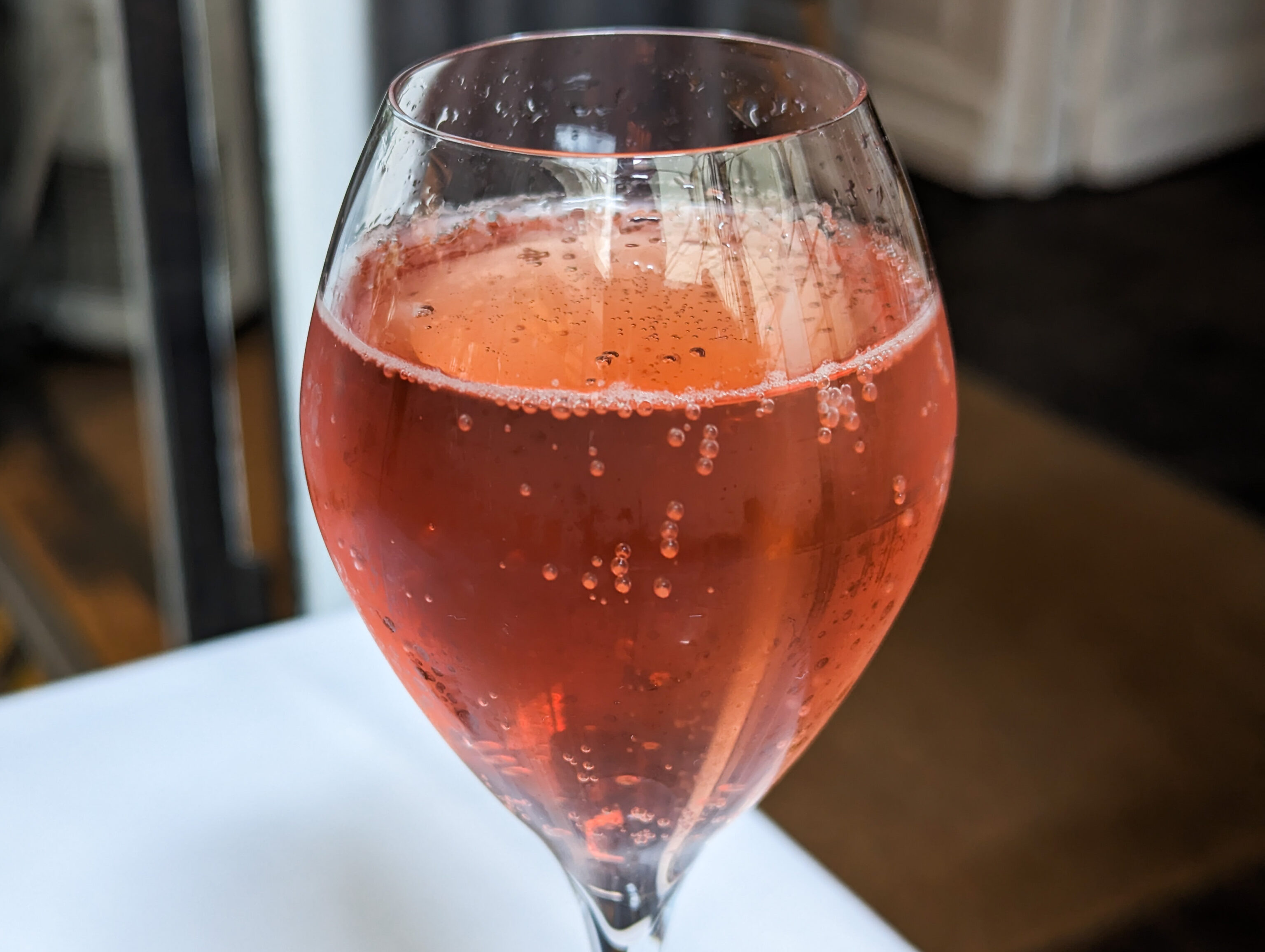
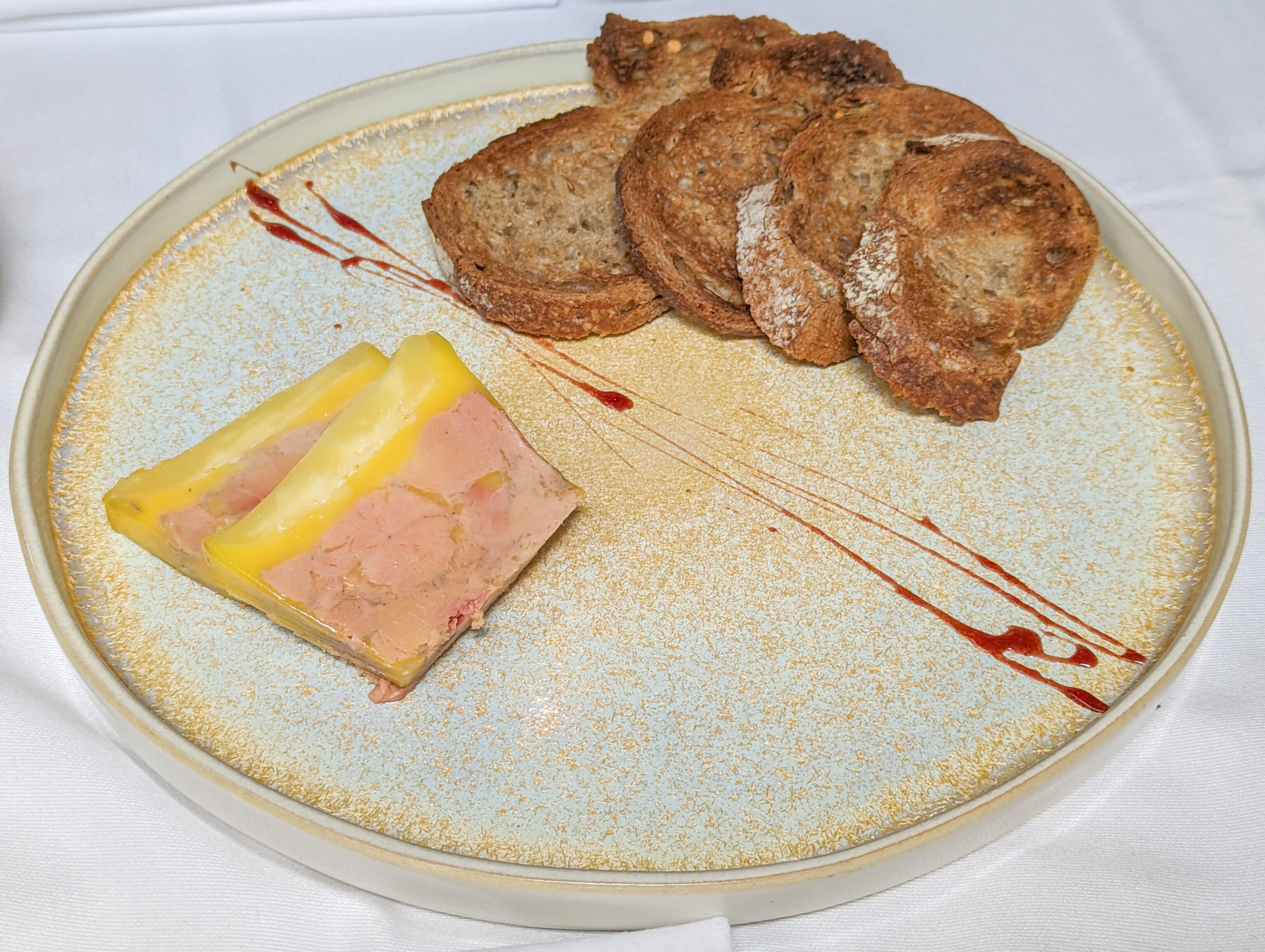
We started out with a Champagne, from Champagne of course, and the foie gras.
The foie gras was extremely soft and rich. We have had it before in Belgium and French Polynesia but this was a step above. Still, definitely an acquired taste and probably not something we would get regularly.
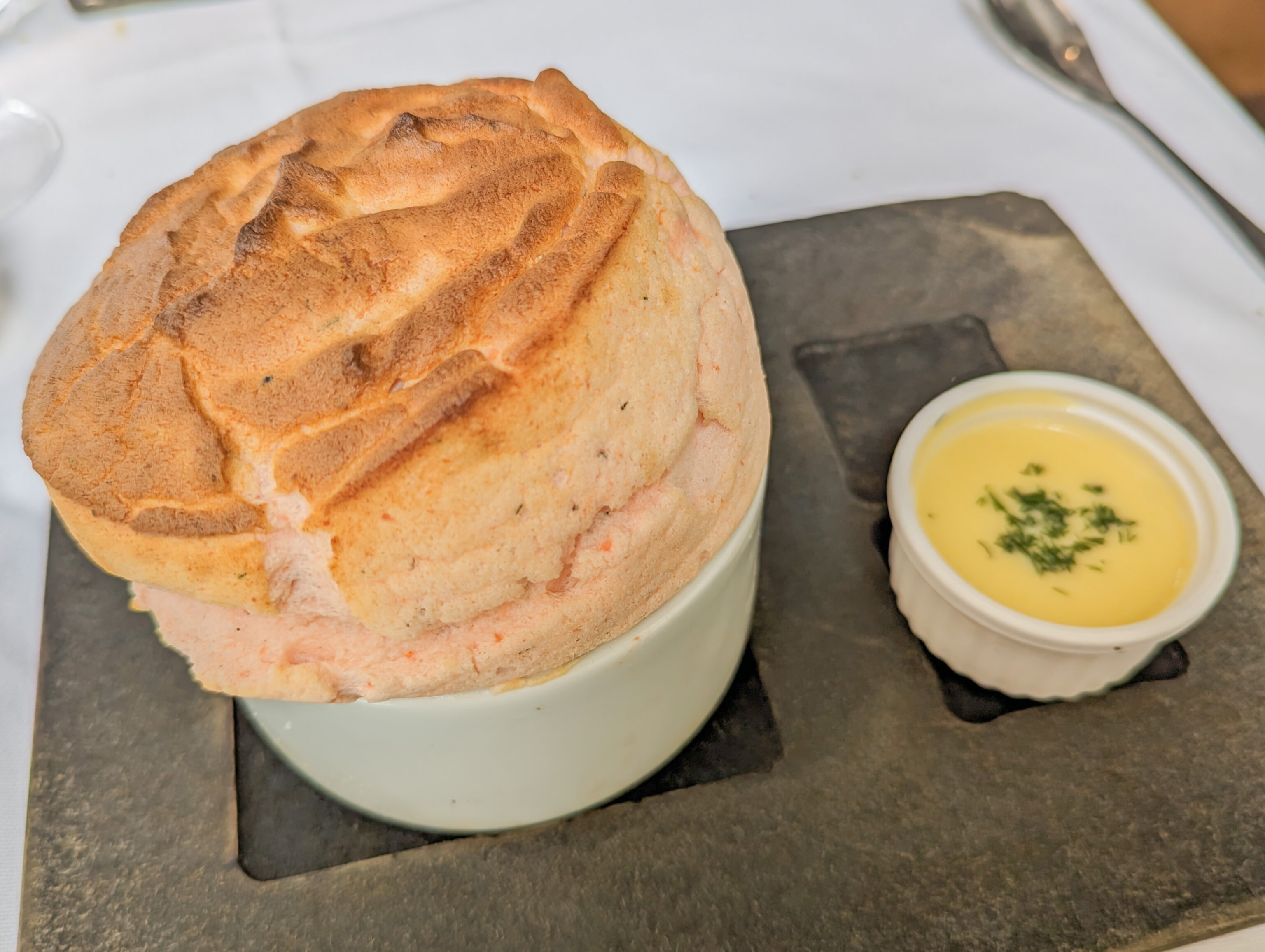
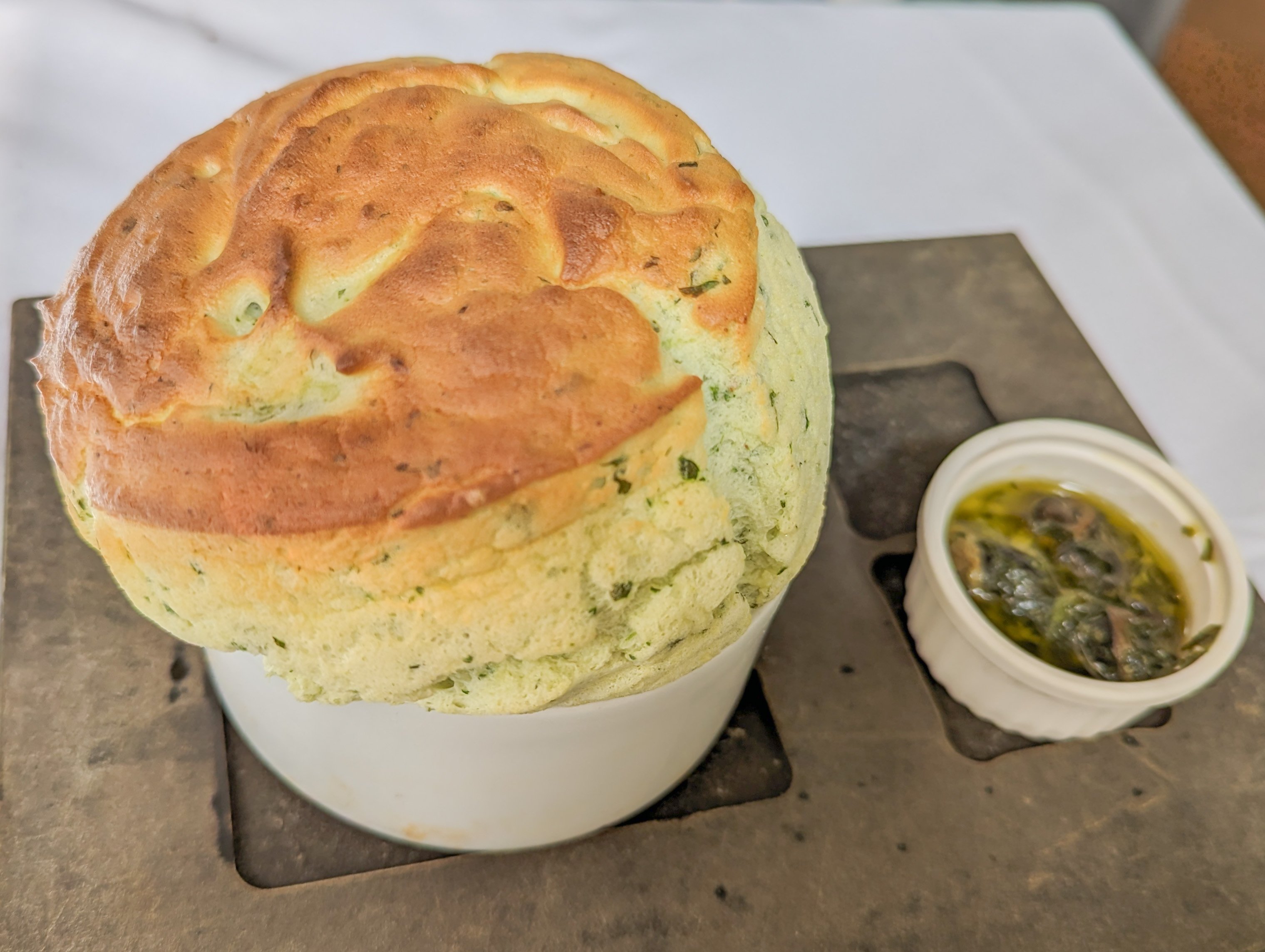
The restaurant’s specialty is souffle. So, of course, that’s what we got! We got a salmon flavored one and an escargot. The souffles were both so light and airy. They bounced around with a gentle tap. The salmon one definitely tasted of salmon. As for the escargot, the snails were in the sauce with the actual souffle containing a herb mixture.
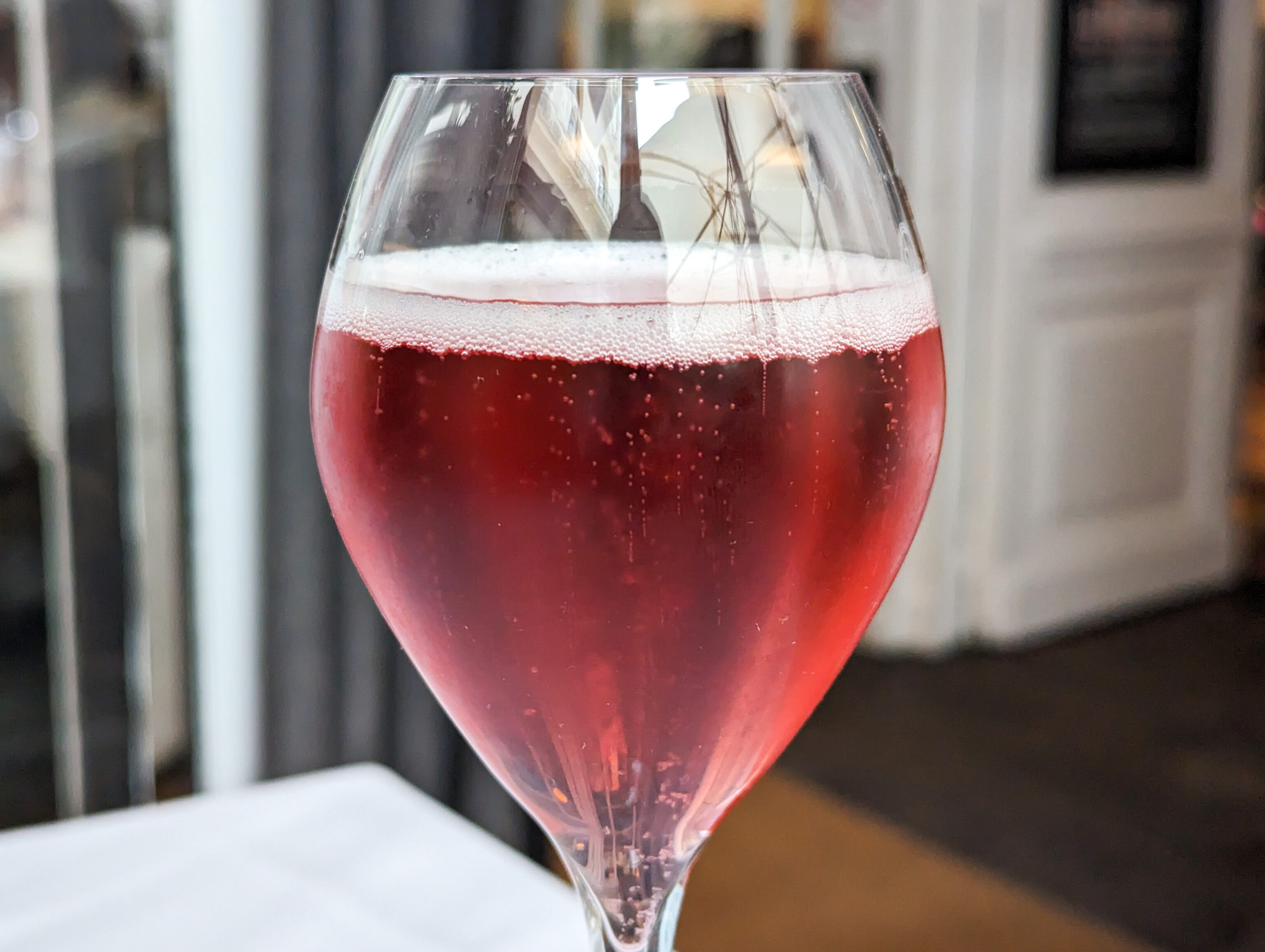
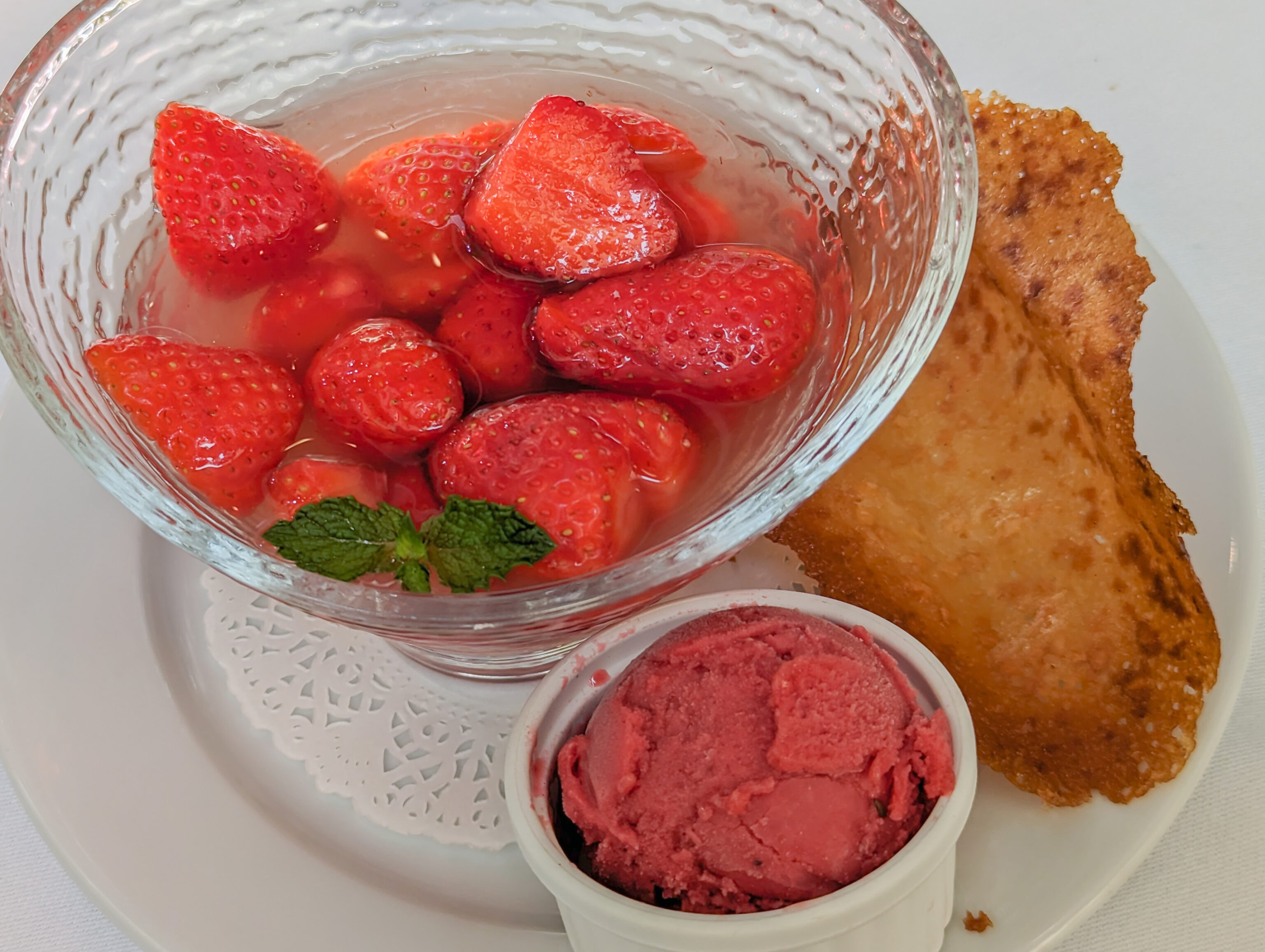
For dessert, we got a Kir Royale and what was described in English as something like Strawberry Soup with Red Berry Sorbet.
We learned of Kir Royale from Netflix’s Emily in Paris and of course had to try it! It contains champagne and crème de cassis. We were somewhat familiar with cassis as we had a complimentary drink with it at The Strings by InterContinental Tokyo during our last stay. We enjoyed it.
The strawberry dish was strawberries in lightly sweetened water. It worked quite well. The red berry sorbet was good too and worked well with strawberries in the same scoop.
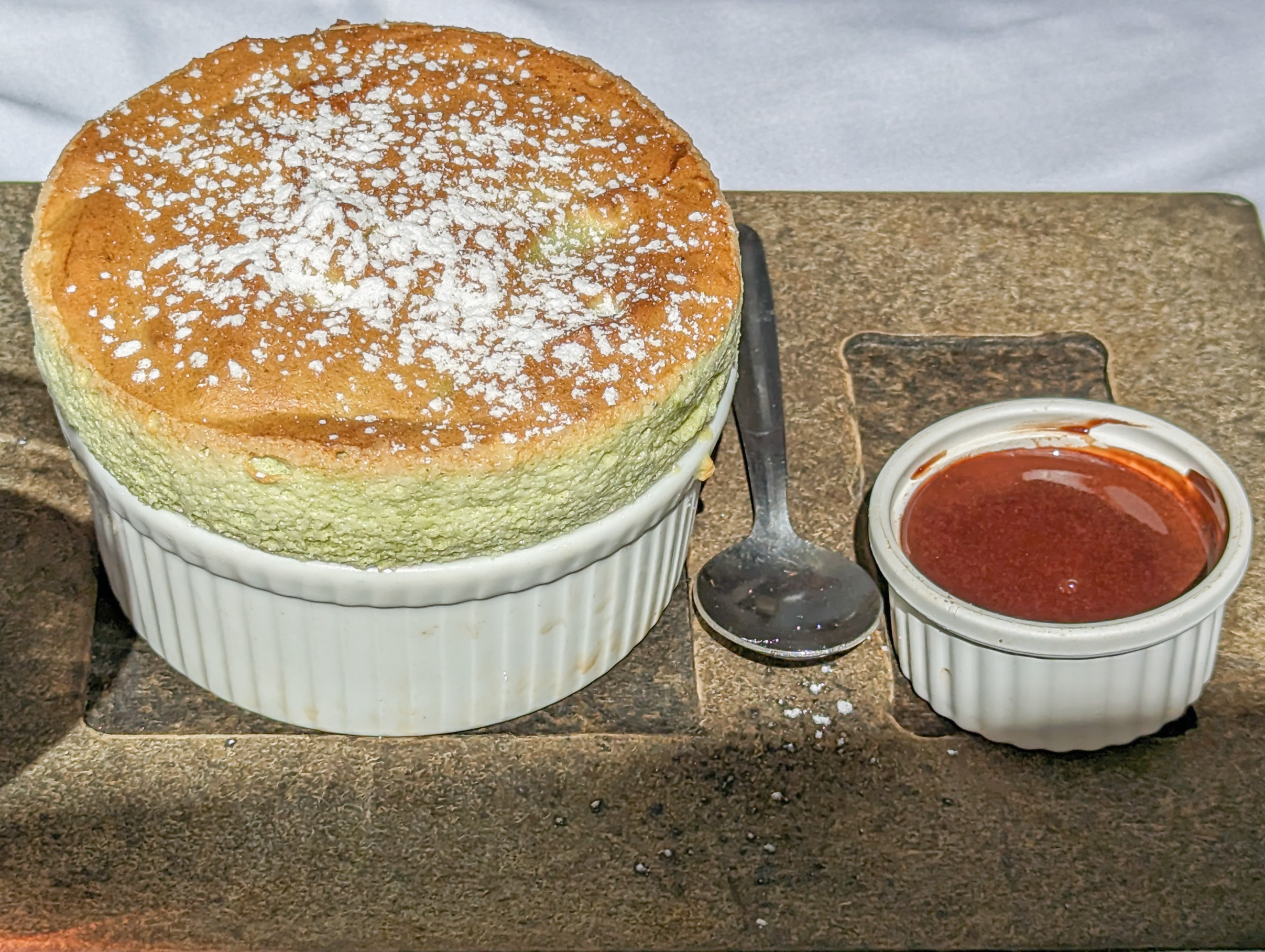
[PISTACHIO SOUFFLÉ WITH MELTING CHOCOLATE HEART & SAUCE]”
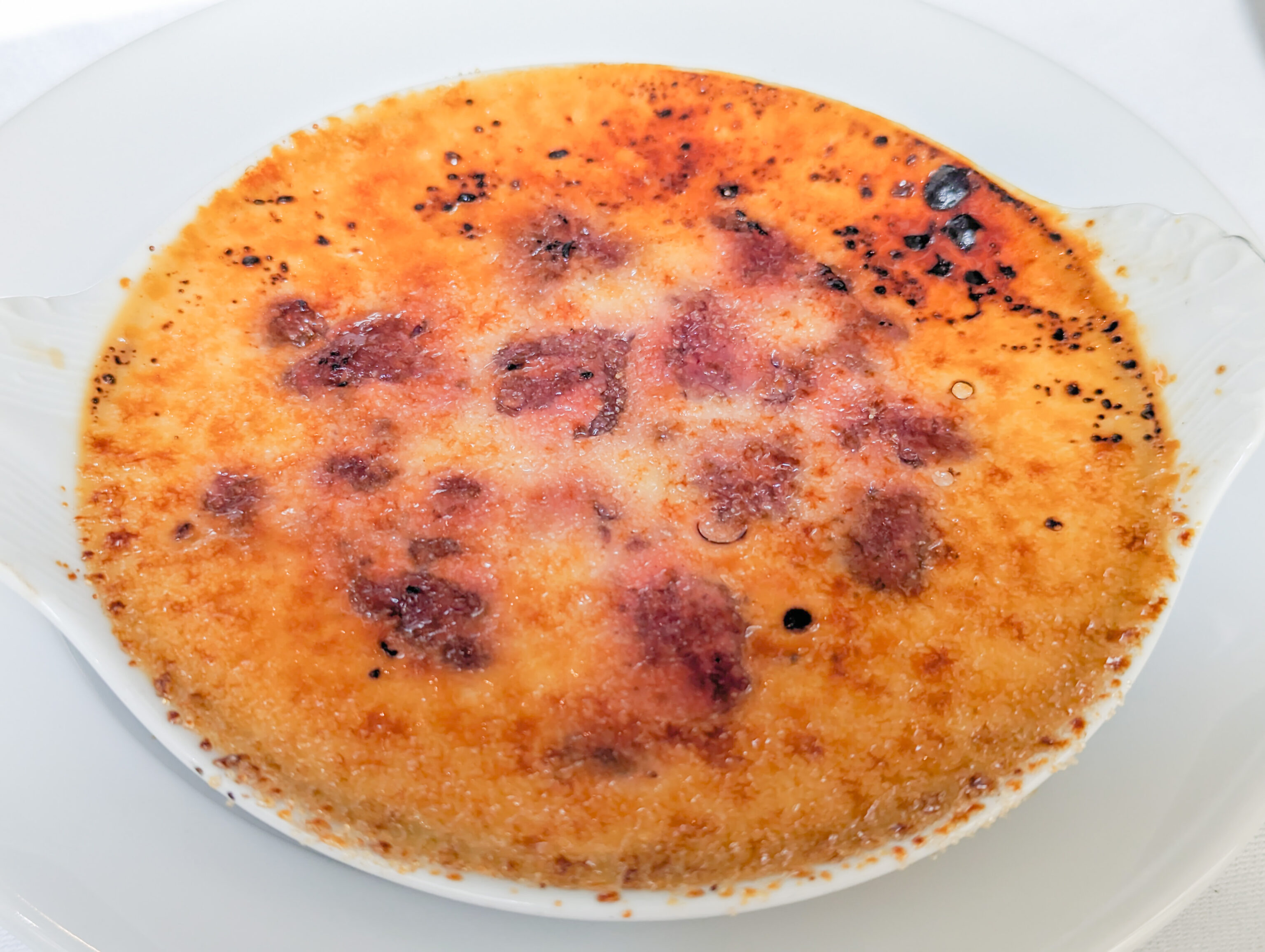
We also got a dessert souffle and a crème brûlée. The souffle was very good with just a tiny bit of melted chocolate inside and more on the side. The crème brûlée was also great and even better than yesterday’s!
Tuileries Garden
After eating, we hopped back into the Metro and backtracked to Assemblée Nationale, one stop beyond Solférino where we departed from before lunch, via line 12.
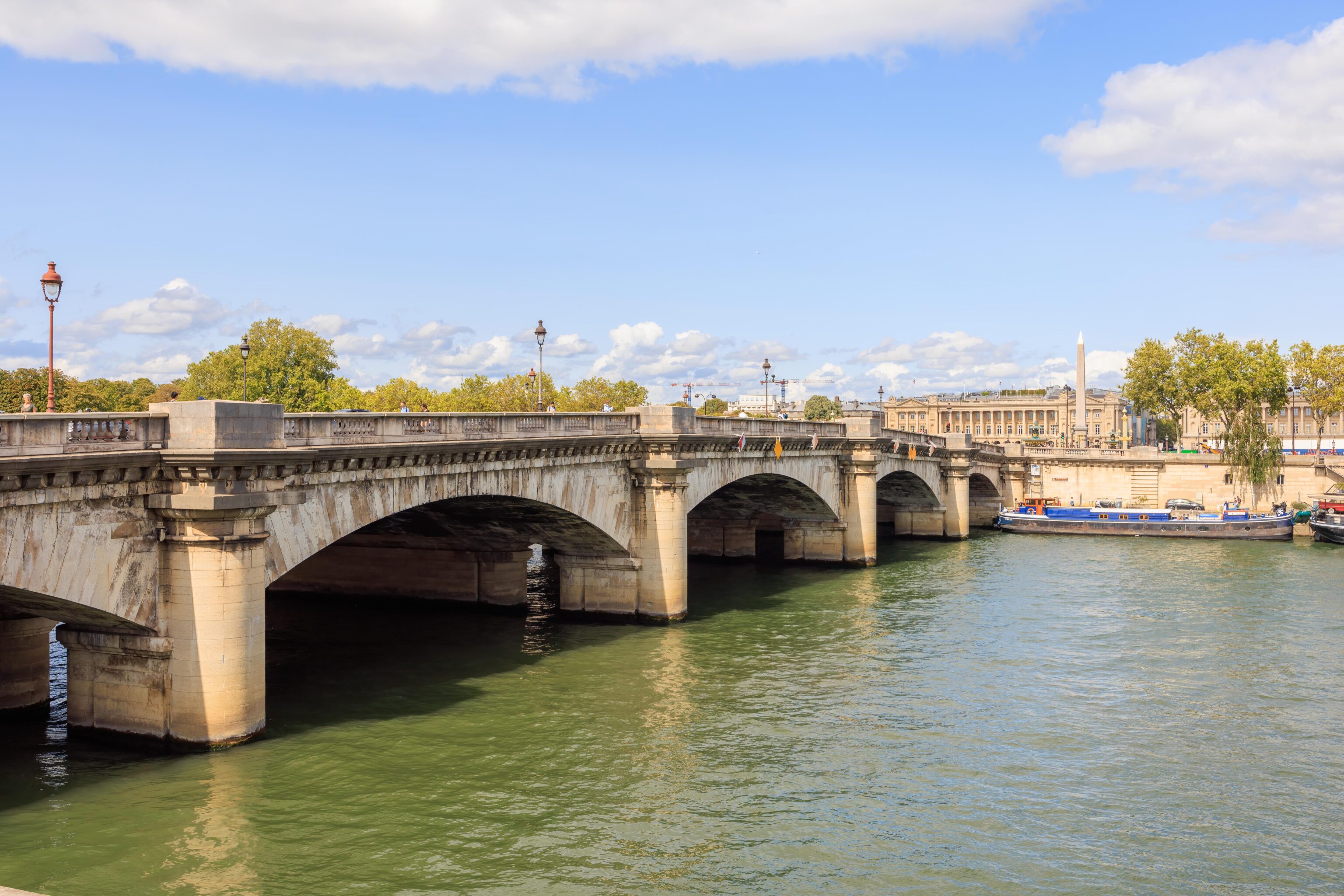
We exited the Metro near the Pont de la Concorde, a bridge leading to the Place de la Concorde on the other side of the Seine.
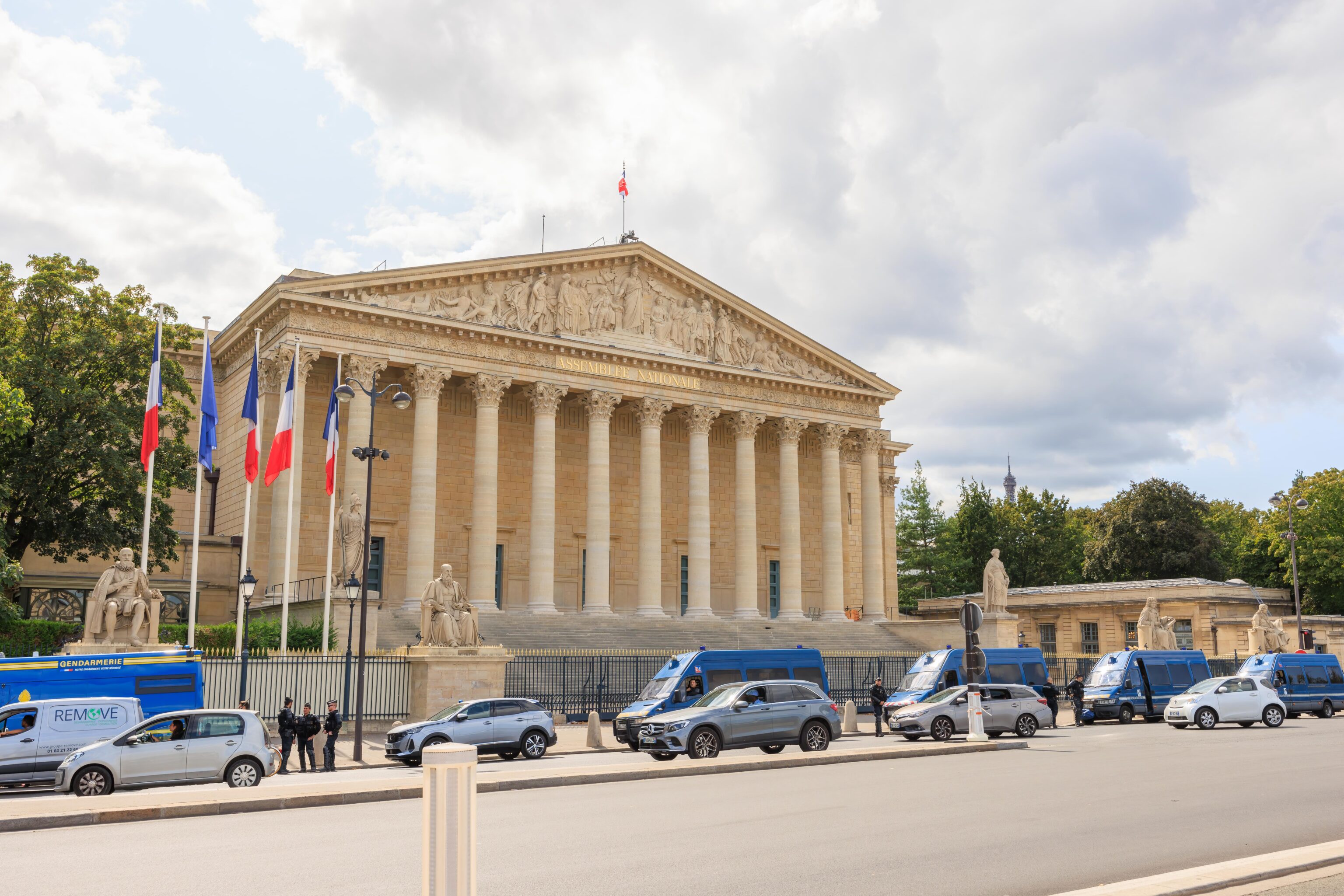
The Assemblée Nationale station is, indeed, by the National Assembly which is on the southern end of the Pont de la Concorde. It was being guarded by armed members of the Gendarmerie, the French military police.
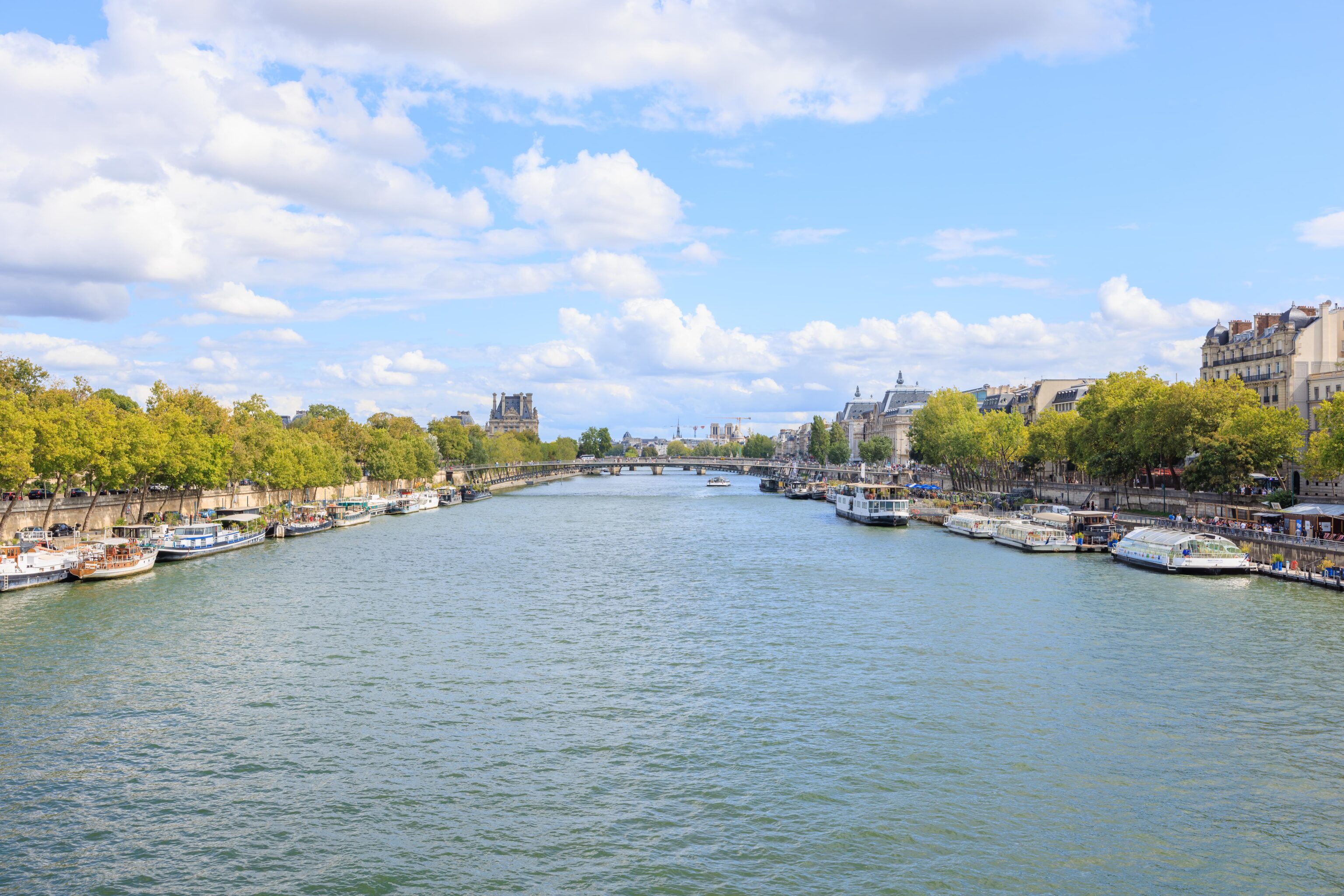
We crossed the bridge and headed to the Place de la Concorde. Looking to the east, we could see the bridge that we crossed in the morning to get to the Musée d’Orsay.
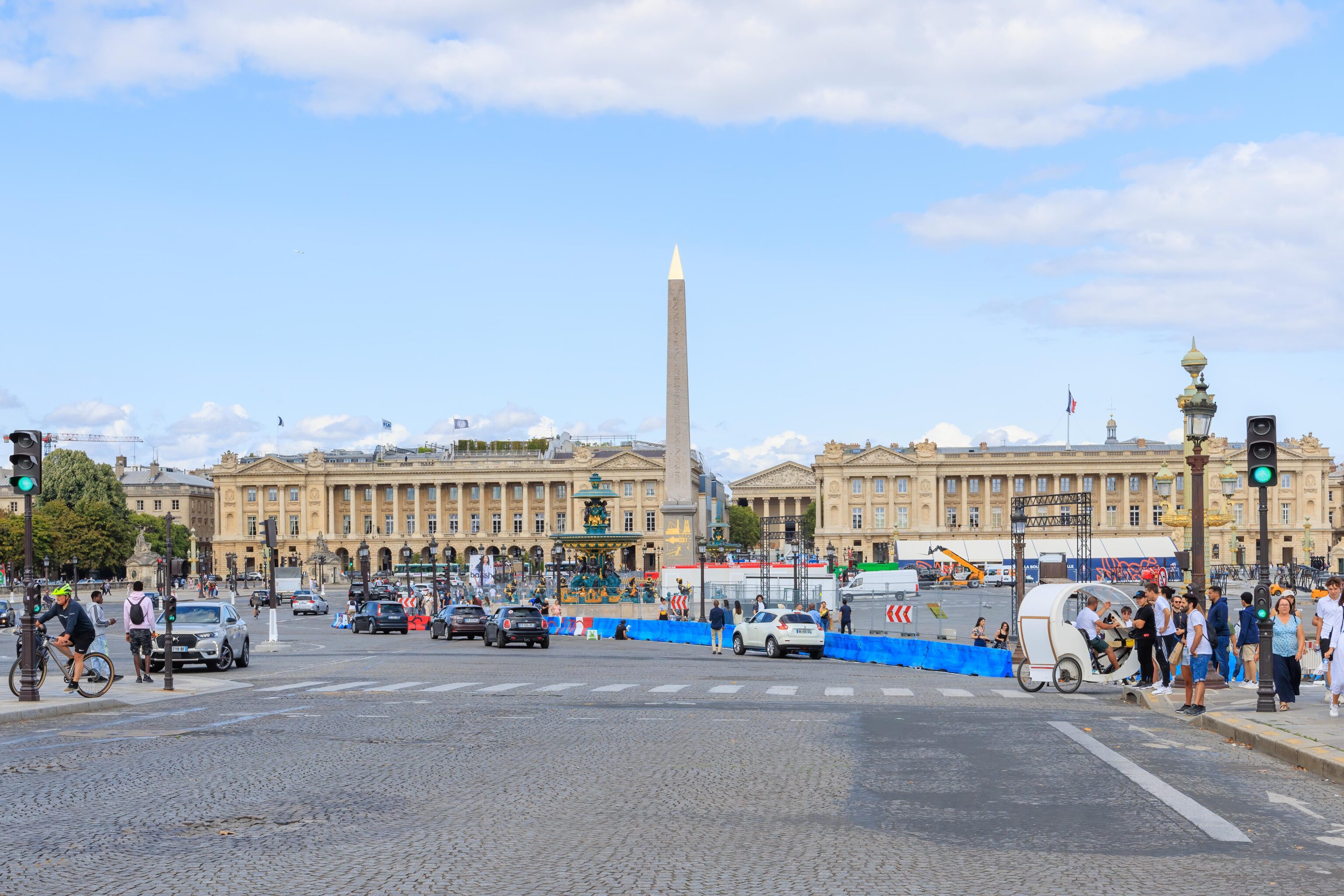
There was unfortunately construction going on at the Place de la Concorde. The entire eastern half of it was not accessible.
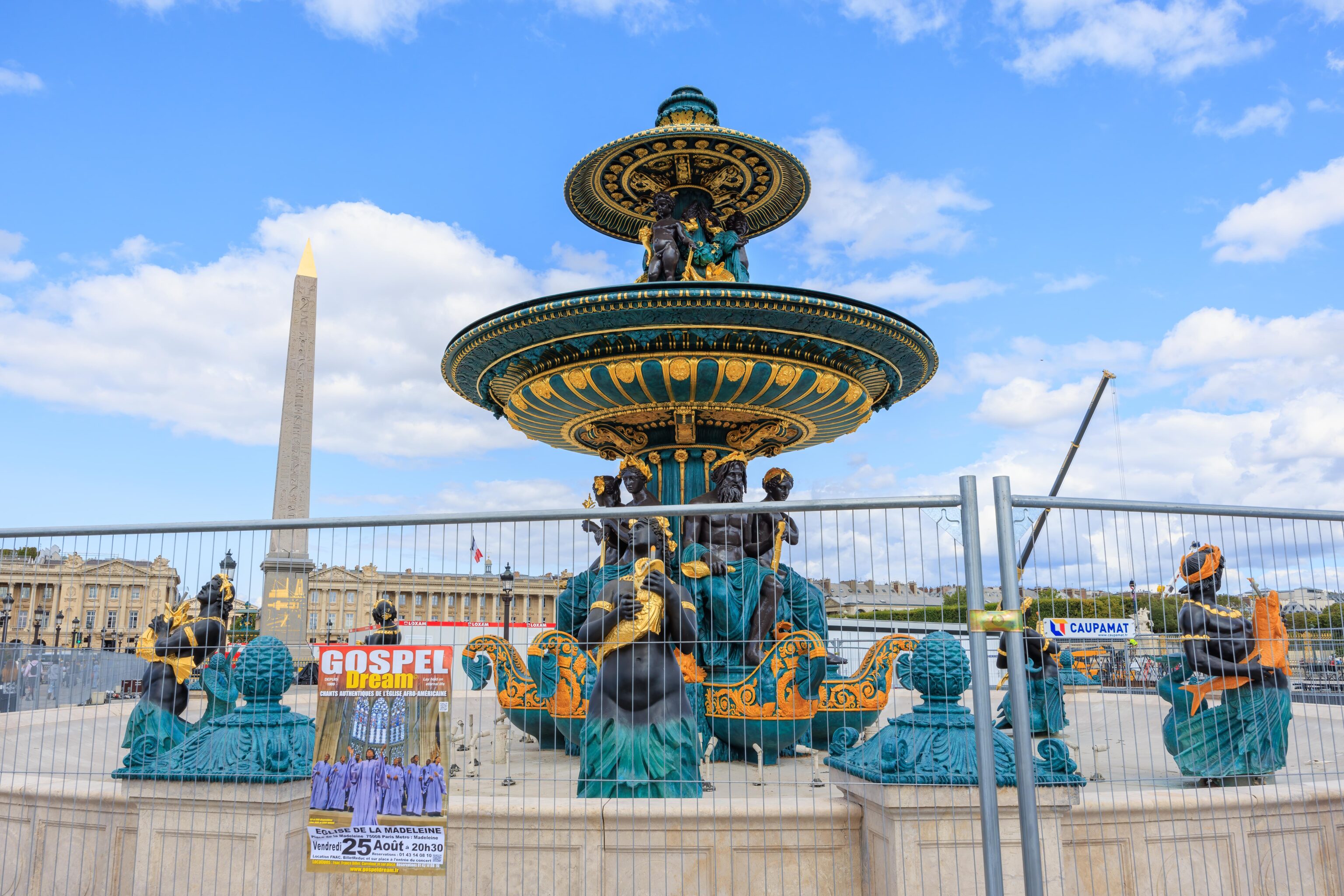
The pair of fountains on either side of the obelisk were dry. This is the one to the south, the Fontaine des Mers.
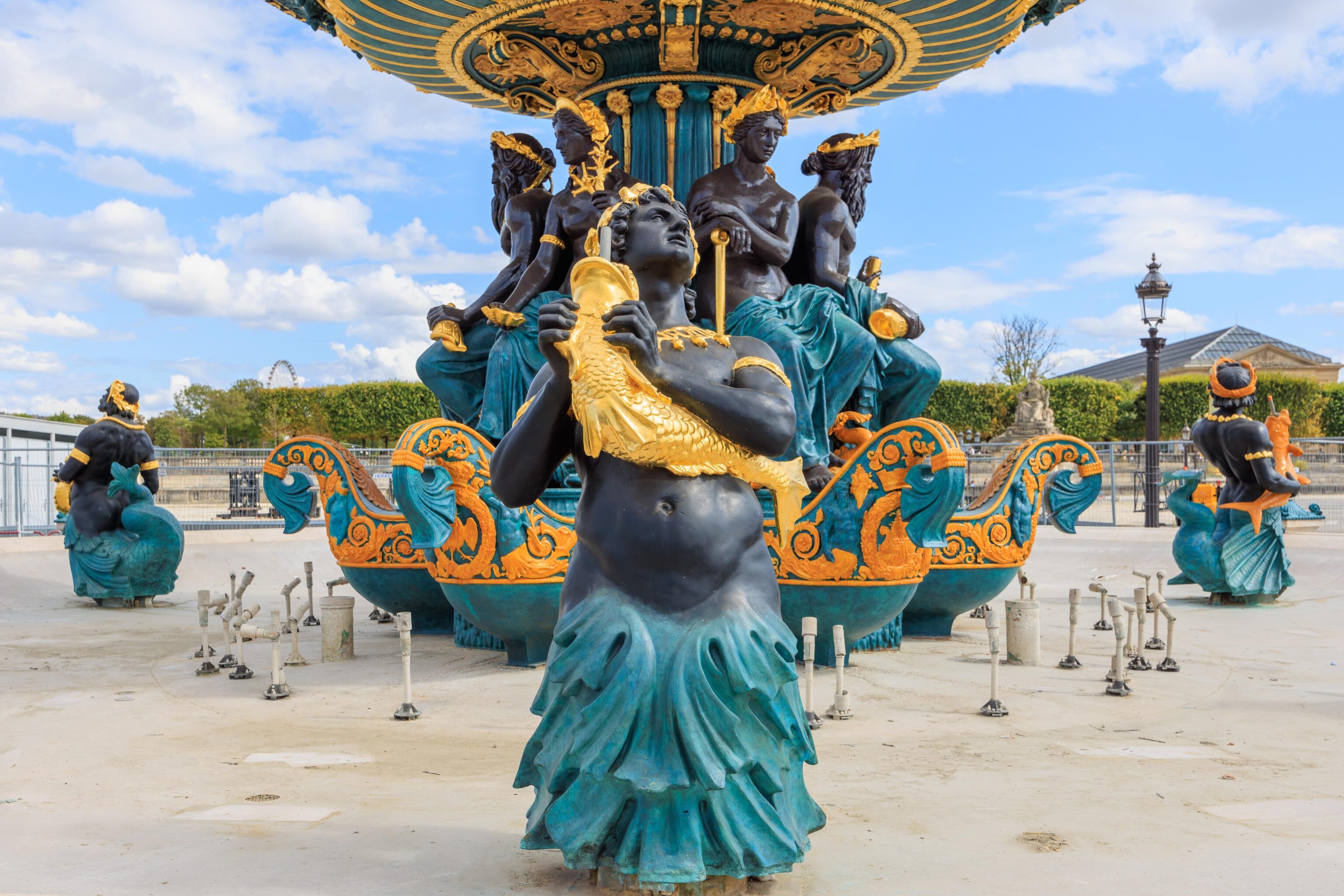
If you squeeze a fish, water comes out! Or at least, water is supposed to come out.
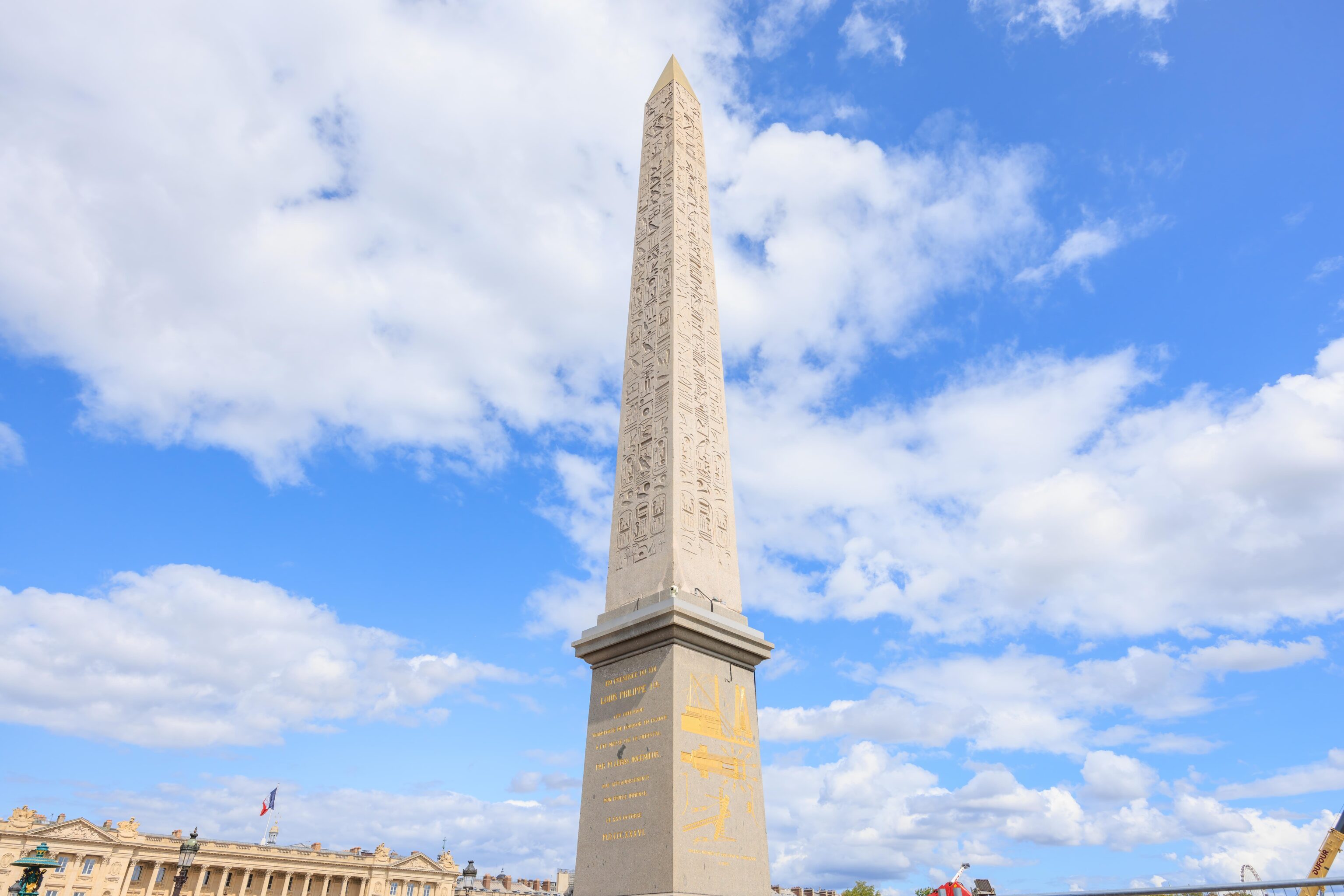
The Luxor Obelisk that stands here today is actually one of a pair of obelisks. The other one, which is taller, is still in Luxor in Egypt. This obelisk was a gift from the Ottoman Empire to France from when they ruled Egypt. They were both originally gifted to the British but they gave them to France instead. The other obelisk was also gifted to France but was never moved, possibly due to the technical difficulty and cost at the time.
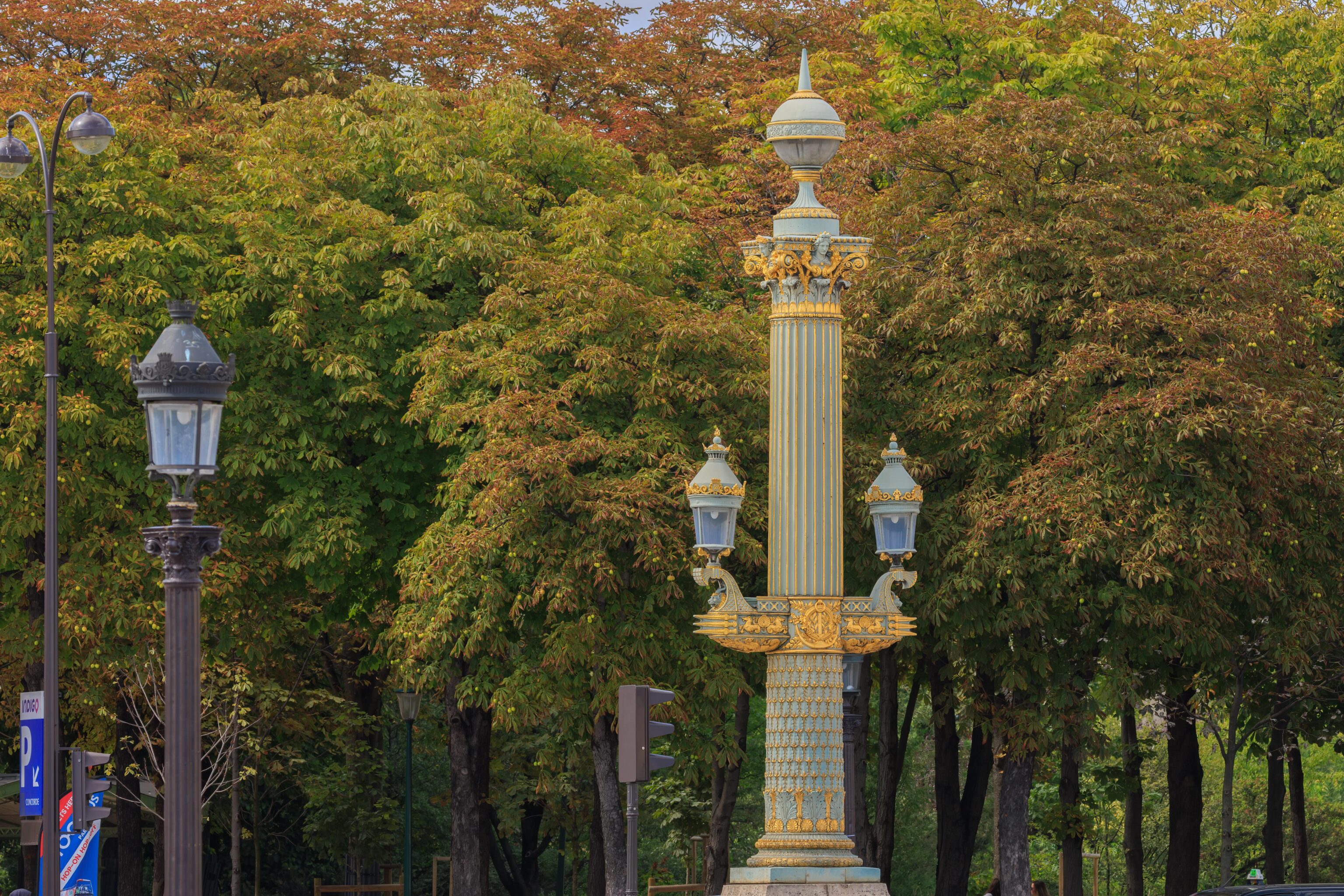
Some of lamps in the area, like this one, are pretty fancy!
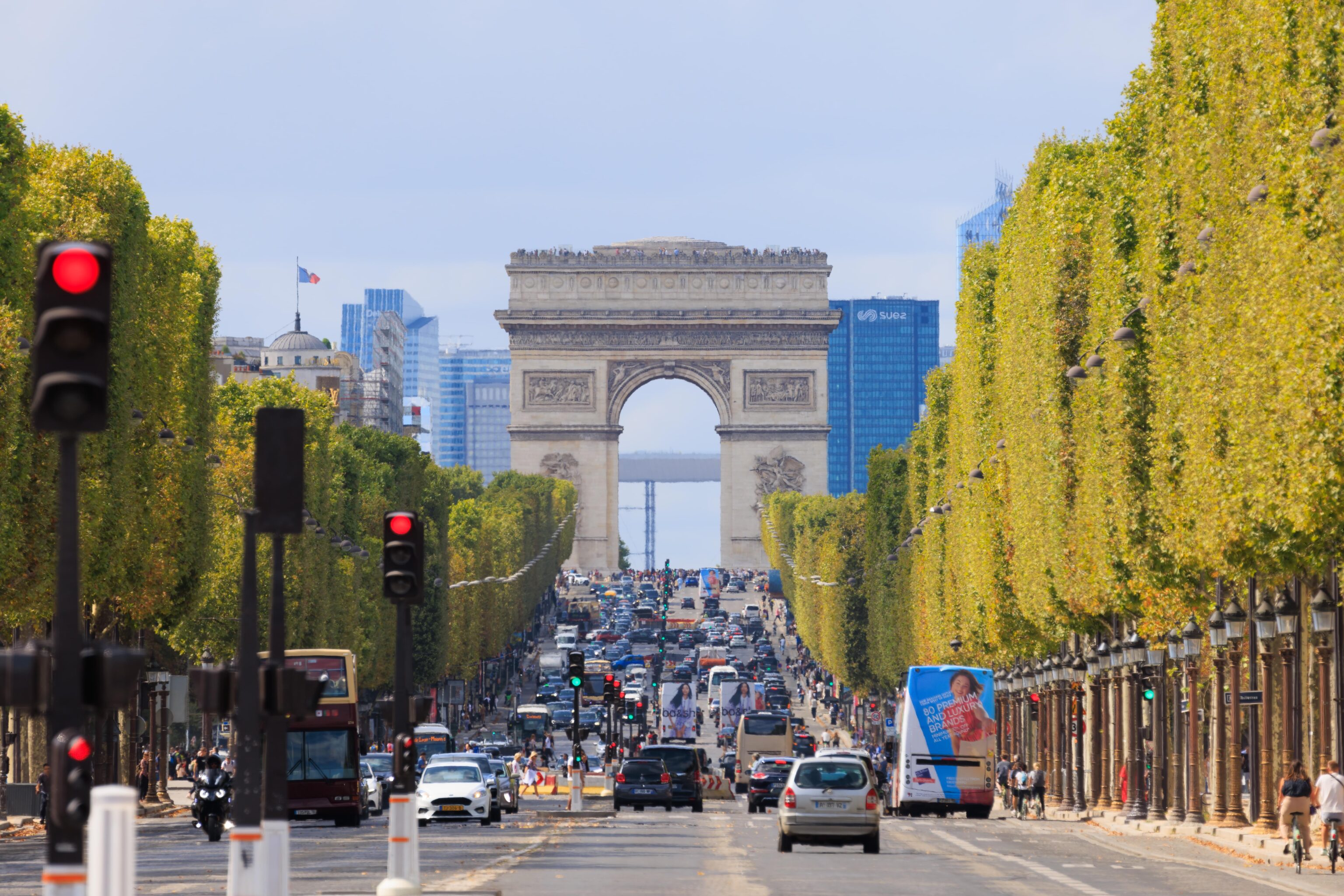
Place de la Concorde also has a great view of the Arch de Triomphe! The Grande Arche de la Defense is partially visible beyond, though only the top part can be seen. The rather ugly vertical beams are apparently open elevator shafts for high speed glass elevators that lead to the rooftop terrace, which is currently closed.
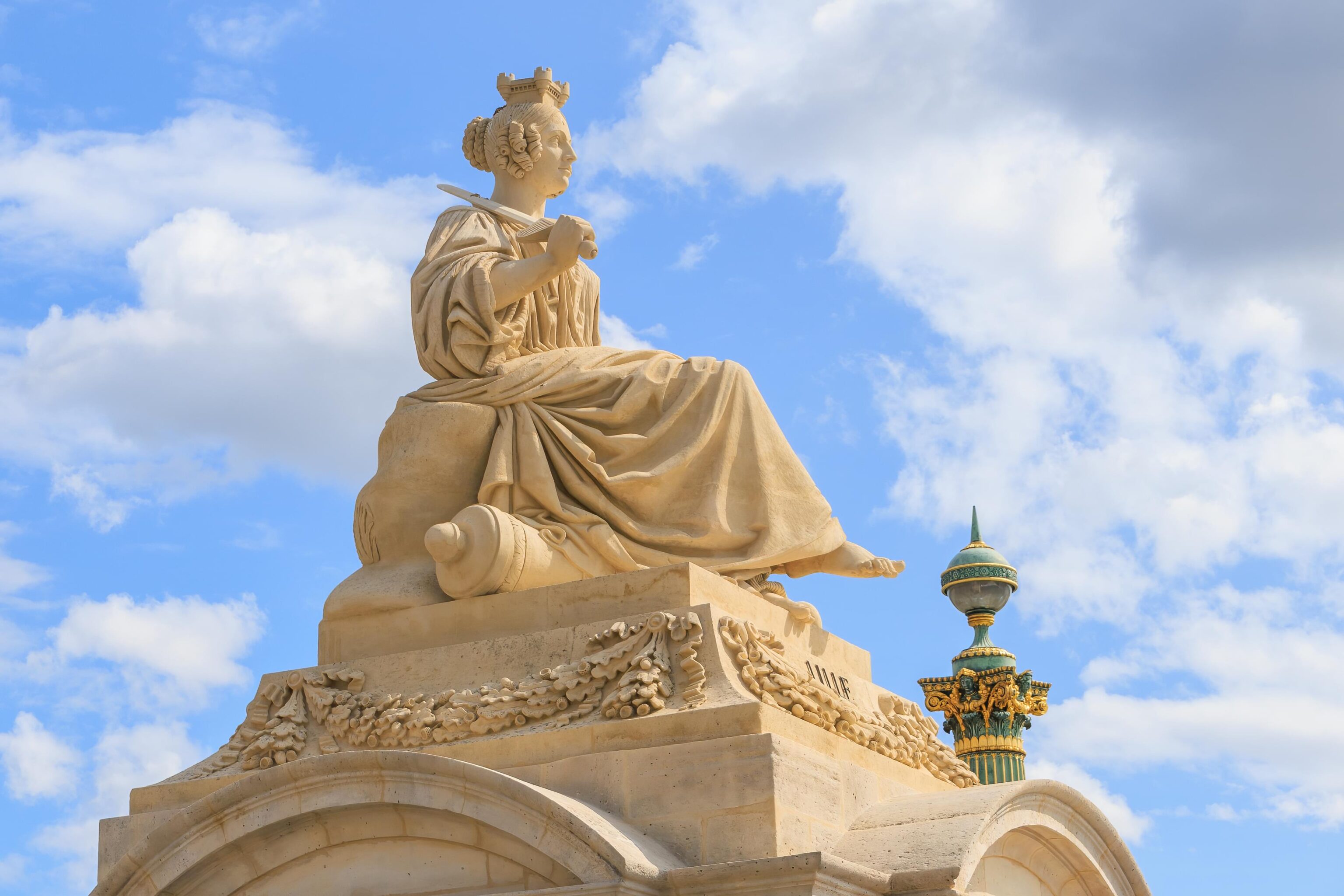
We looped around the construction zone via the north. This statue sits at the northeastern corner of the Place de la Concorde. There are eight statues around the square, each representing the capital of a former French province. This one is Lille. Britannica explains7:
Around the periphery of the square, Gabriel built eight giant pedestals upon which statues representing provincial capitals were eventually placed. Viewed clockwise from the Hôtel de la Marine, the statues symbolize Lille, Strasbourg, Lyon, Marseille, Bordeaux, Nantes, Brest, and Rouen.
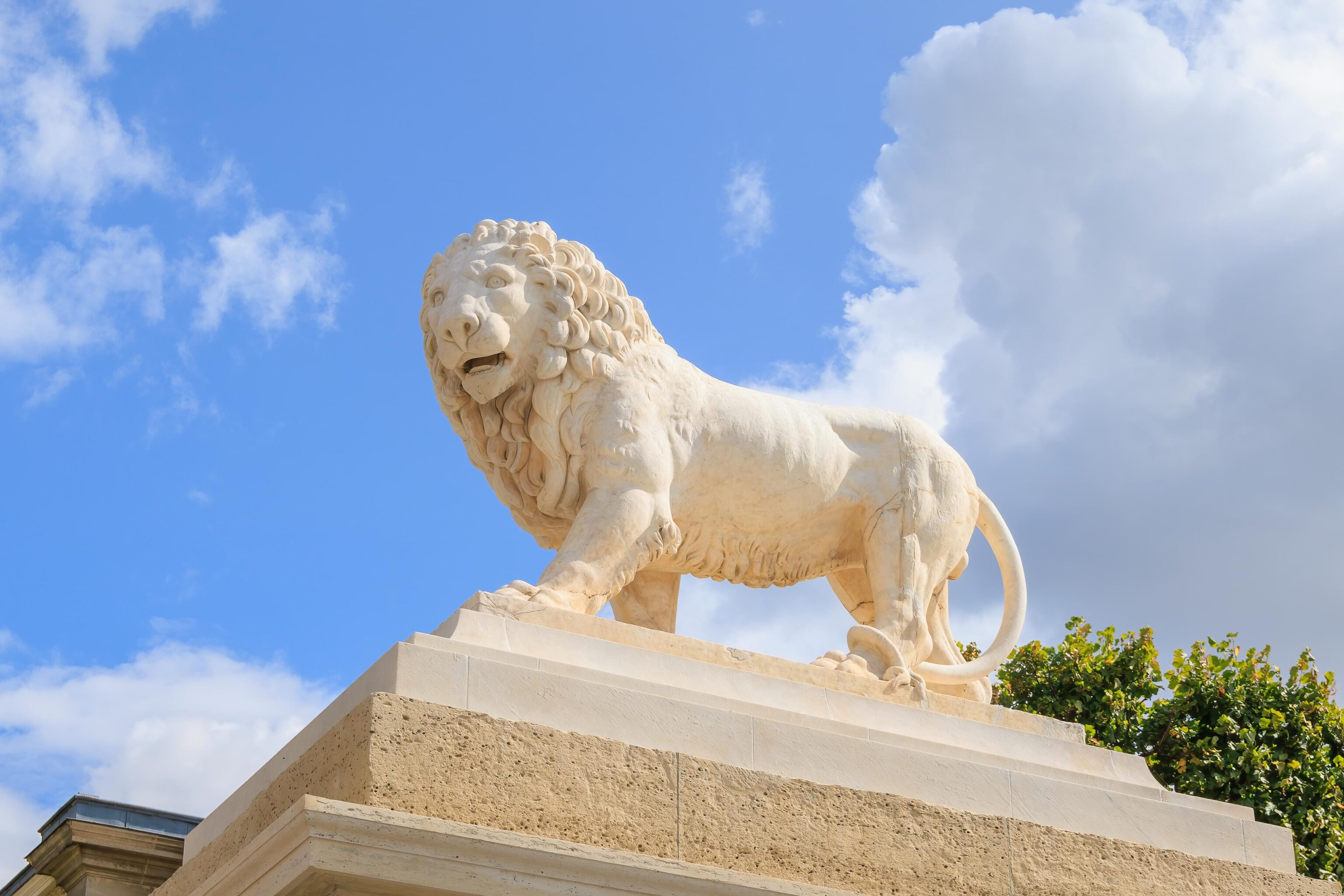
We entered the Tuileries Garden near this lion.
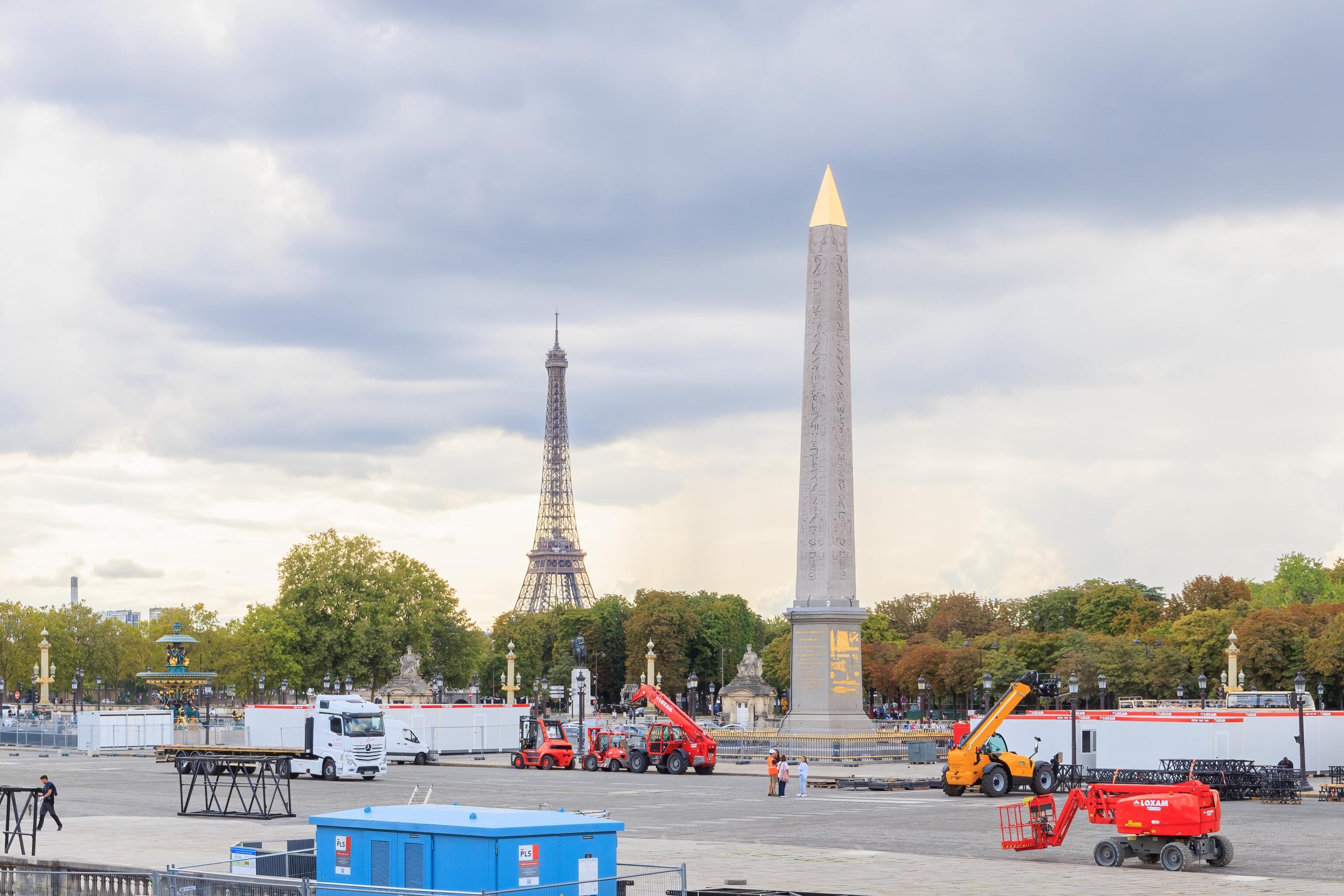
We sat on a pair of chairs under the trees for awhile. We had a view of the Eiffel Tower and Luxor Obelisk from here, along with some construction equipment.
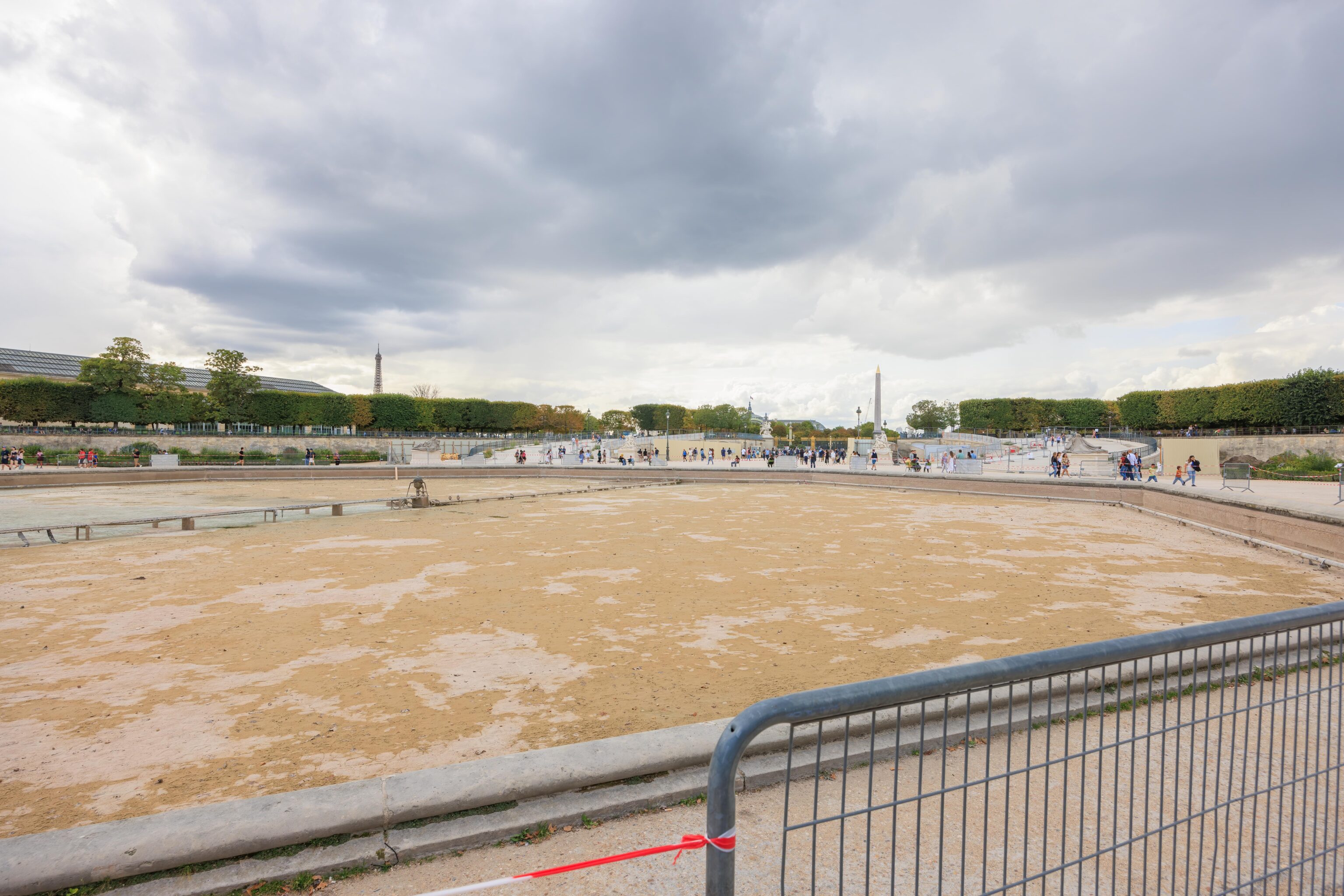
Afterwards, we continued walking to the east, ending up here at the Bassin Octogonal (Octagonal Basin). It was being renovated and was dry.
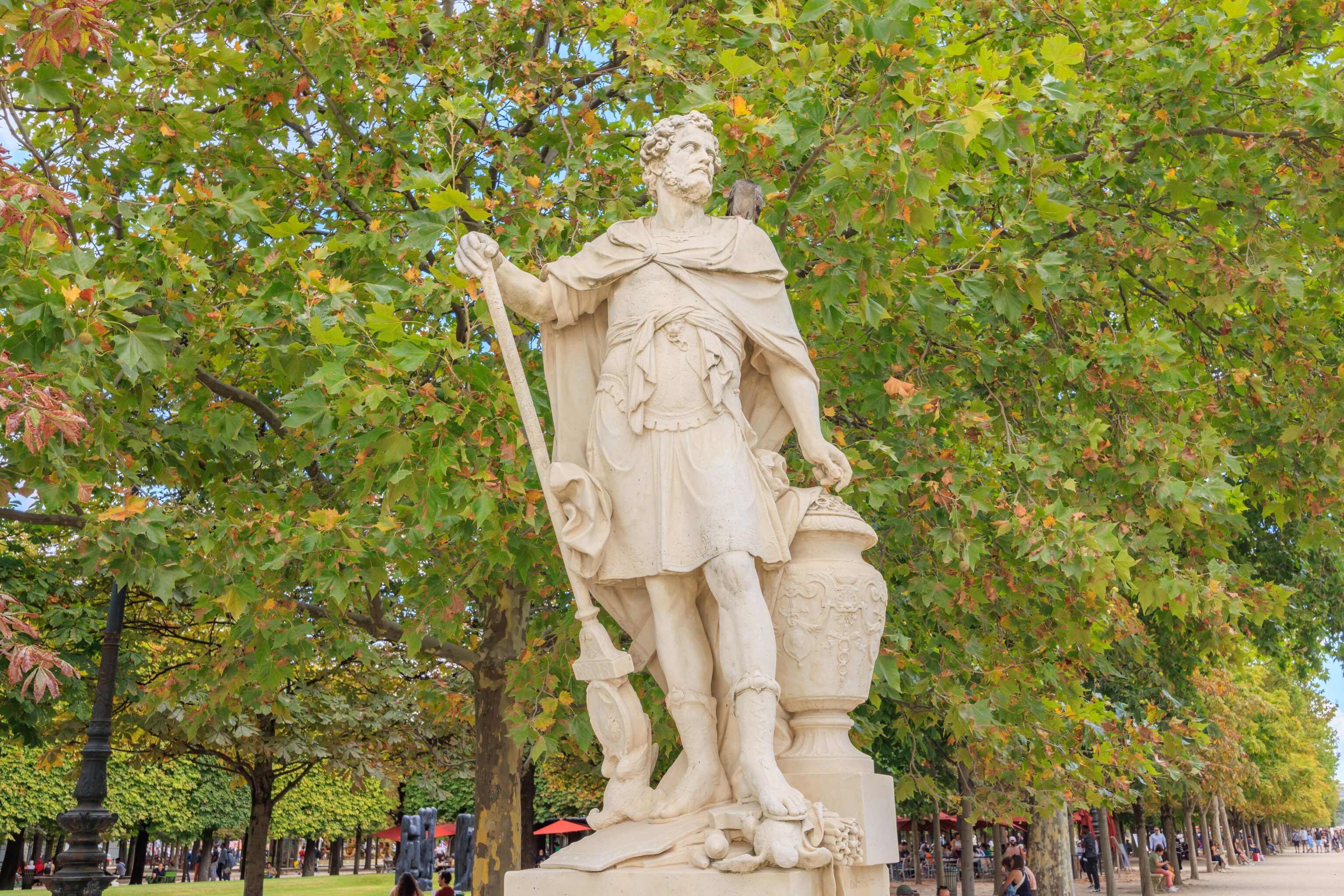
So, we continued on. This statue is of Hannibal, the King of Carthage. We photographed it because there was a feral pigeon standing on his shoulder. Too bad the bird turned its head around, probably to preen some feathers, when we took the photo. Now it just looks like a headless bird!
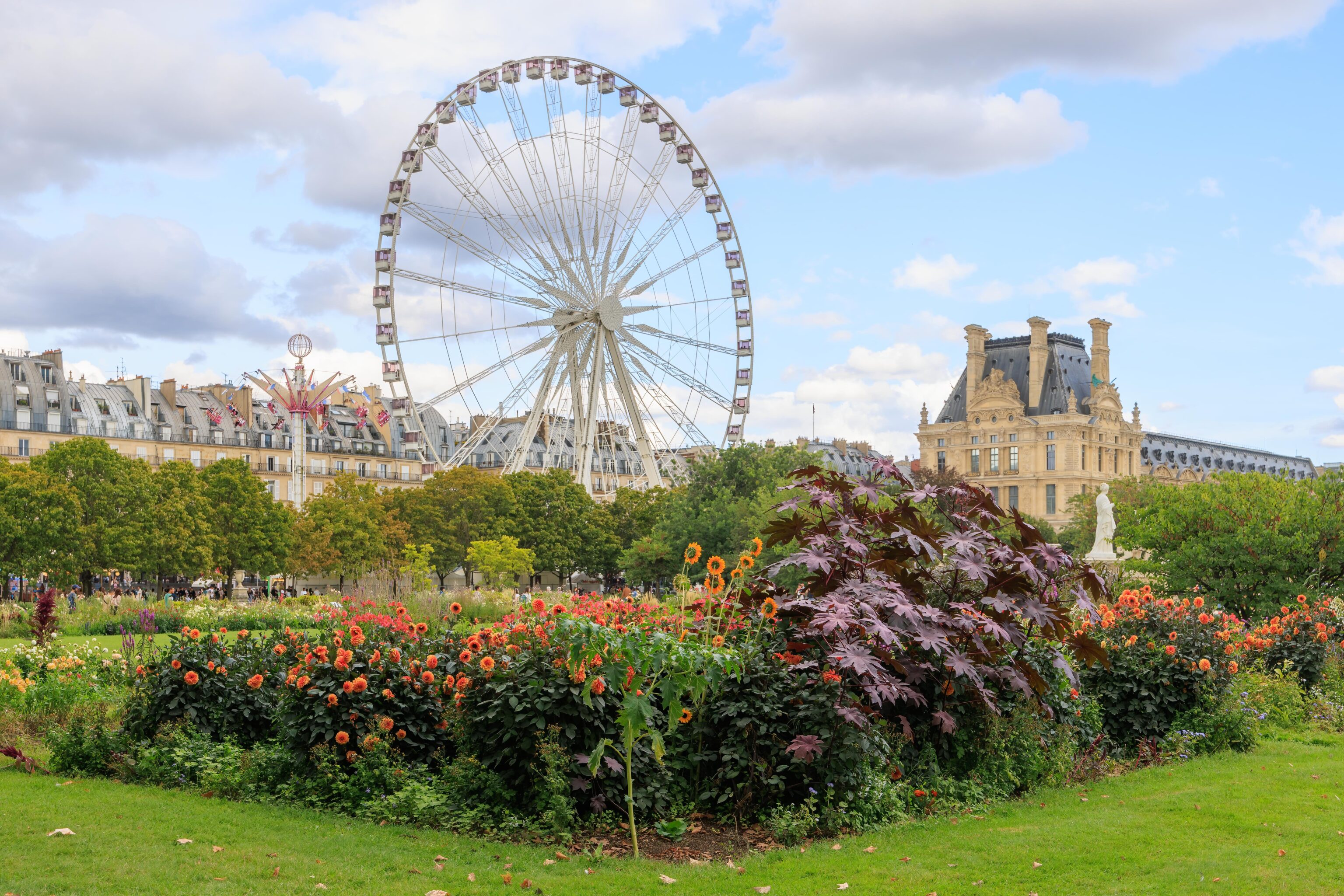
An amusement park occupies the northern edge of the Tuileries Garden during the summer. The Ferris wheel, the Roue de Paris, was created in 2000 for the new millennium and previously sat at the Place de la Concorde. It is transportable and has been in various locations over the years. This summer, it is back here in Paris.
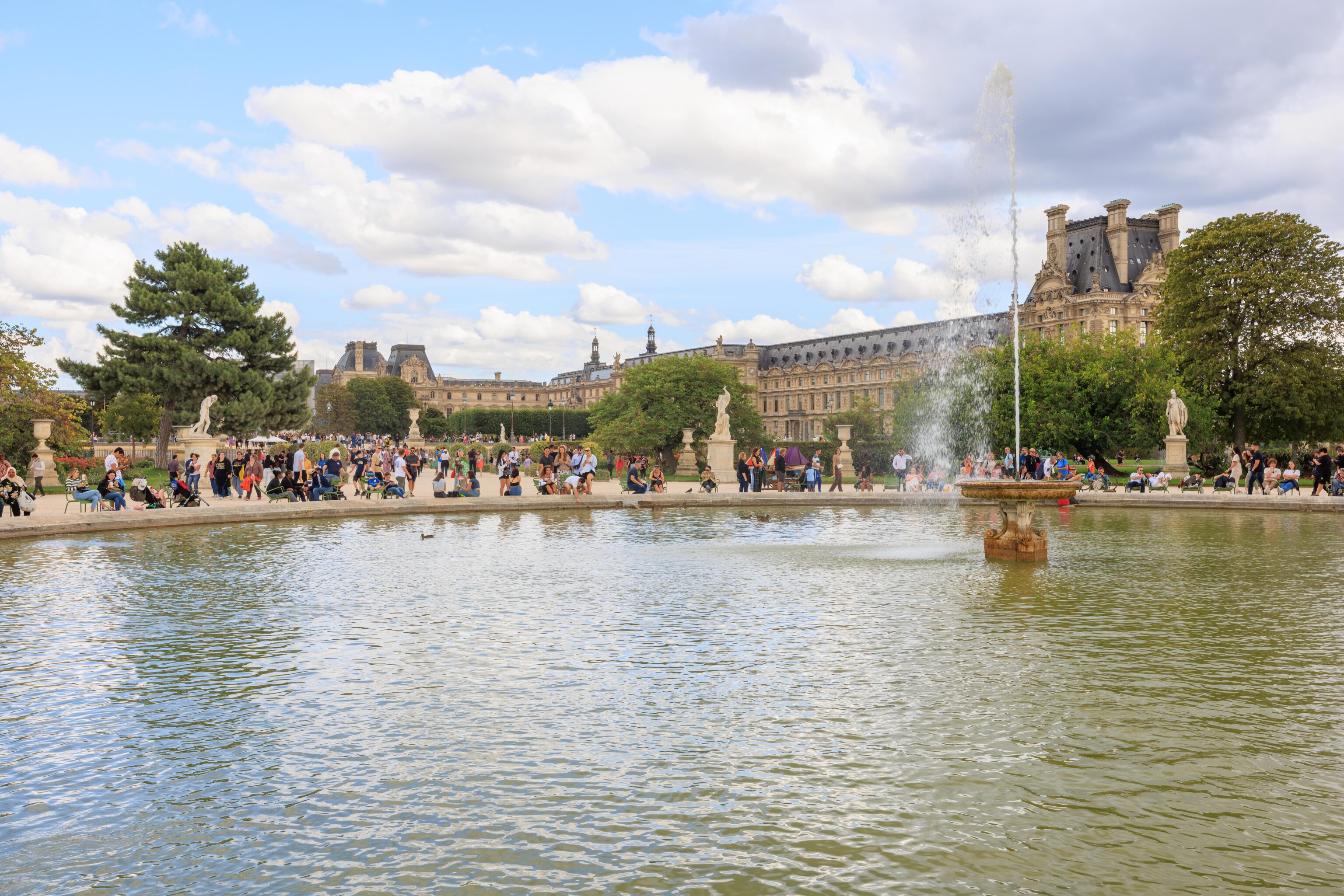
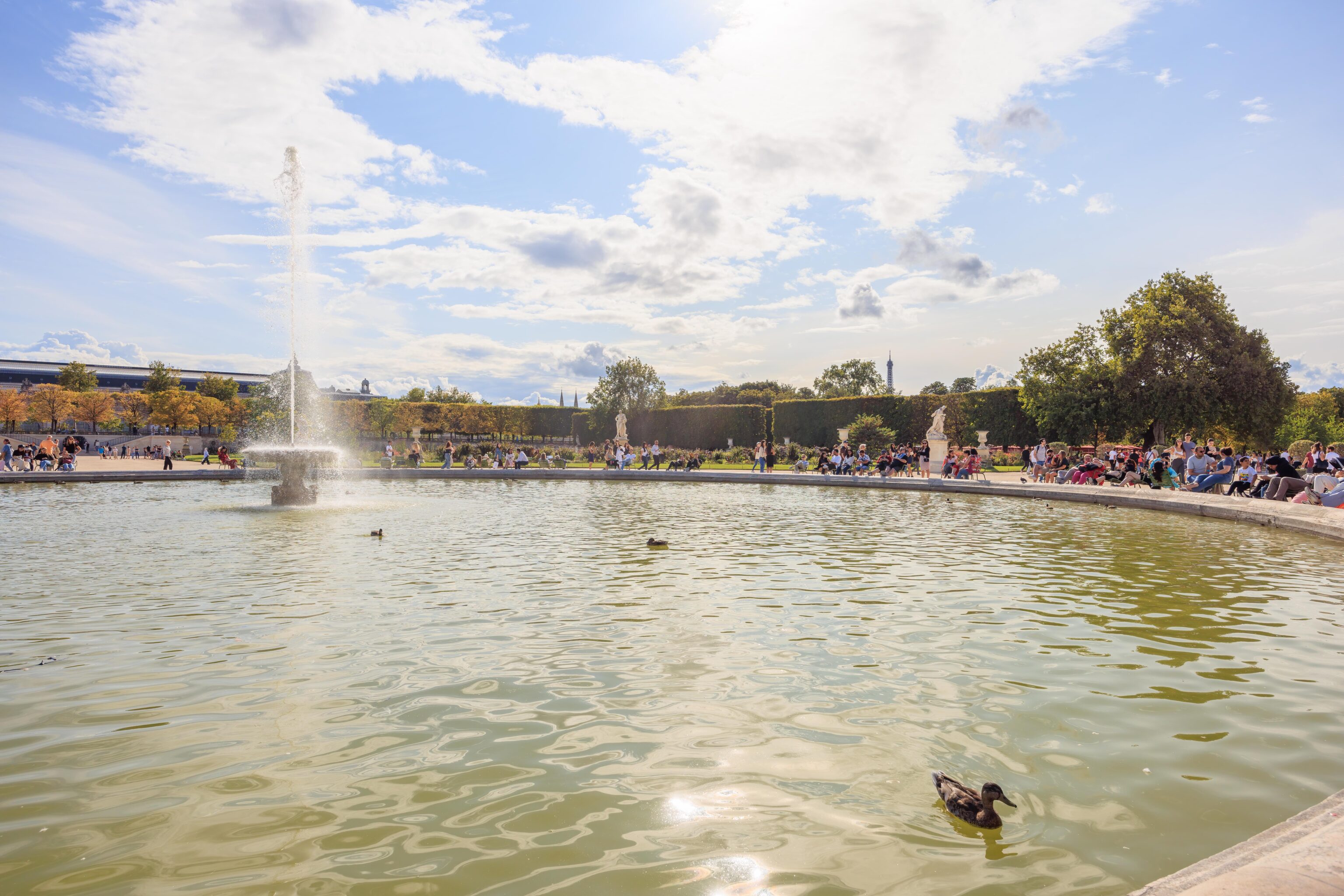
We continued walking and ended up back at the Grand Bassin Rond where we sat in the morning. It was significantly busier than earlier! We managed to find a pair of empty chairs and start around for awhile. It actually rained for a bit, though we were well equipped with rain shells in a backpack. It didn’t rain much.
After sitting for awhile, we left the park and visited Ladurée, a Parisian macaron shop that has multiple locations in Paris as well as globally, including 12 in the US.
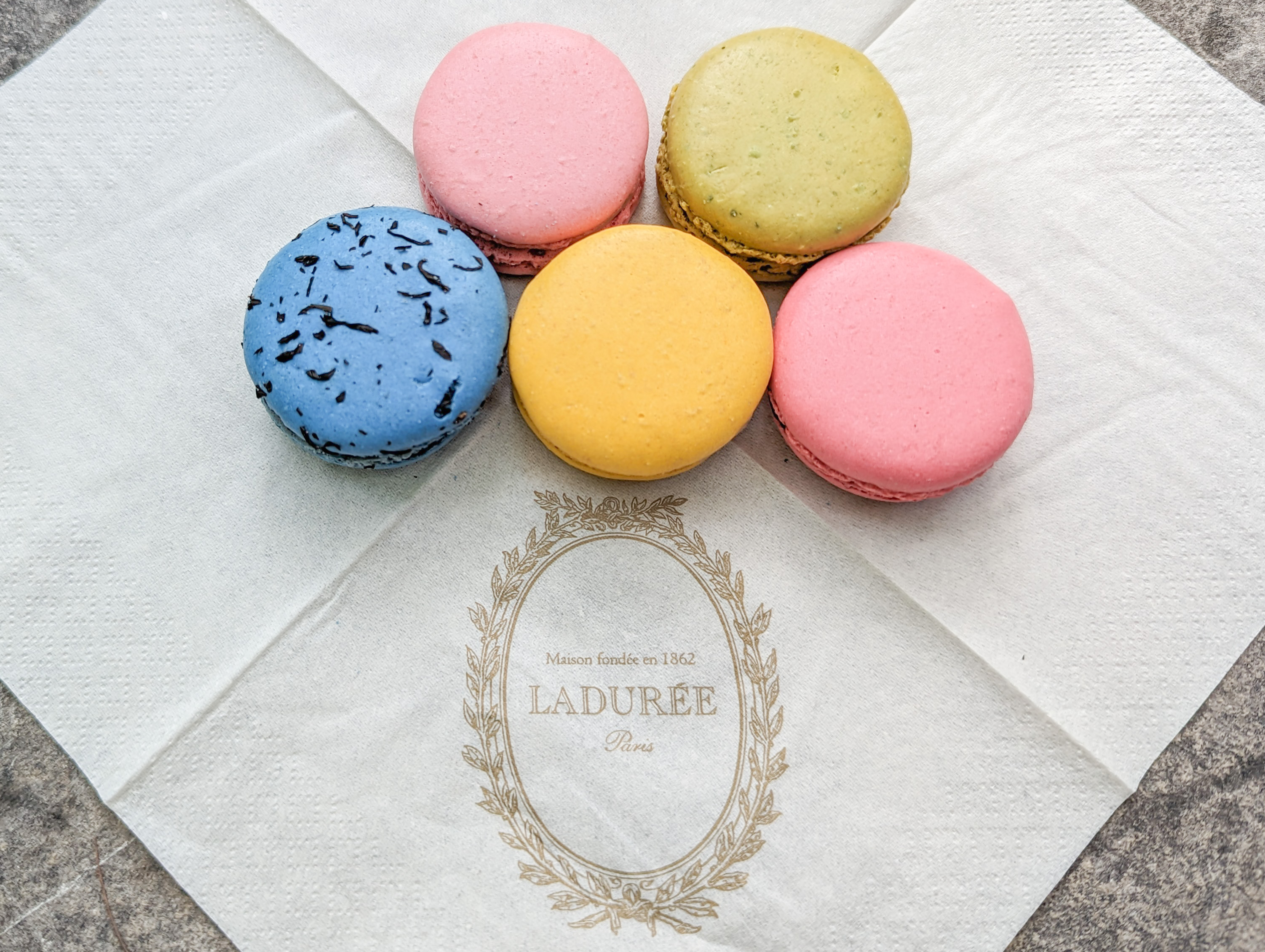
The shop was small with no seating. We bought five macarons and brought them back to the garden to eat. They were very good!
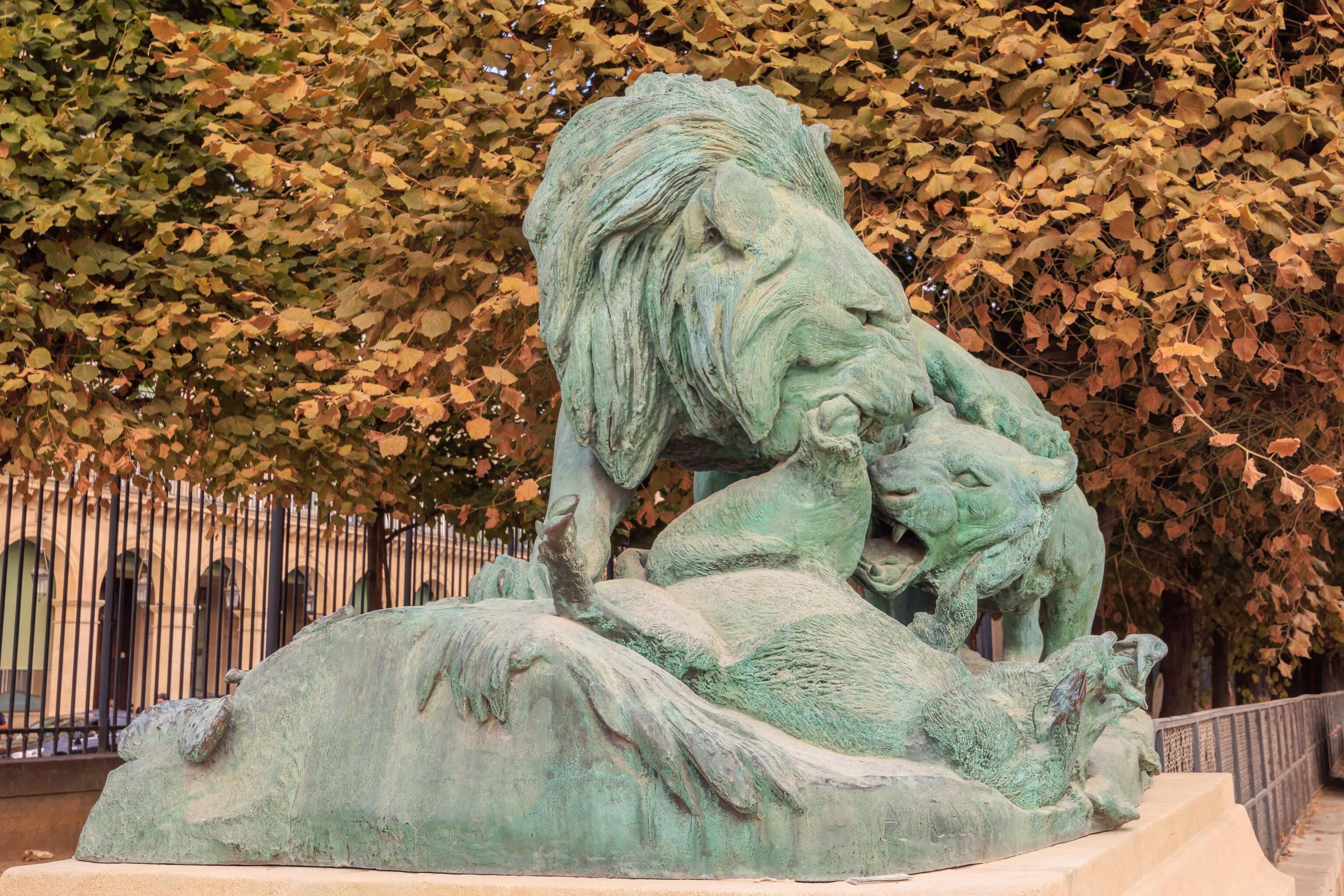
We exited the garden once again, passing by a sculpture of two lions fighting over a boar.
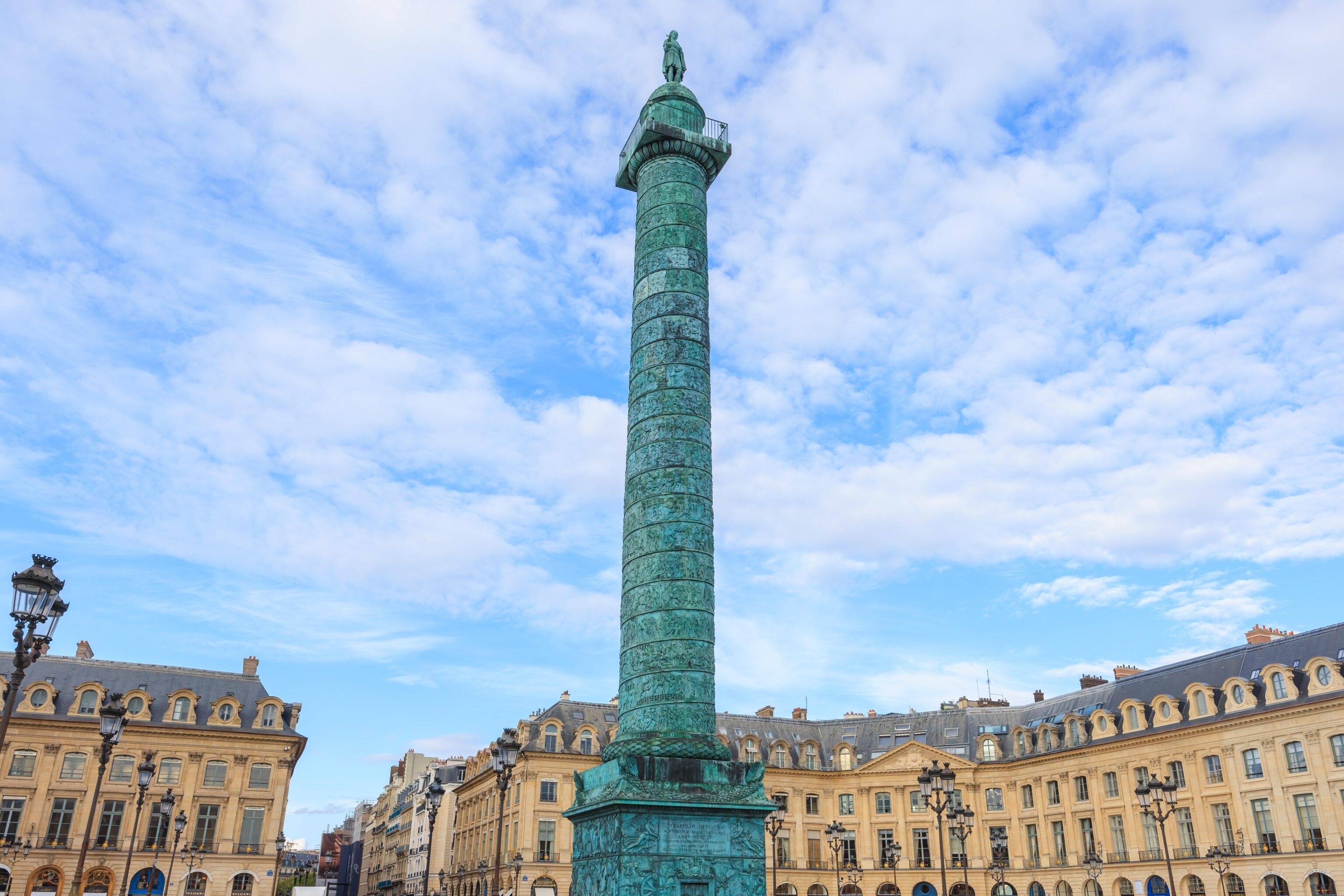
We walked three small blocks to Place Vendôme, to the north of the garden. The Colonne Vendôme is at the center. This column is created in 1810 in honor of Napoleon’s victory at the Battle of Austerlitz against Russia and Austria. Napoleon stands at the top of the column.
The Fondation Napoléon describes the decorations that wrap around the column8:
A 280 metre-long frieze of bas-reliefs, designed from drawings by Bergeret, winds round the column depicting the major events of the campaign – from the camp in Boulogne to the return of the Emperor and his guard in 1806.
The column was destroyed during the Paris Commune and recreated in 1873.
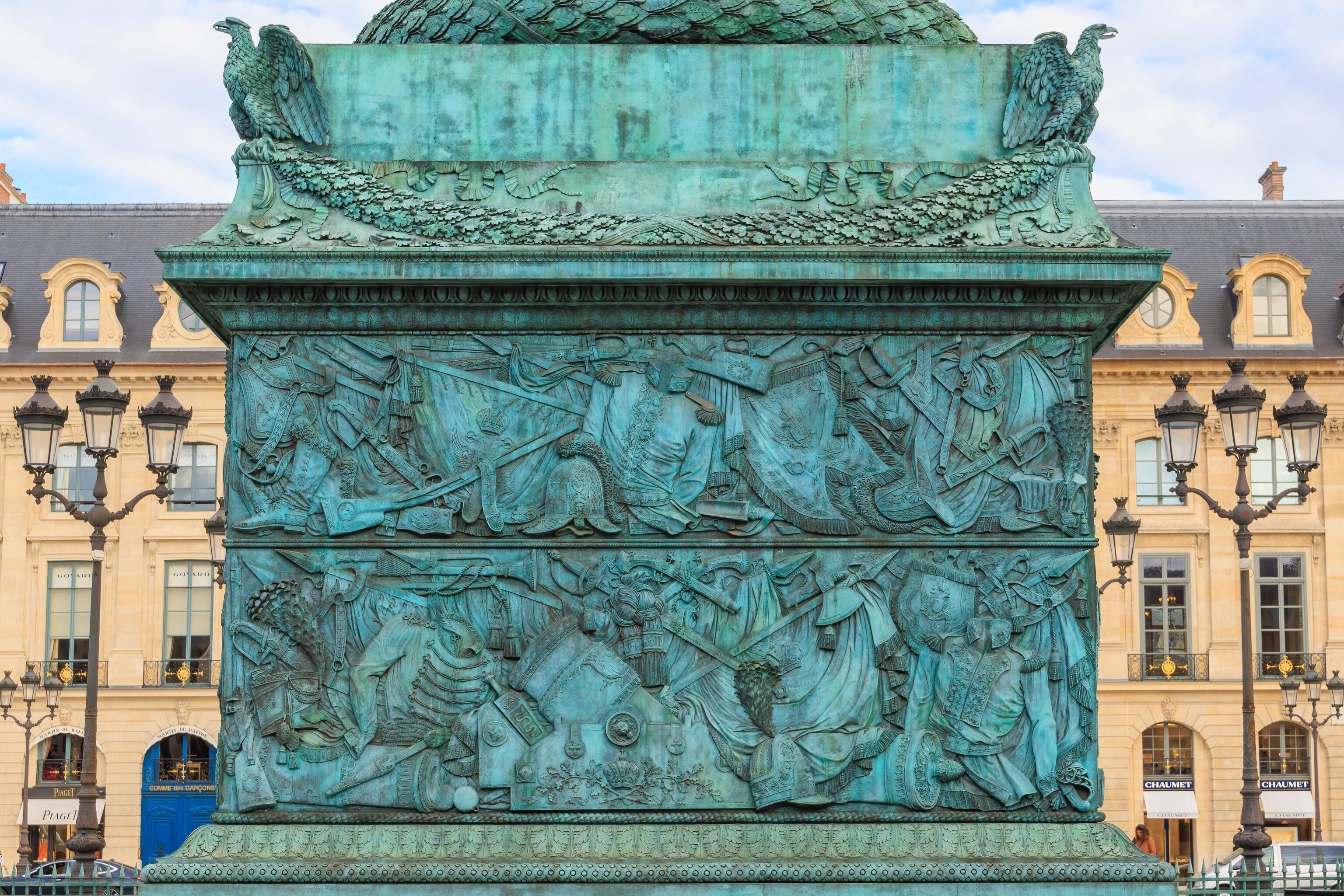
The pedestal upon which the column sits is also well decorated.
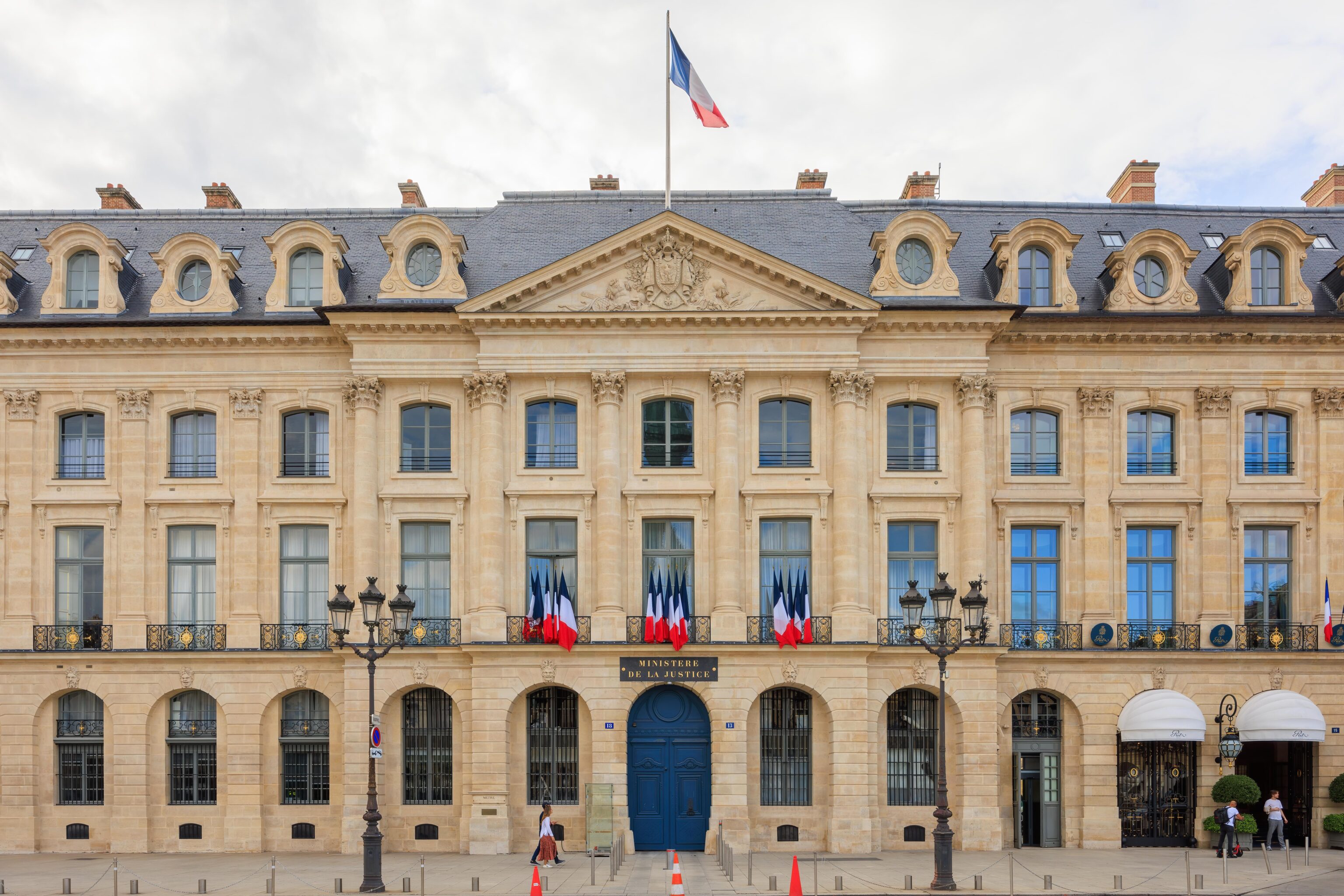
Place Vendôme is surrounded on all sides by identical looking buildings. They are occupied by various businesses including high end luxury retail. The French Ministry of Justice is at the northwest edge. We only noticed it due to the clusters of flags. This way of displaying flags seems to be somewhat common in Paris.
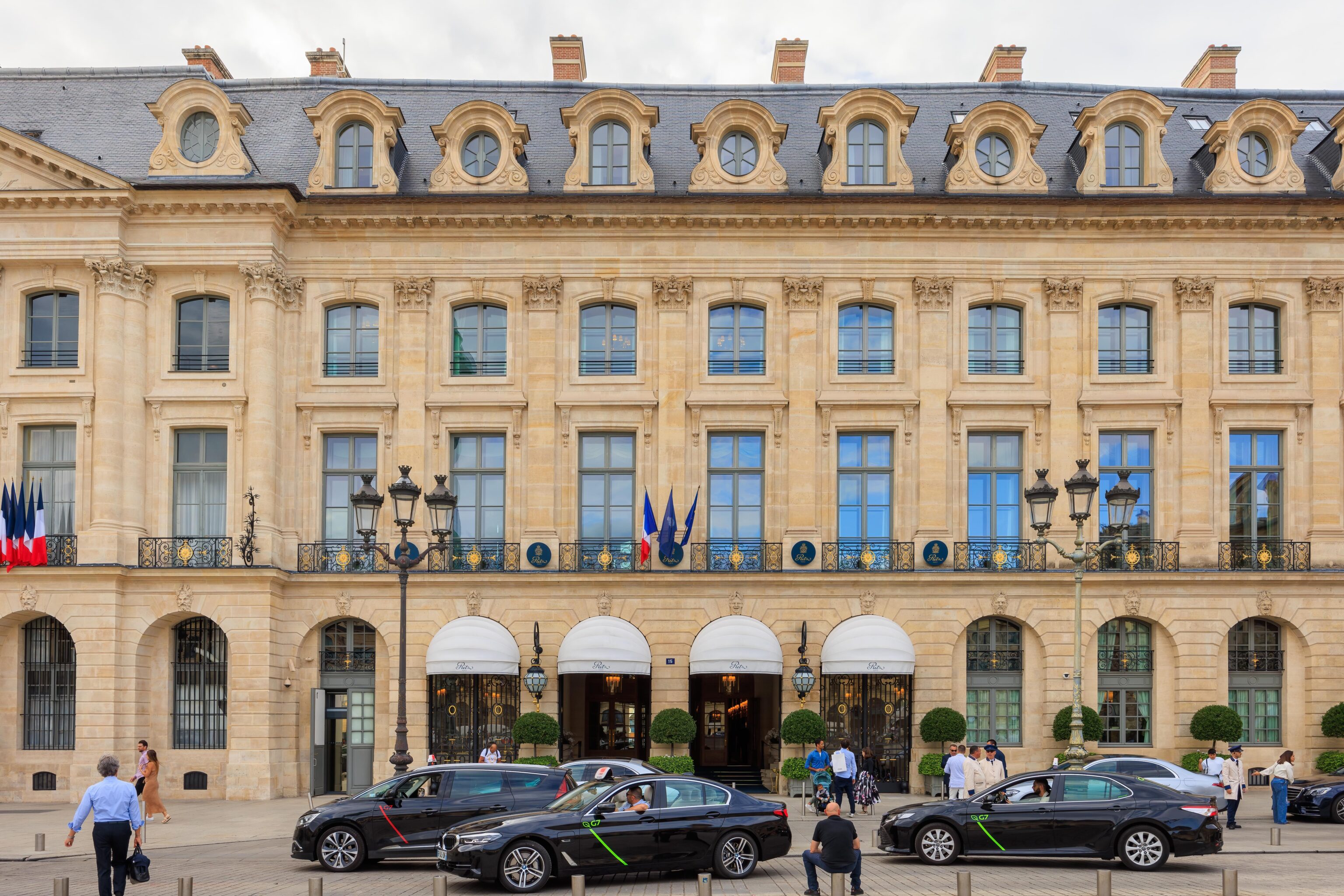
The square is also home to the Ritz Paris, adjacent to the Ministry of Justice. The Ritz hotels, founded by César Ritz of Switzerland, are the origin of the English term ritzy, used to describe something luxurious and glamorous. Looking at a random day in the near future, the Ritz costs about ten times as much as the Le Méridien Etoile where we are staying.
The hotel was rescued by the Egyptian Mohamed Al-Fayed in 1979. The last name may be familiar. He is the father of Dodi Fayed who died with Princess Diana here in Paris. We saw where they died yesterday, in a tunnel below a replica of the Statue of Liberty’s torch. The hotel is featured in a few episodes of Netflix’s The Crown, which we watched earlier this year. We’re anticipating the final season but it is kind of like Titanic, you know what is going to happen.
By now, we were pretty tired from a day of walking around and having not had enough sleep for two nights in a row. We wanted a very quick meal. French food is not particularly quick. So we tried something that wasn’t French! We went to Little Shao, a small Chinese restaurant that was more or less in the area. The waitress didn’t speak any Chinese but she did speak some English.
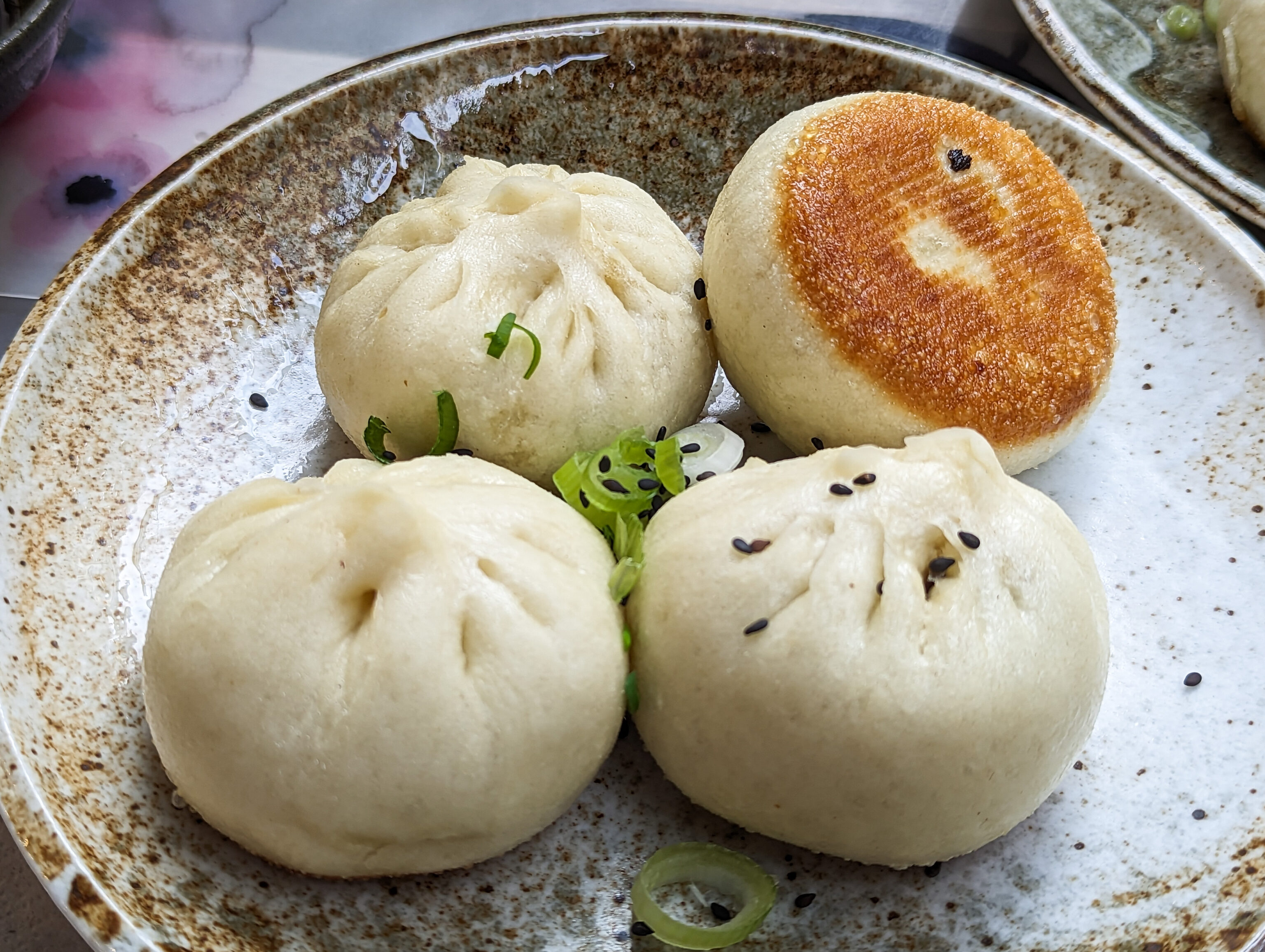
We placed two orders of four bao each, sheng jian bao aux porc (pork) and sheng jian bao au canard (duck). Only one photo because they look identical from the outside. They were OK but nothing special. Probably more of an interest to locals than tourists but at least it was relatively quick and significantly better than going to McDonalds! Though, we probably should have found a boulangerie that was still open.
Afterwards, we headed back to the Le Méridien to get some rest before our next day in Paris!
Outdoors Map
Footnotes
- https://www.musee-orsay.fr/en/whats-on/exhibitions/accro-chat-ge ↩︎
- https://www.musee-orsay.fr/en/artworks/la-nuit-etoilee-78696 ↩︎
- https://www.musee-orsay.fr/en/artworks/bal-du-moulin-de-la-galette-497 ↩︎
- https://www.musee-orsay.fr/en/artworks/romains-de-la-decadence-9493 ↩︎
- https://breakingcharacter.com/bcpeterpansevenfacts/ ↩︎
- https://www.musee-orsay.fr/en/artworks/les-quatre-parties-du-monde-soutenant-la-sphere-celeste-15175 ↩︎
- https://www.britannica.com/place/Place-de-la-Concorde ↩︎
- https://www.napoleon.org/en/magazine/places/vendome-column/ ↩︎


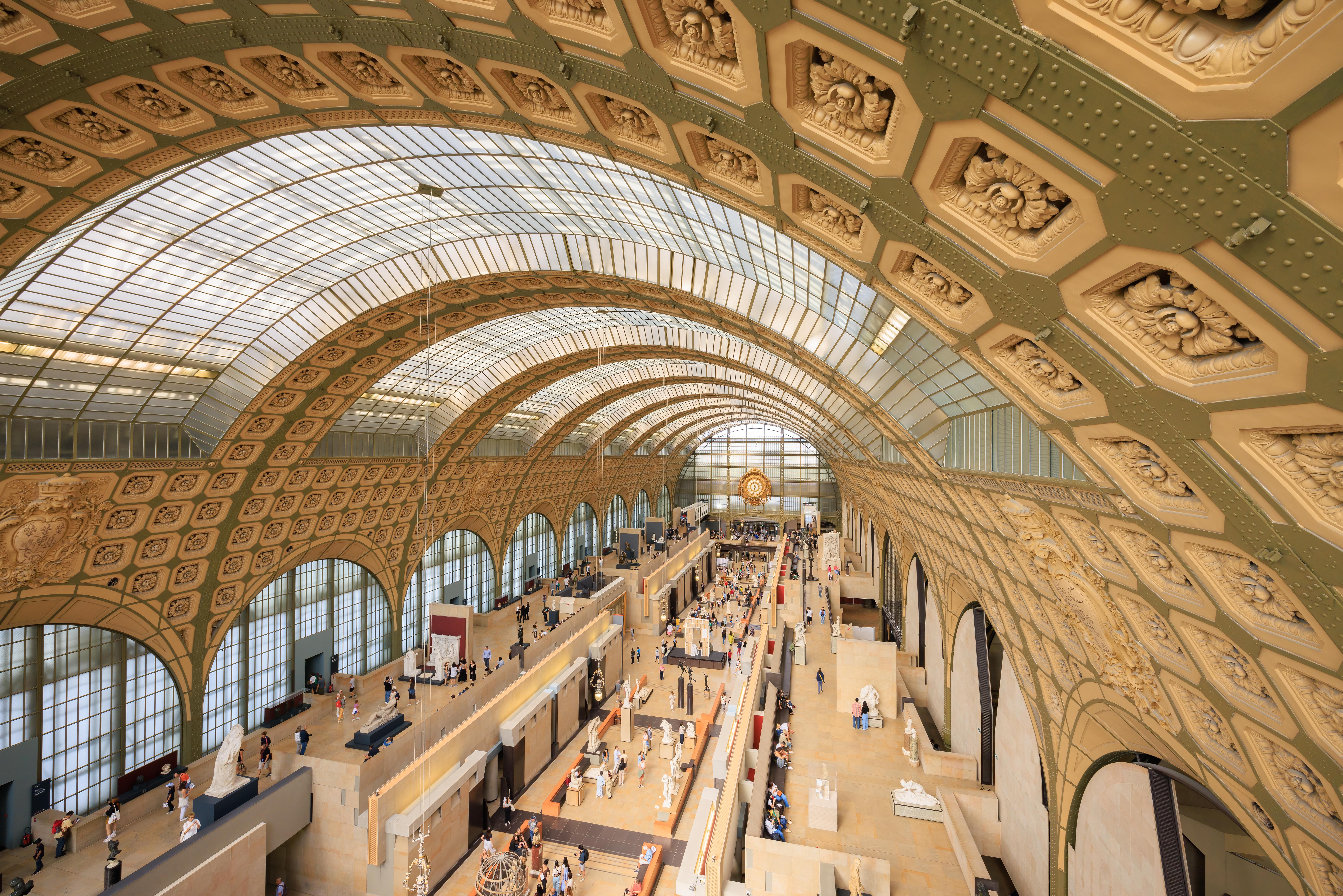
Merci pour les articles sur vos voyages. Vous êtes un vrai globe-trotter. Hier, j’étais au musée d’Orsay pour voir l’exposition sur Gustave Caillebotte.